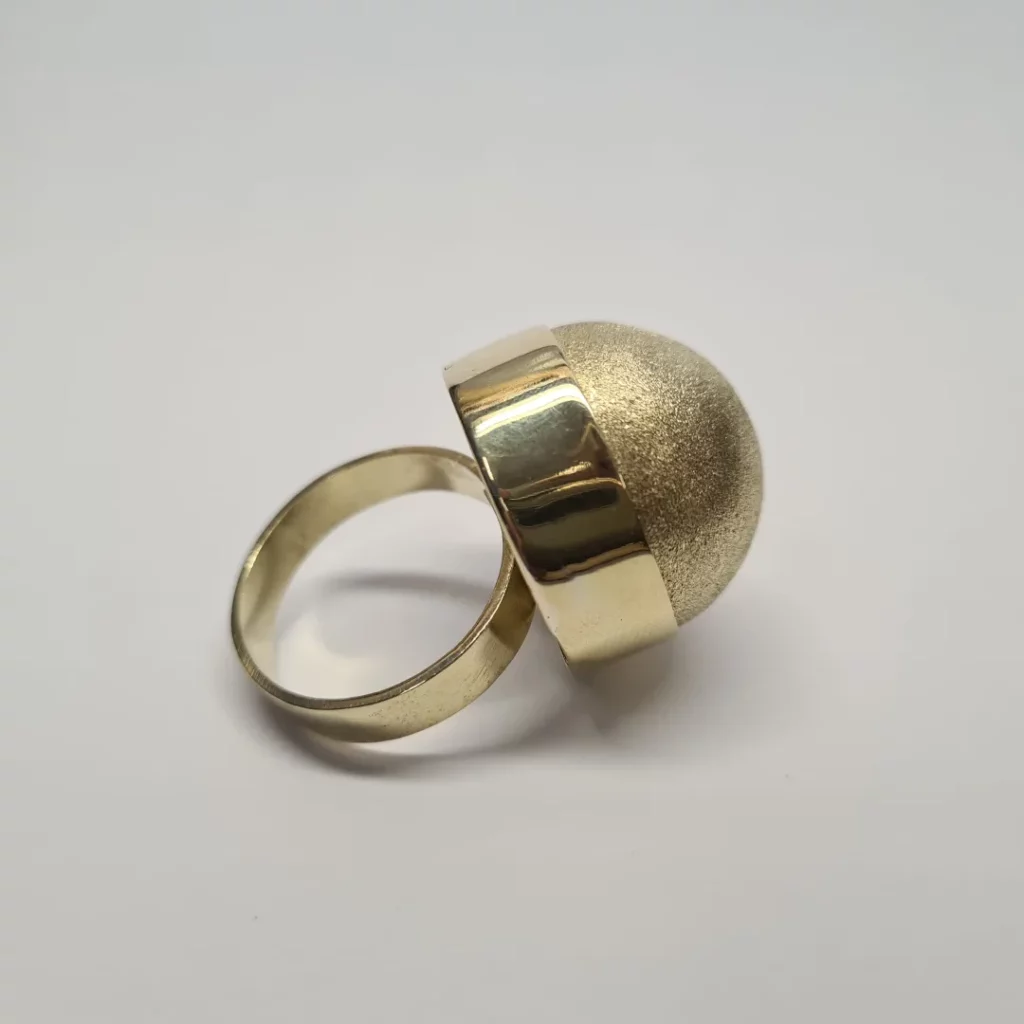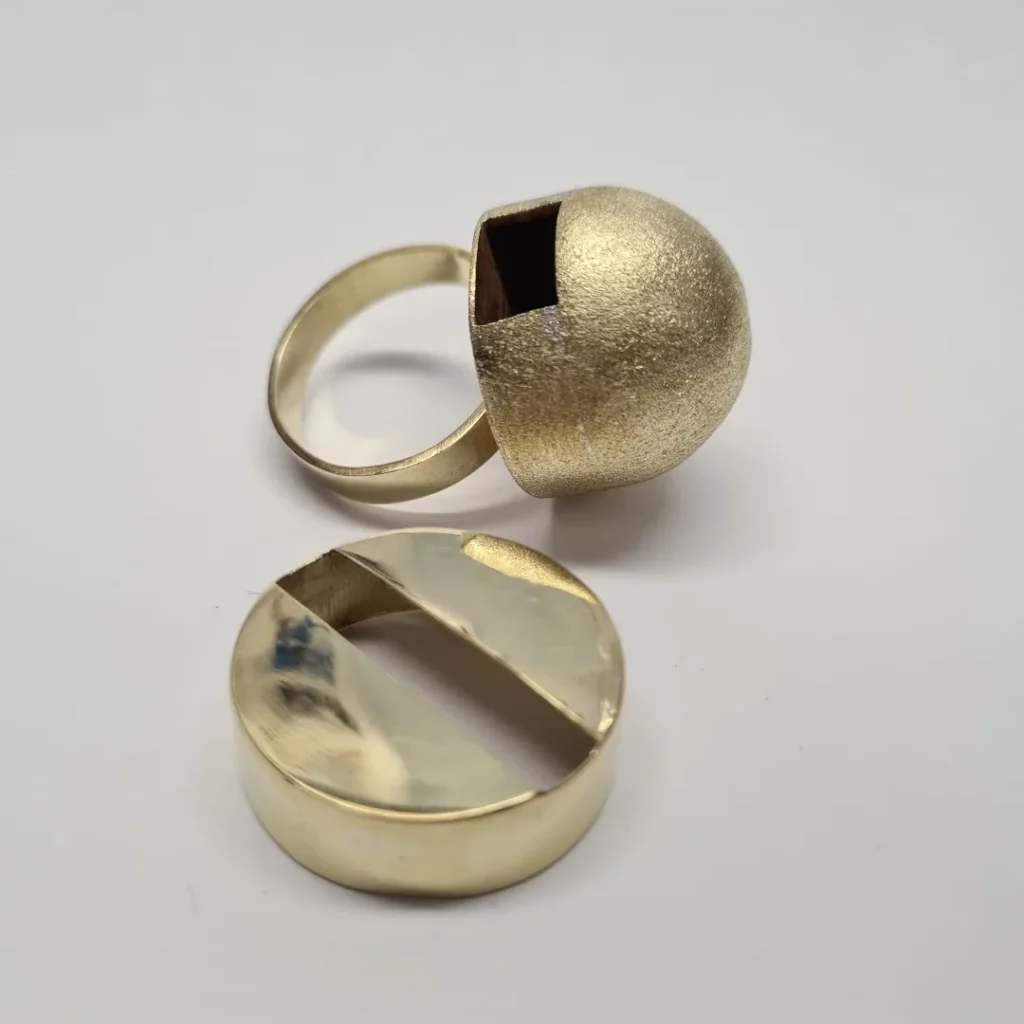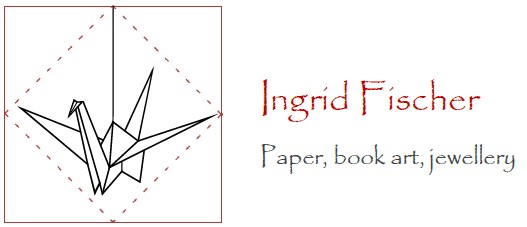Your cart is currently empty!
Portfolio
Below an overview of my artwork. The pieces you see here are not for sale, but are meant to give an idea of my style.
Paper
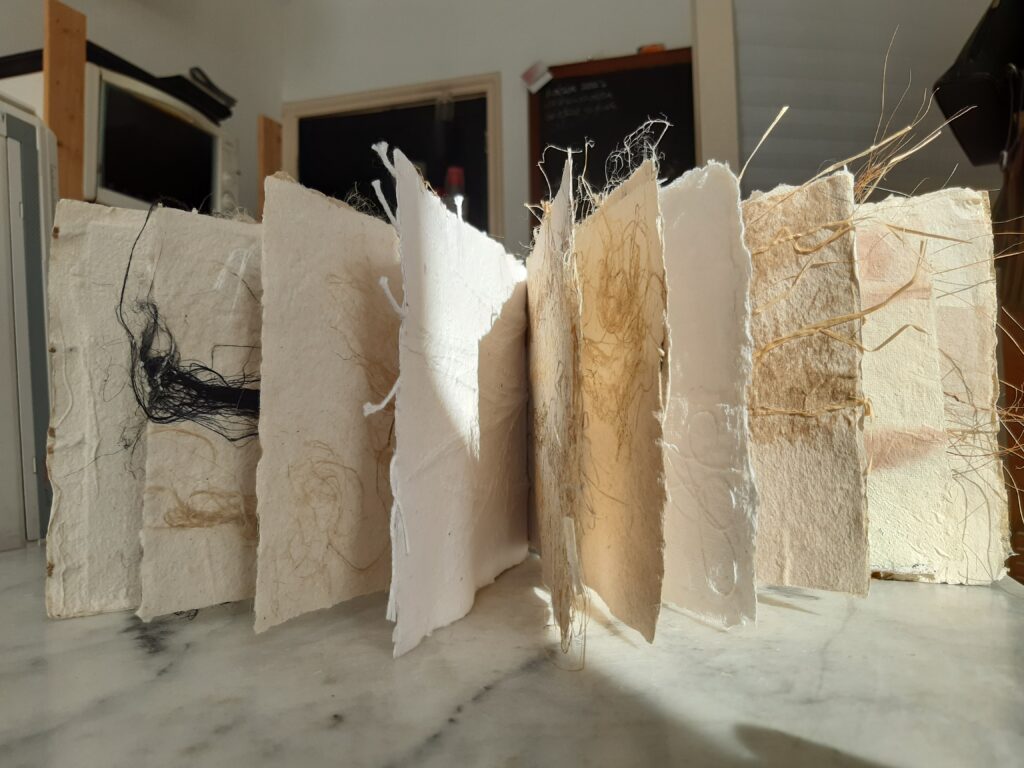

Handmade paper
I make my own paper by recycling different materials. Some of the papers I make, I use for my own art work, and some of it is for sale. I also give workshops in making your own paper. The papers that are for sale can be found in the Products section on this website. Or you can sign up for a papermaking workshop to learn how to make your own paper in the Workshops section!
Patterned paper from recycled material
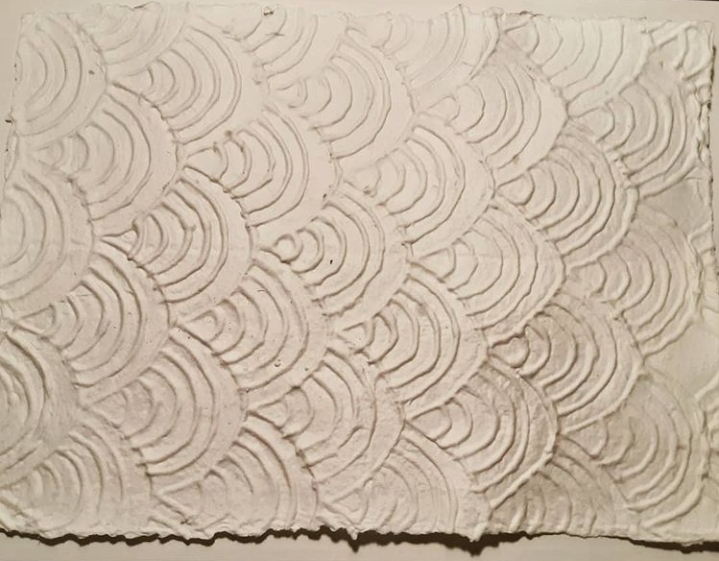
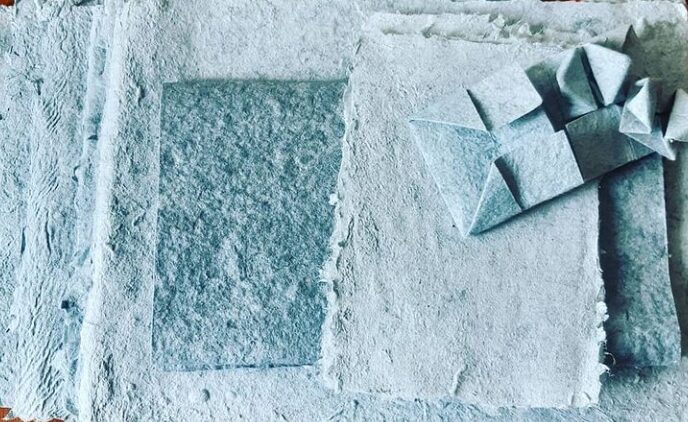
Paper made from recycled material: old jeans.
Art books
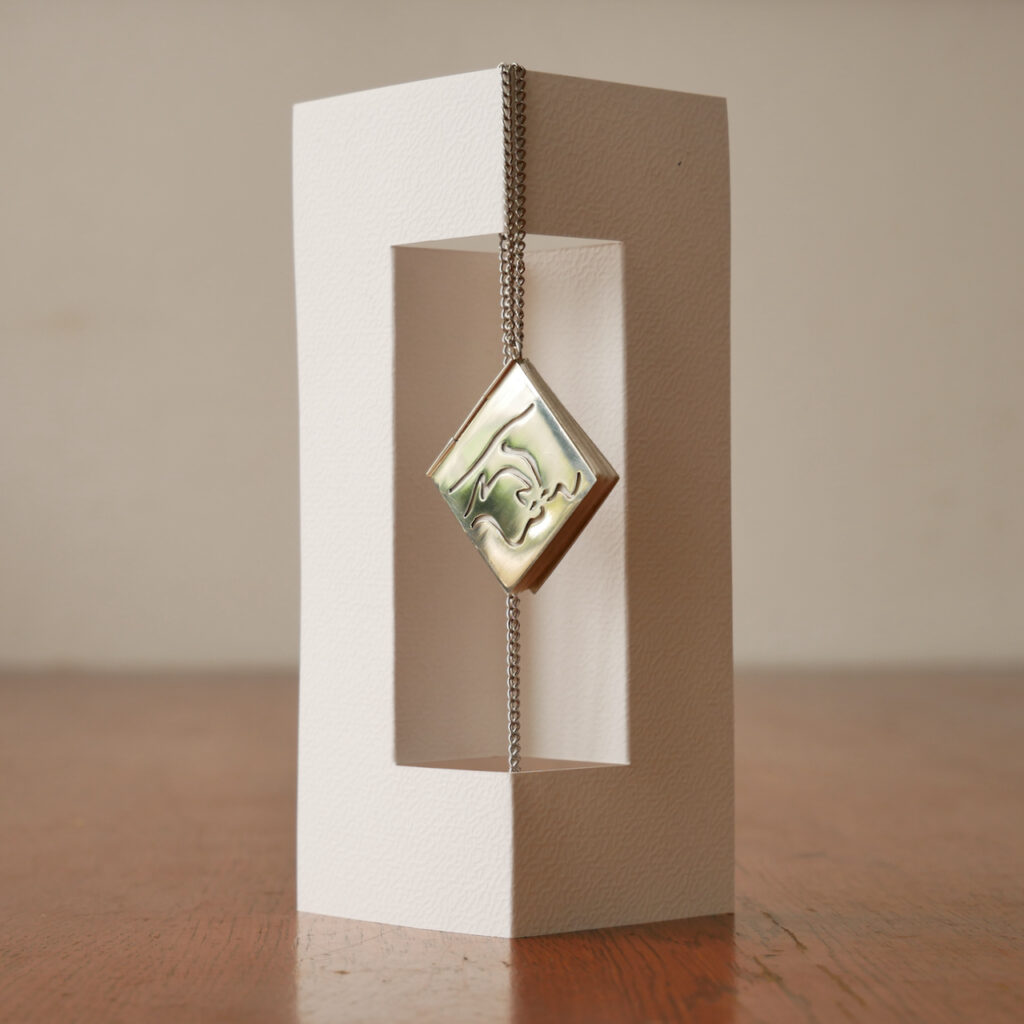

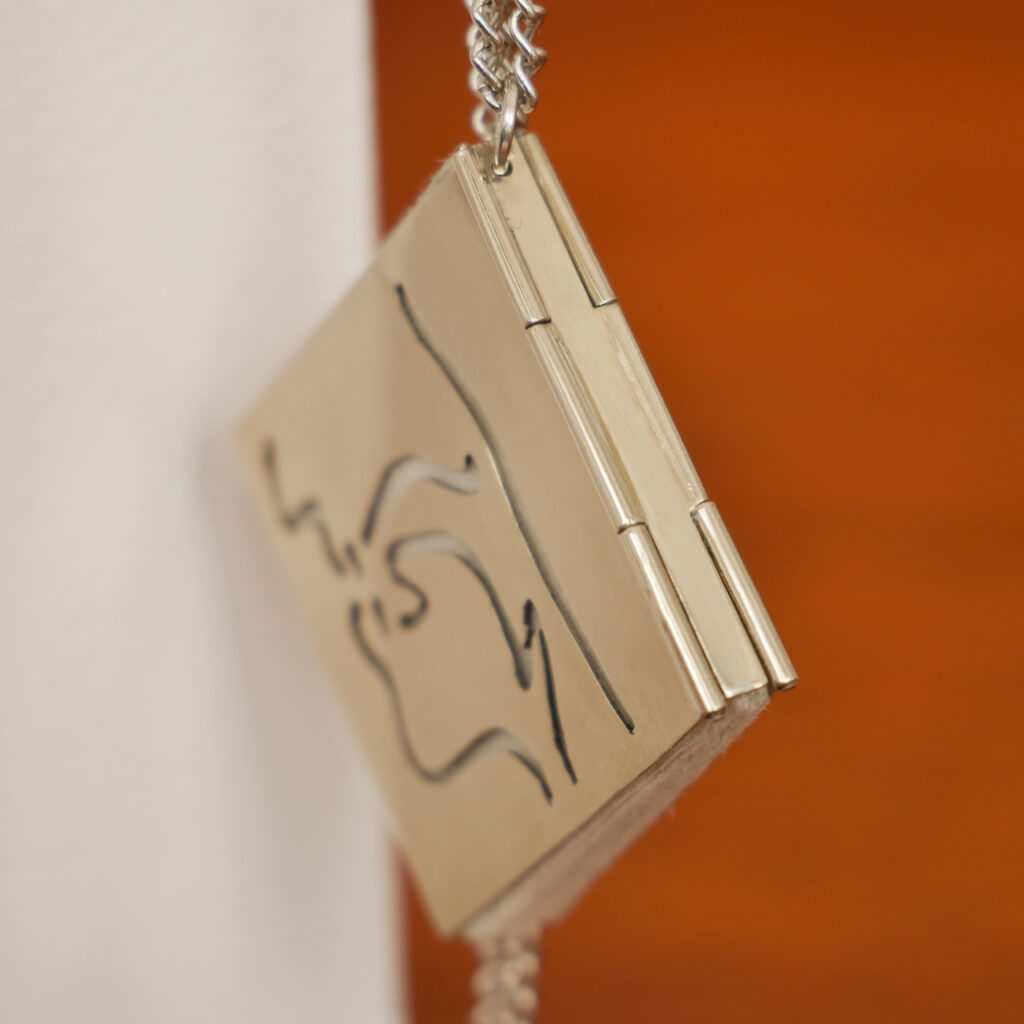
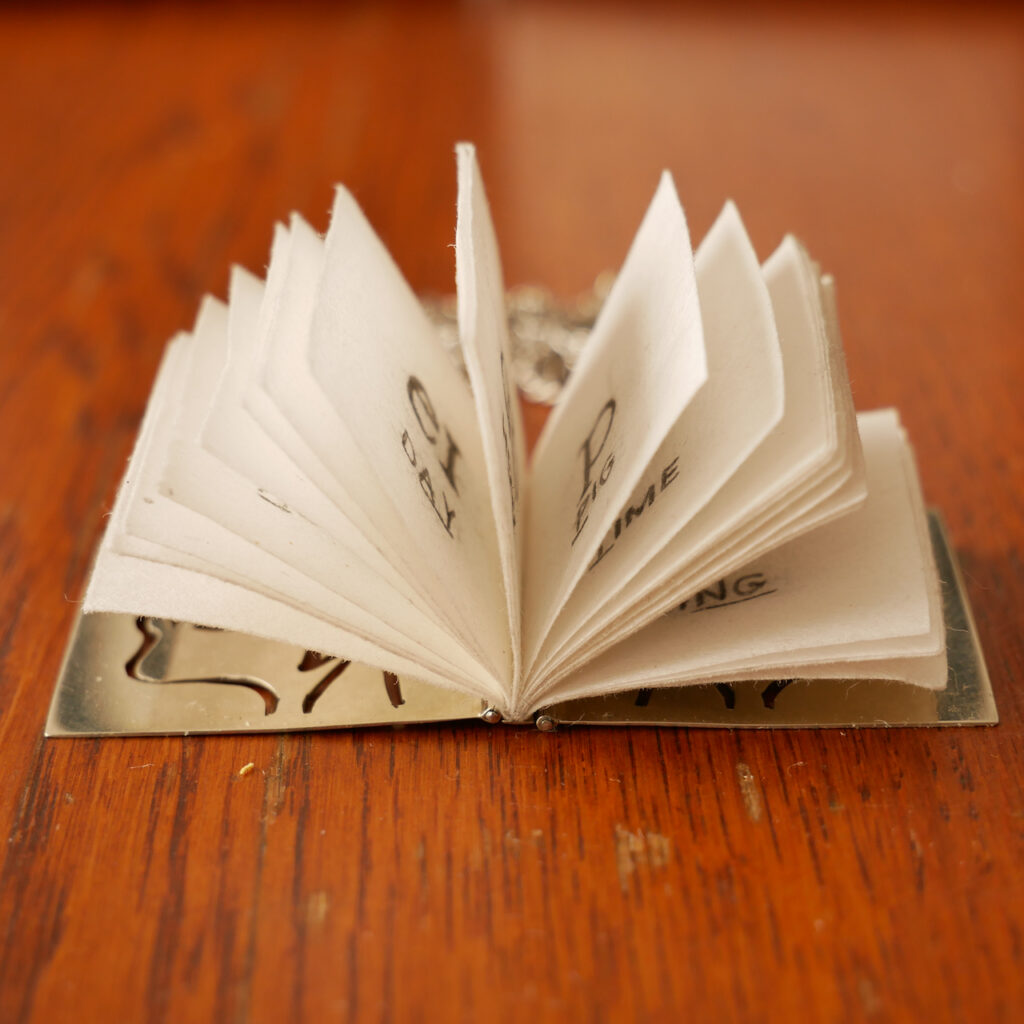
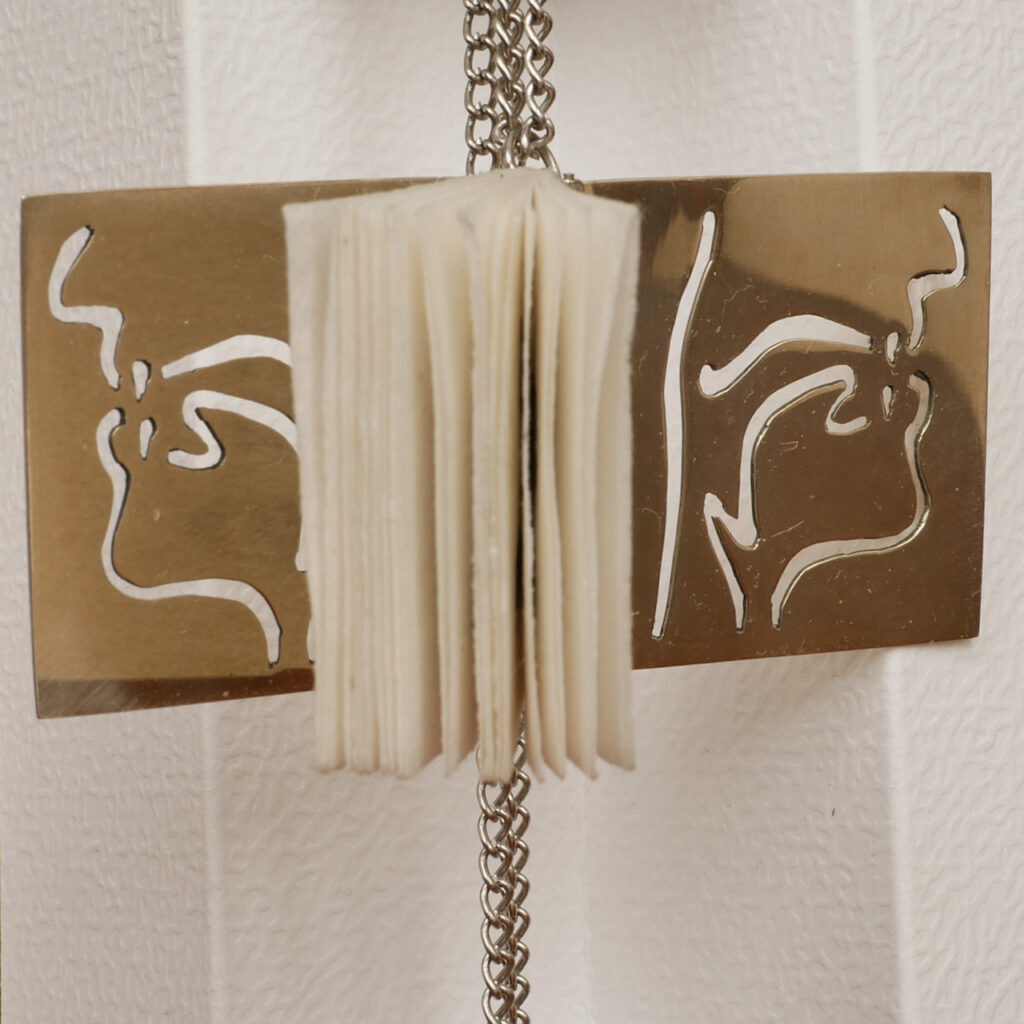

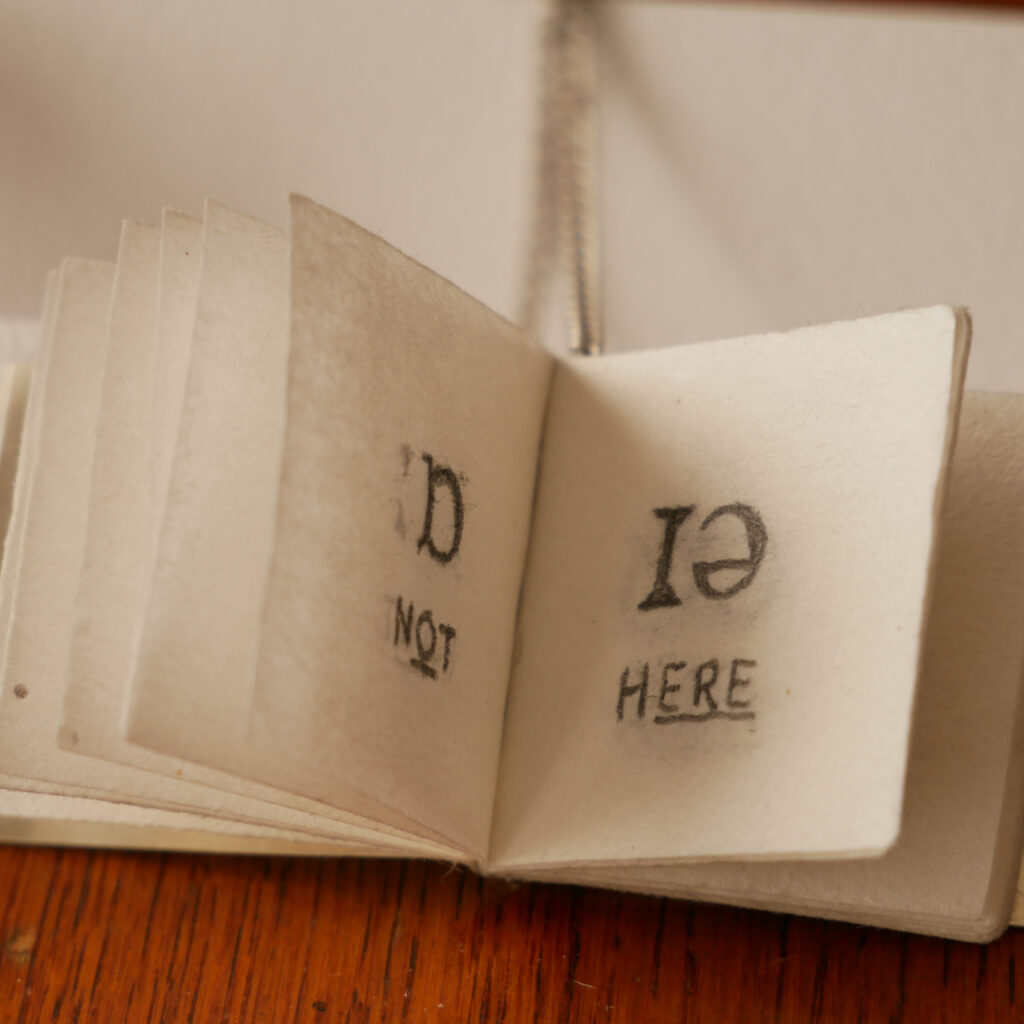
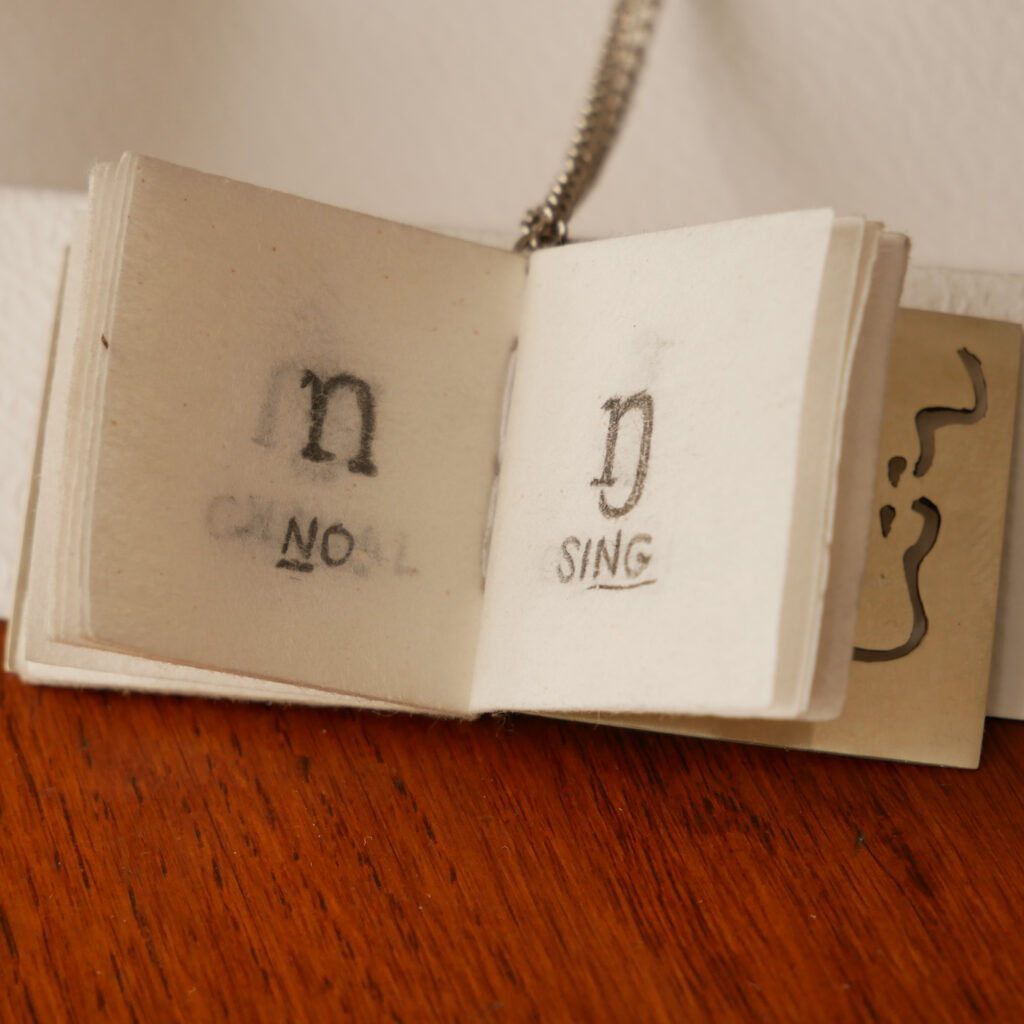
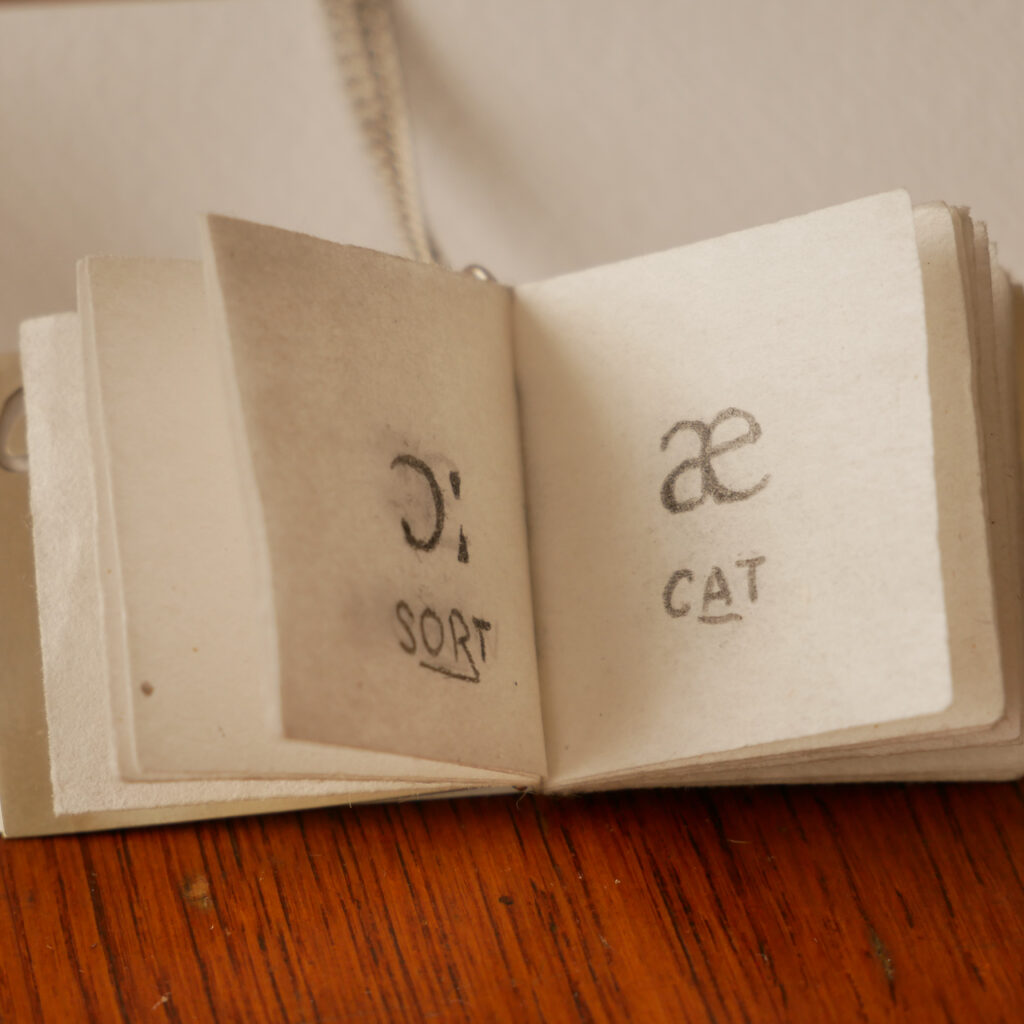
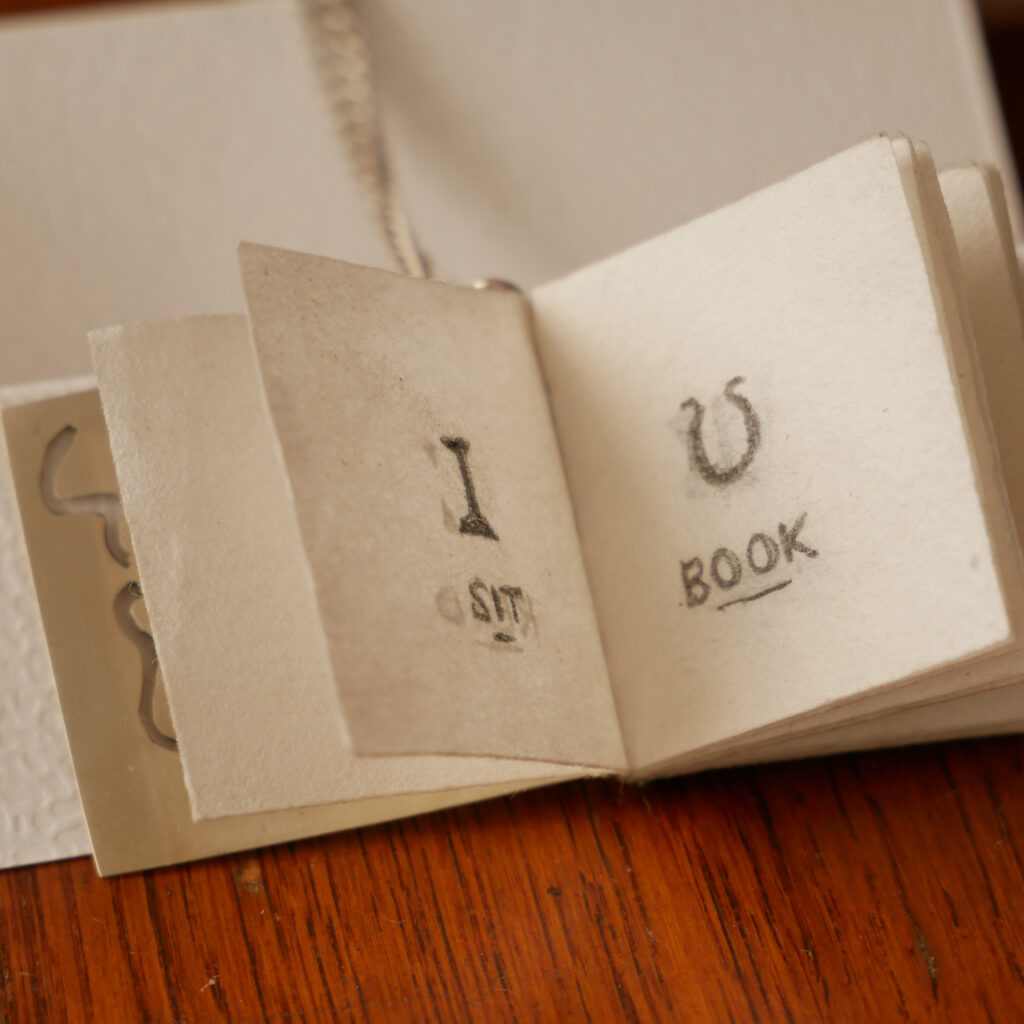
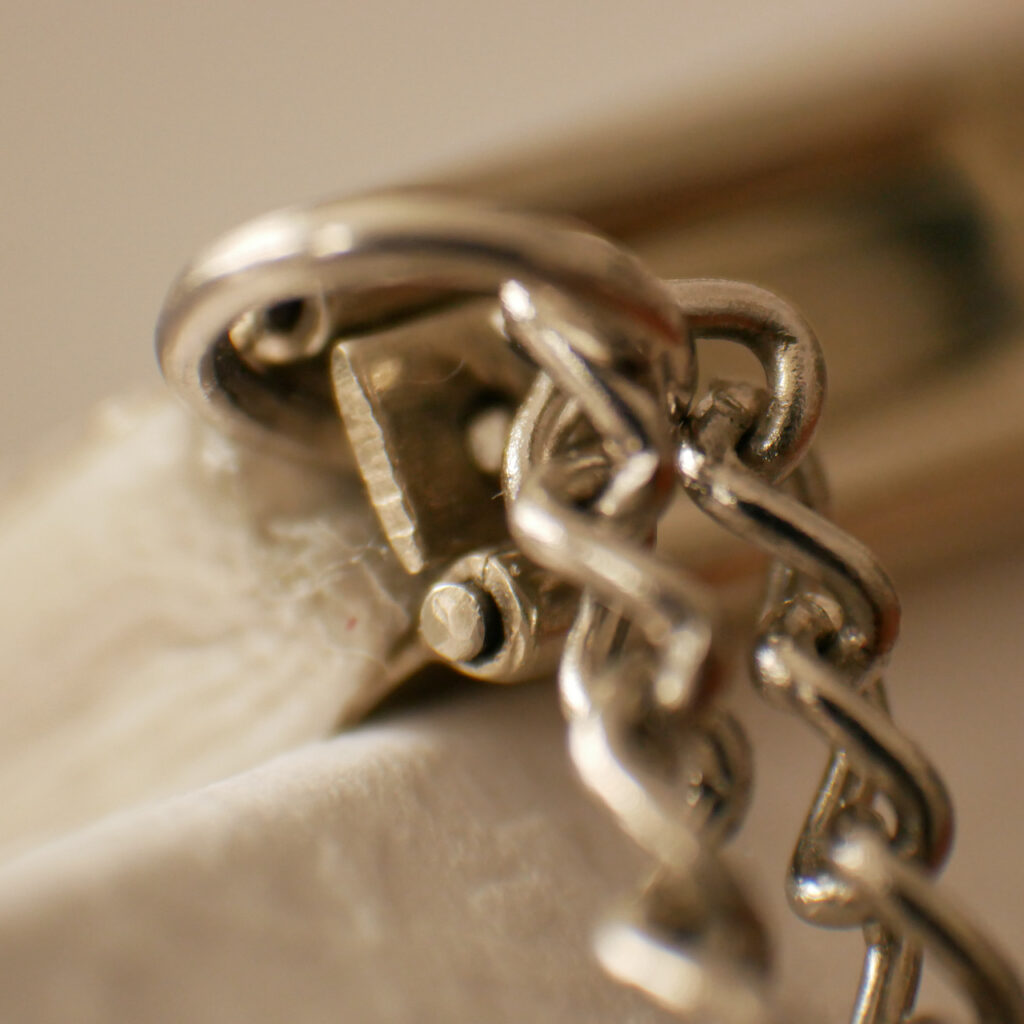

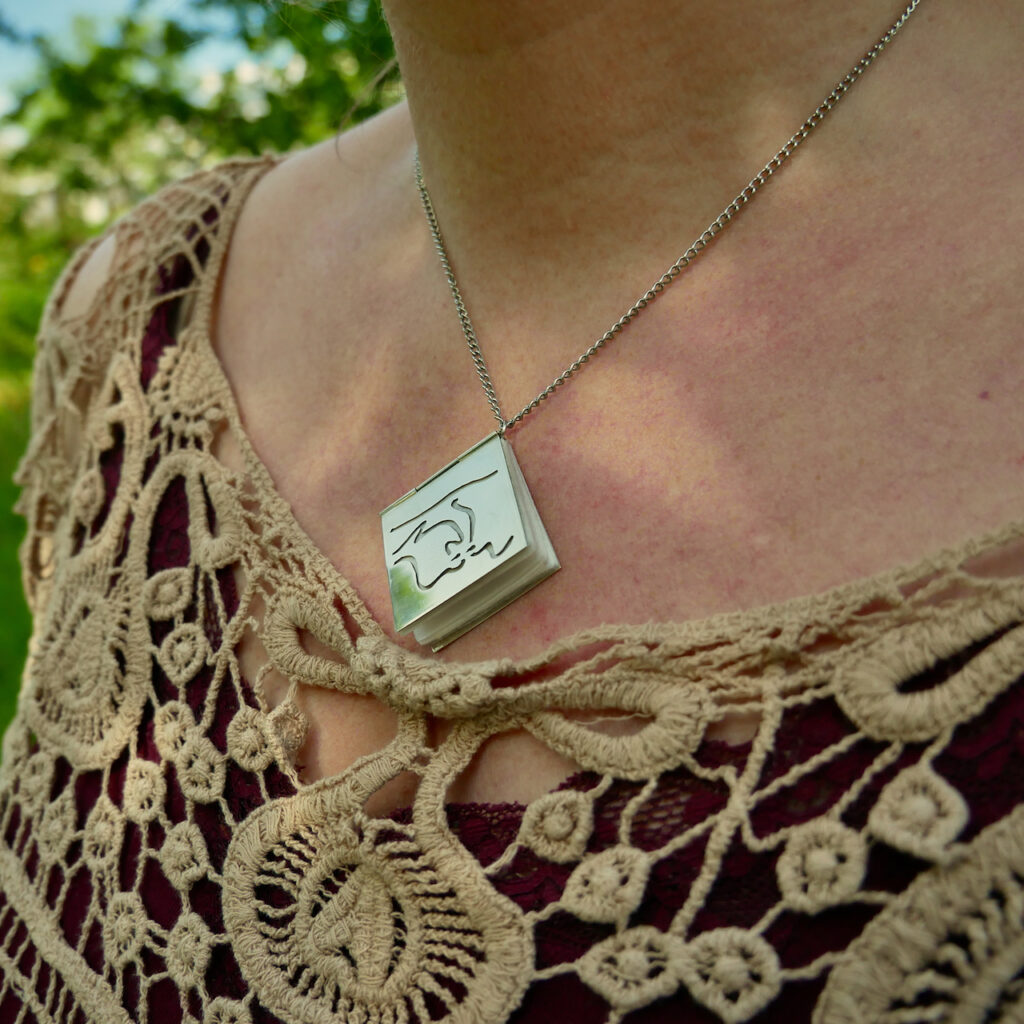
Speech.
This book contains the 44 sounds of speech needed in English pronunciation. The covers depict an abstraction of the articulators needed to produce the sounds of speech. The book is made from metal (alpacca), and can be worn as a necklace.
‘Nursery’
This plant ‘nursery’ book can be used to hatch seedlings. It is particulalry useful for garden cress. Materials are watercolor paper, degradable seed pots and wooden skewers








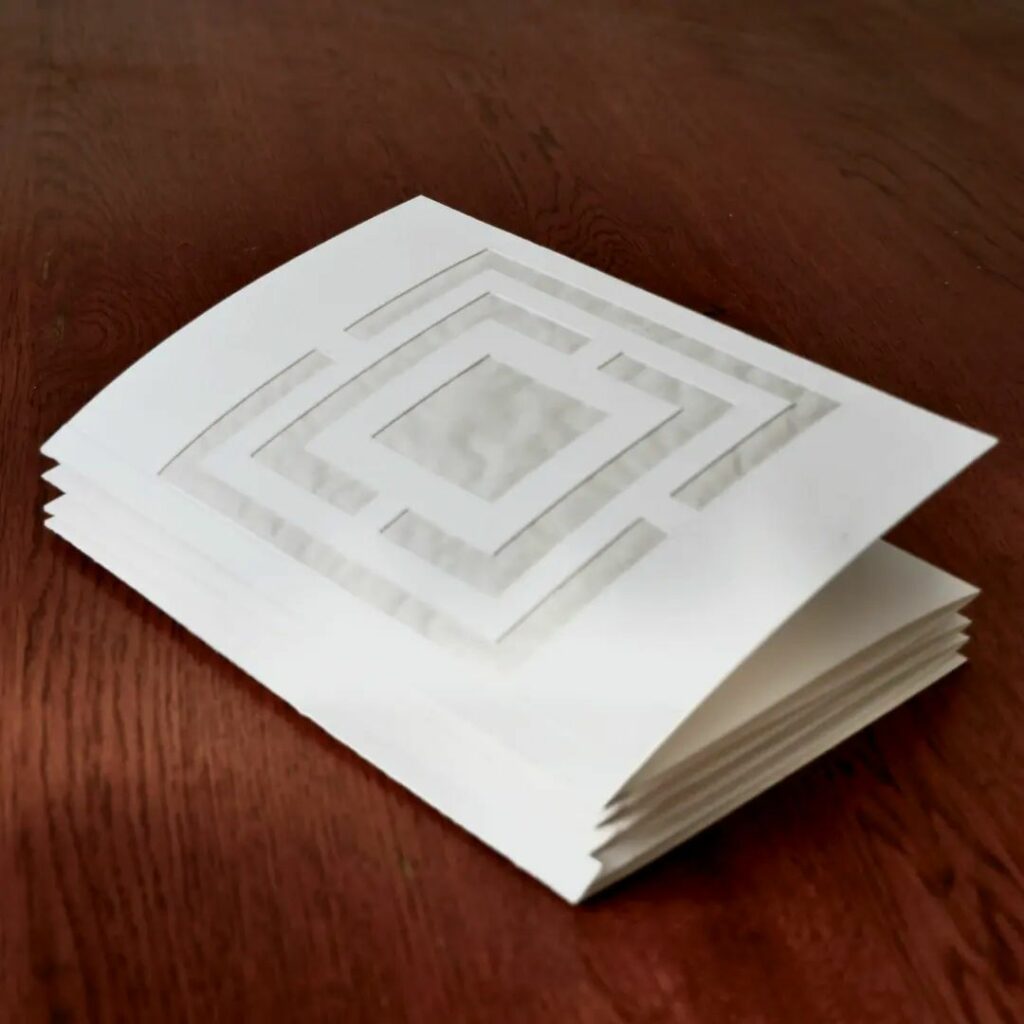

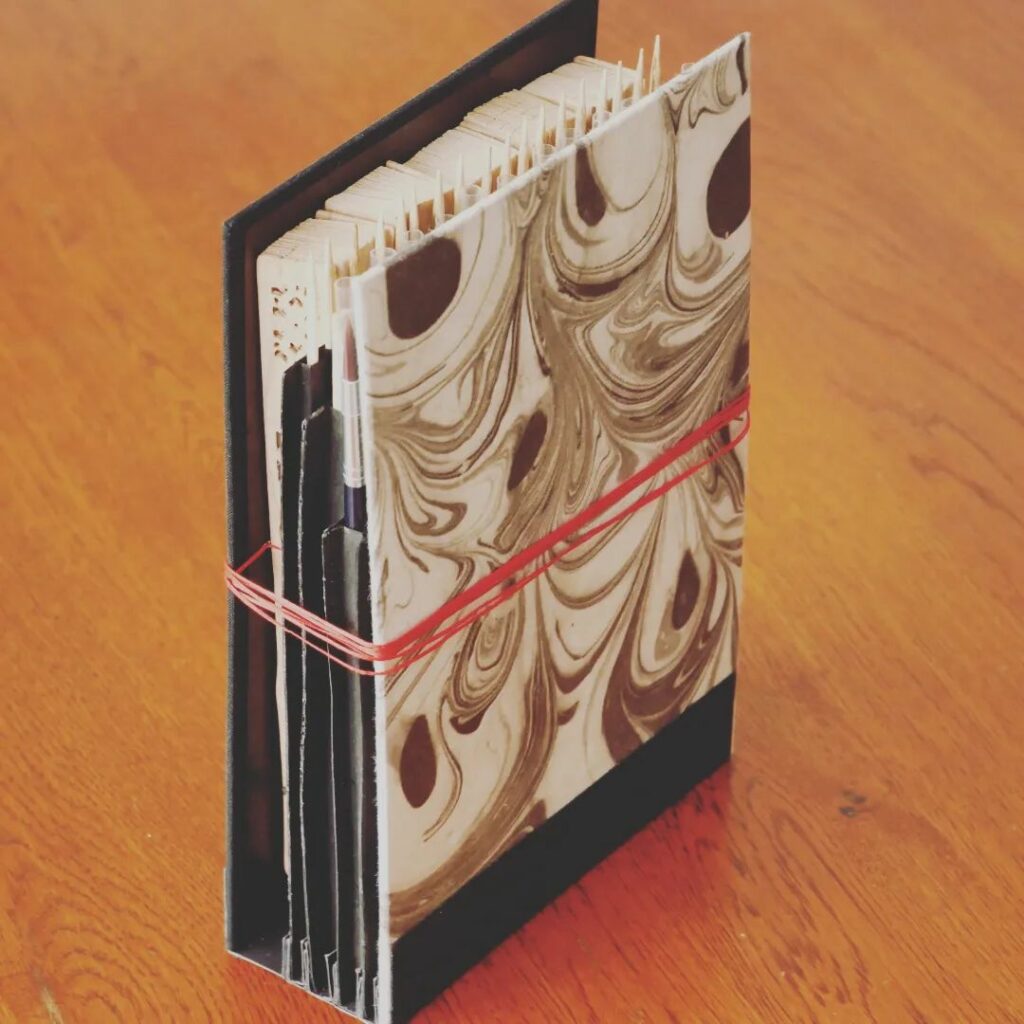
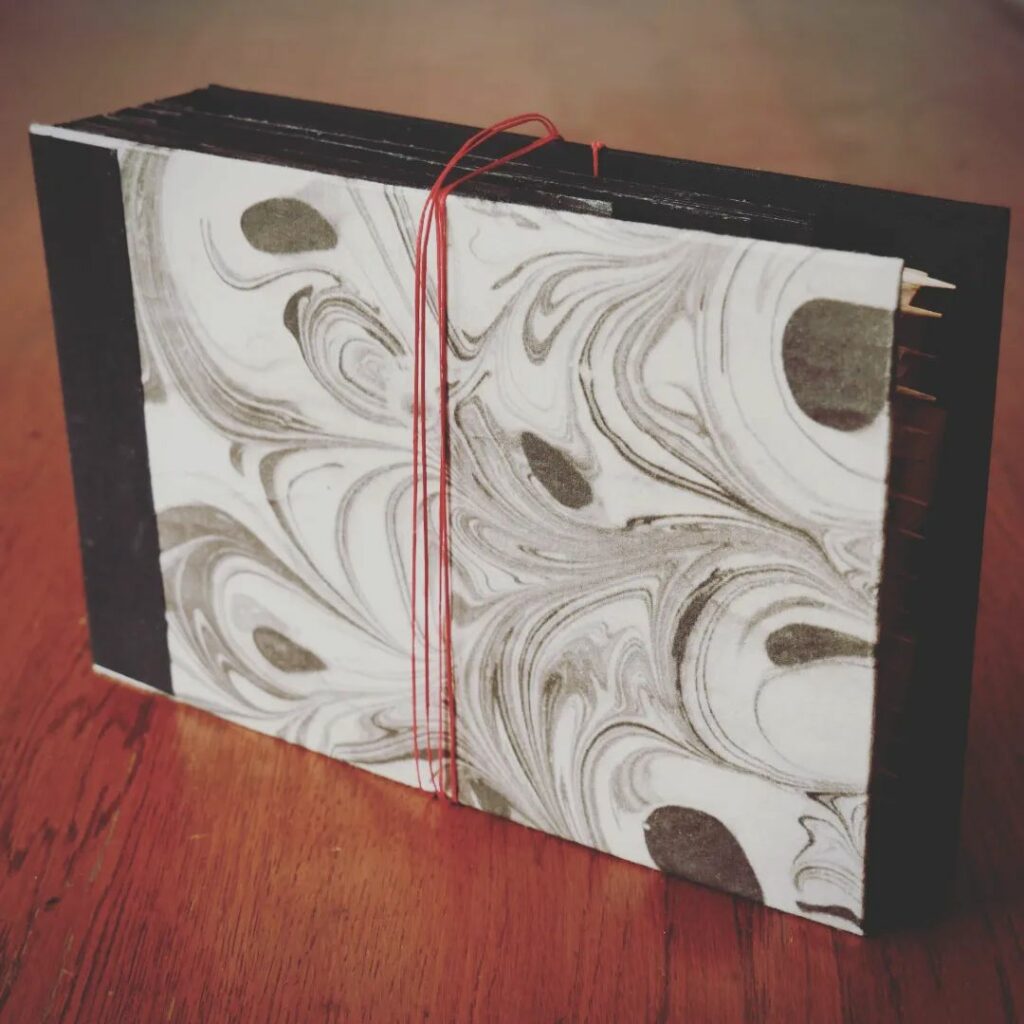


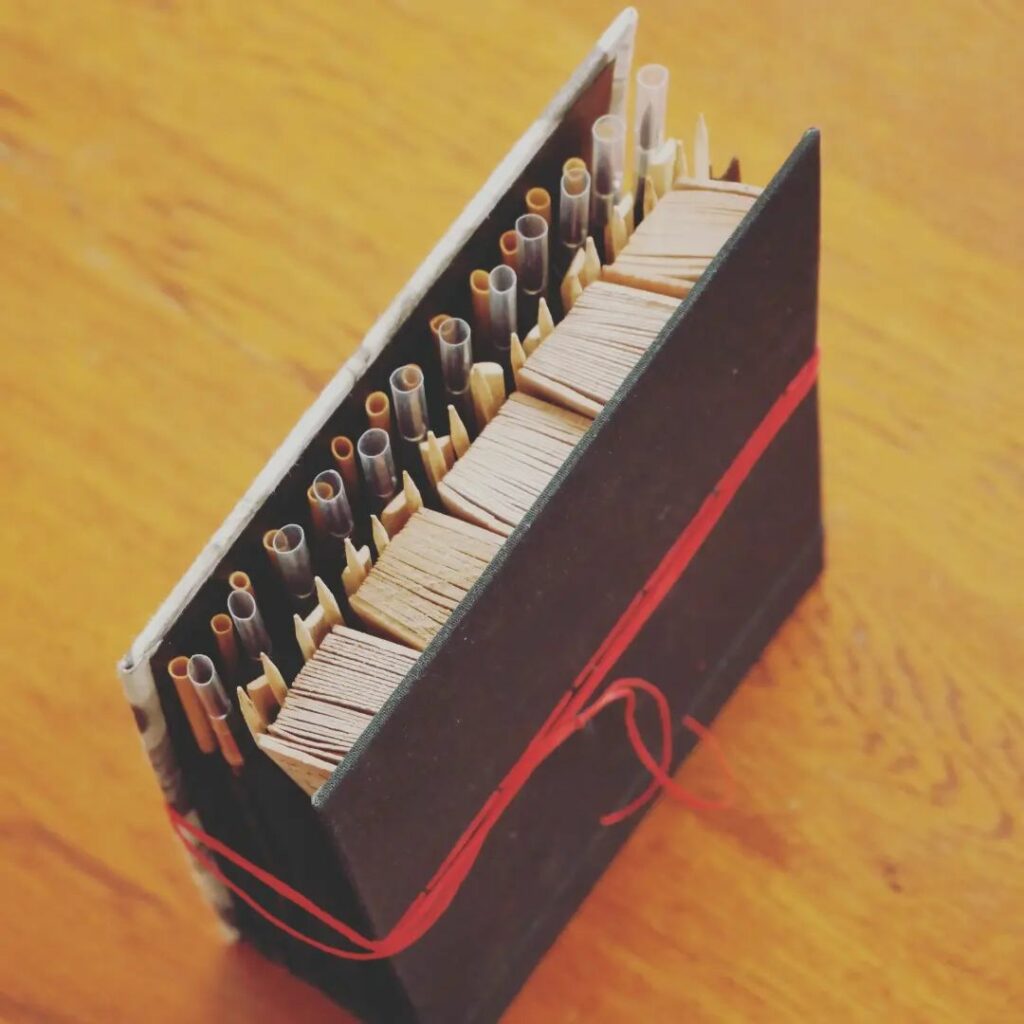
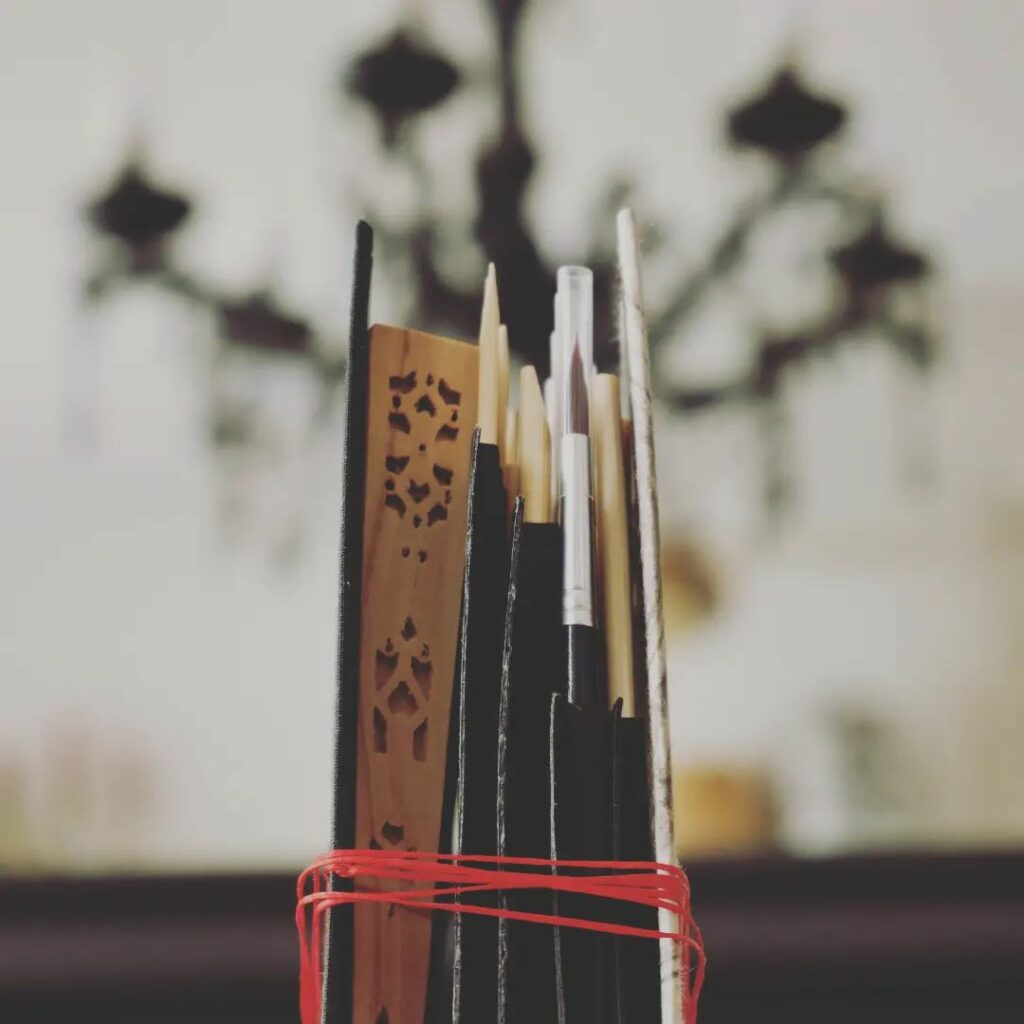
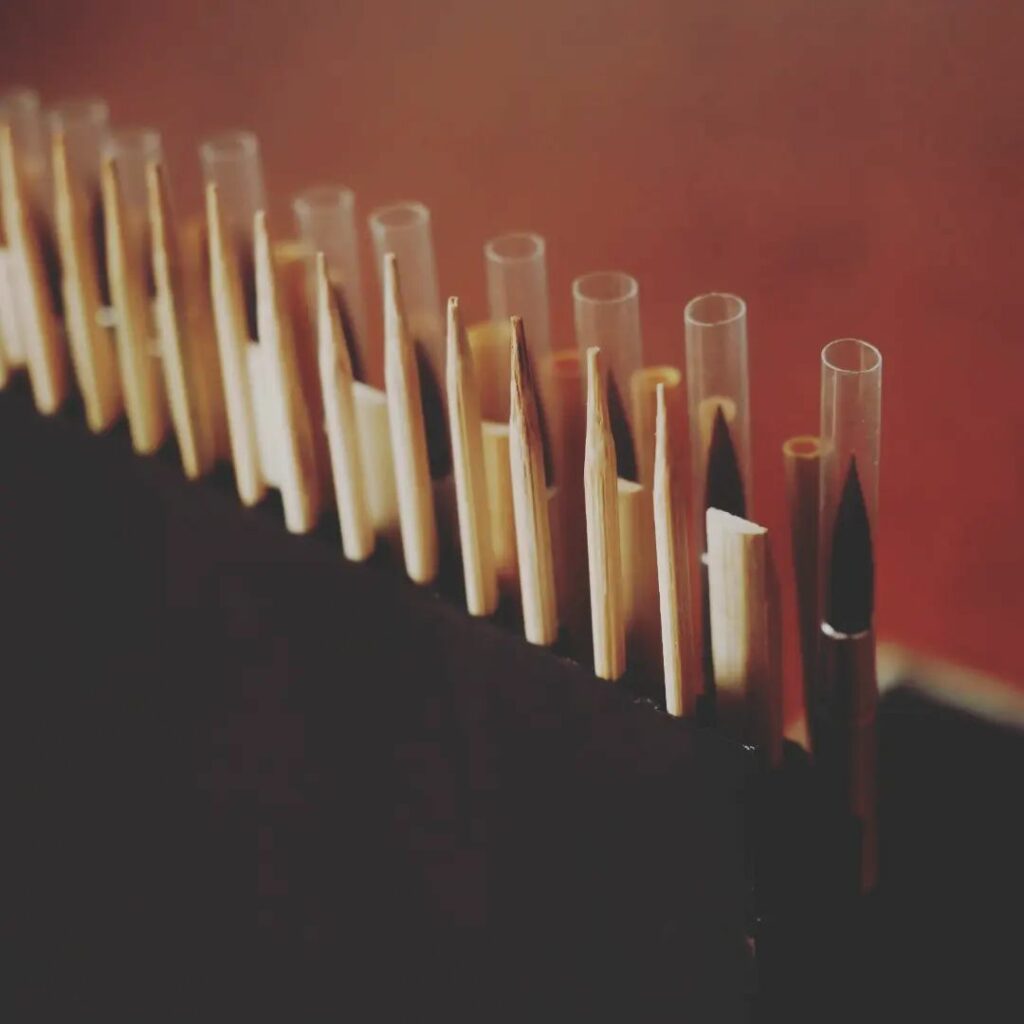
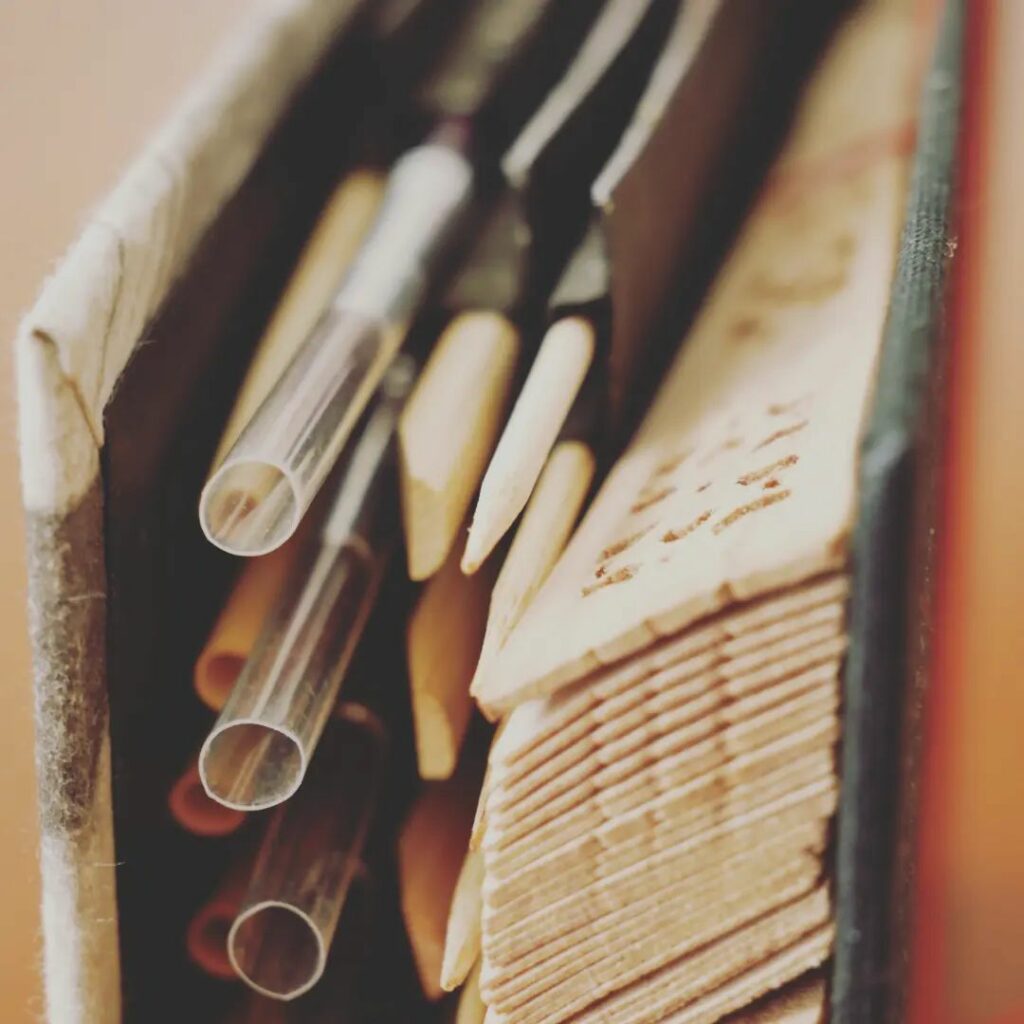

Art Supplies
This book holds some of the supplies you would need for giving a suminagashi workshop. This suminagashi art supplies book contains several useful tools for manipulating the ink: straws, wooden skewers, chopsticks, brushes, and fans. The cover of the book is an actual example of suminagashi.
‘Constellation’
This book with a starry sky represents the constellation Gemini. The constellation actually lights up when the battery is inserted. This book is can be ordered for all 12 birth signs.
The covers look like a starry sky in which my constellation sign, Gemini, actually lights up. I used led lights which I soldered together with copper wire to create the Gemini constellation shape, used a glue gun to diffuse the lights, bound the pages together using conductive yarn, so the power source would be connected from the back to the front cover, and used a button cell battery to make everything come to light.
I put the book together using the slip knot binding (or single sheet book binding) technique.
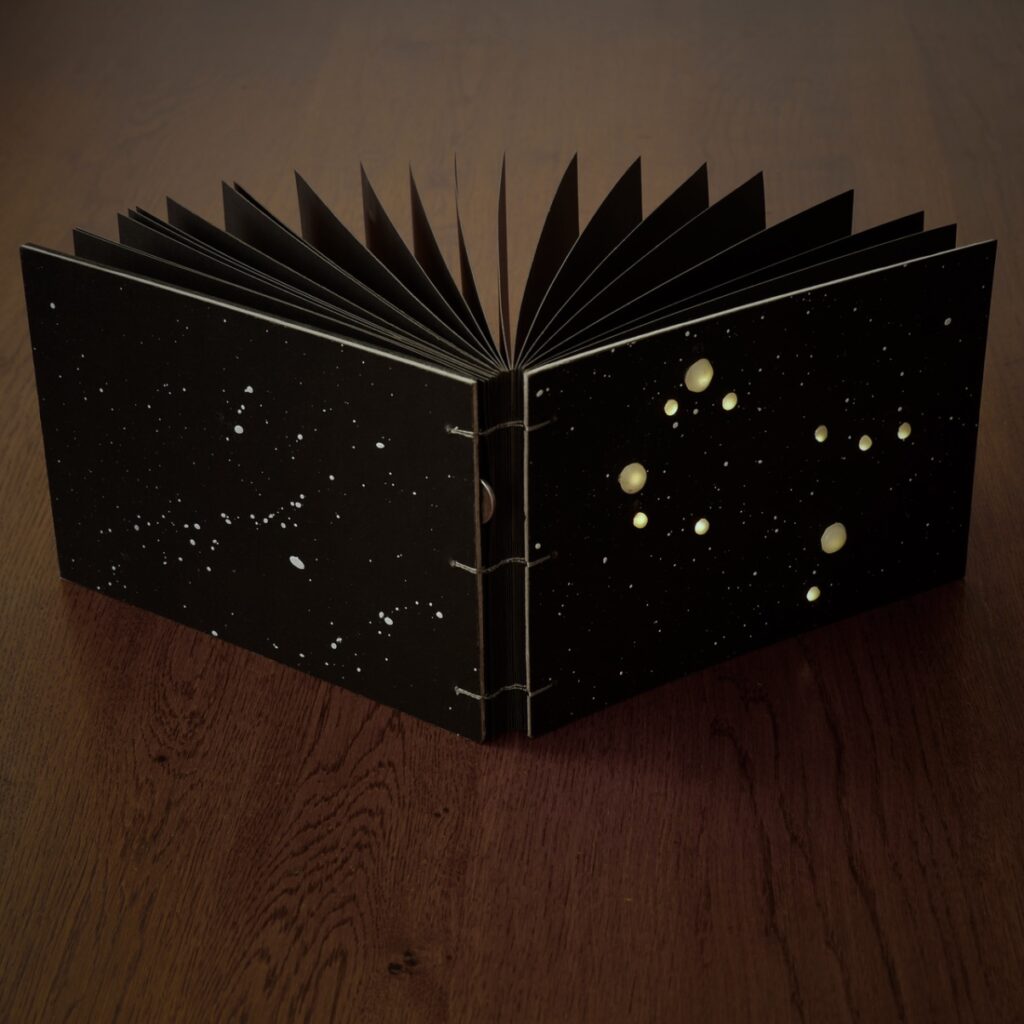
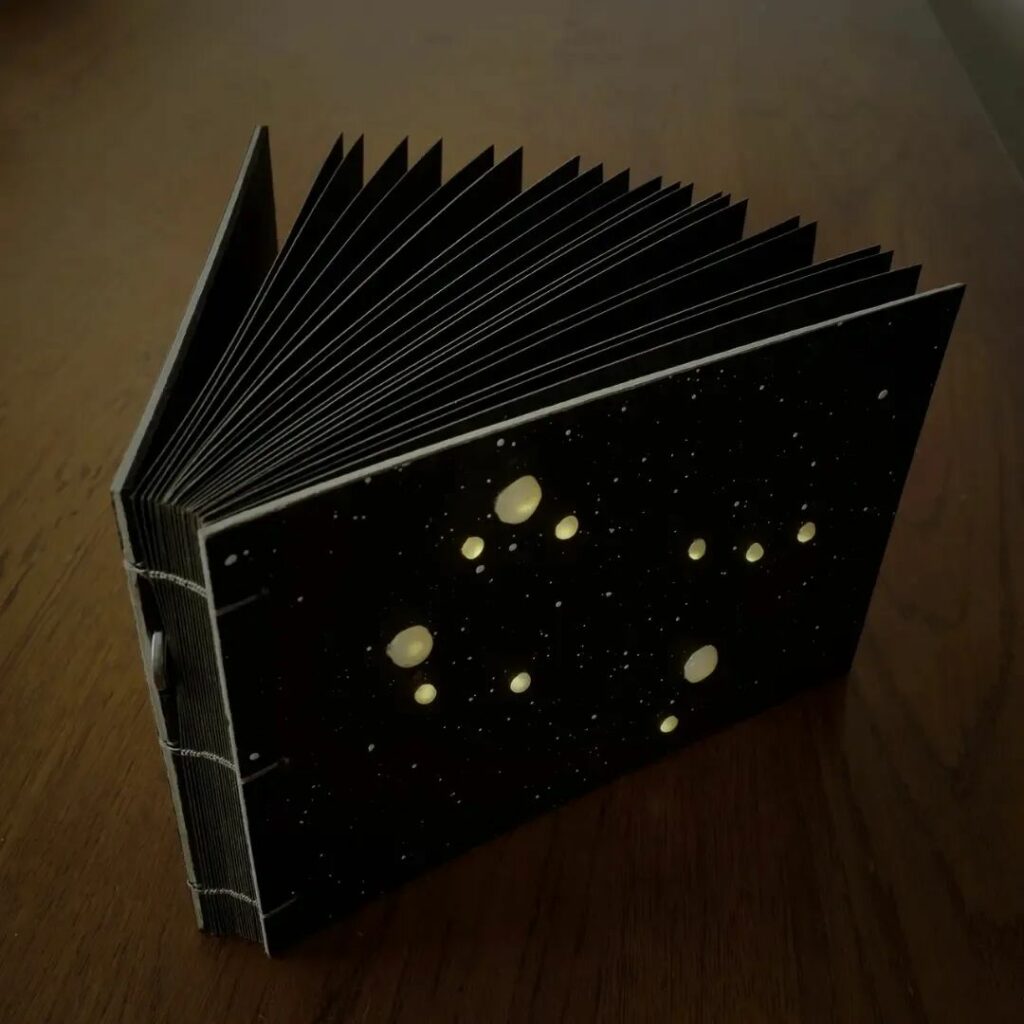

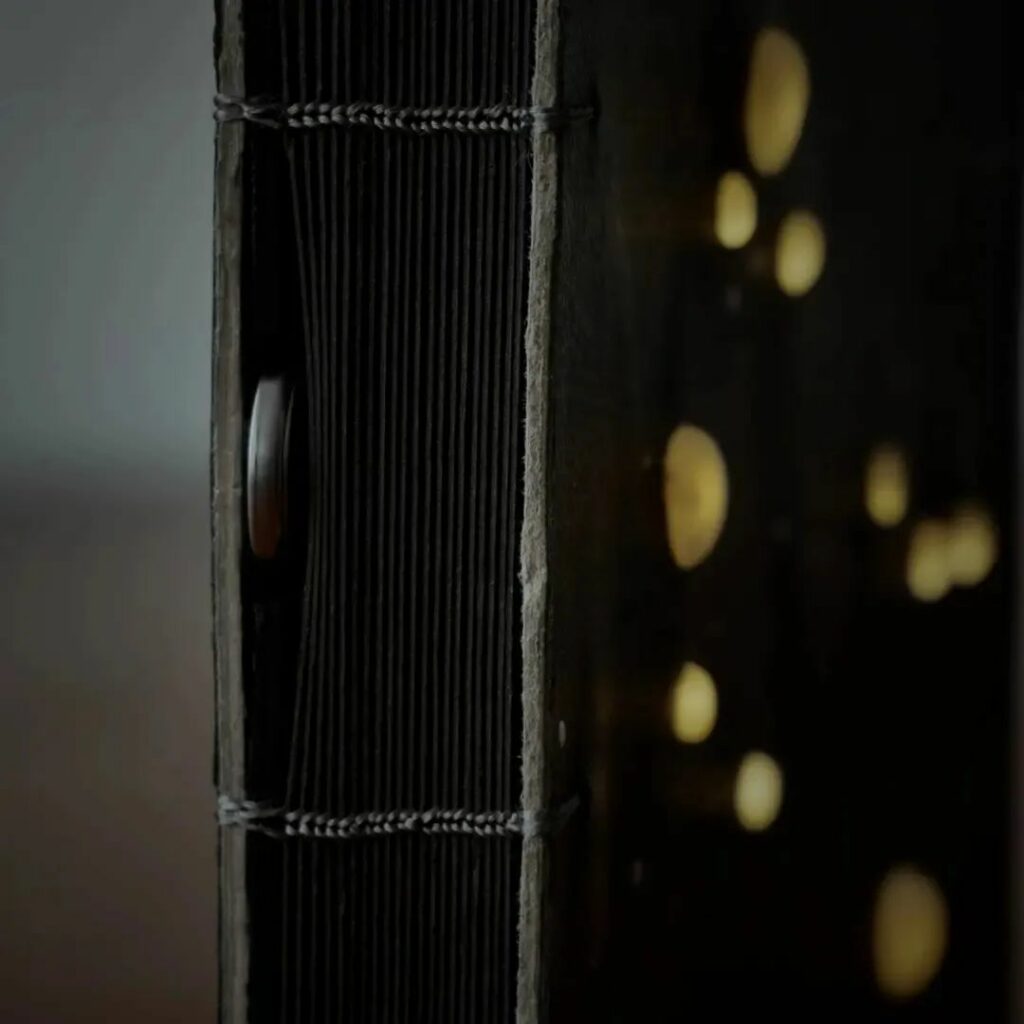



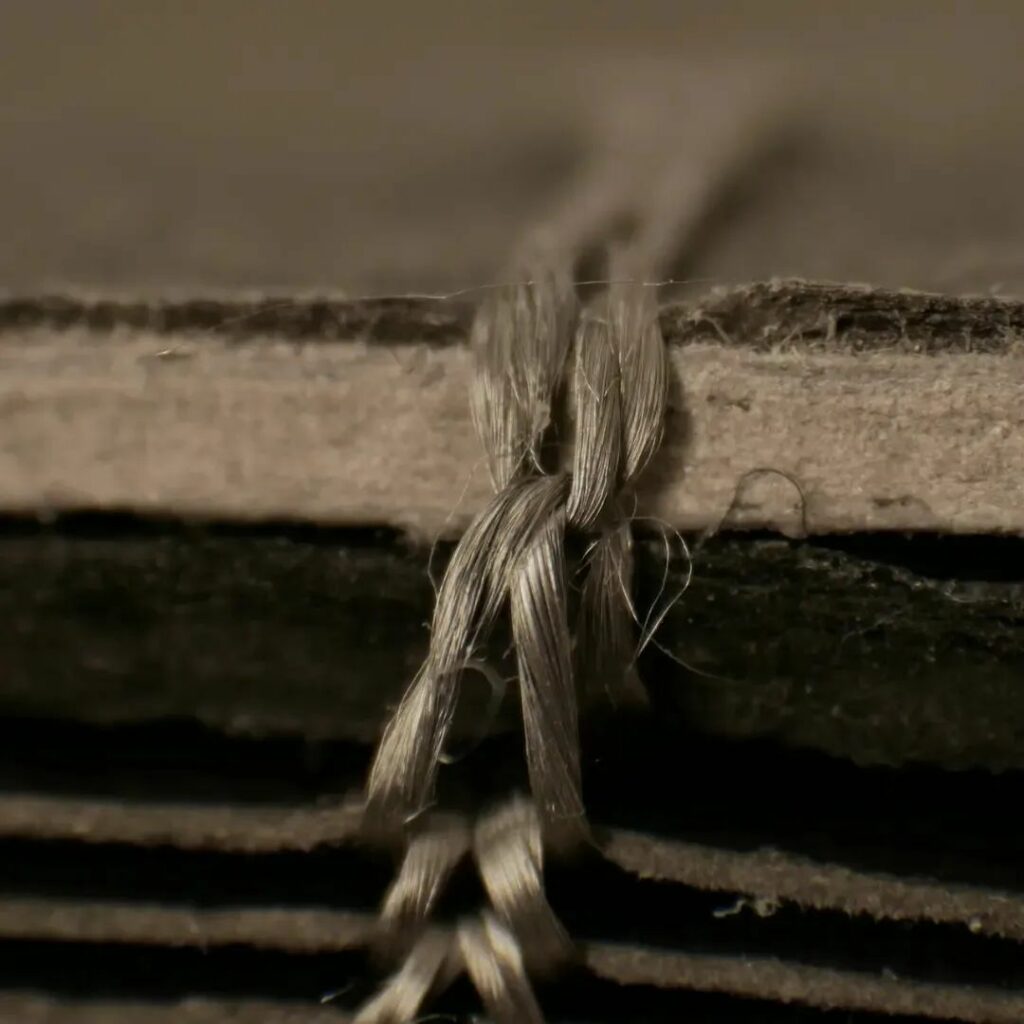
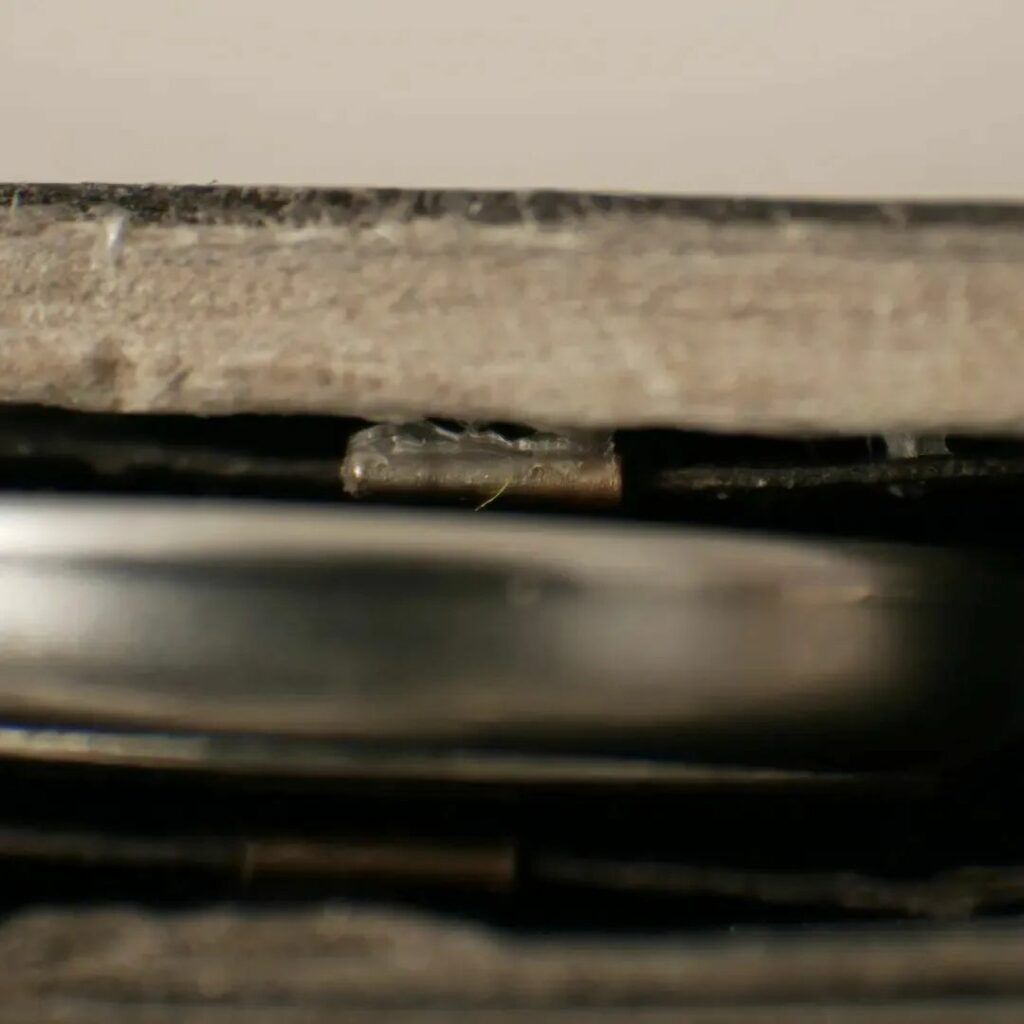

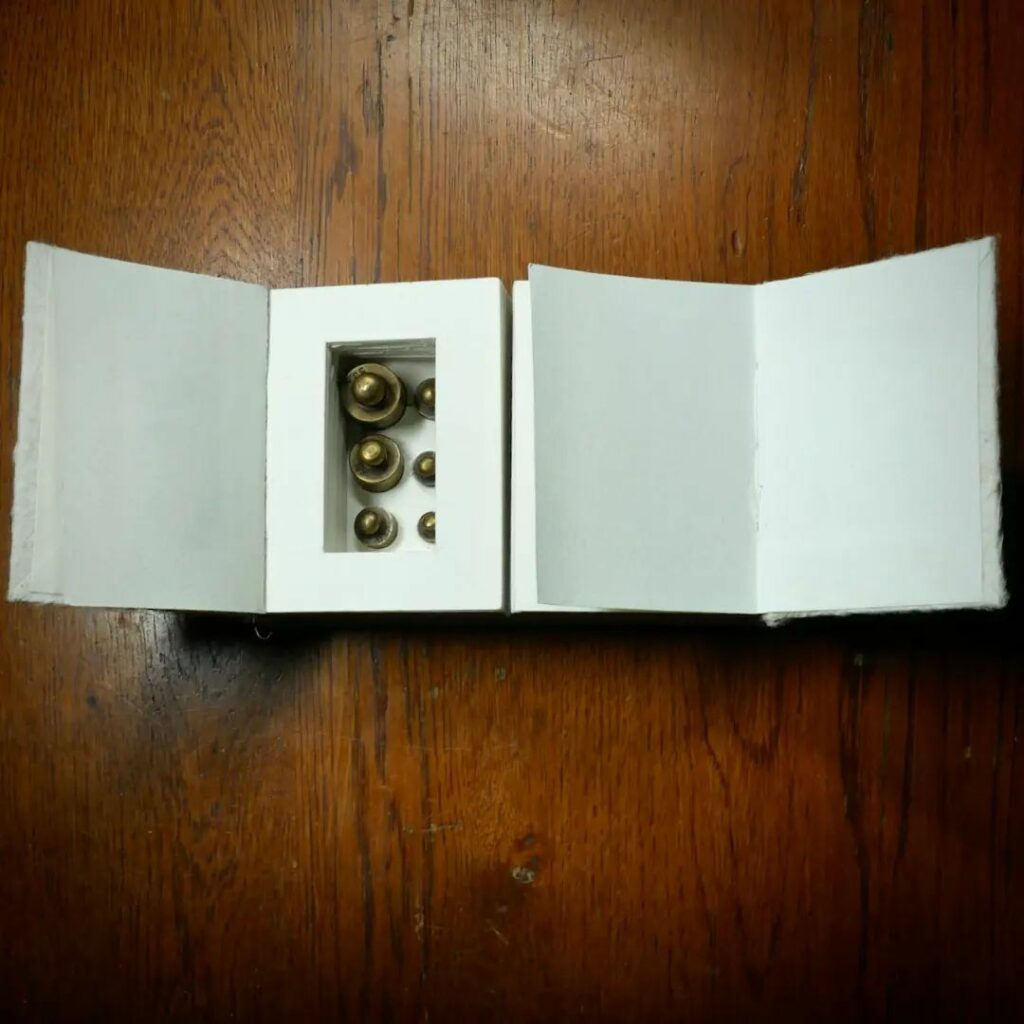

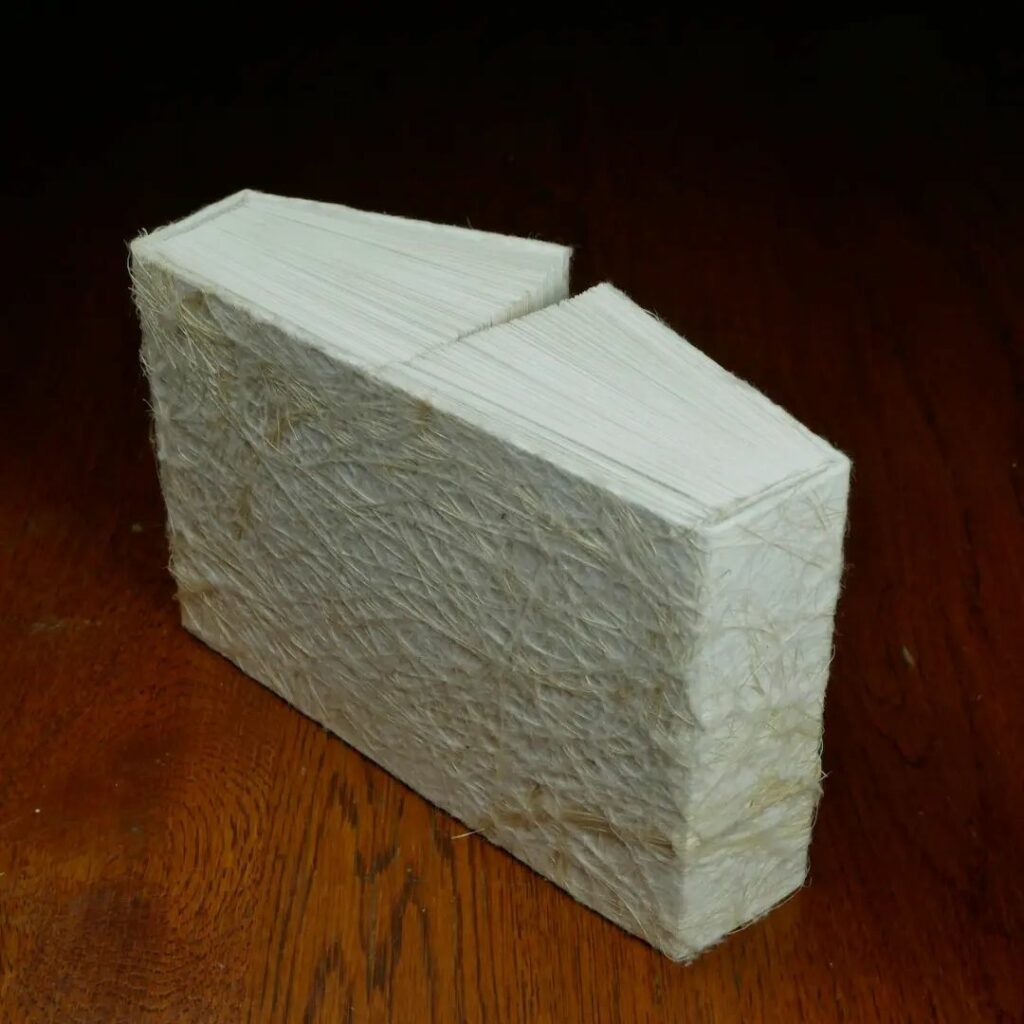
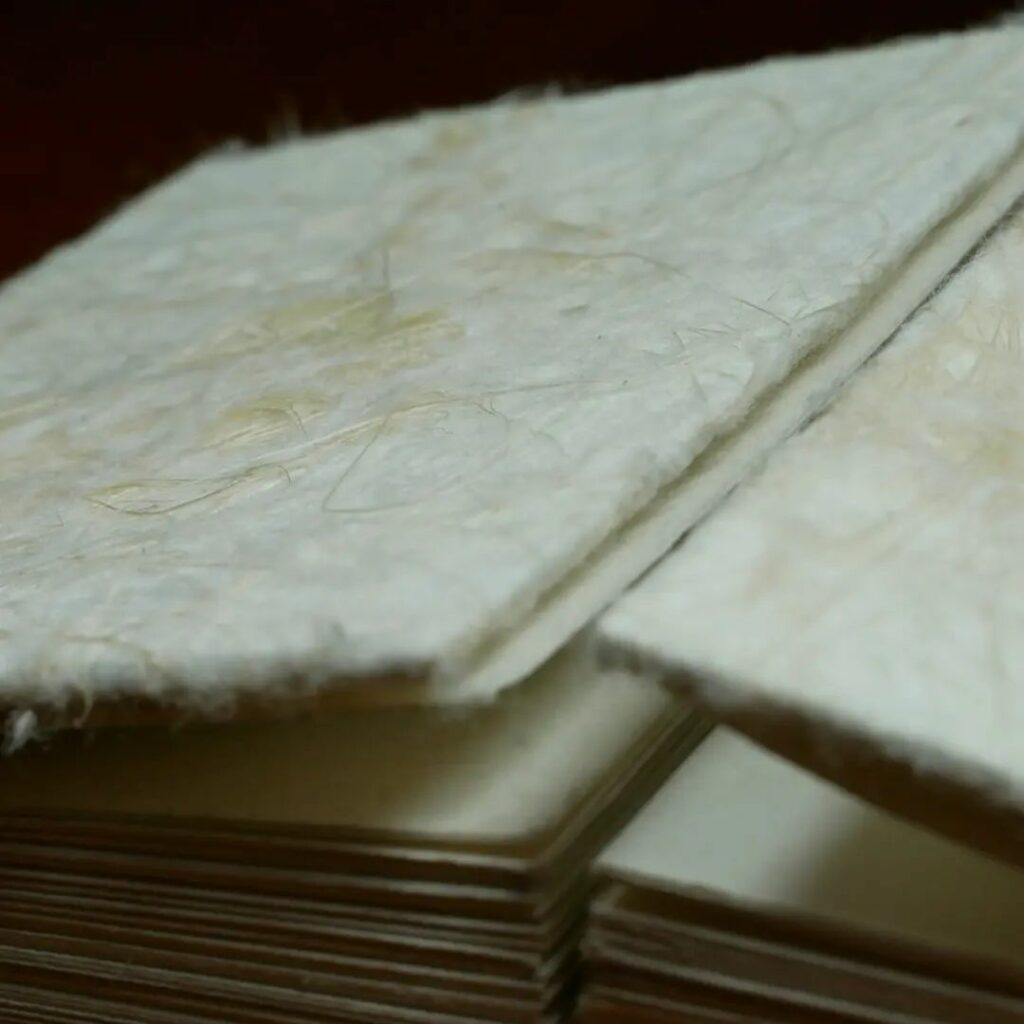
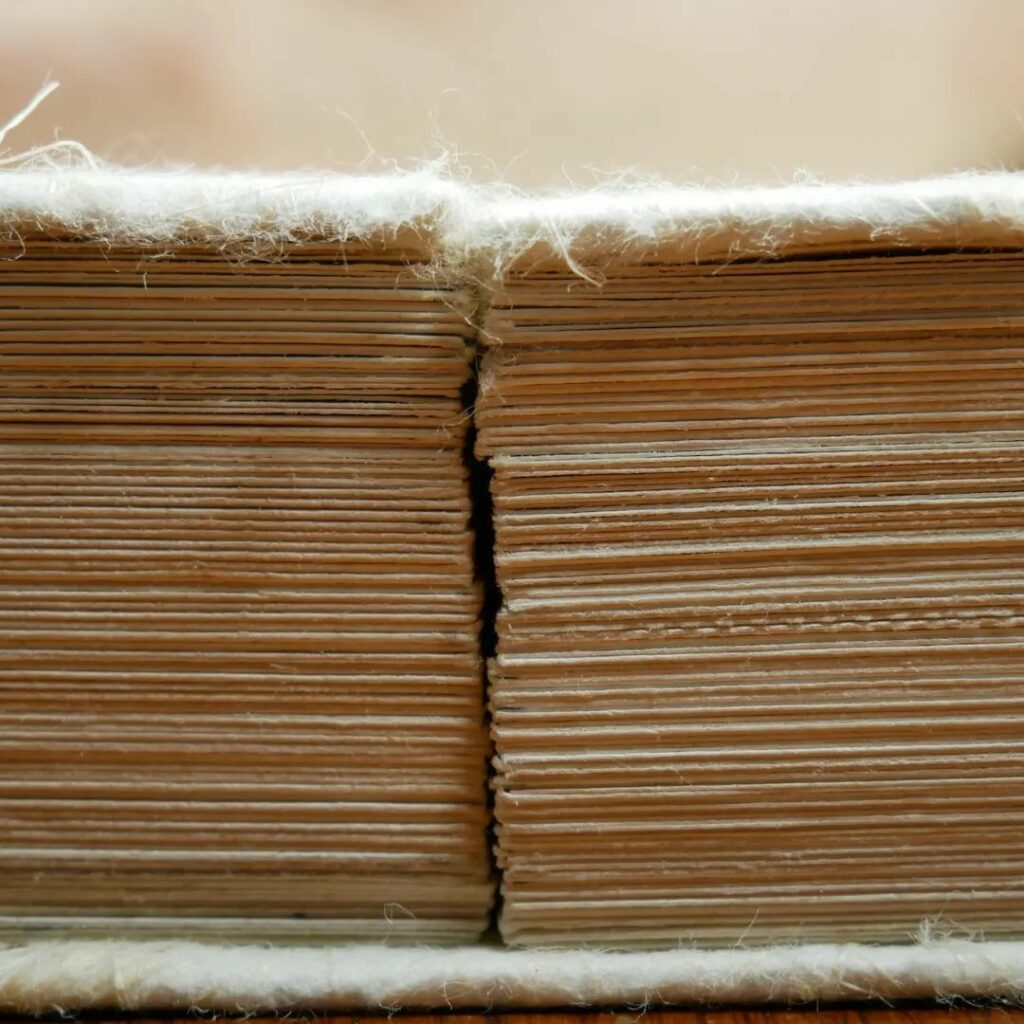
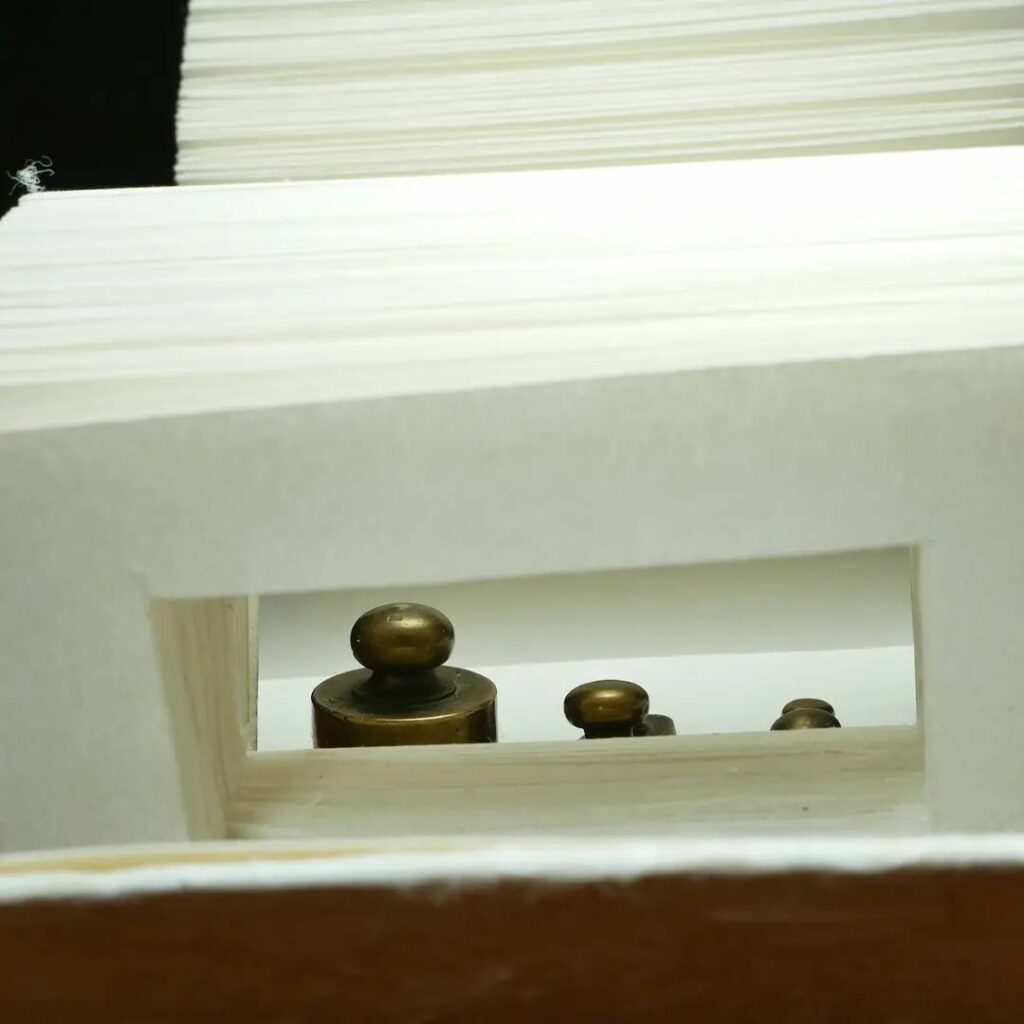
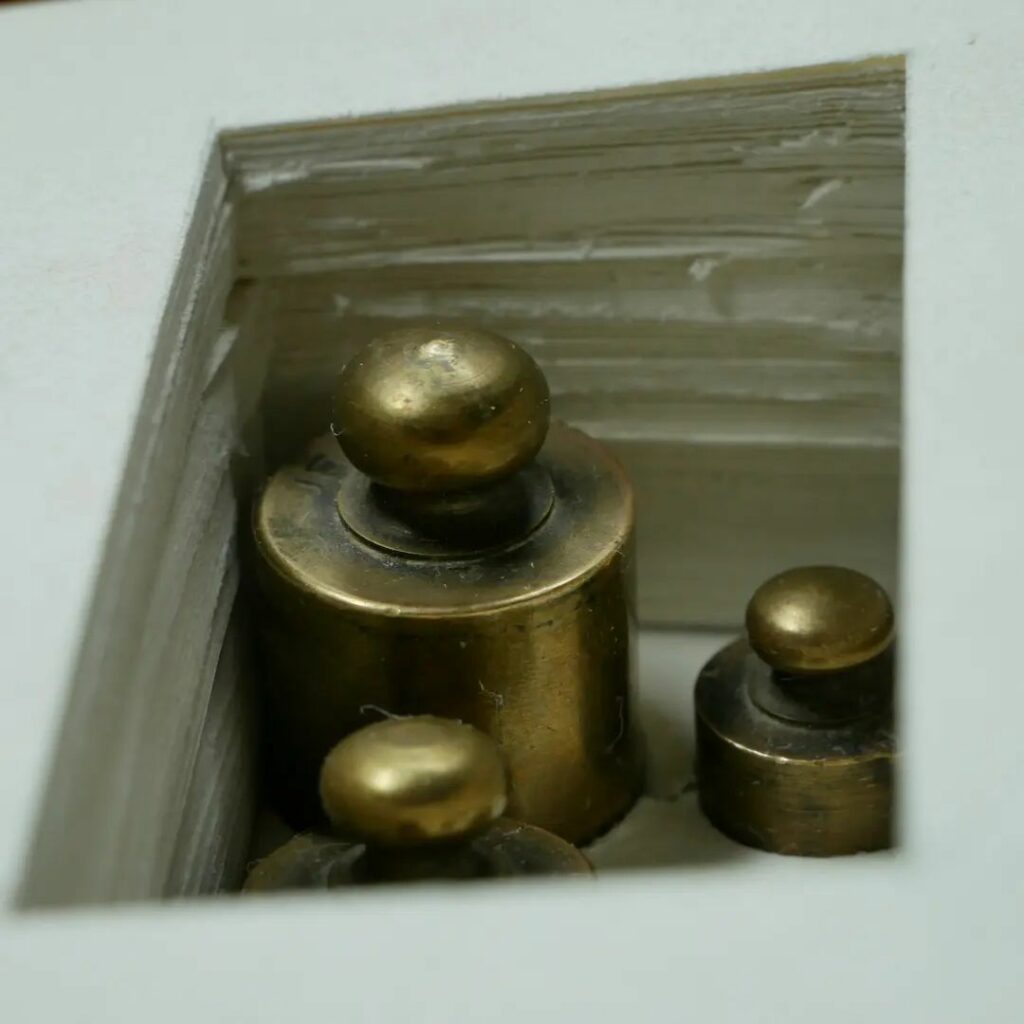
Expectations
I sometimes worry too much about expectations I think others might have of me. And even worse is the actual expectations I place on myself. Too often I do not meet my own (sometimes unrealistic) expectations. As a result, to me expectations can feel crushing, limiting, like a burden weighing me down. That is what I wanted to express in this book.
One part of the book has a huge hole cut out and is filled with weights, not leaving a lot of room to do anything on the pages. The other part is untouched and unencumbered with plenty of room on the pages to do with as you please. With this book, I wanted to remind myself not to let expectations (other people’s or your own) limit you and stand in the way of doing things you enjoy and enjoying the things you do.
Tsundoku
Tsundoku is “the act of leaving a book unread after buying it, typically piled up together with other unread books”.
“The word tsundoku is a combination of two Japanese terms: tsunde-oku (to let things pile up) and dokusho (reading books)”.
It is a phenomenon I am very familiar with. I love buying books, but I never have enough time to read them all cover to cover. Not yet, anyway! In the meantime, I tend to stack them up in nice, practical piles, usually logically categorised into whatever makes sense given what I am working on at the time.
I do the same with notebooks, leaving them empty and piled up with other unused notebooks. So for this month’s theme, instead of a pile of books I will never read, I decided to make a pile of notebooks I will never write in. I even created a new word for this: Tsunnoto
Tsunnoto: the act of leaving a notebook book unwritten in after buying it, typically piled up together with other unused notebooks).
The word tsunnoto is a combination of two Japanese terms: tsunde-oku (to let things pile up) and nōto ni kaku (writing in notebooks).

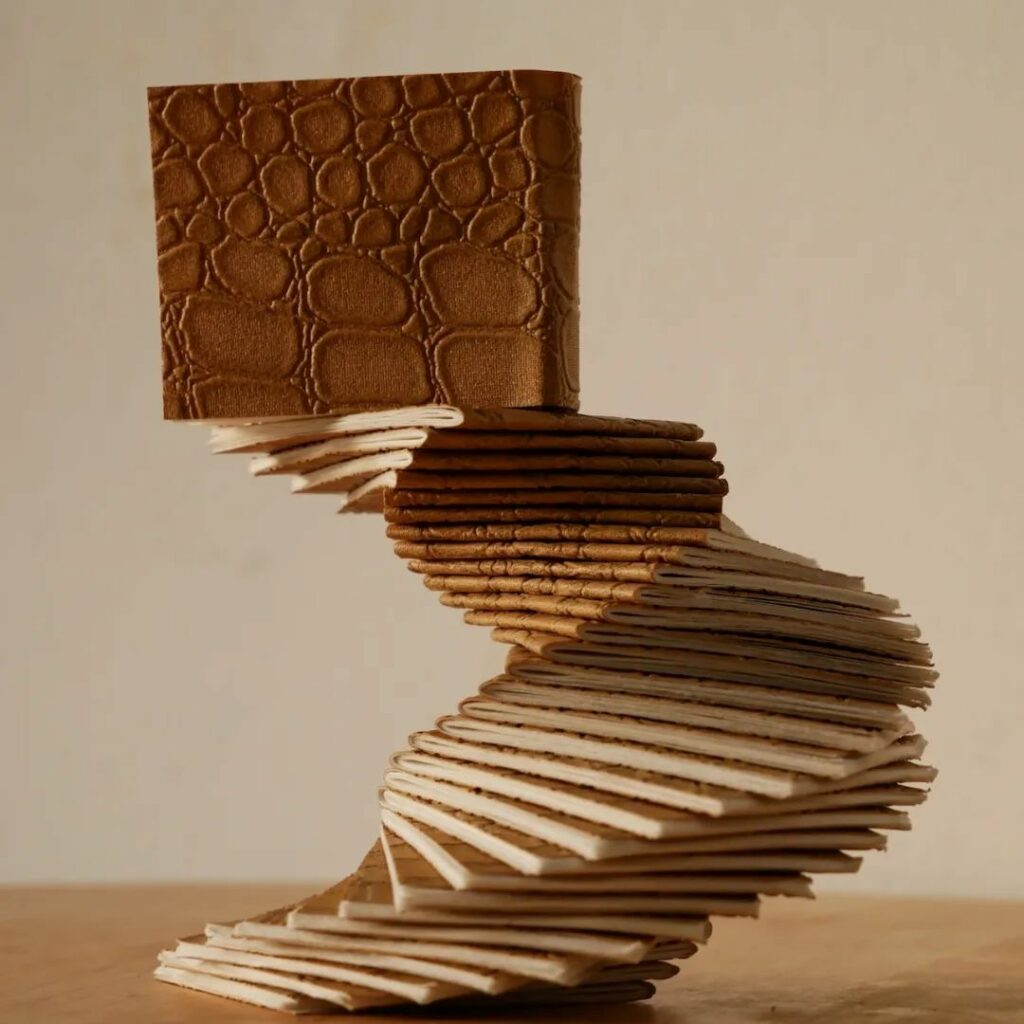
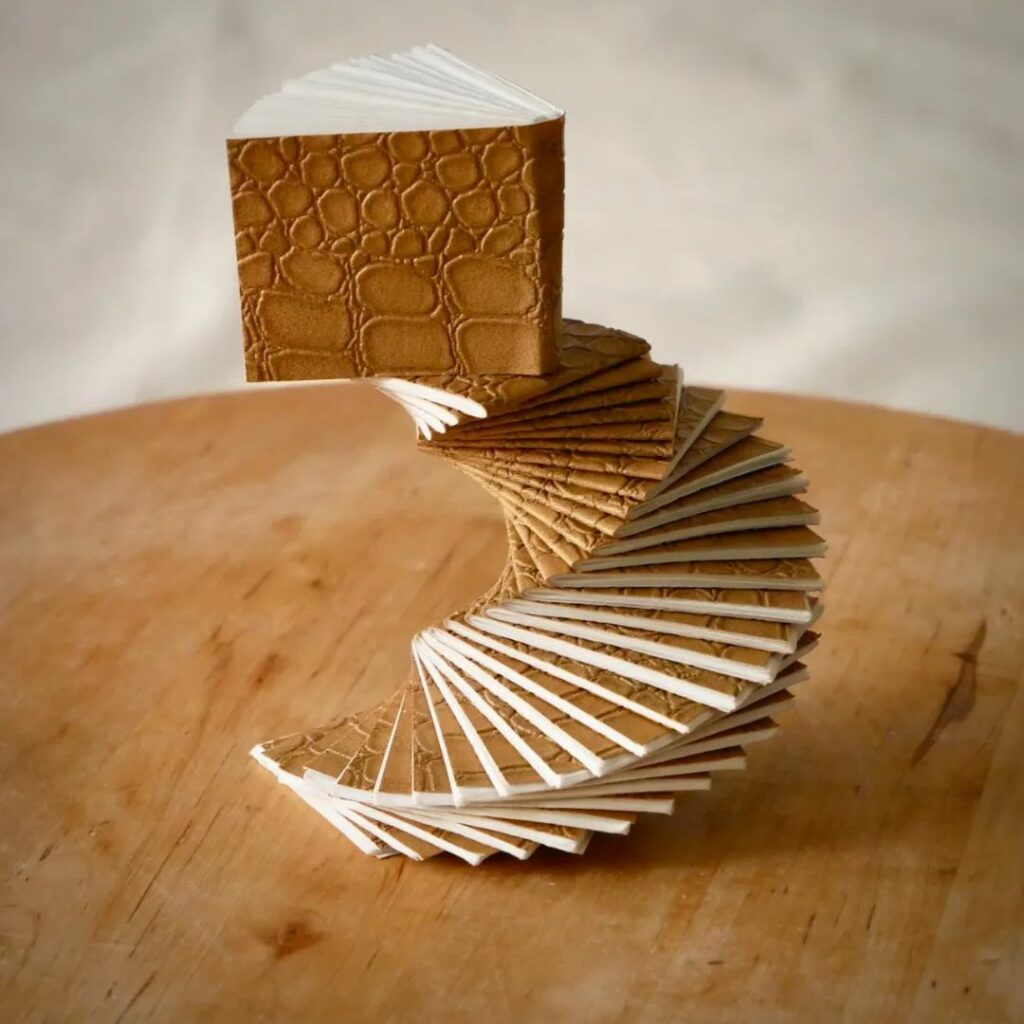
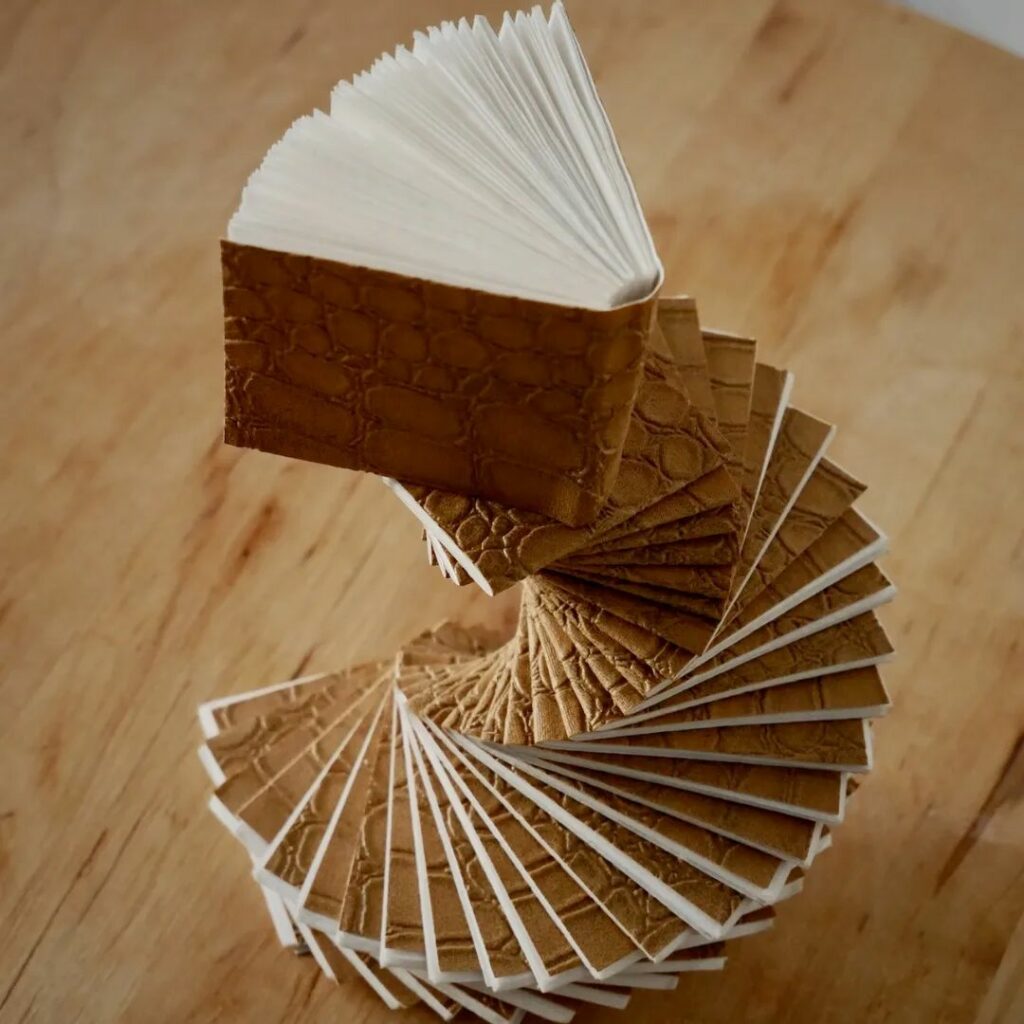
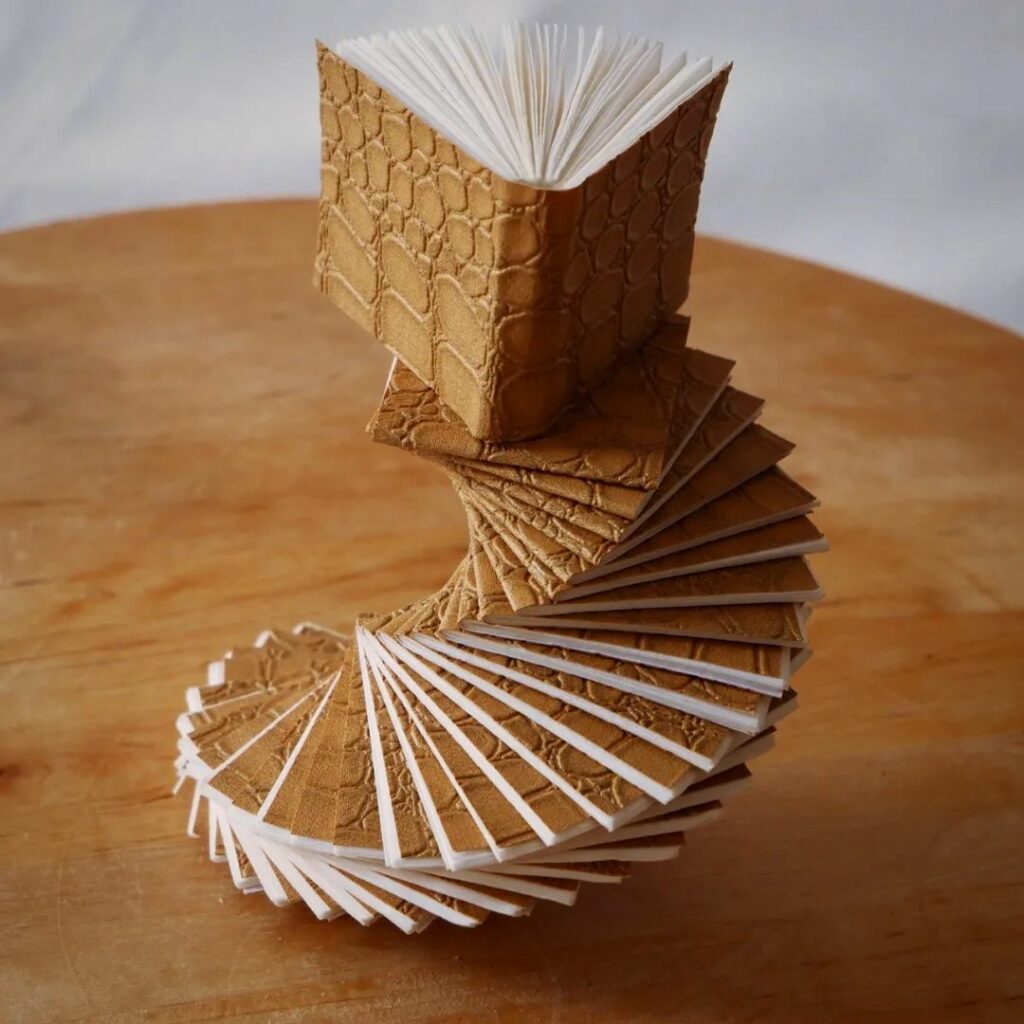

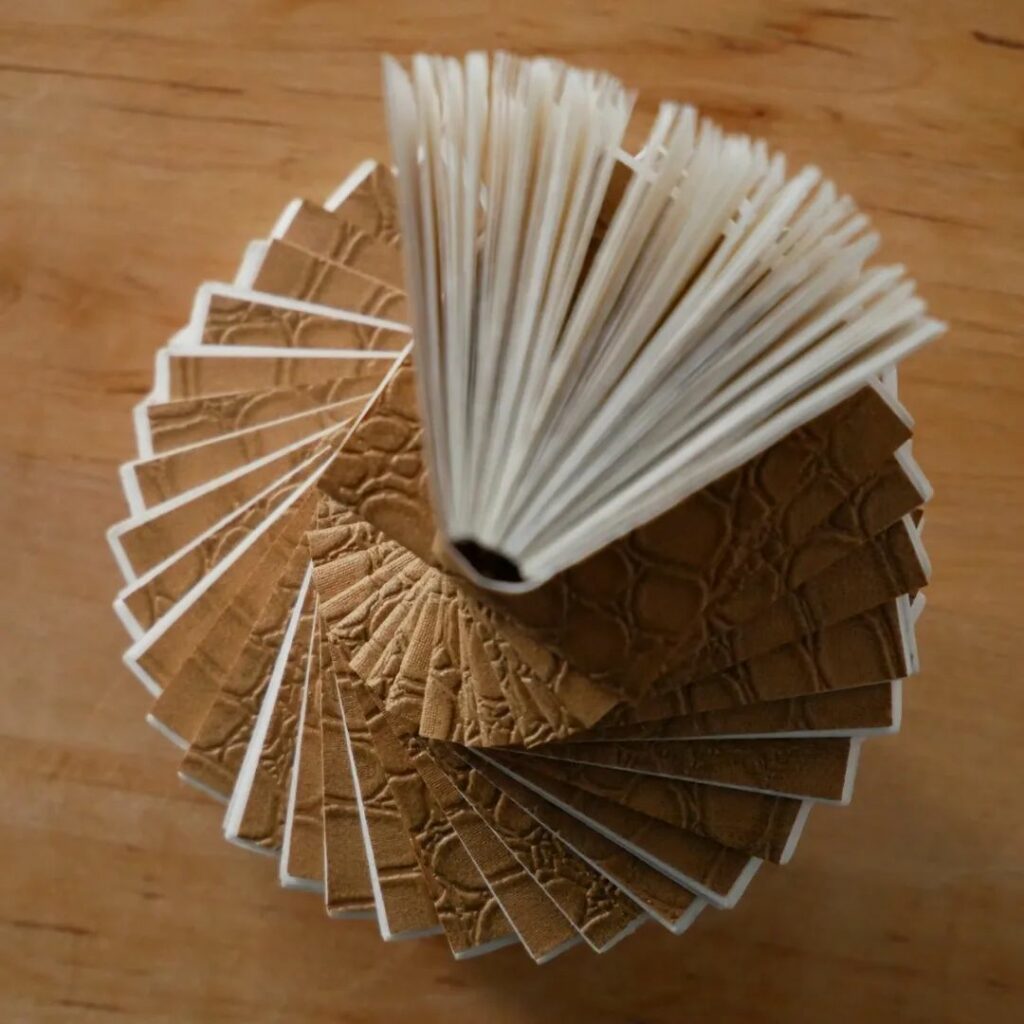
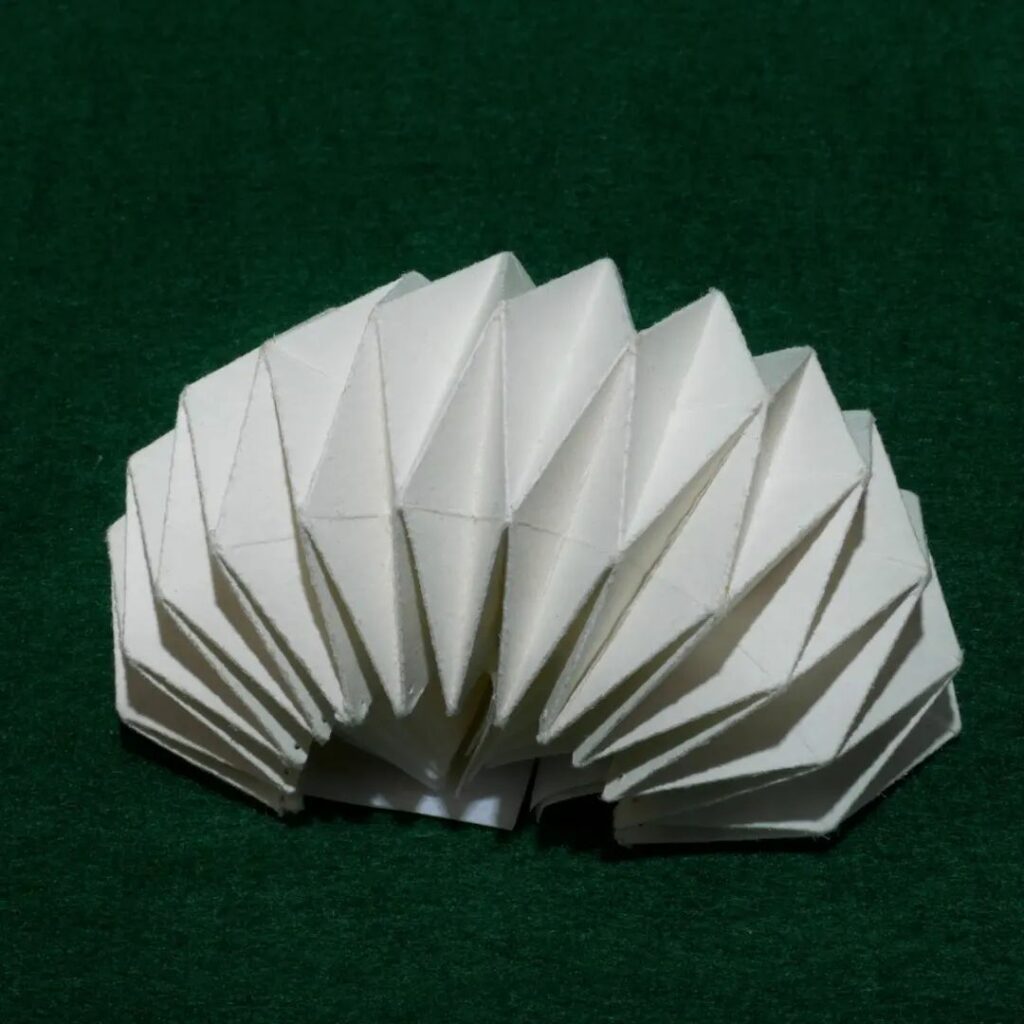
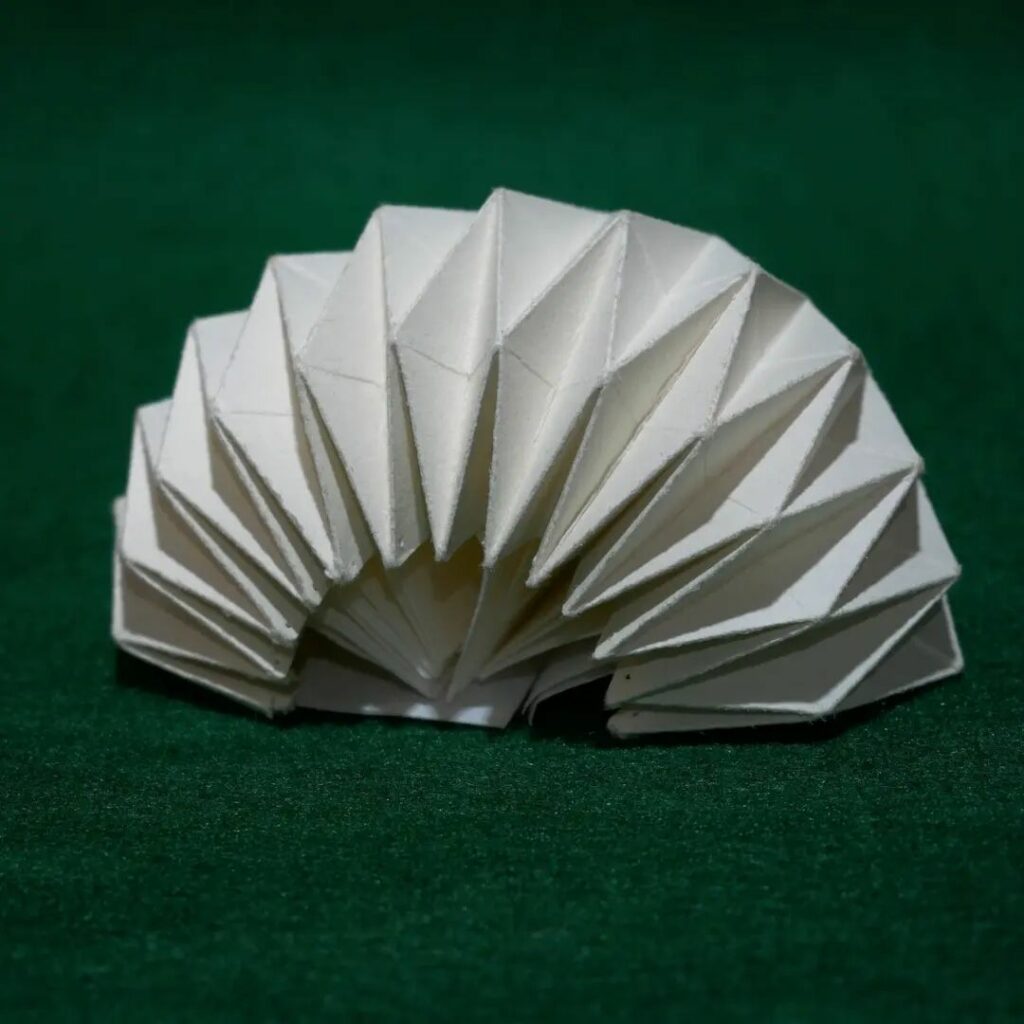
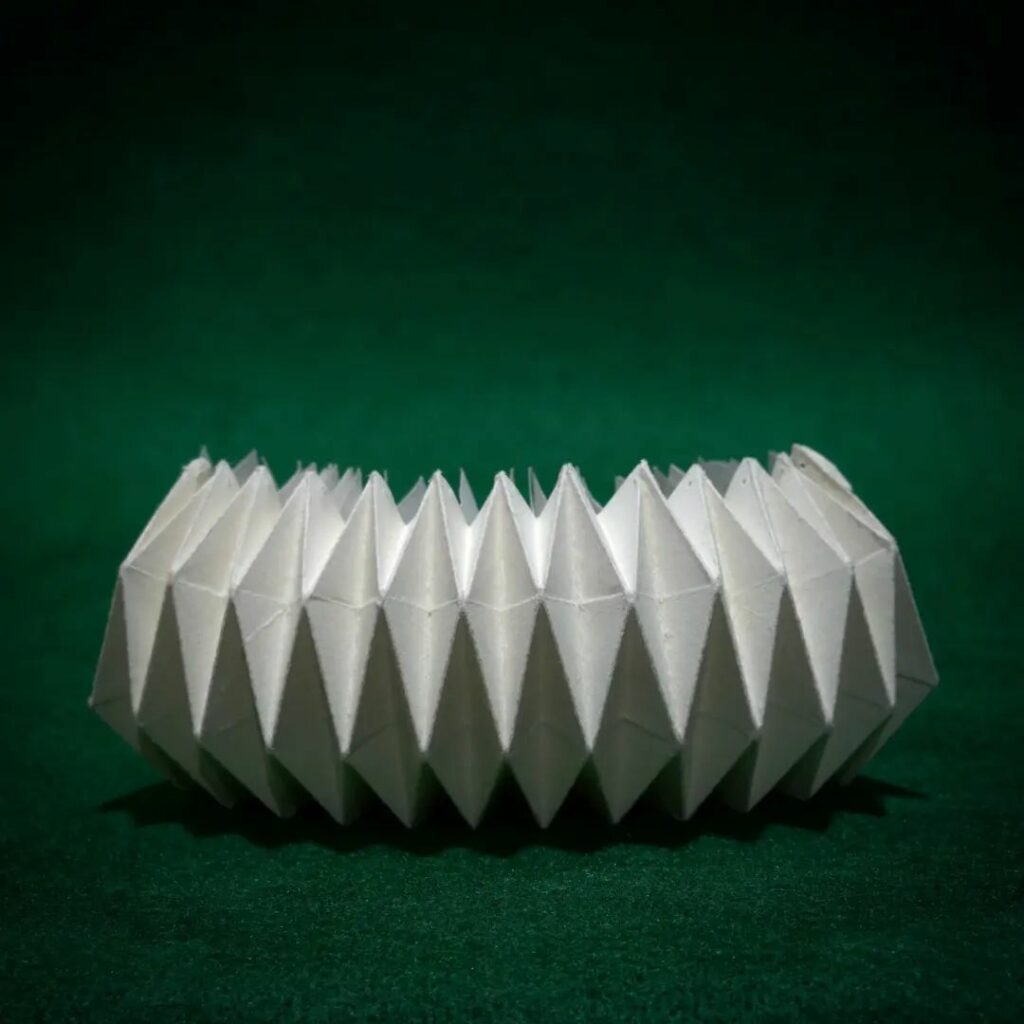
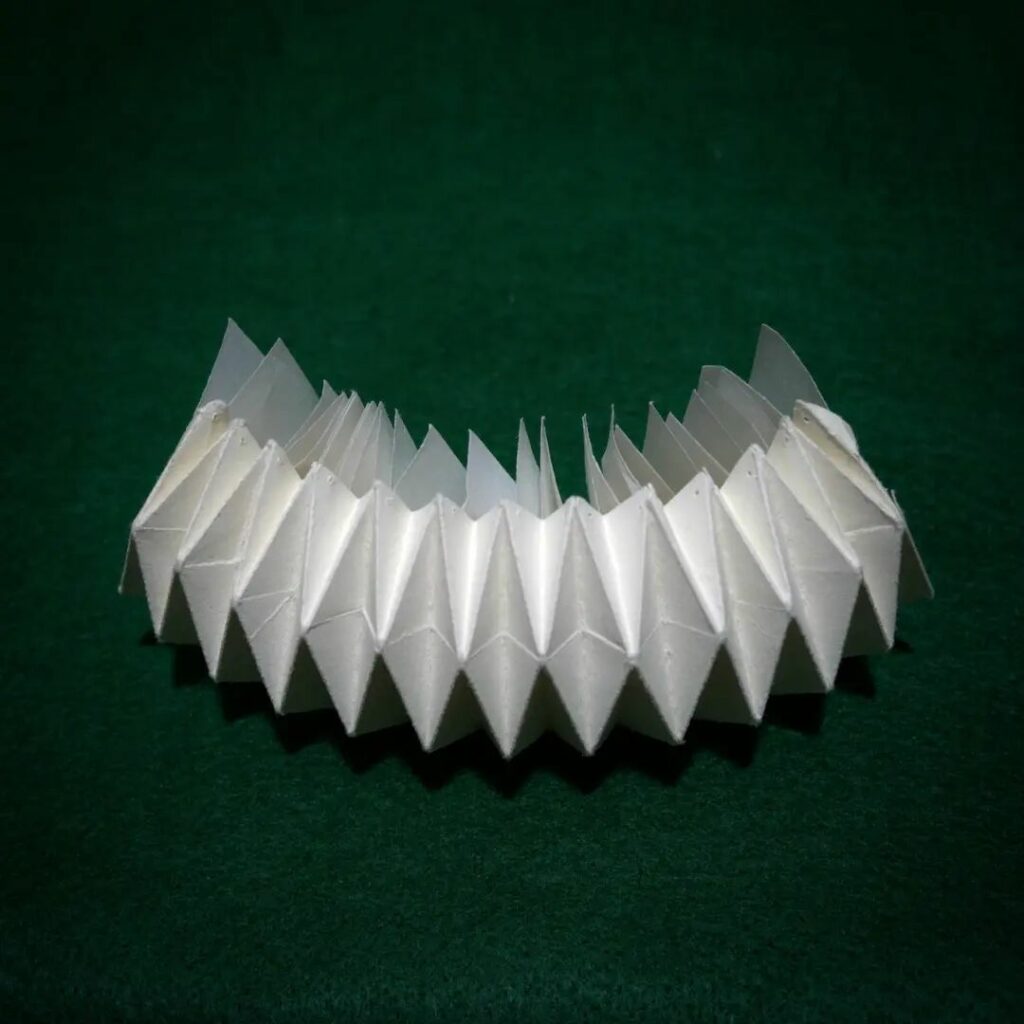

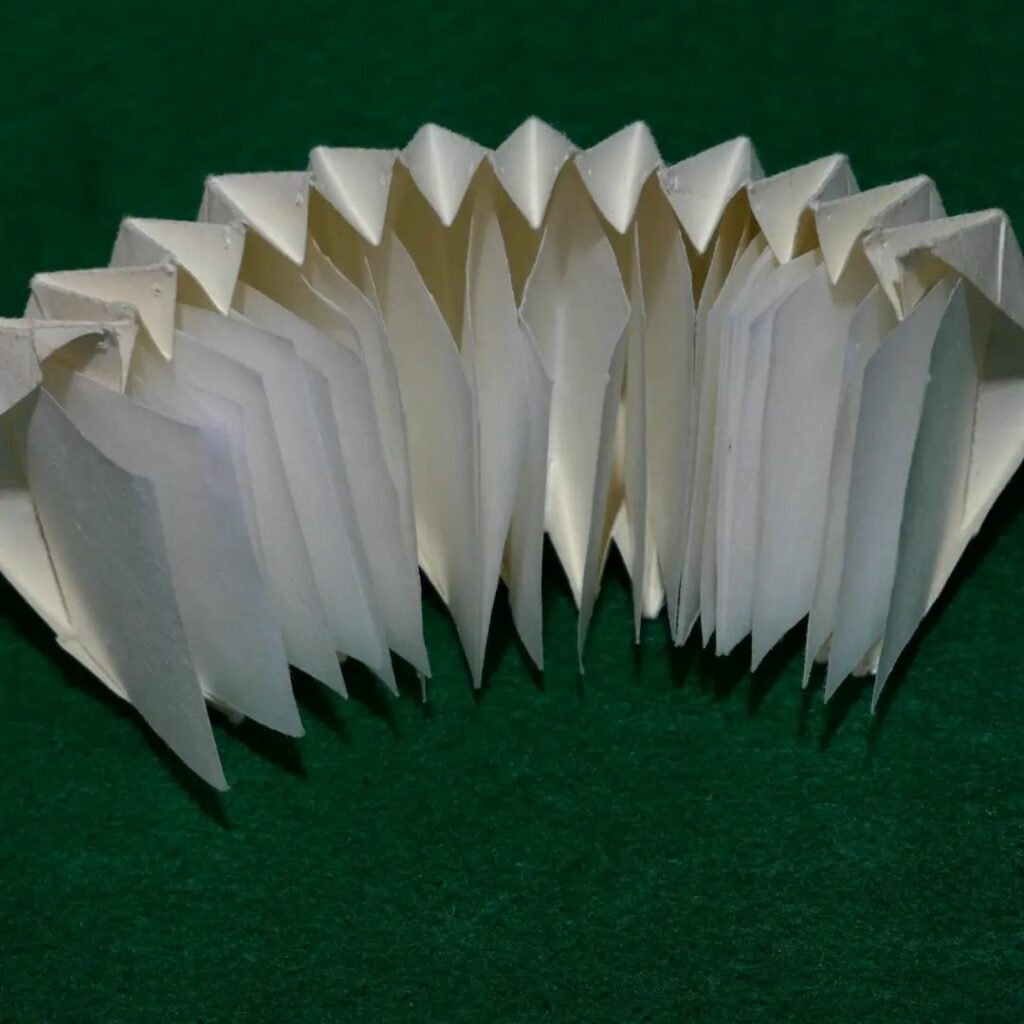
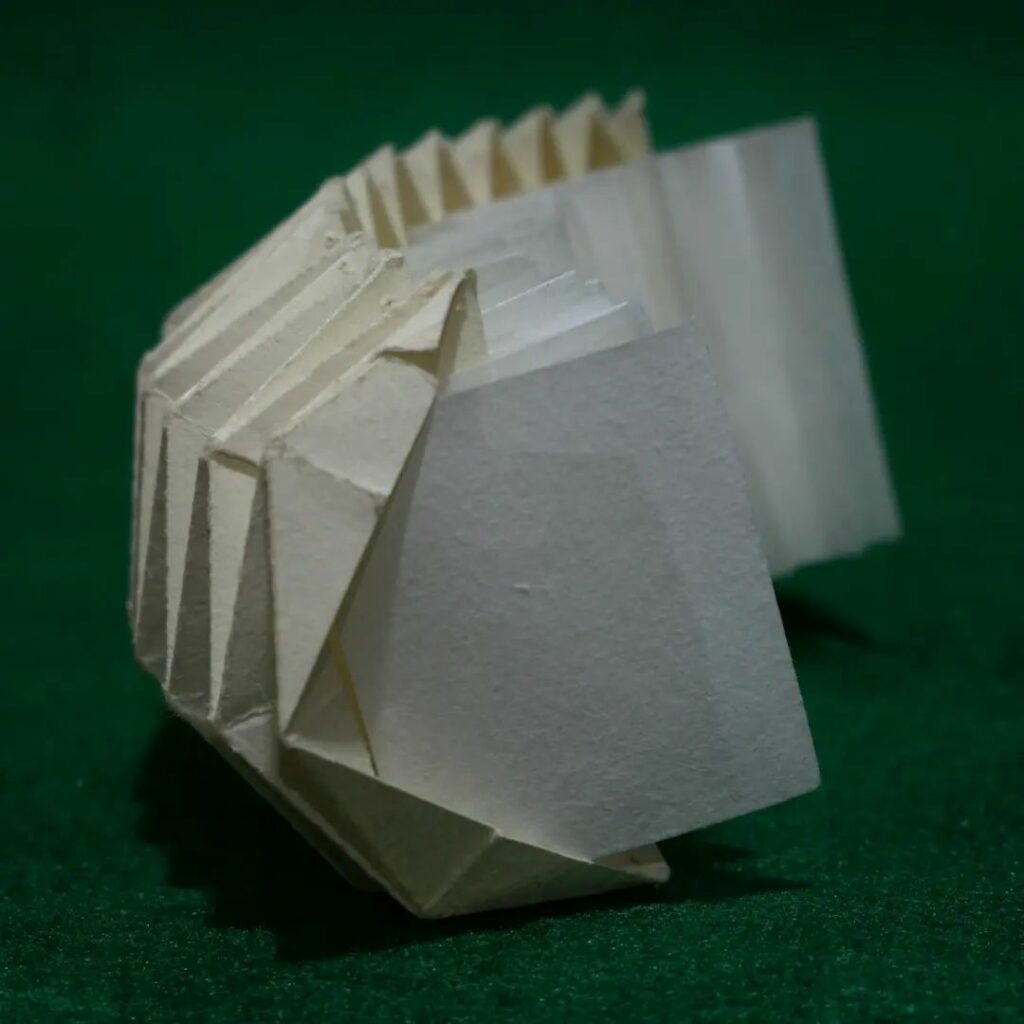
Cap 2
The title for this book, ‘Cap’, refers to the word in the sense of the top part of a mushroom. This book was created from playing around with some origami and left over paper off cuts. It reminds me a little of the puffball mushroom, also known as Calbovista.
Cap 1
The title for this book, ‘Cap’, refers to the word in the sense of the top part of a mushroom. For this book, I drew inspiration from the beautiful bamboo mushroom, also known as long net stinkhorn or veiled lady.
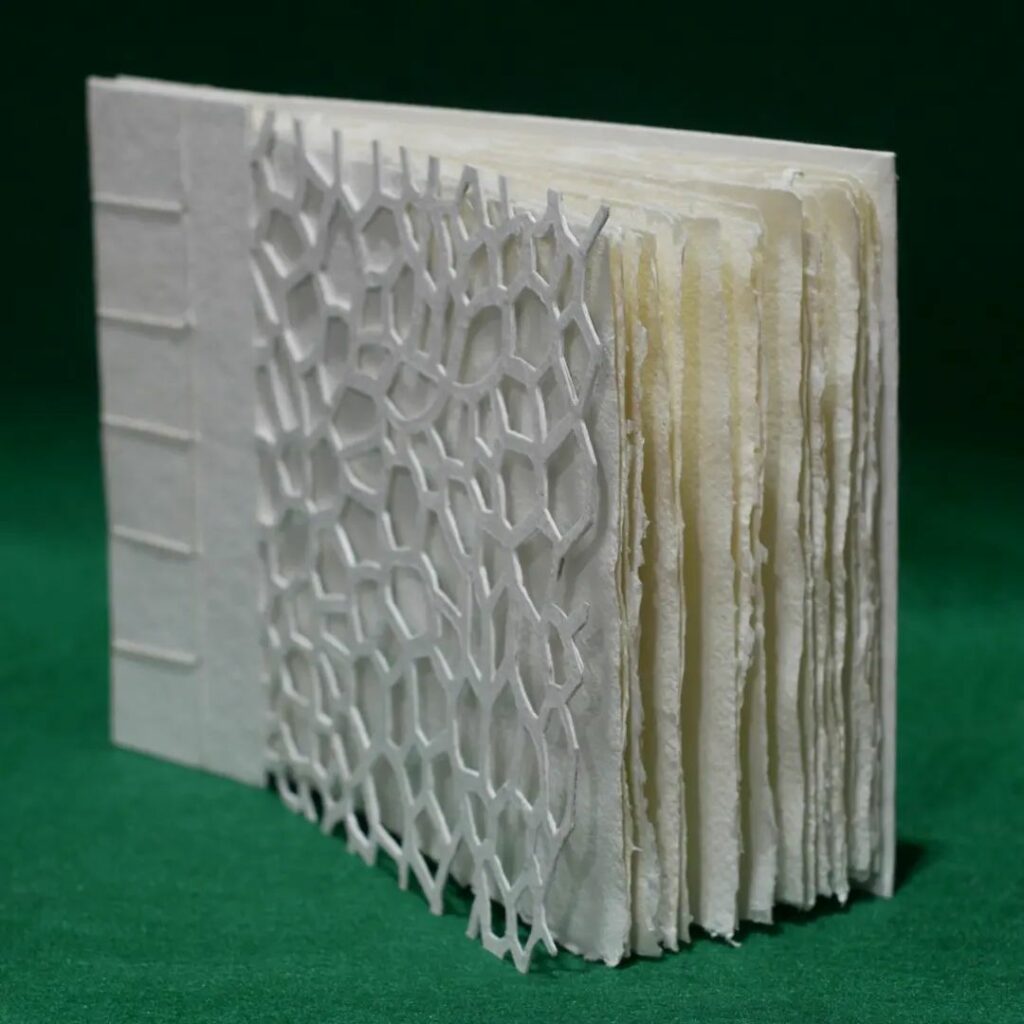
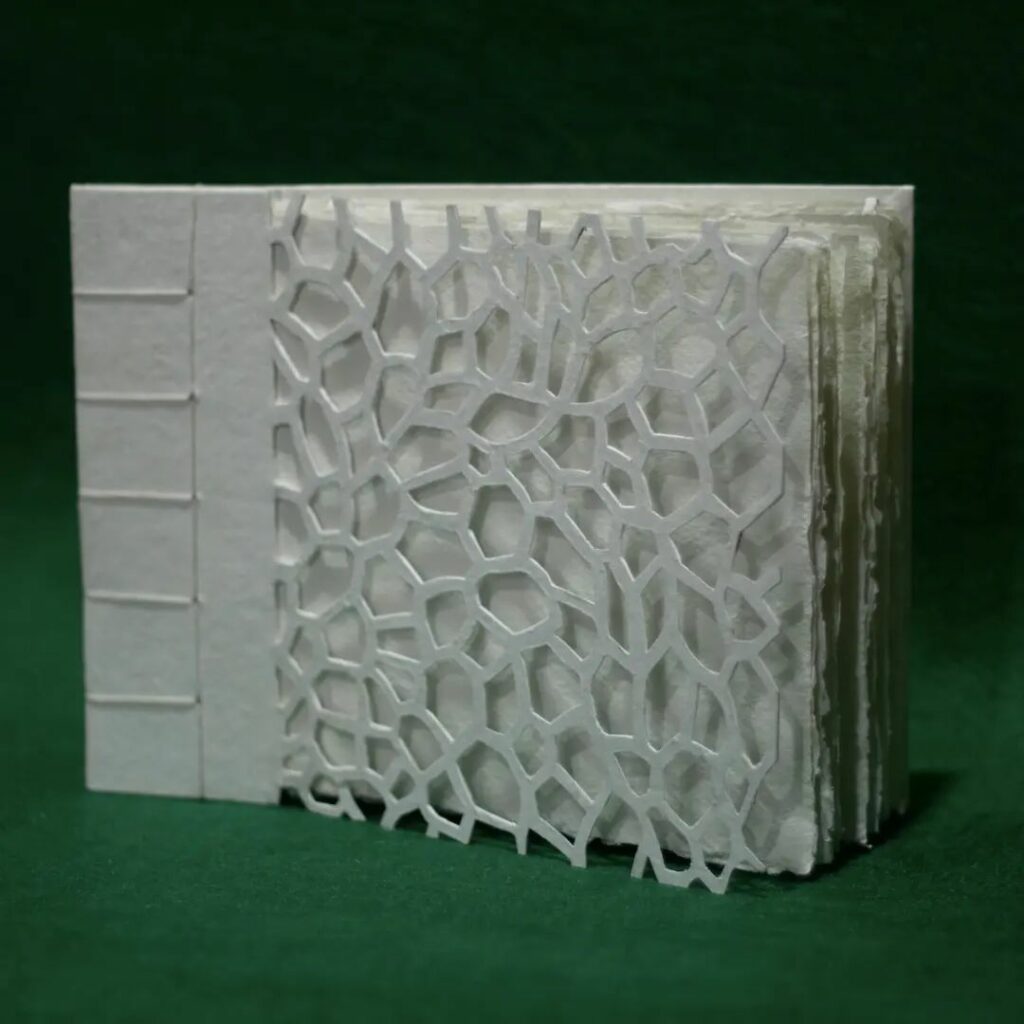

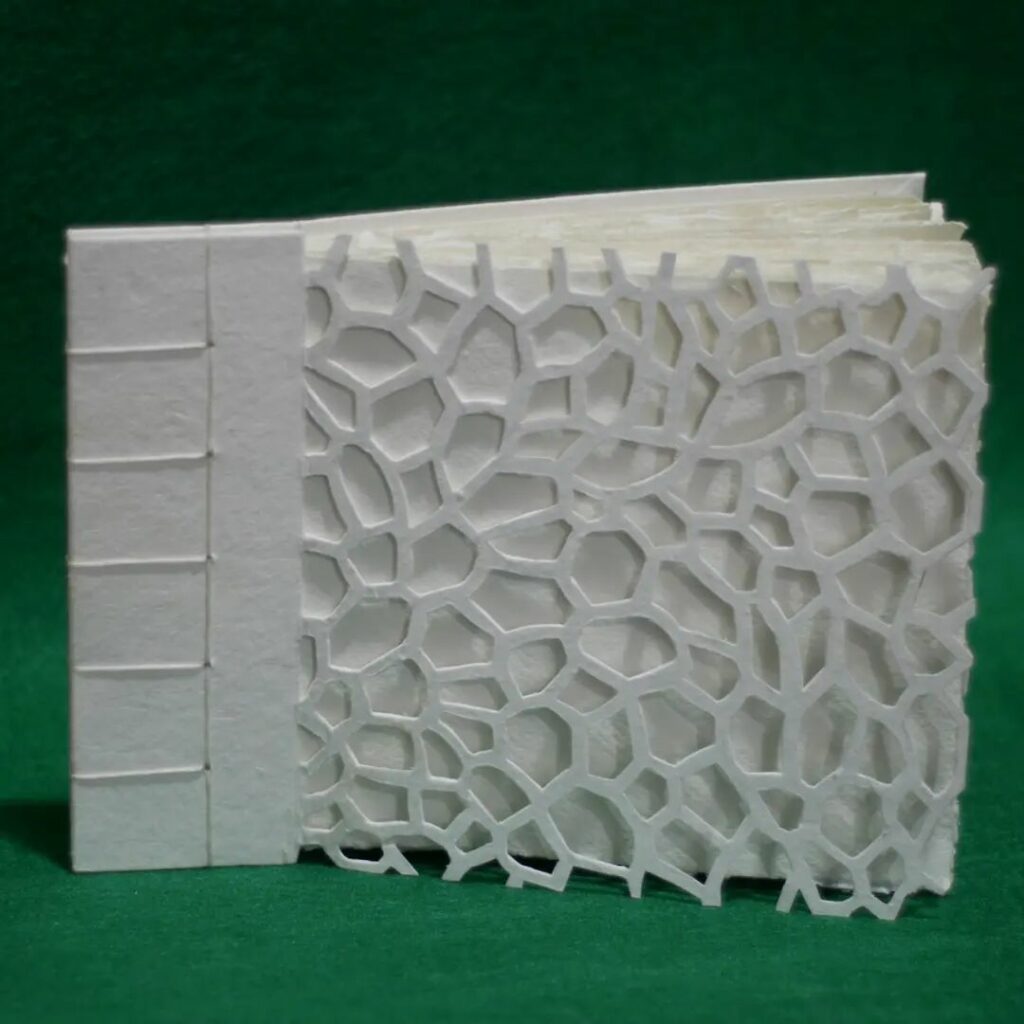
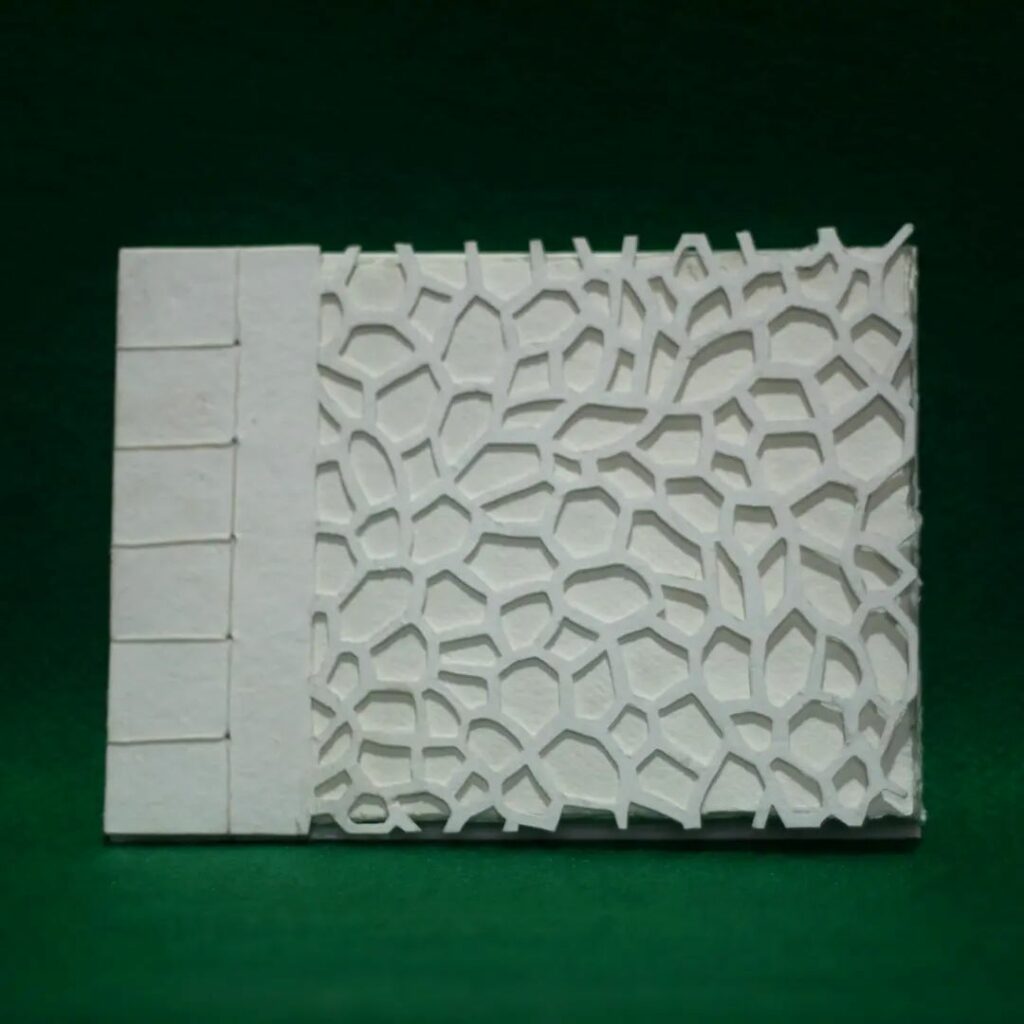
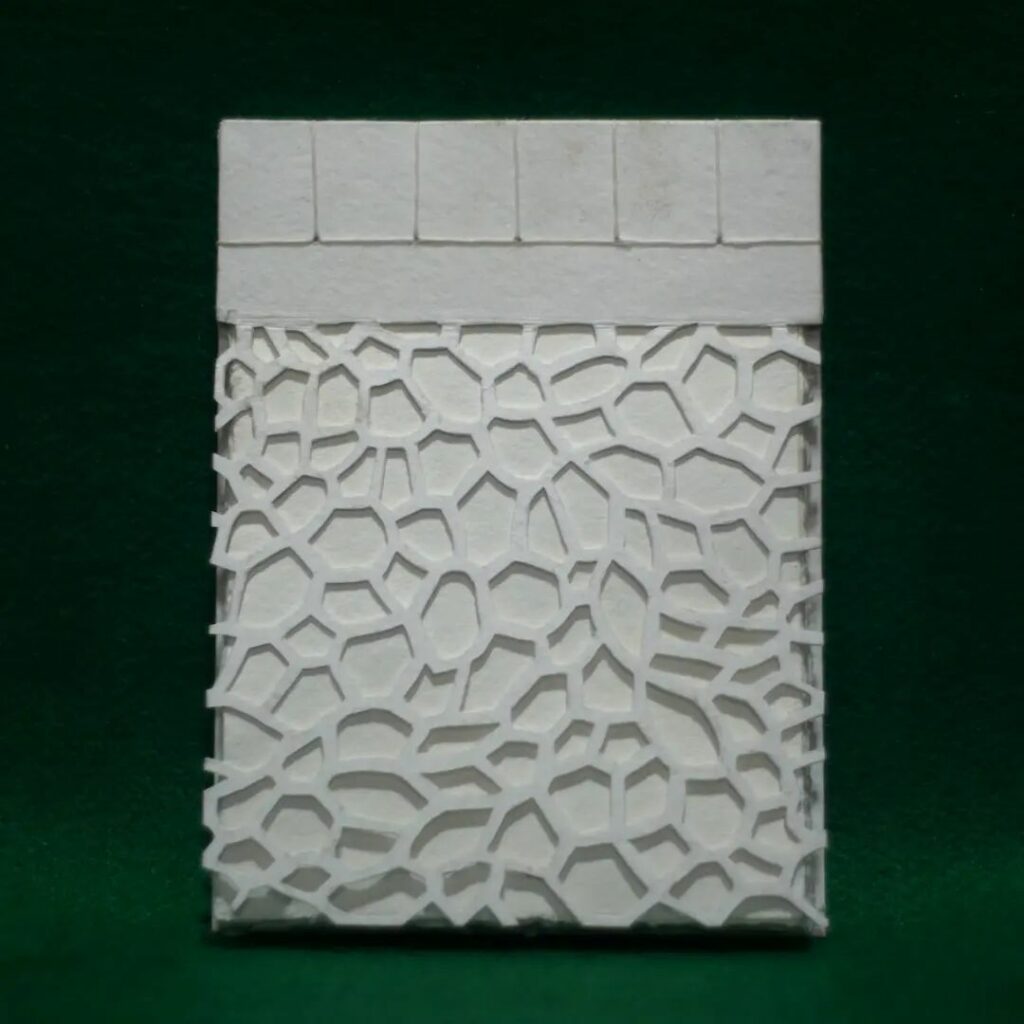




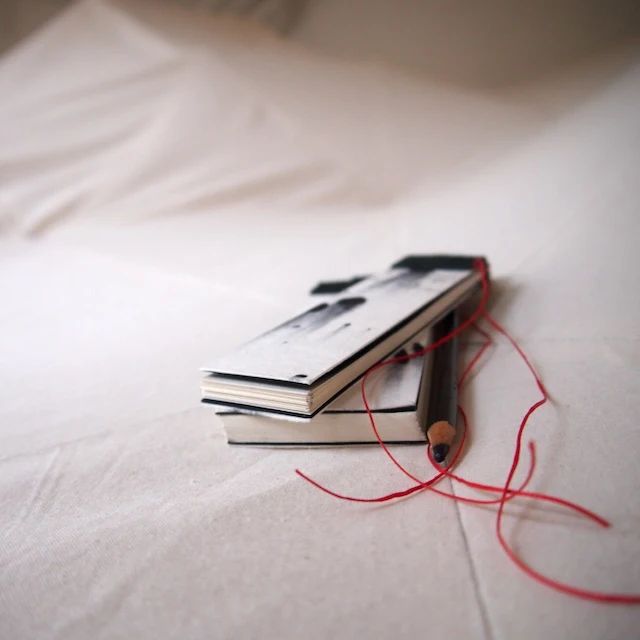
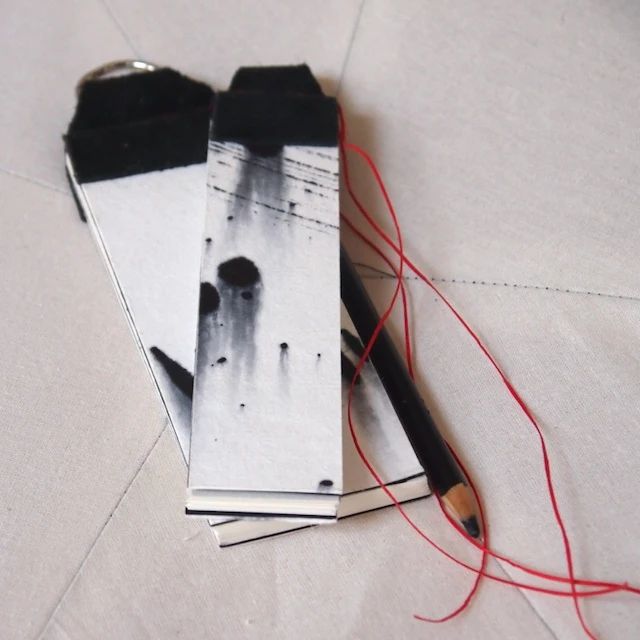

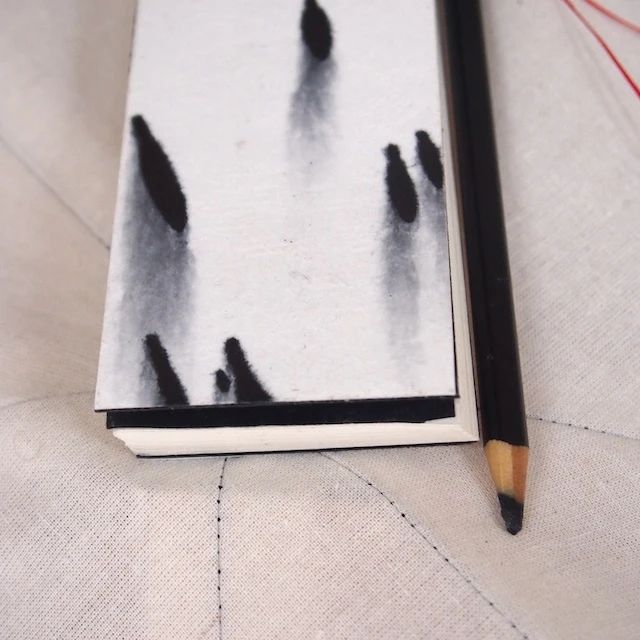
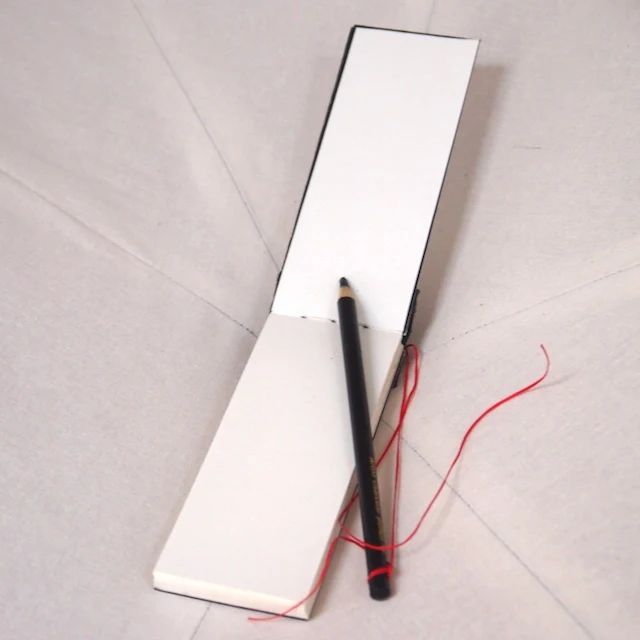
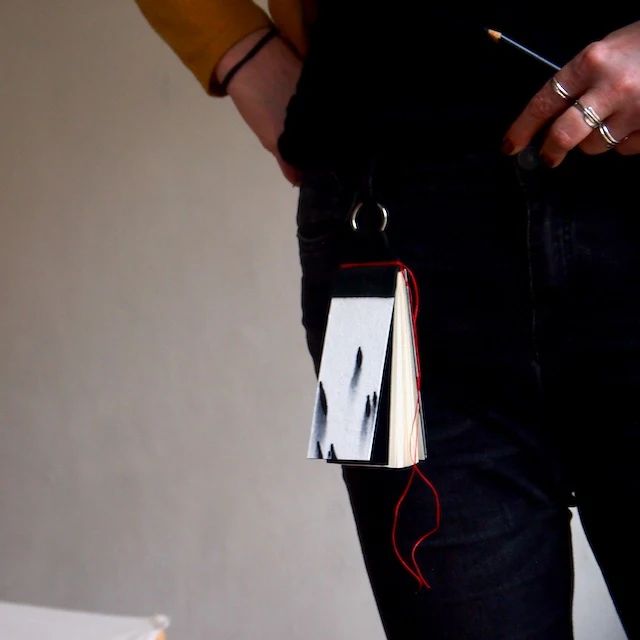

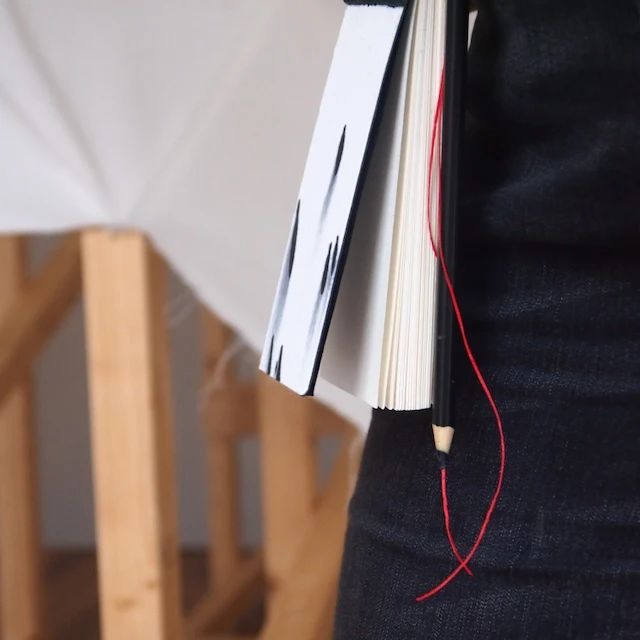
Waiting
For this book I drew inspiration from medieval girdle books: small portable books worn by medieval European monks, clergymen and aristocratic nobles. These books were attached to a girdle or a belt, and could be swung upwards when they were ready for reading. The girdle books would usually contain religious texts and manuscripts.
I love the idea of carrying a book with you conveniently attached to a belt, so you can remain hands free until you want to peruse it. Then when you find yourself looking to fill some time when waiting for something (e.g. at the dentist, the doctor, waiting in line for coffee, just to name a few), you have something to do.
But instead of a book for reading, I thought it would be nice to have a notebook or sketchbook for drawing or writing down thoughts whenever you find yourself waiting for something or are having a burst of inspiration.
.
Protest
This book is a silent protest against consumerism and wastefulness. The book is made out of recycled material only, from off-cuts of some of my previous projects, and the cover is made with hand-made paper. On the cover I used the Japanese Kintsugi (golden joinery) technique of gluing together the broken elements with gold to celebrate the object’s wear and use by highlighting the cracks and repairs, and embracing the scars and imperfections instead of constantly buying new things and throwing away what is (slightly) damaged or worn.
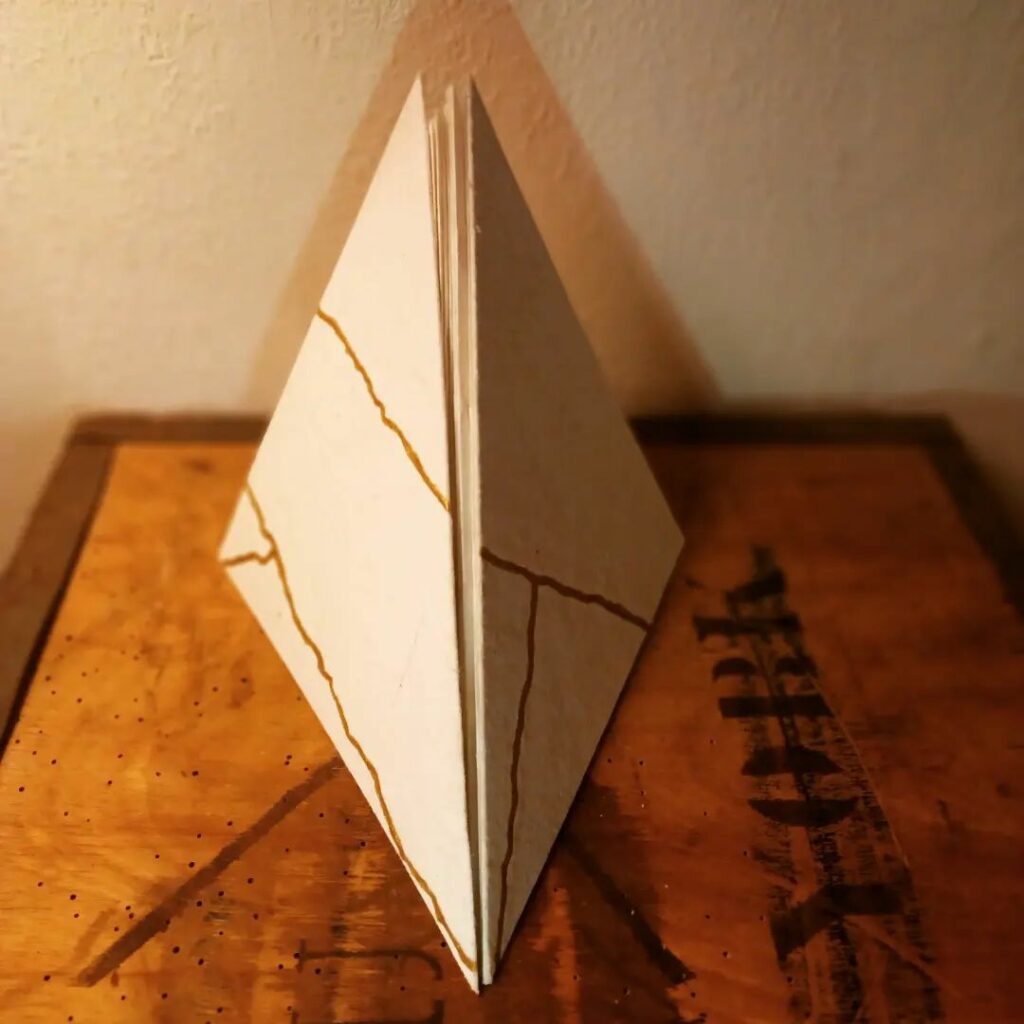
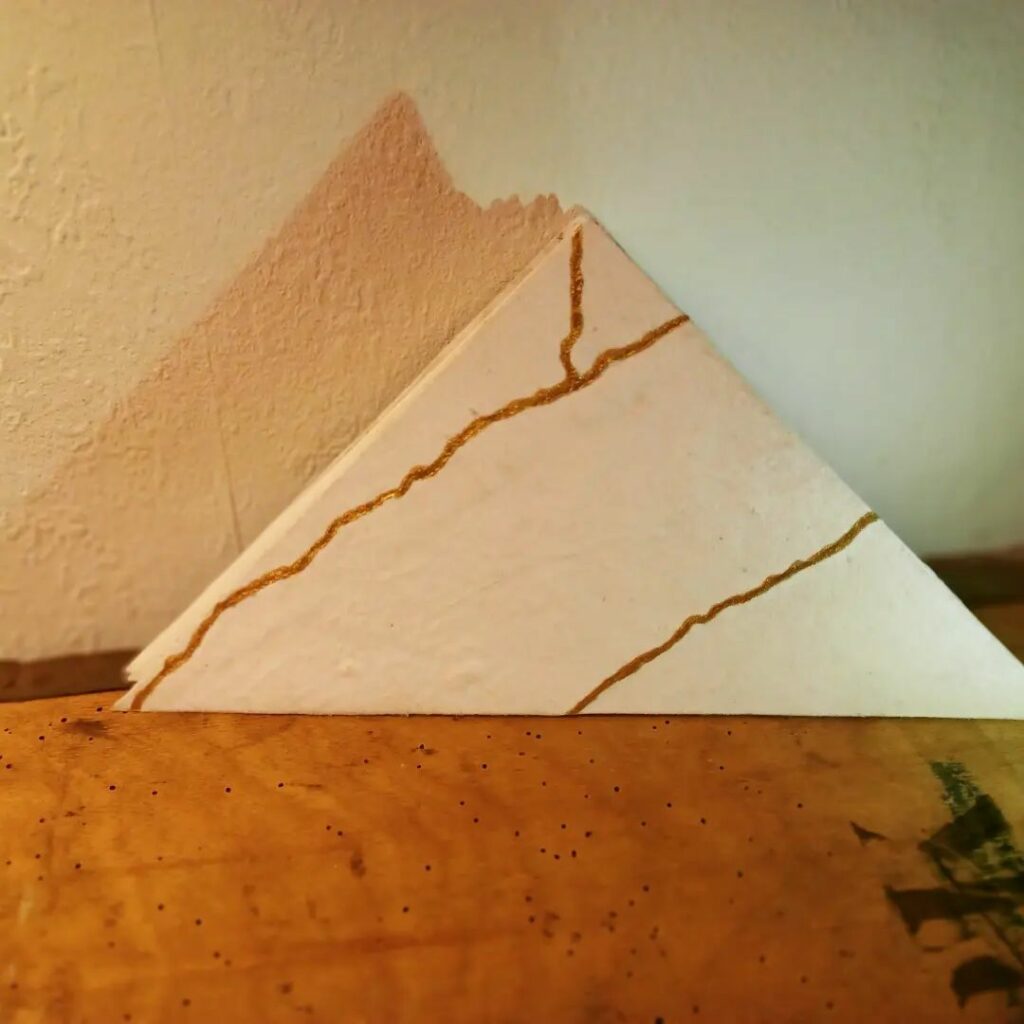
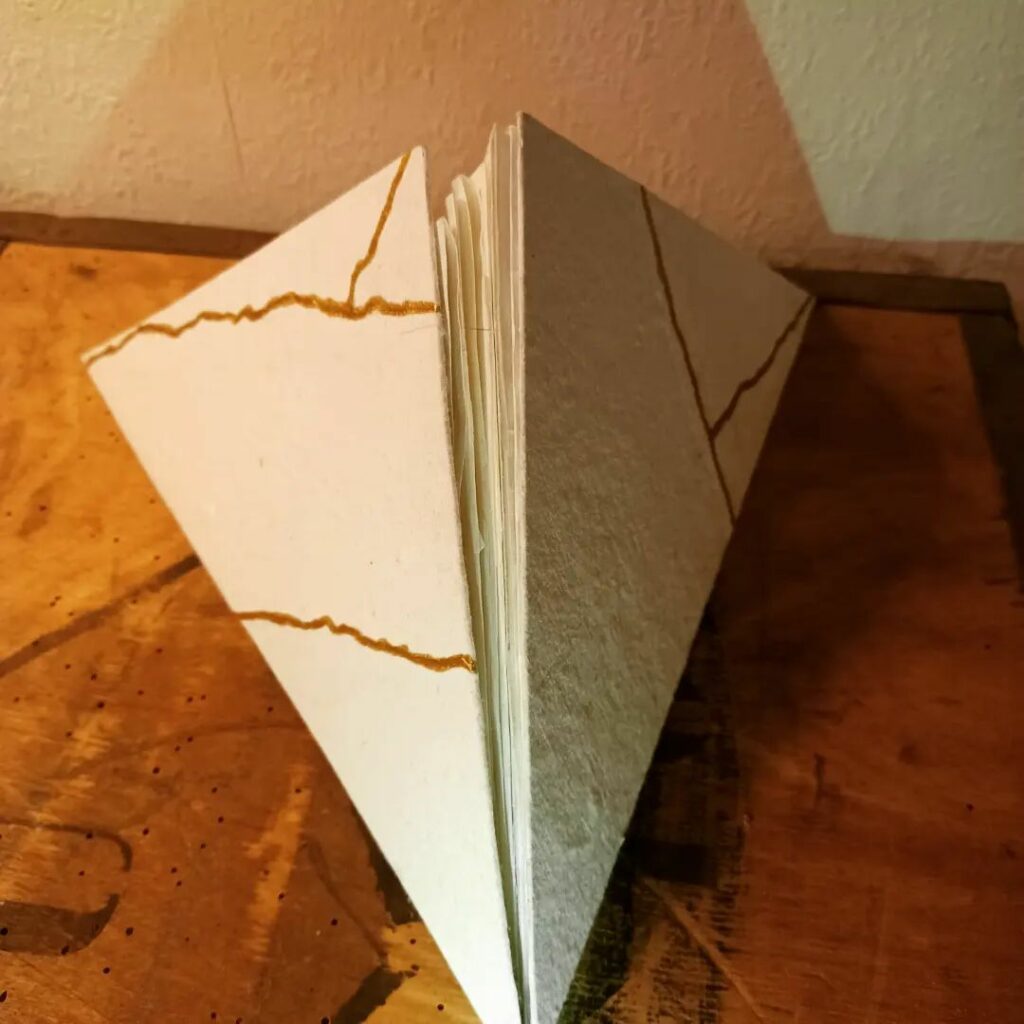
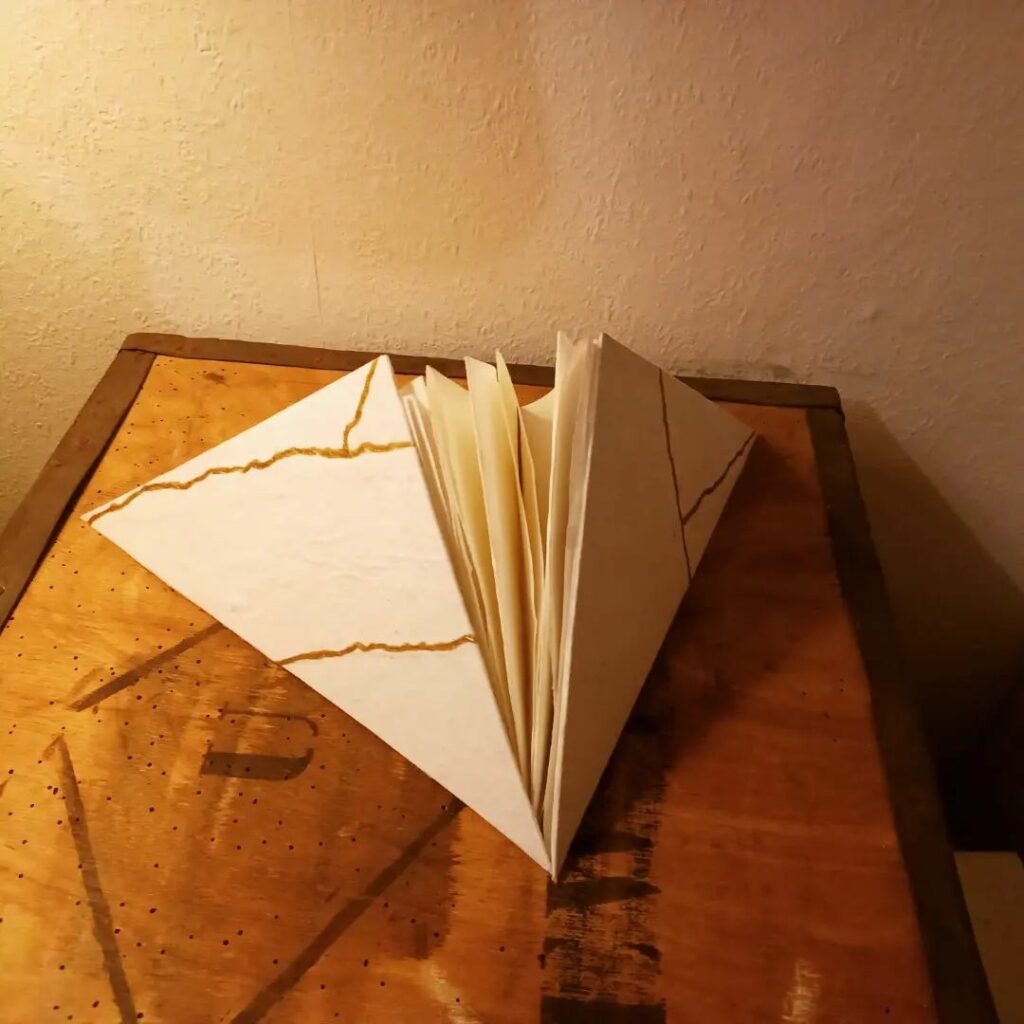



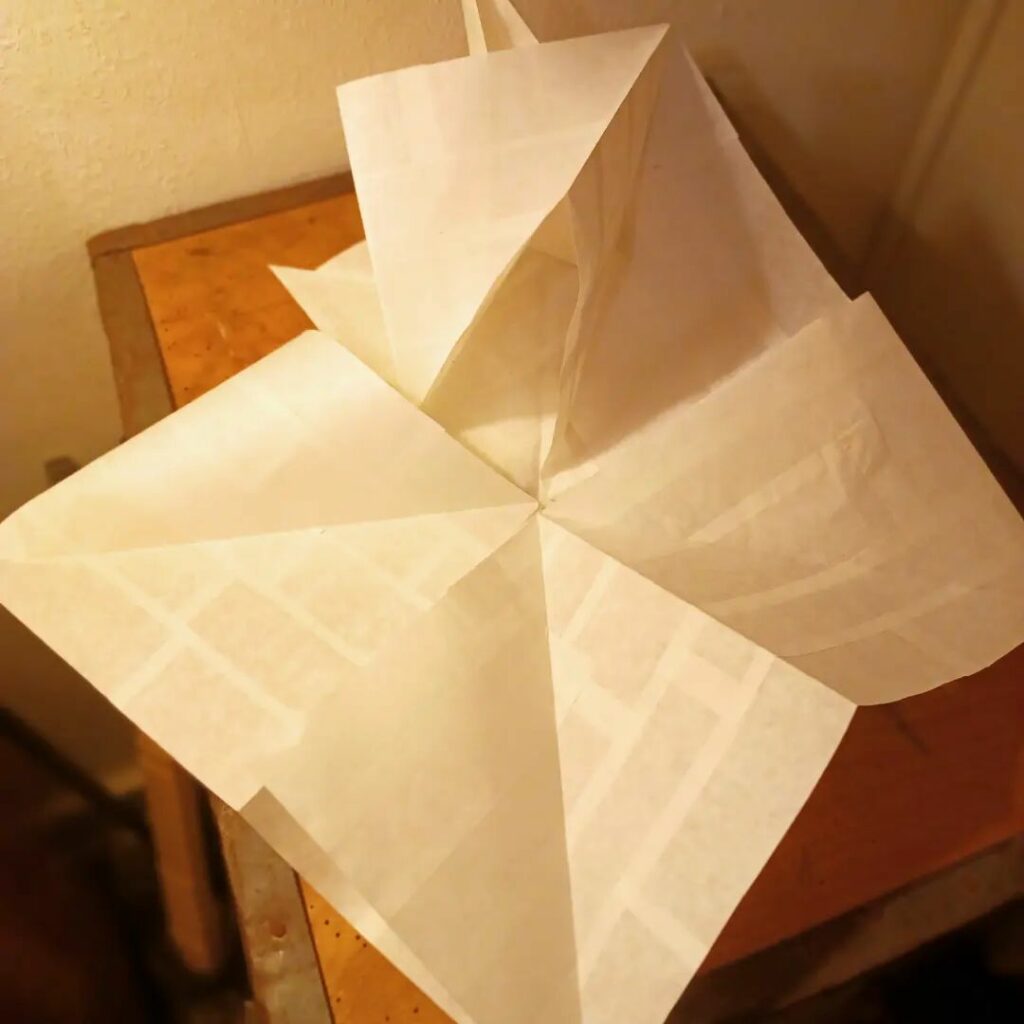
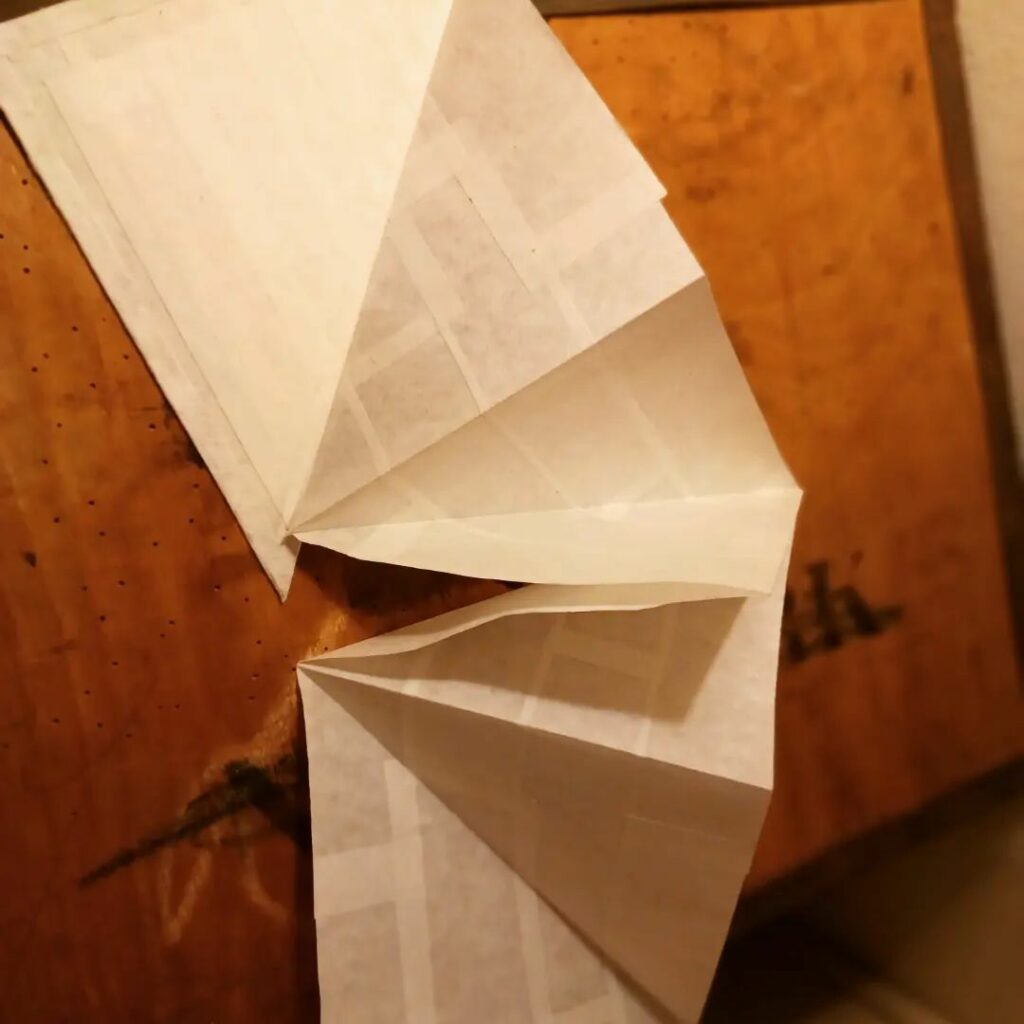
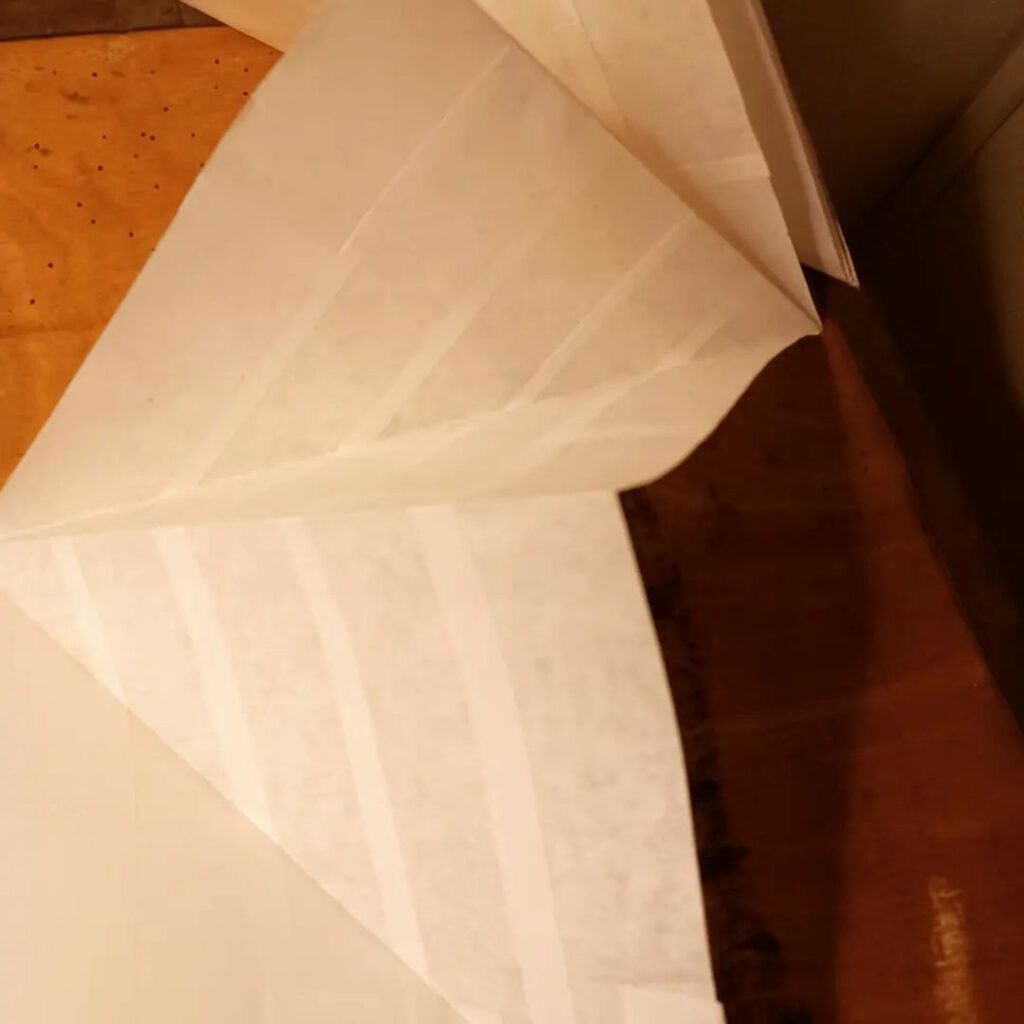


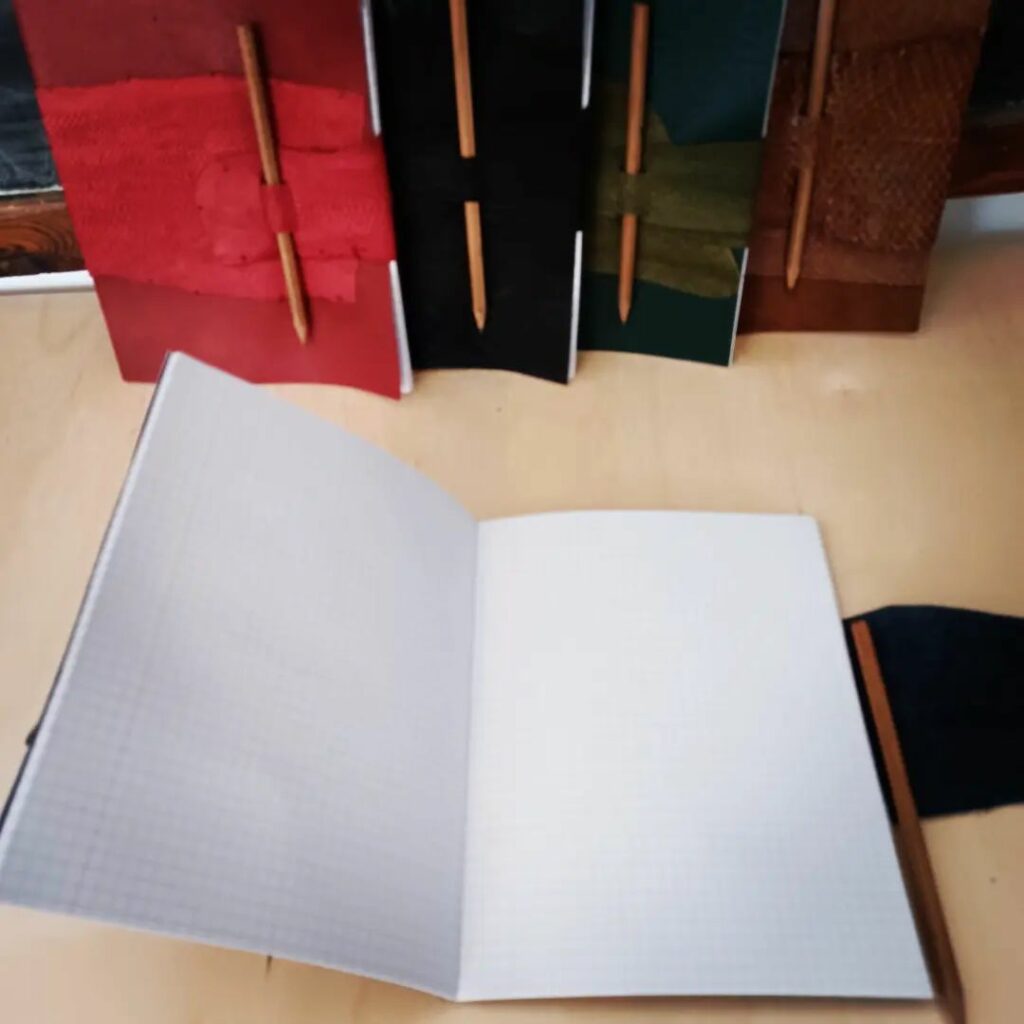


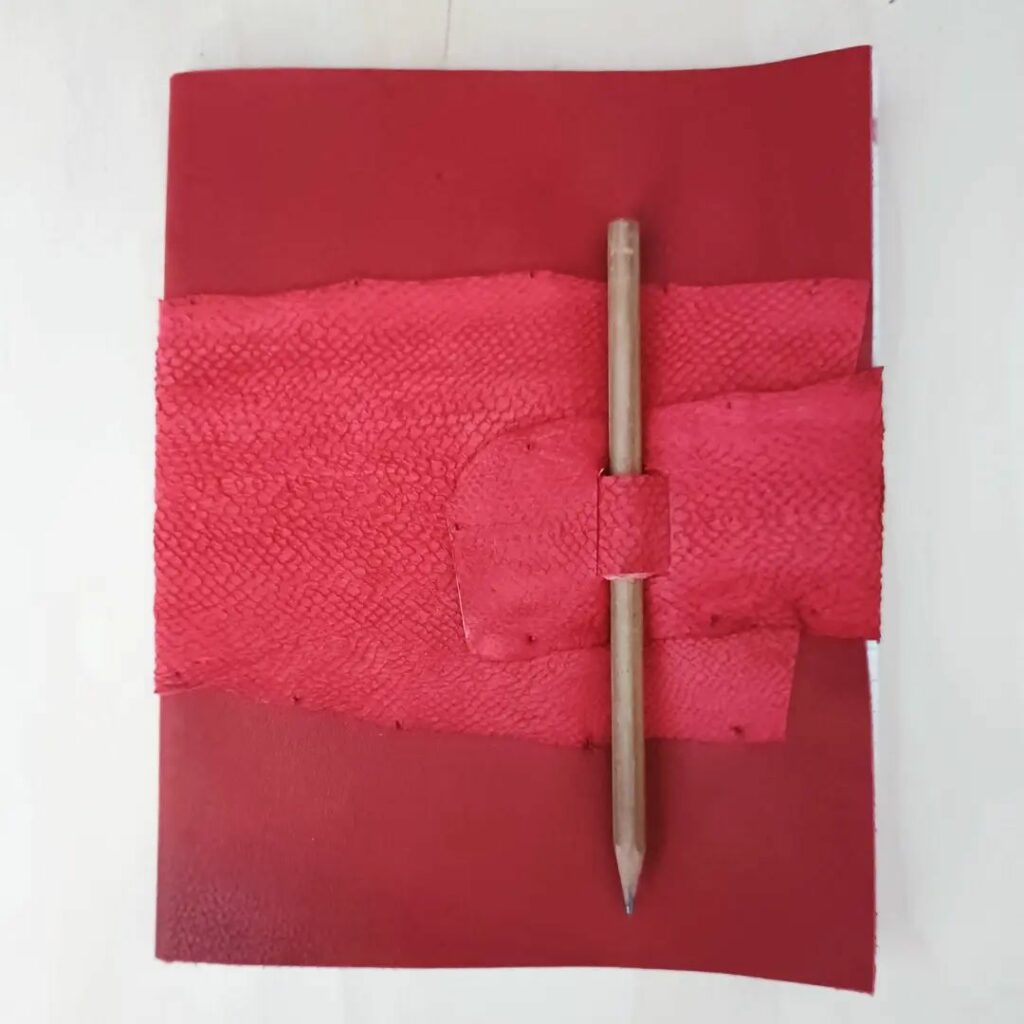
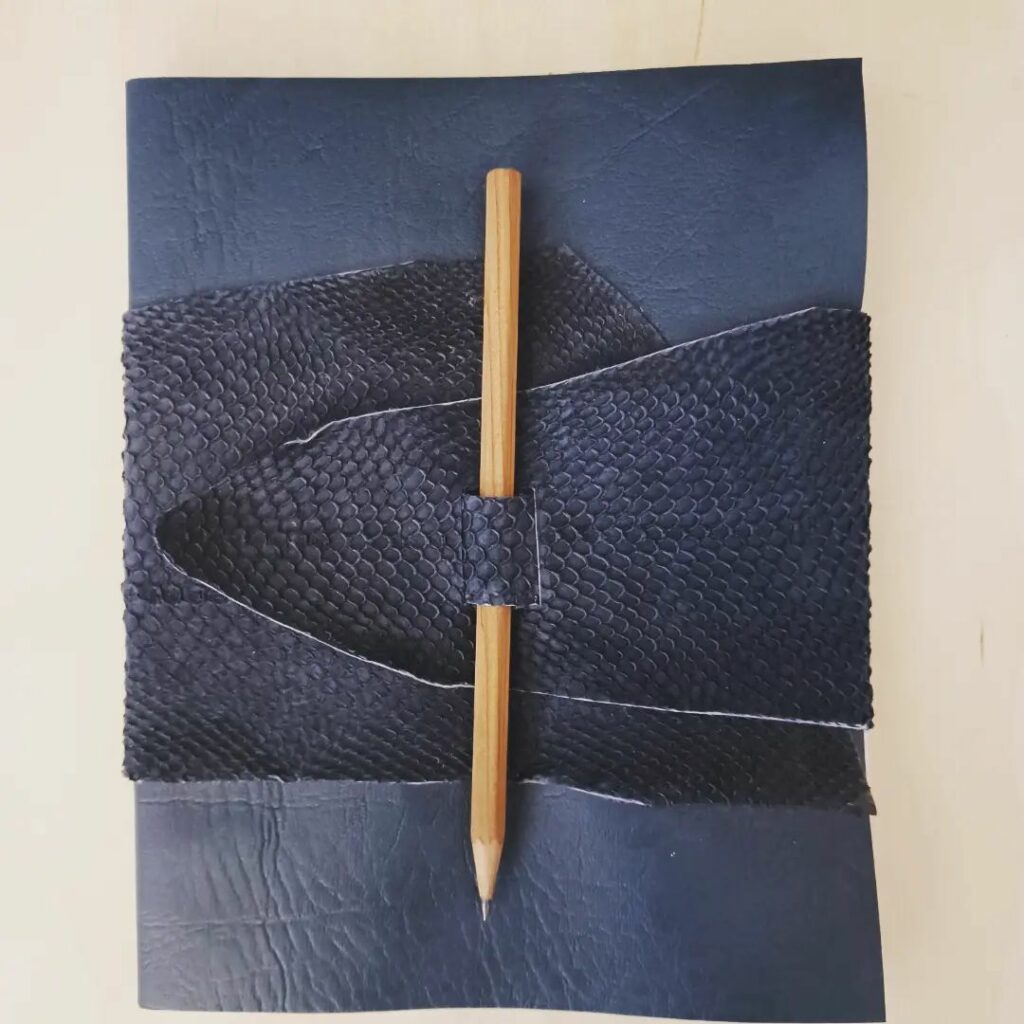

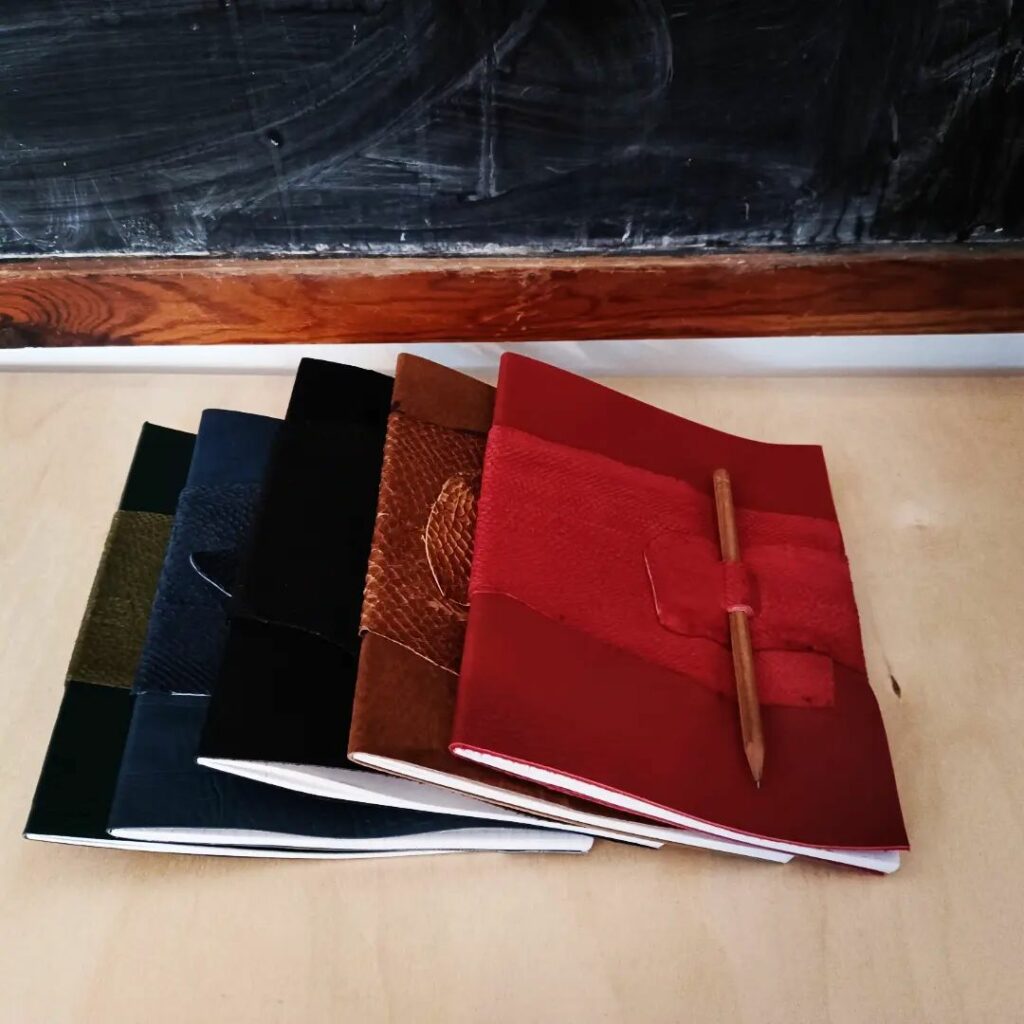

School
These are 5 exercise books (schoolschriften), since you need a different exercise book for every class.
Brown: History
Red: English
Black: Art
Green: Biology
Blue: Math
Three of the books contain lined paper, the other two squared paper.
The covers are decorated with fish skins, which is a nod to schools of fish; it is a school of exercise books for school.
‘Margin’
Dragon scale binding. I created this piece in July 2022 for the monthly Are You Book Enough challenge on Instagram (#areyoubookenough). The title is ‘Margin’ and with this work, I wanted to convey the beauty of left-over material by making this piece from leeftover off-cuts, and I wanted to showcase the impressive dragon scale book binding technique.
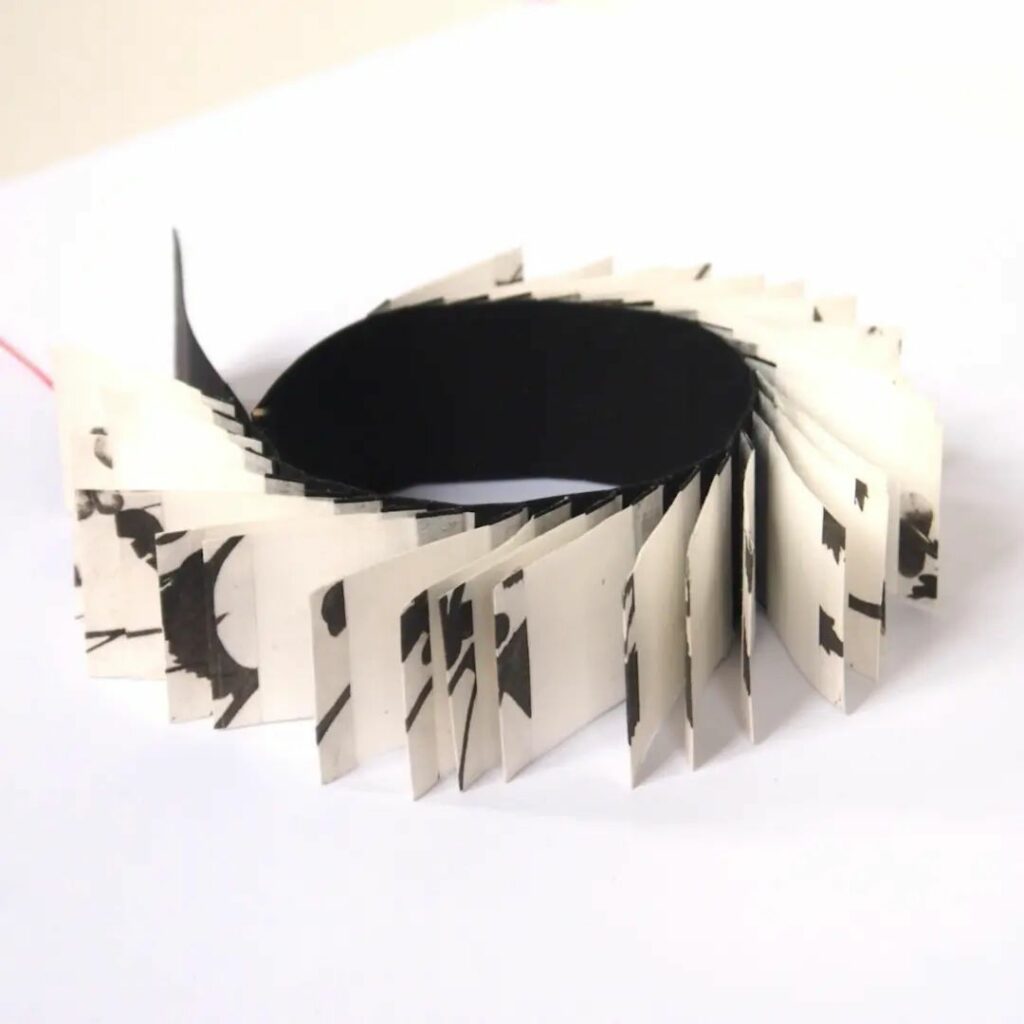

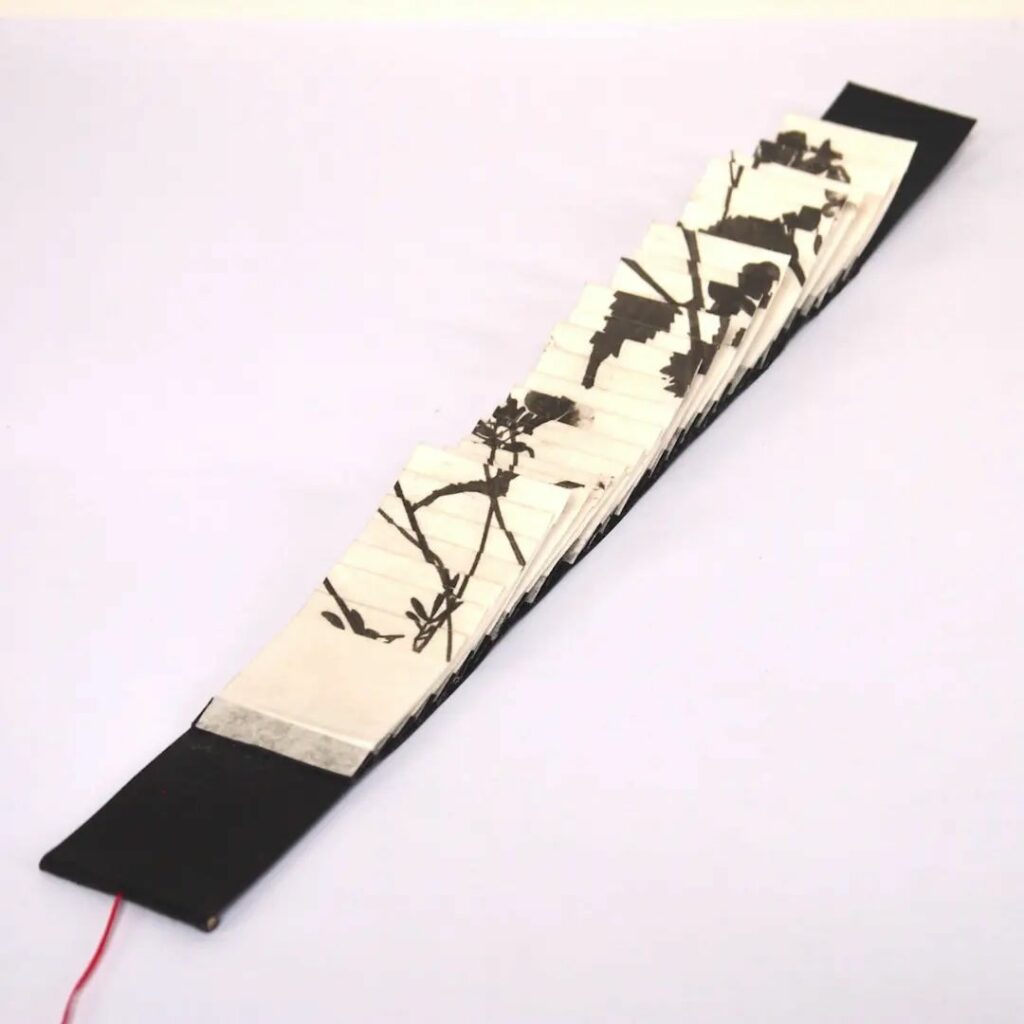


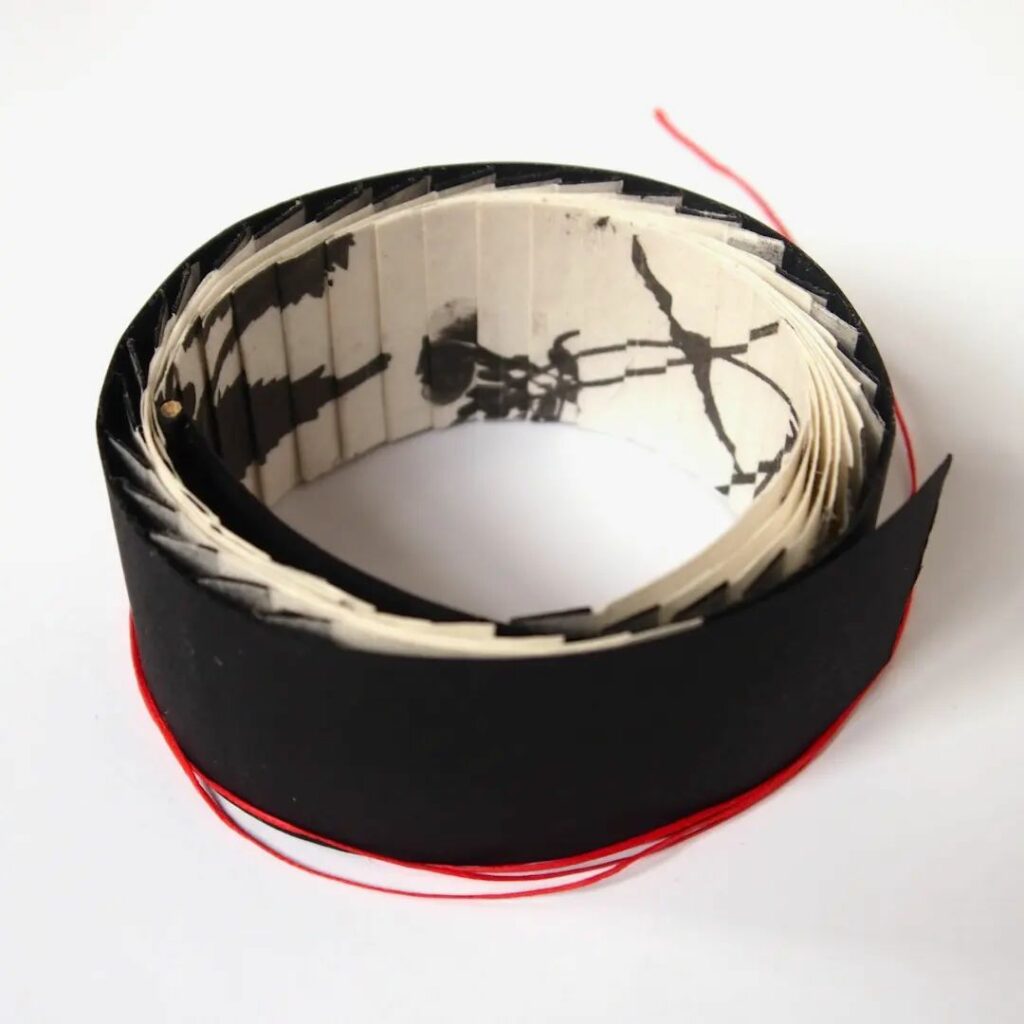
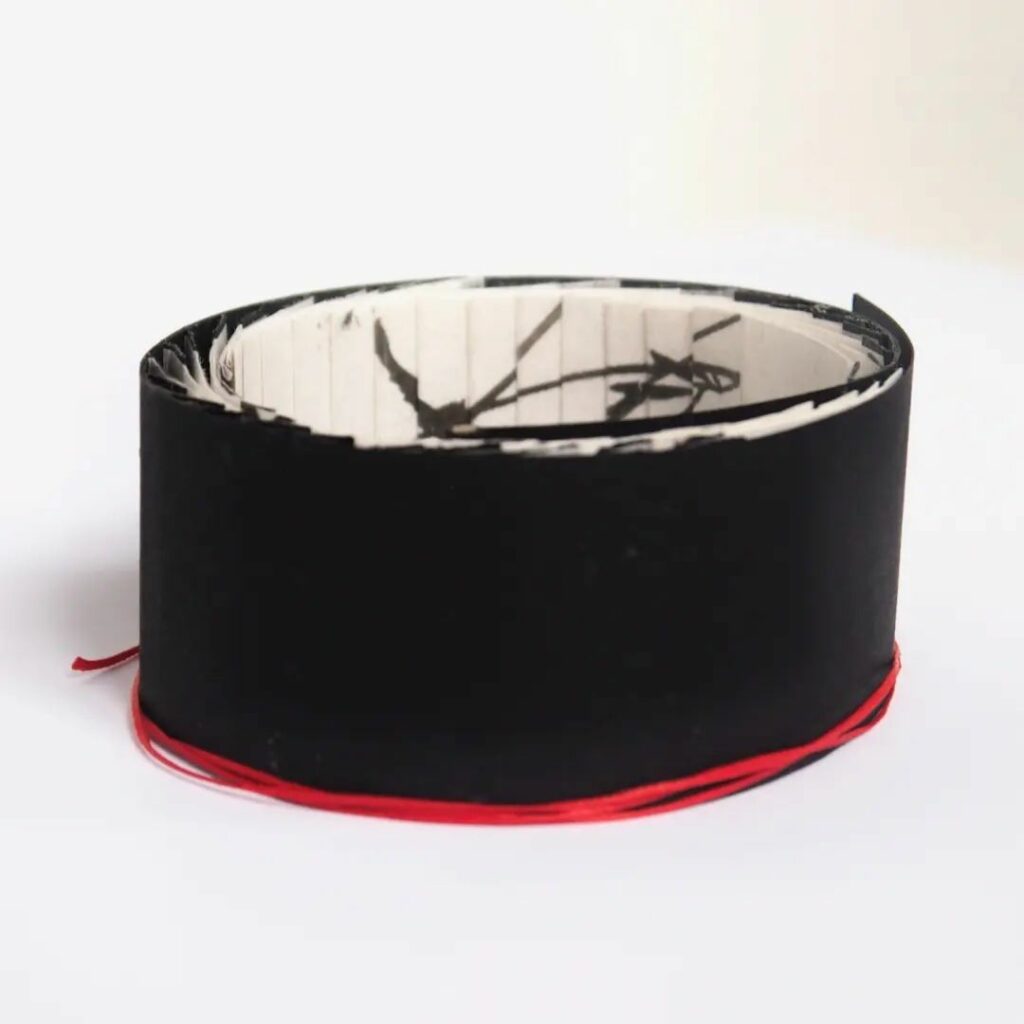
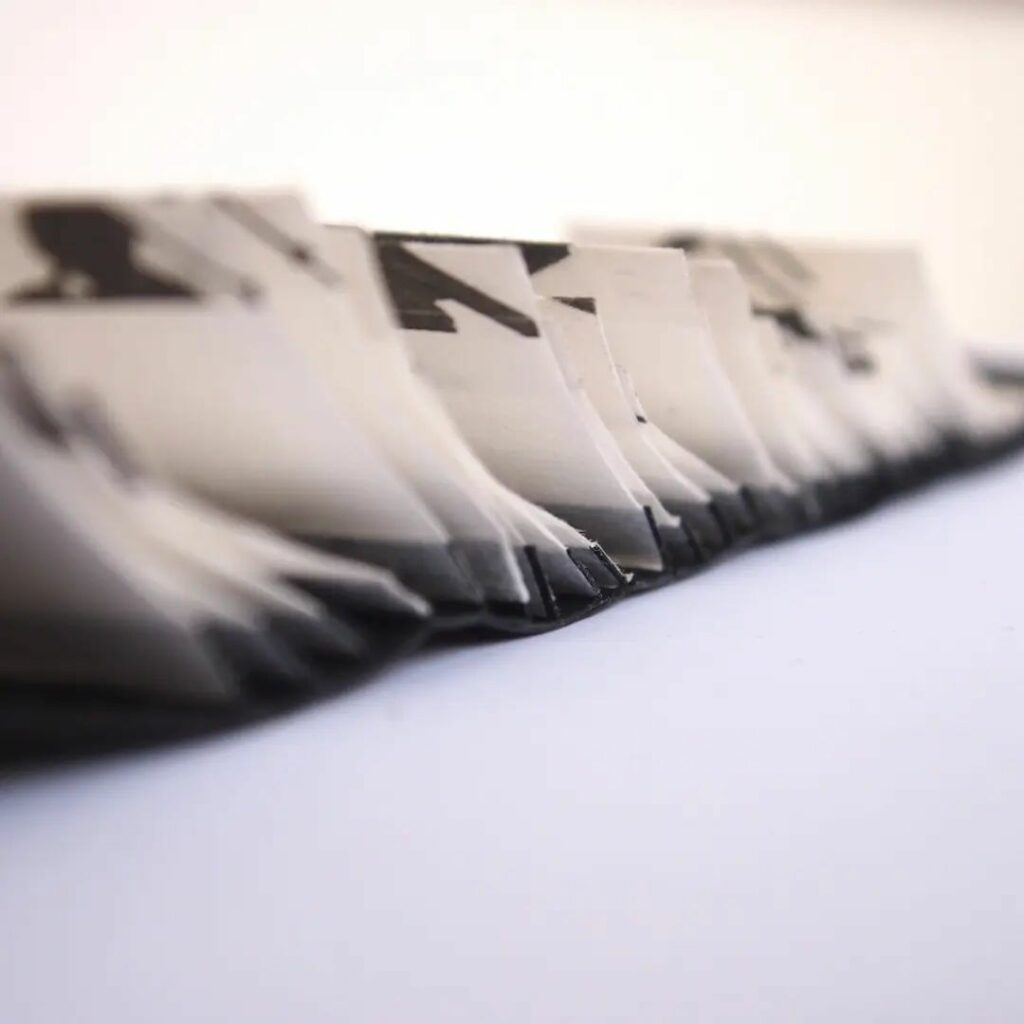
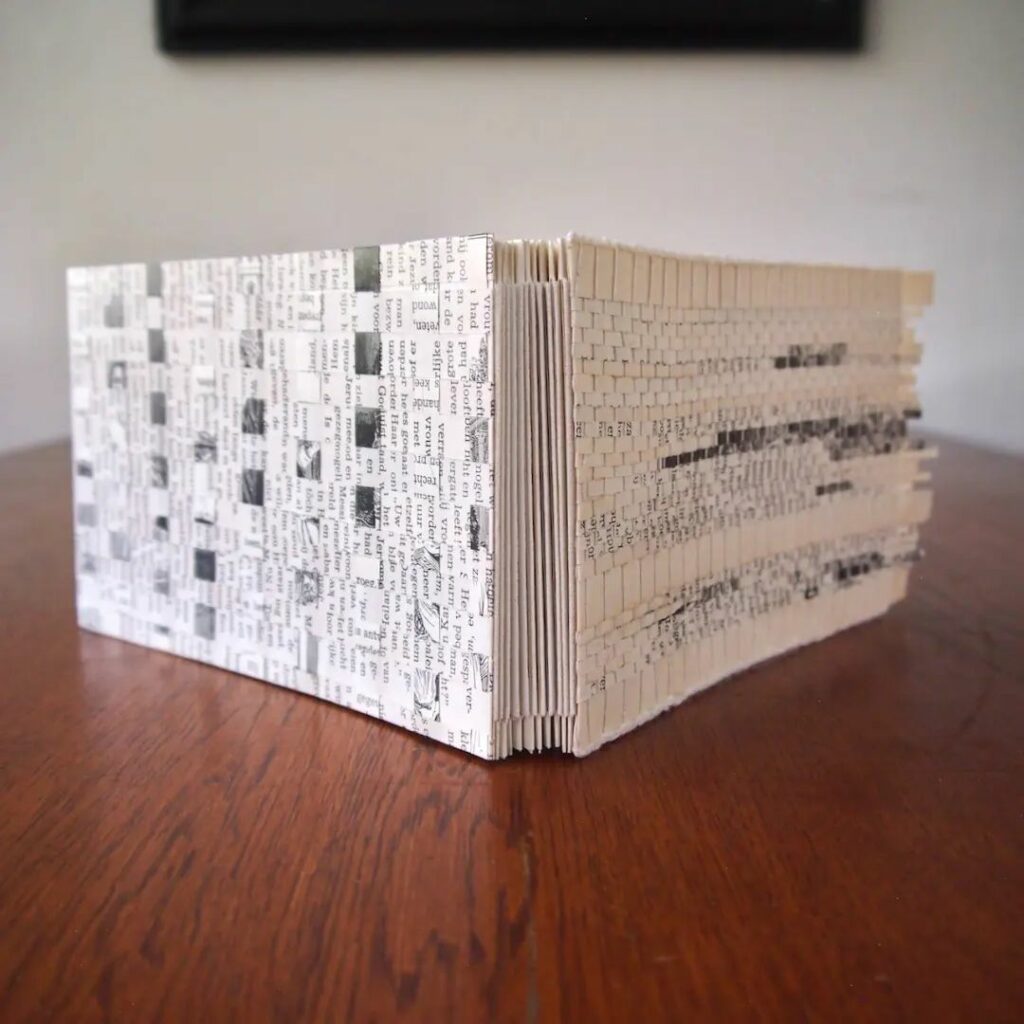
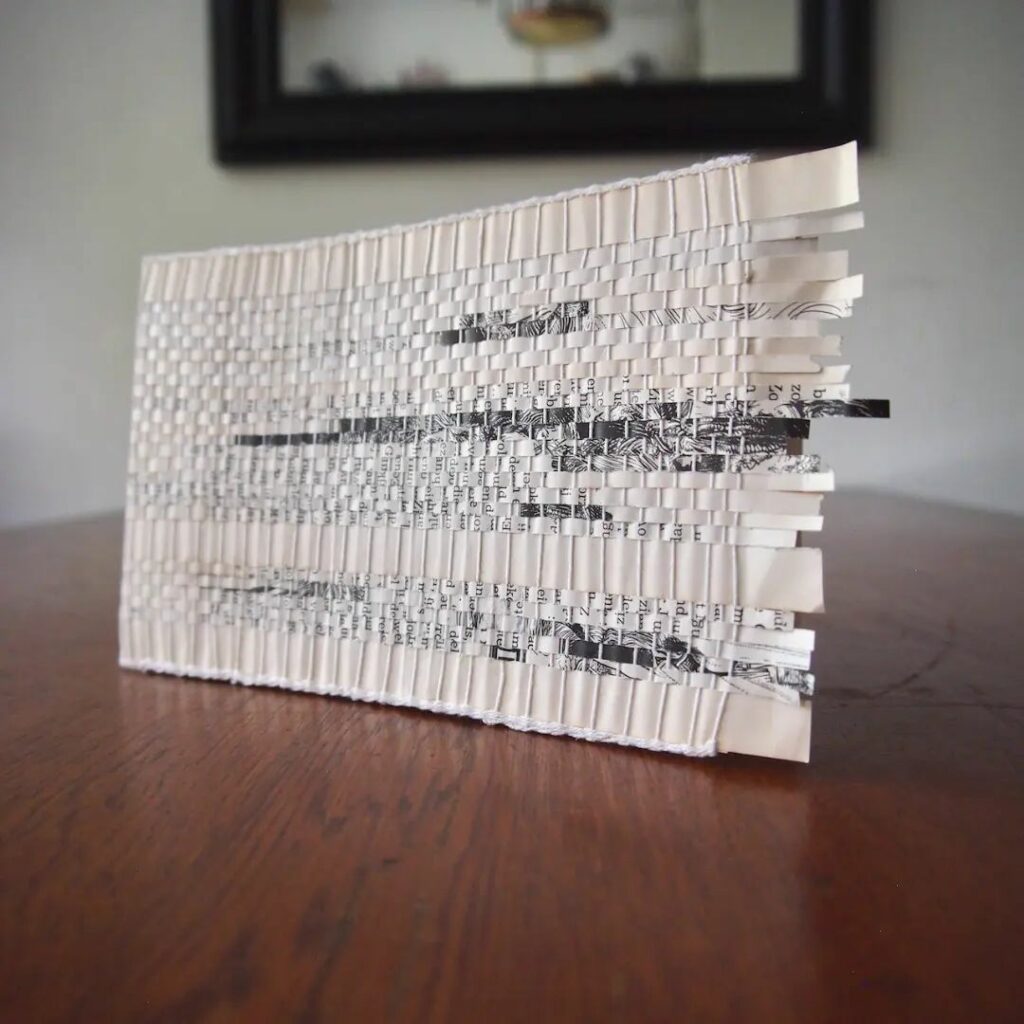


Weave 2
Using the flat-style Australian reverse piano hinge binding (a.k.a. slot strip book), this book has covers woven from paper strips cut from a damaged and discarded book.
Weave 1
Using the flat-style Australian reverse piano hinge binding (a.k.a. slot strip book), this book has covers woven from coffeepad paper on the front and woven teabags on the back.

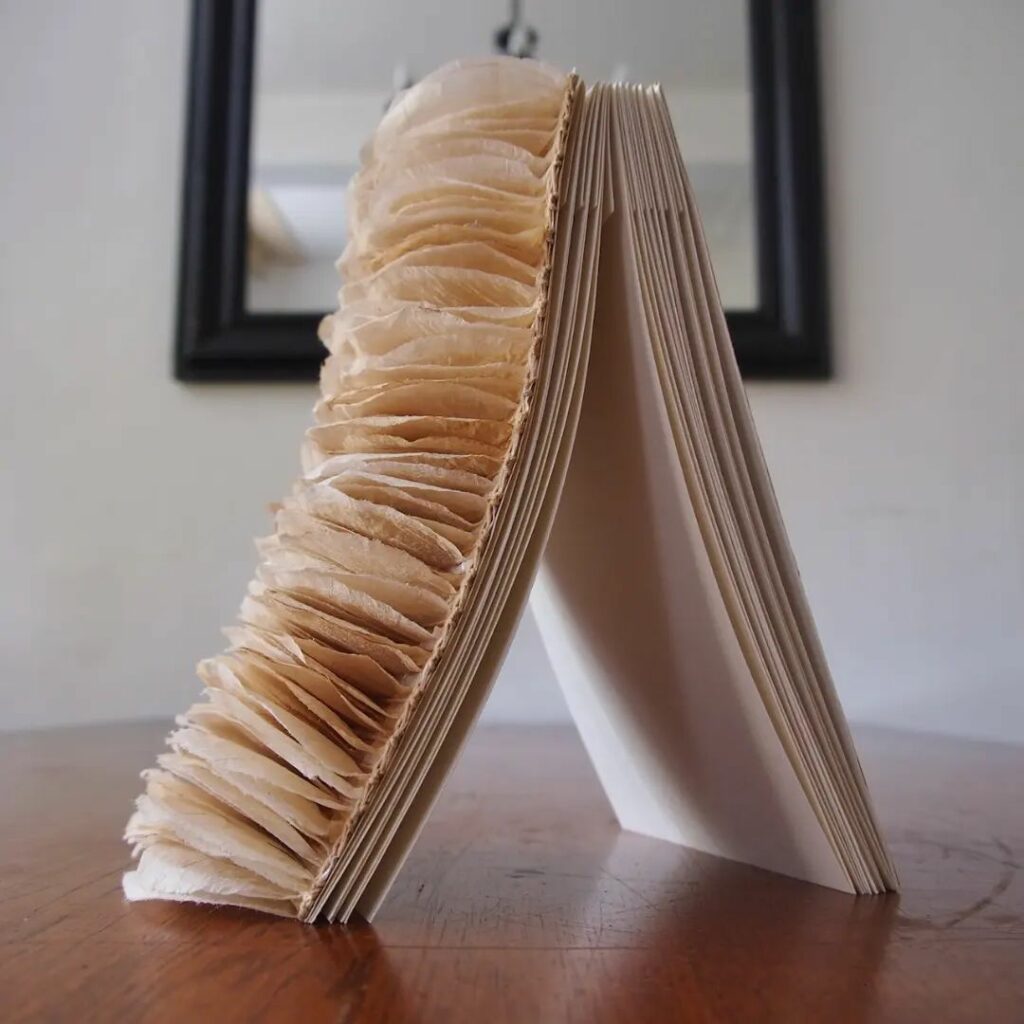

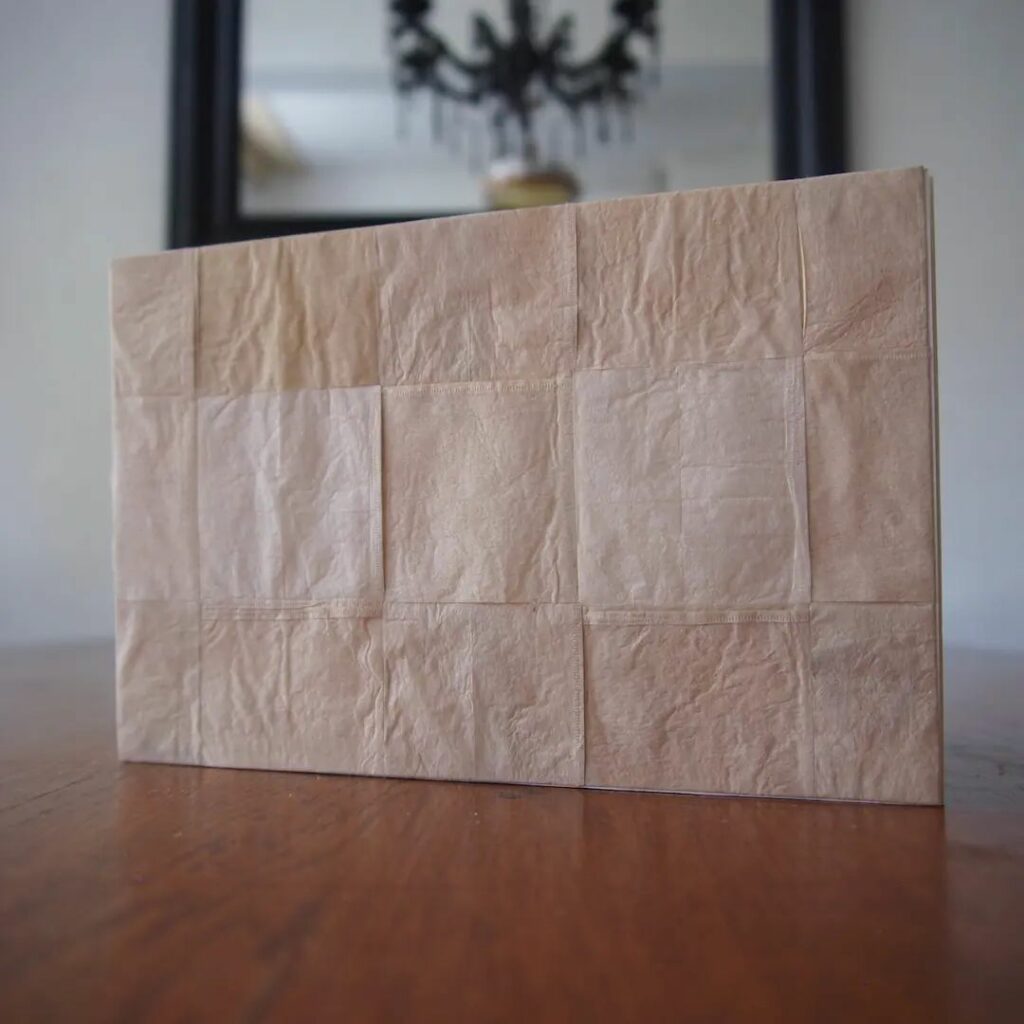


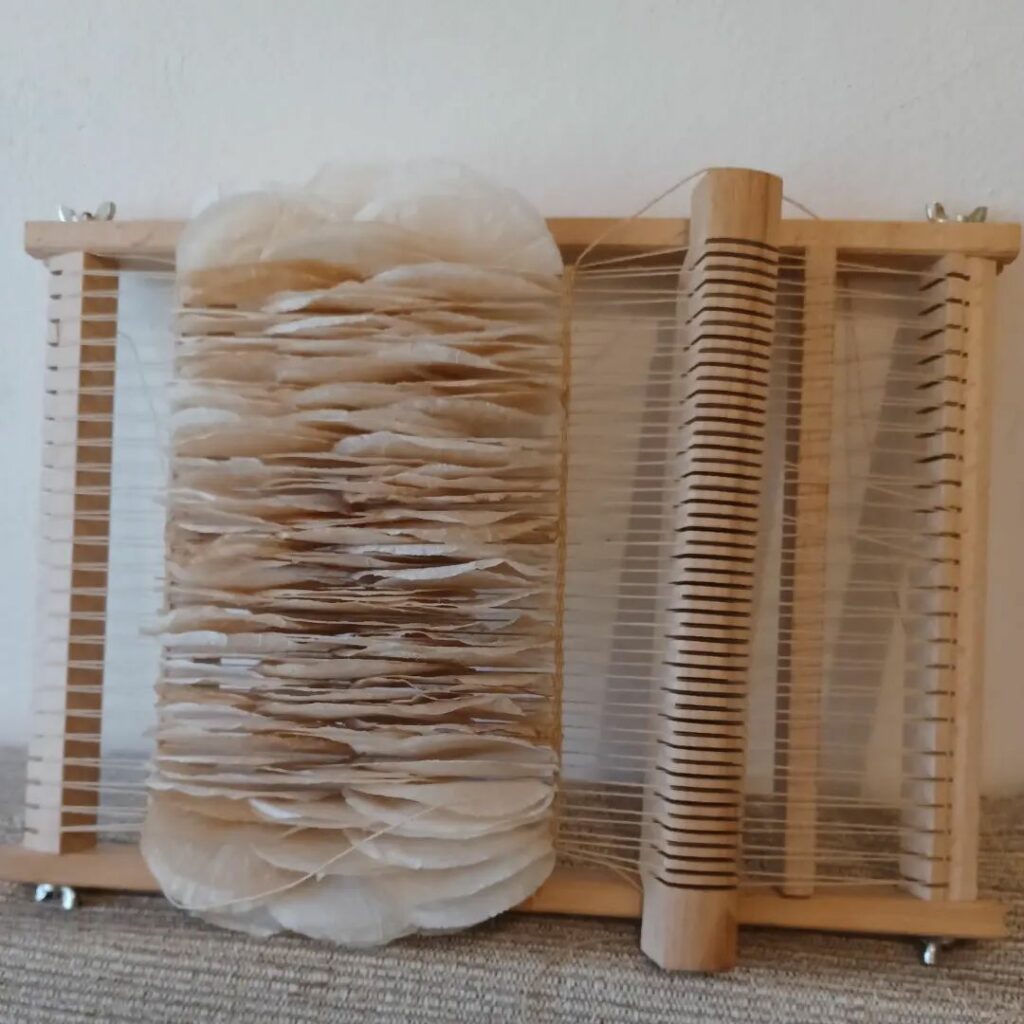


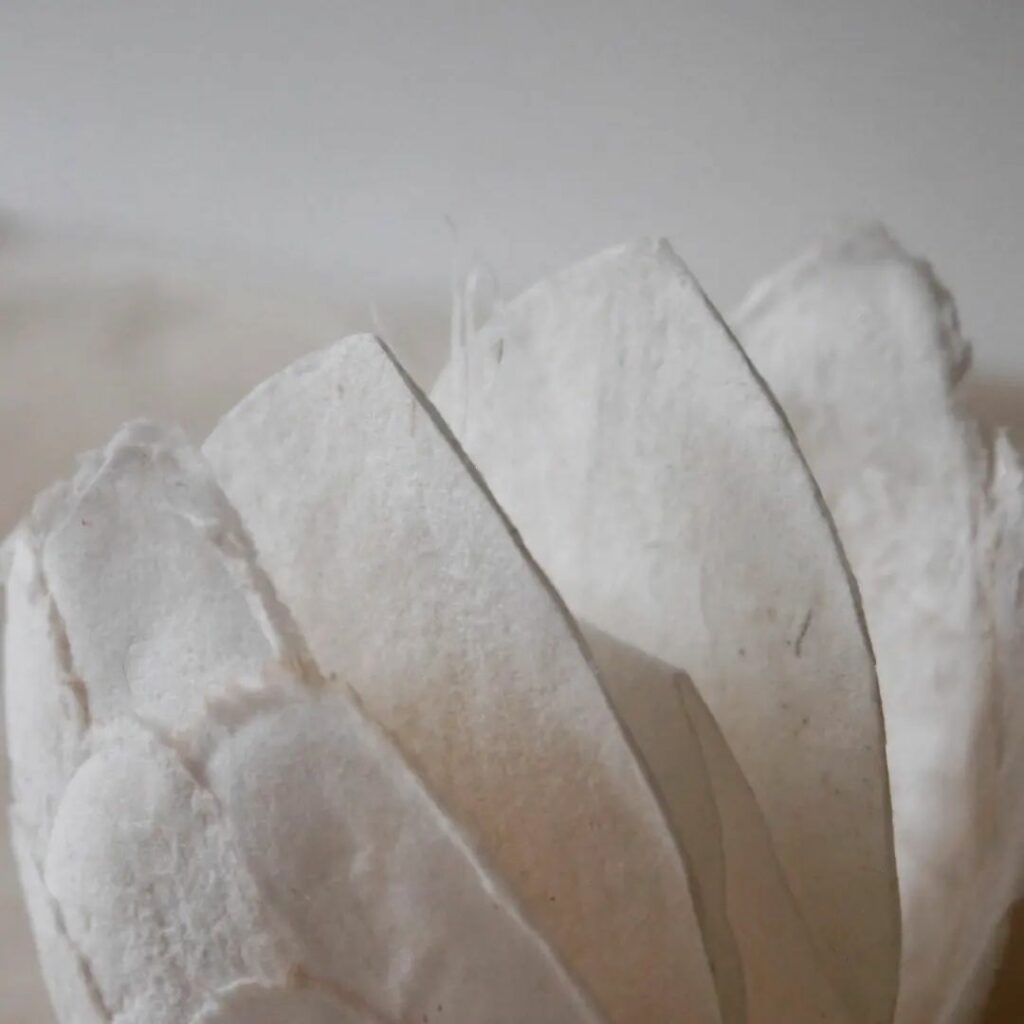
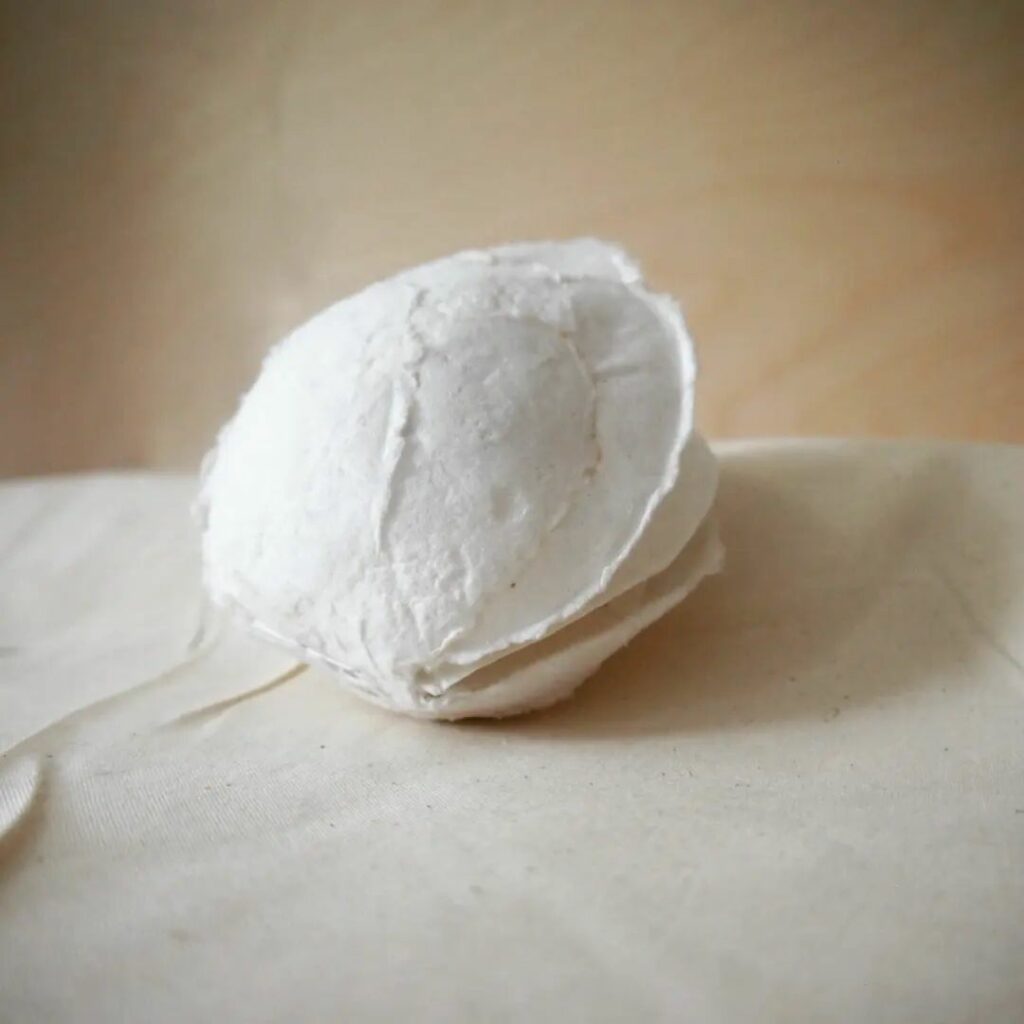
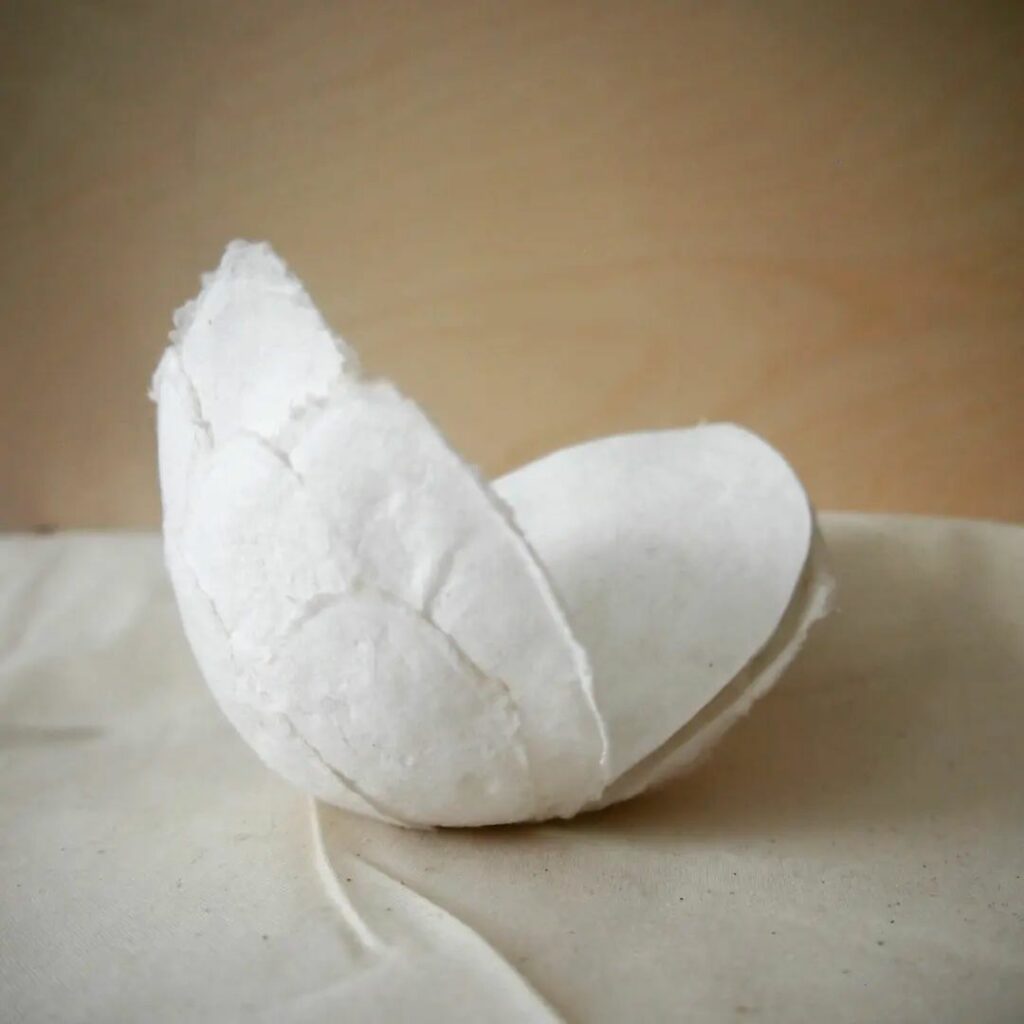
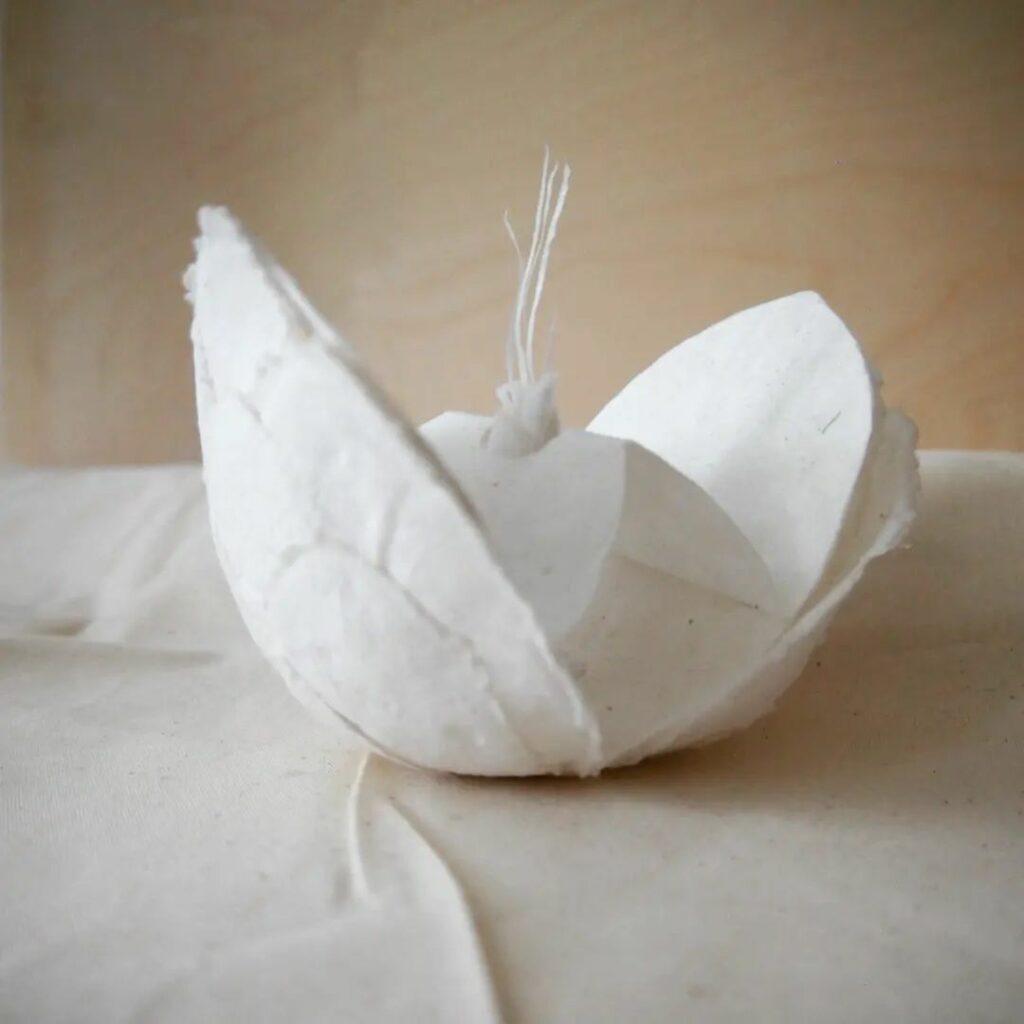
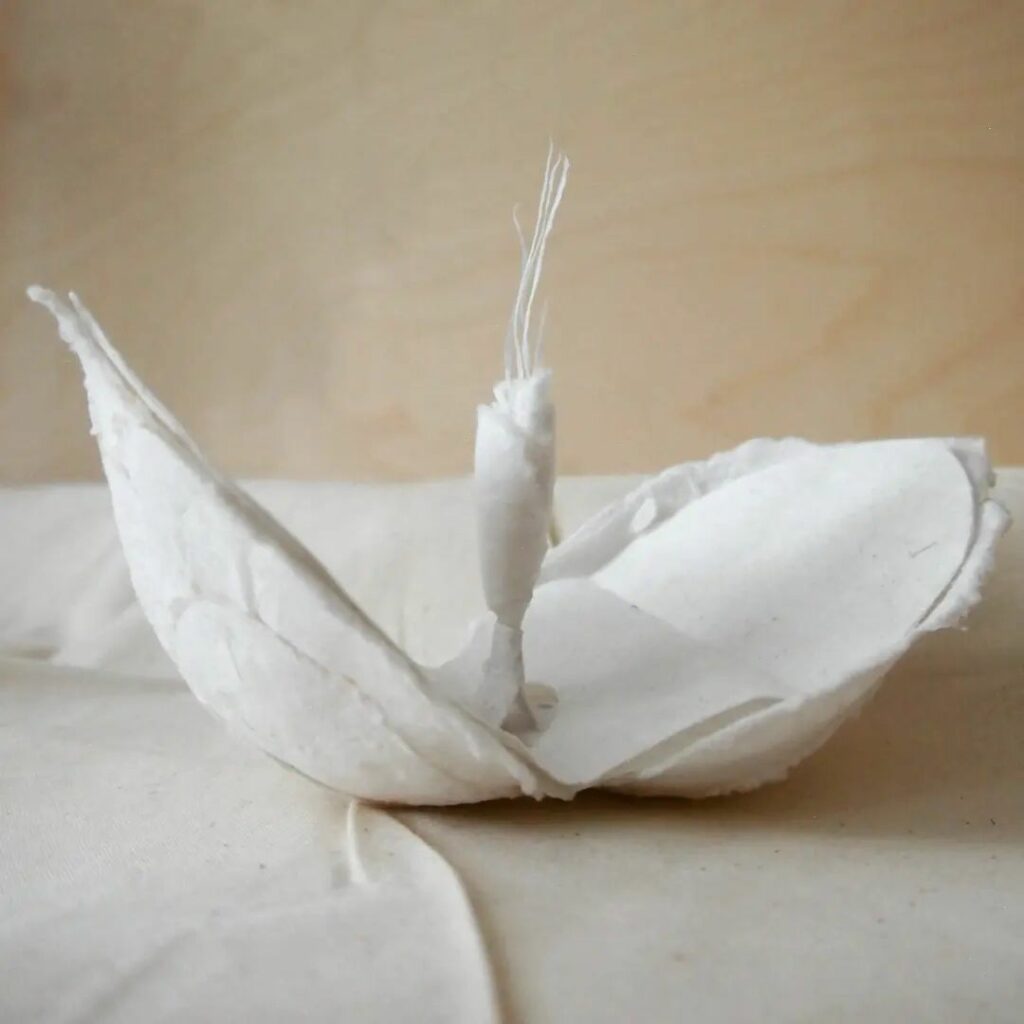

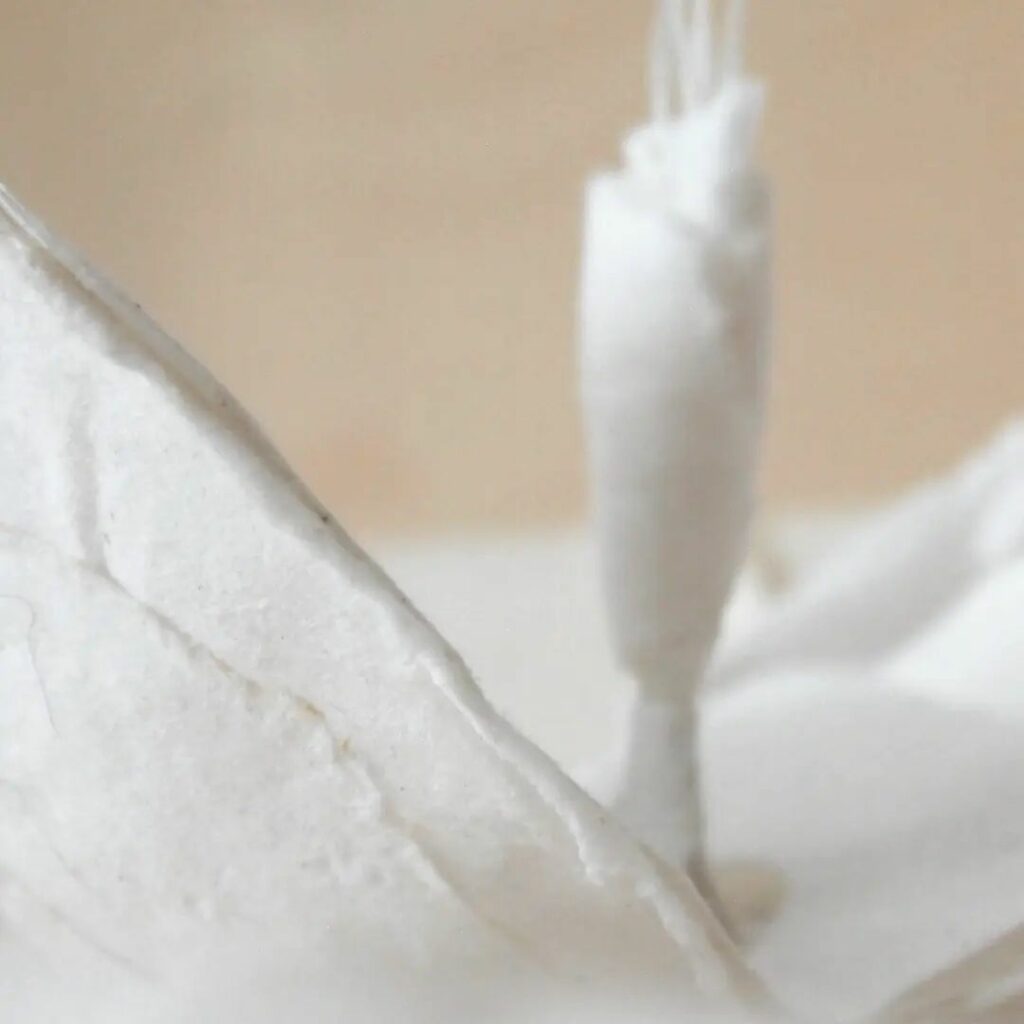
Sprout
This is a prout pop-up book made from hand-made paper made with abaca fibers.
‘Rhythm and Rhyme’
This book is a visual representation of the rhythm in a poem I wrote during my English Language and Culture studies. The peaks represent the rhythm created by the stress patterns. The shorter peaks are the unstressed syllables, the longer ones represent the stressed syllables. This is the poem (Triolet):
The break of dawn by Ingrid Fischer
In our dreams we conquer the world
Until we wake, and fall back to earth
Defeat every foe with bravery unheard,
In our dreams we conquer the world
But nightly heroics tone down to absurd
Alas, break of dawn reveals our worth
In our dreams we conquer the world
Until we wake — fall back to earth
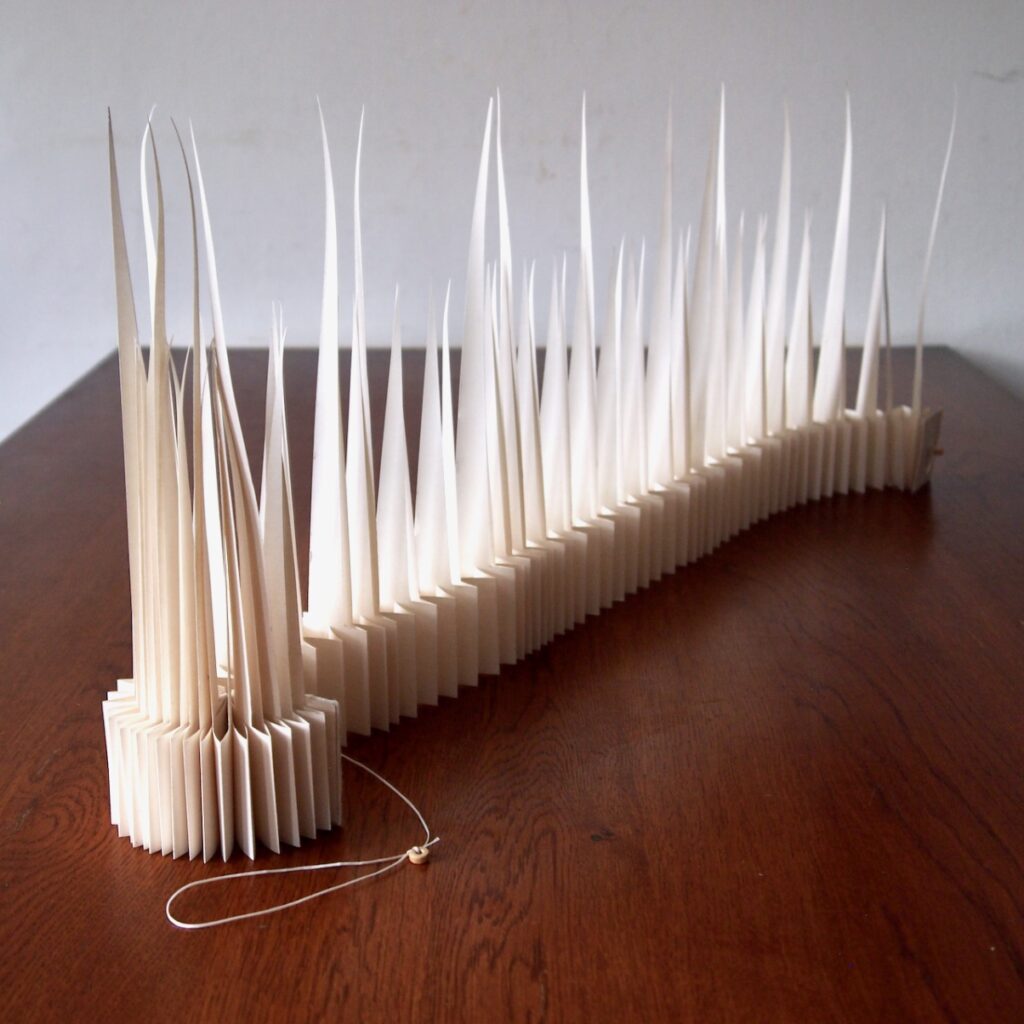
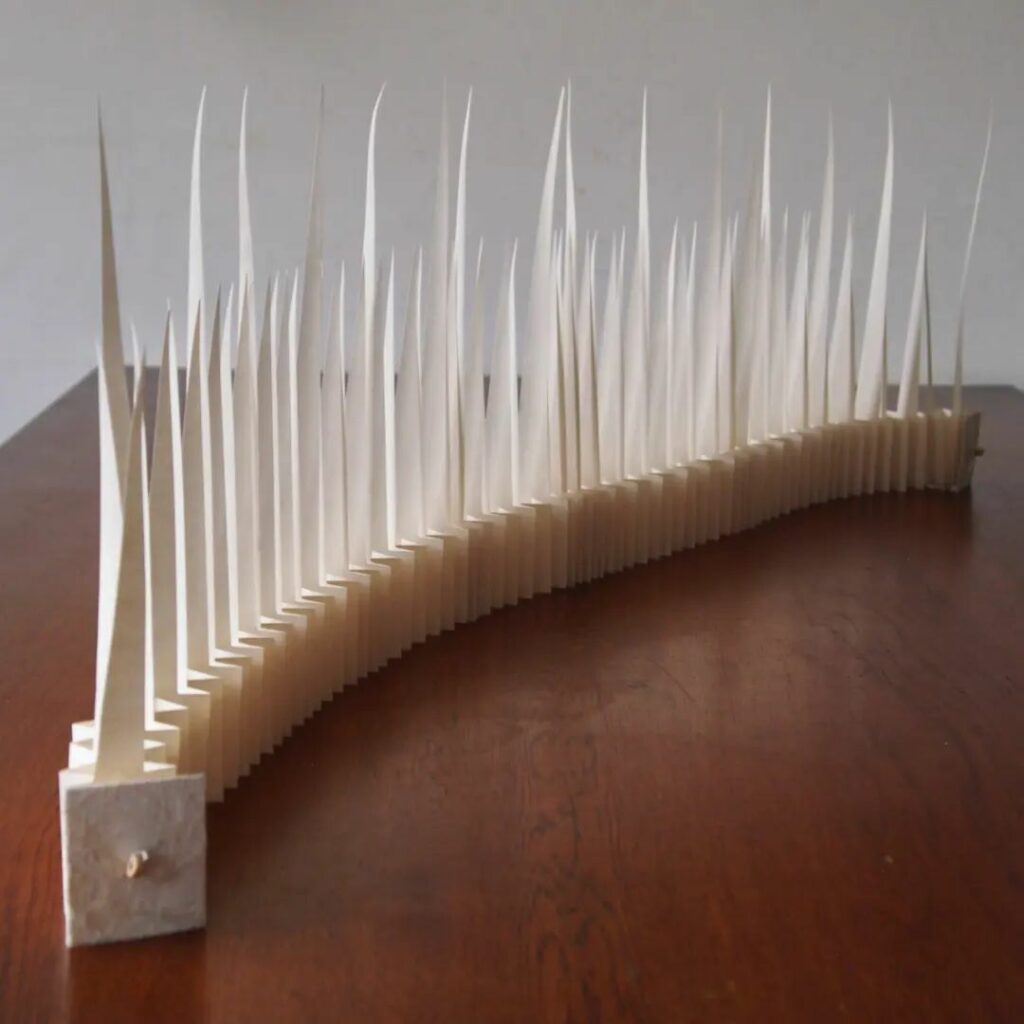
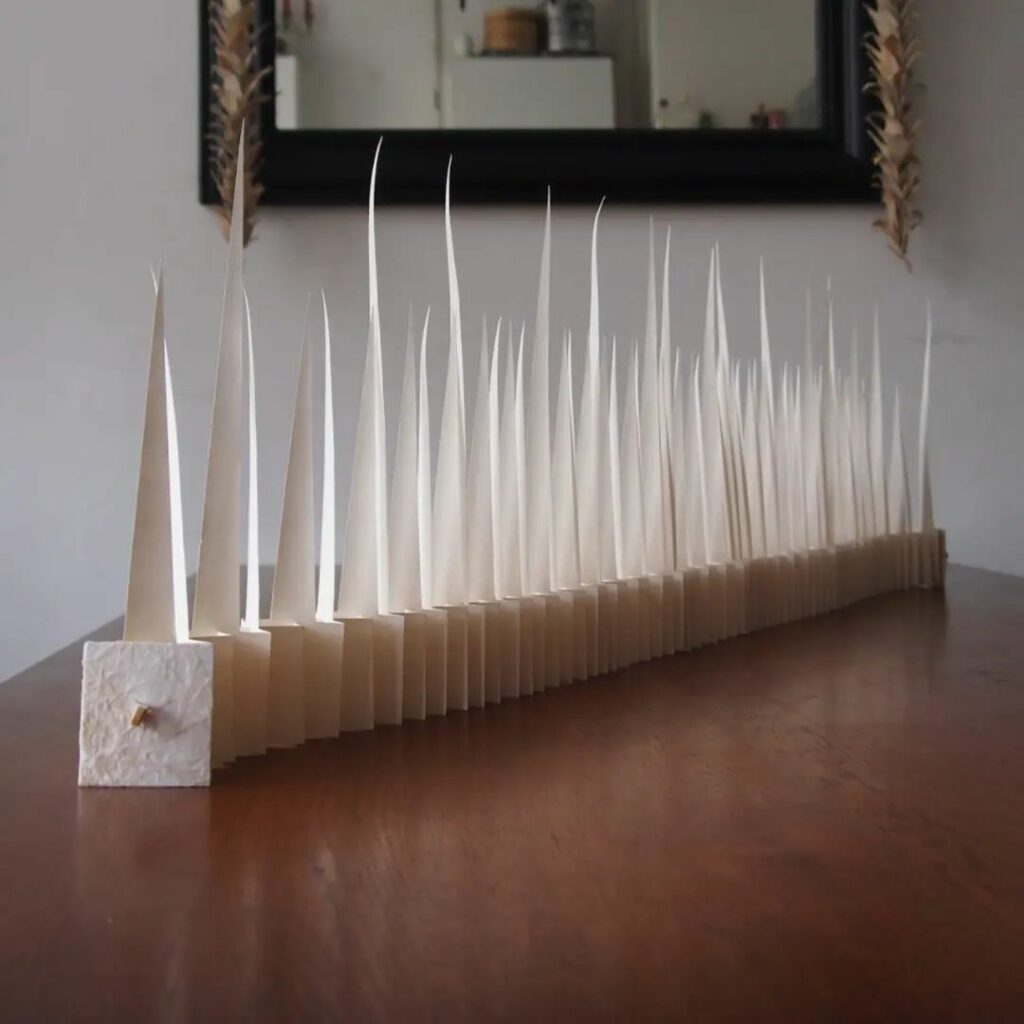
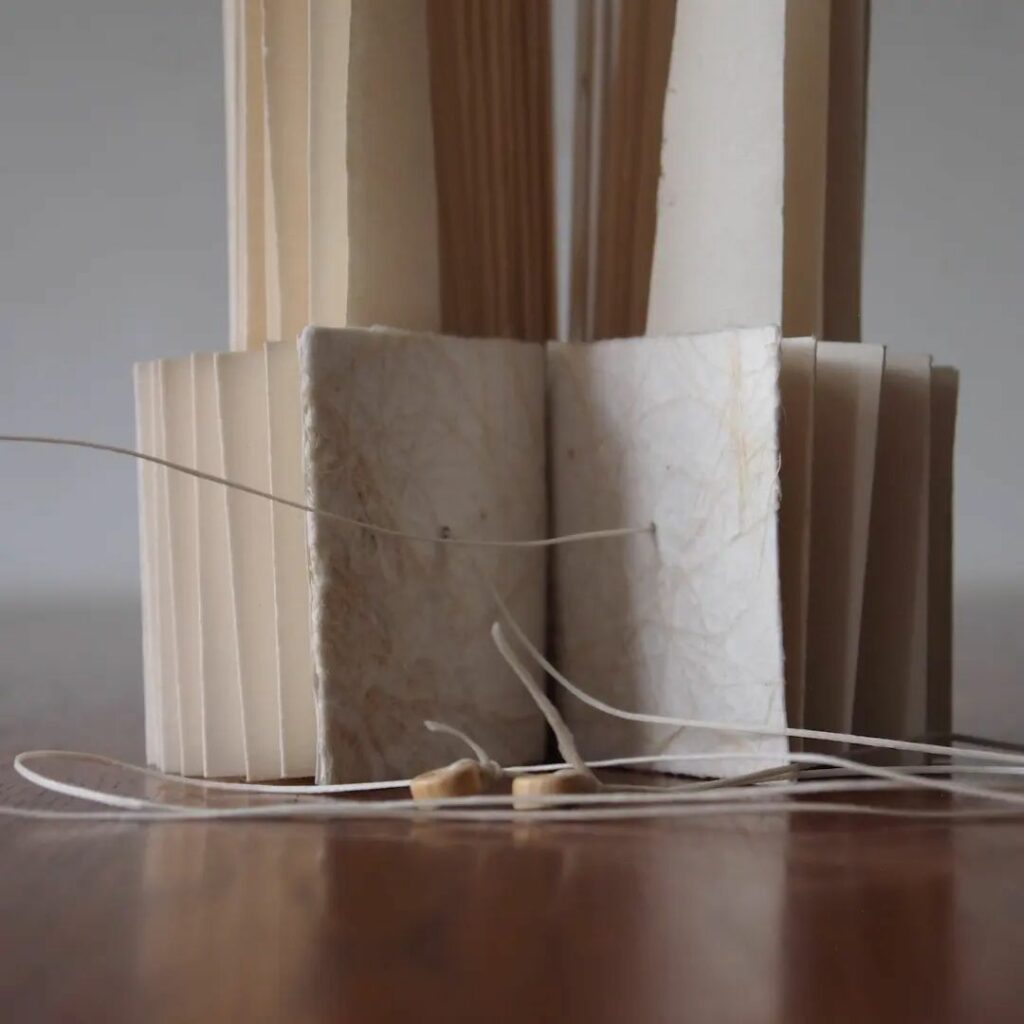
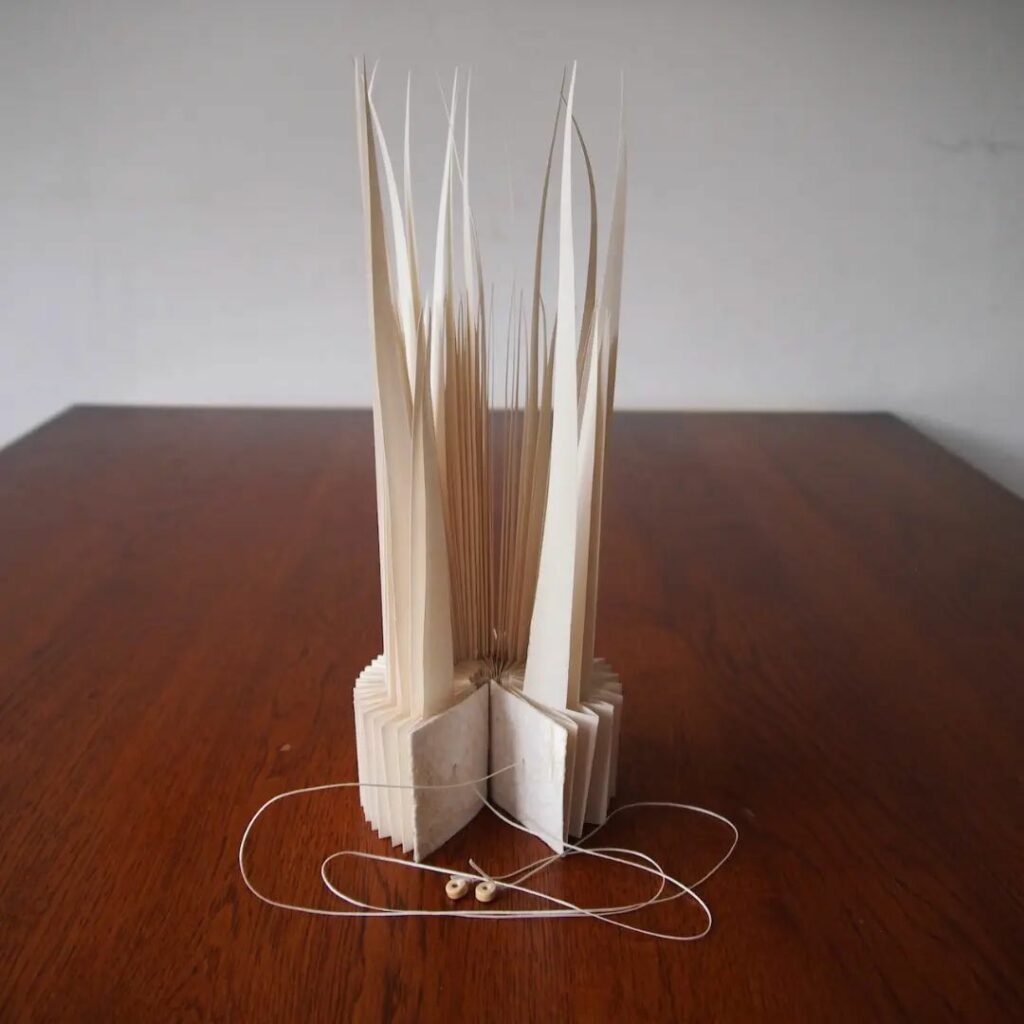




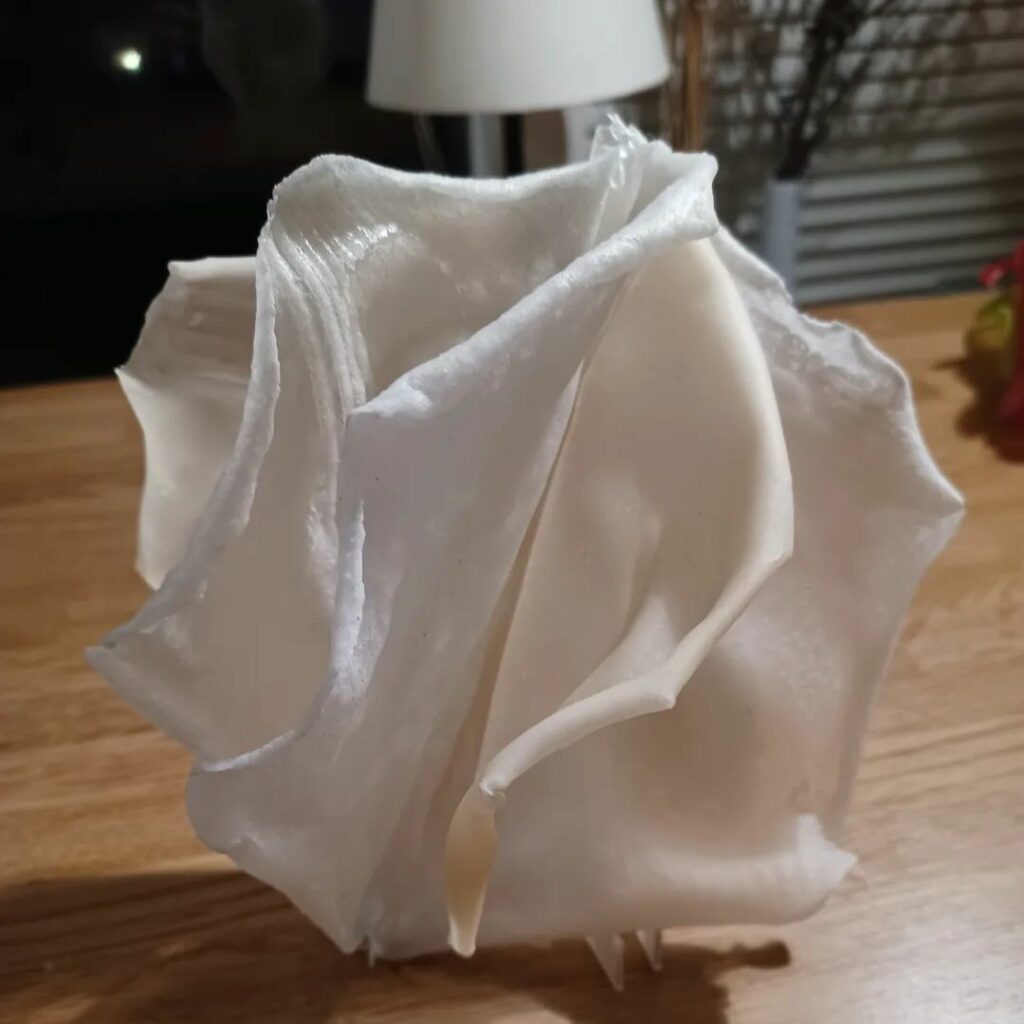
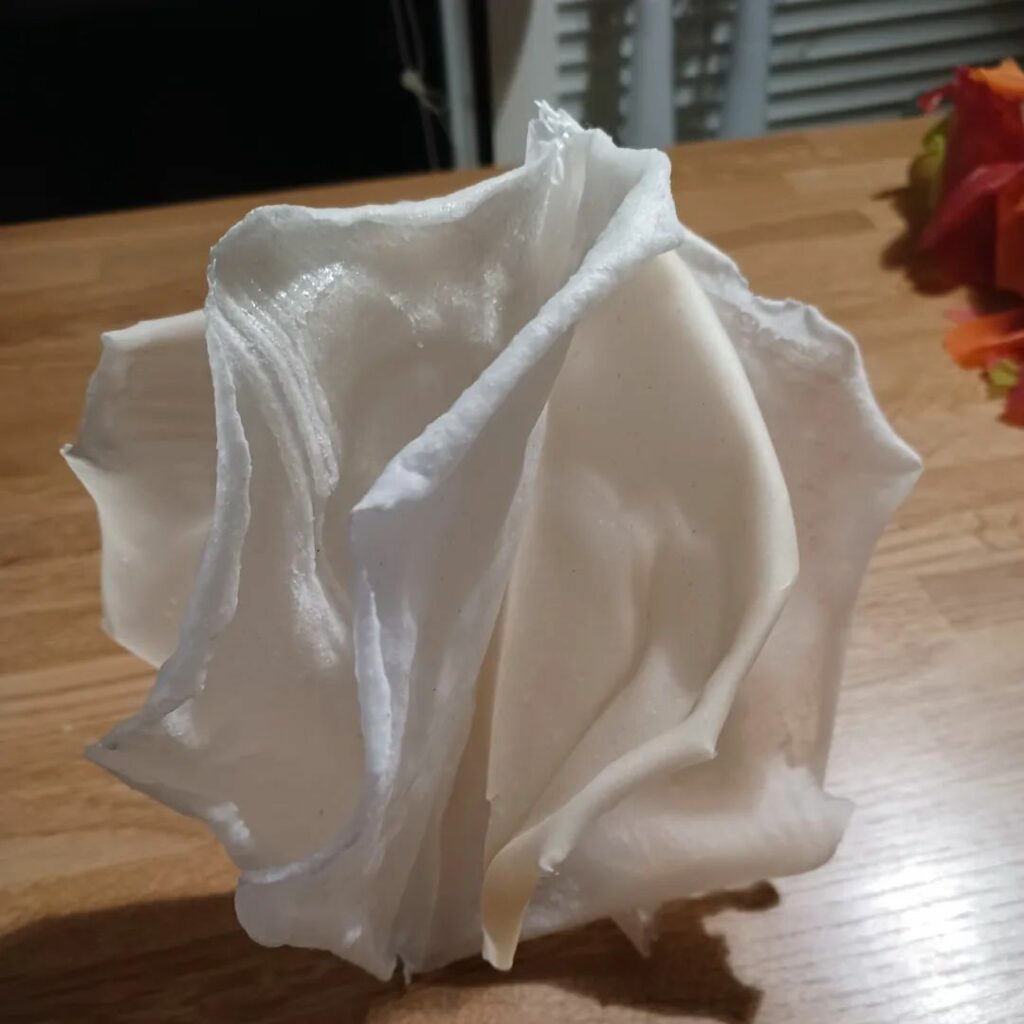
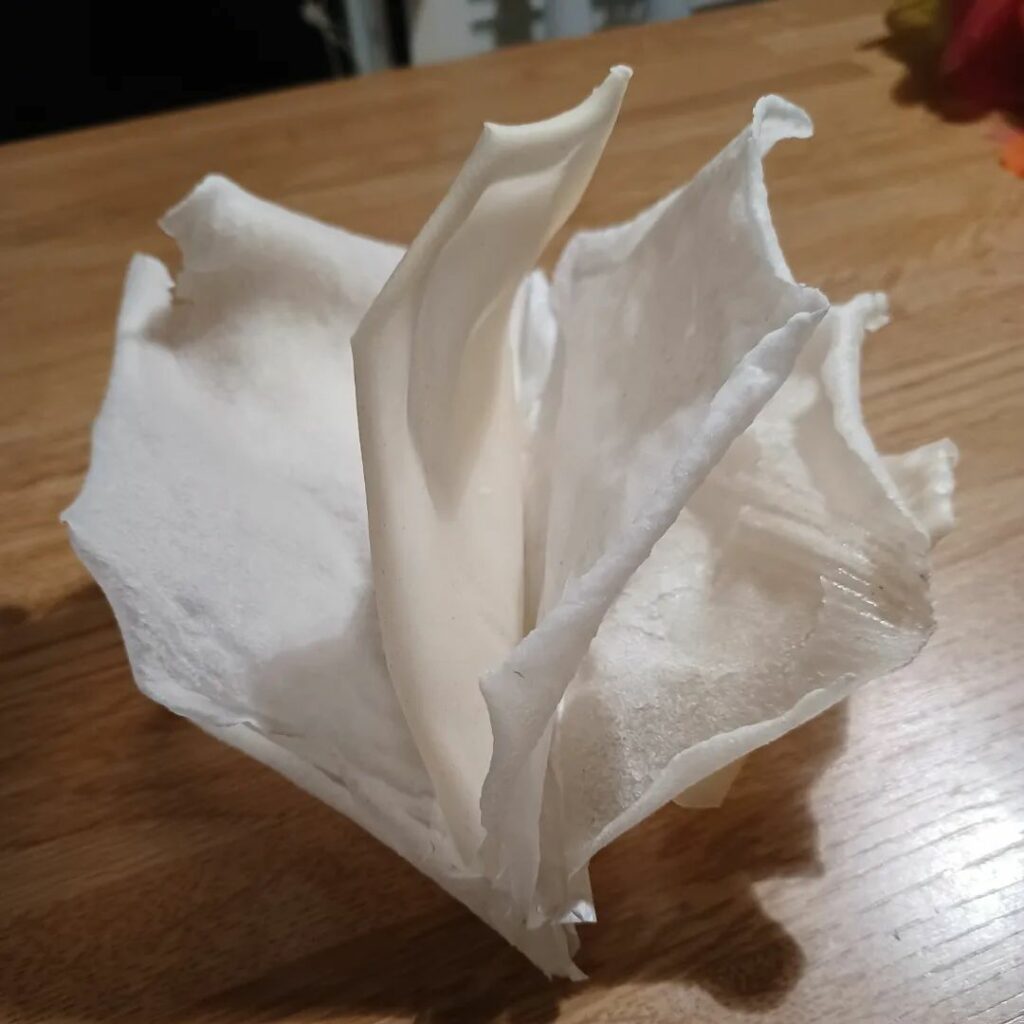
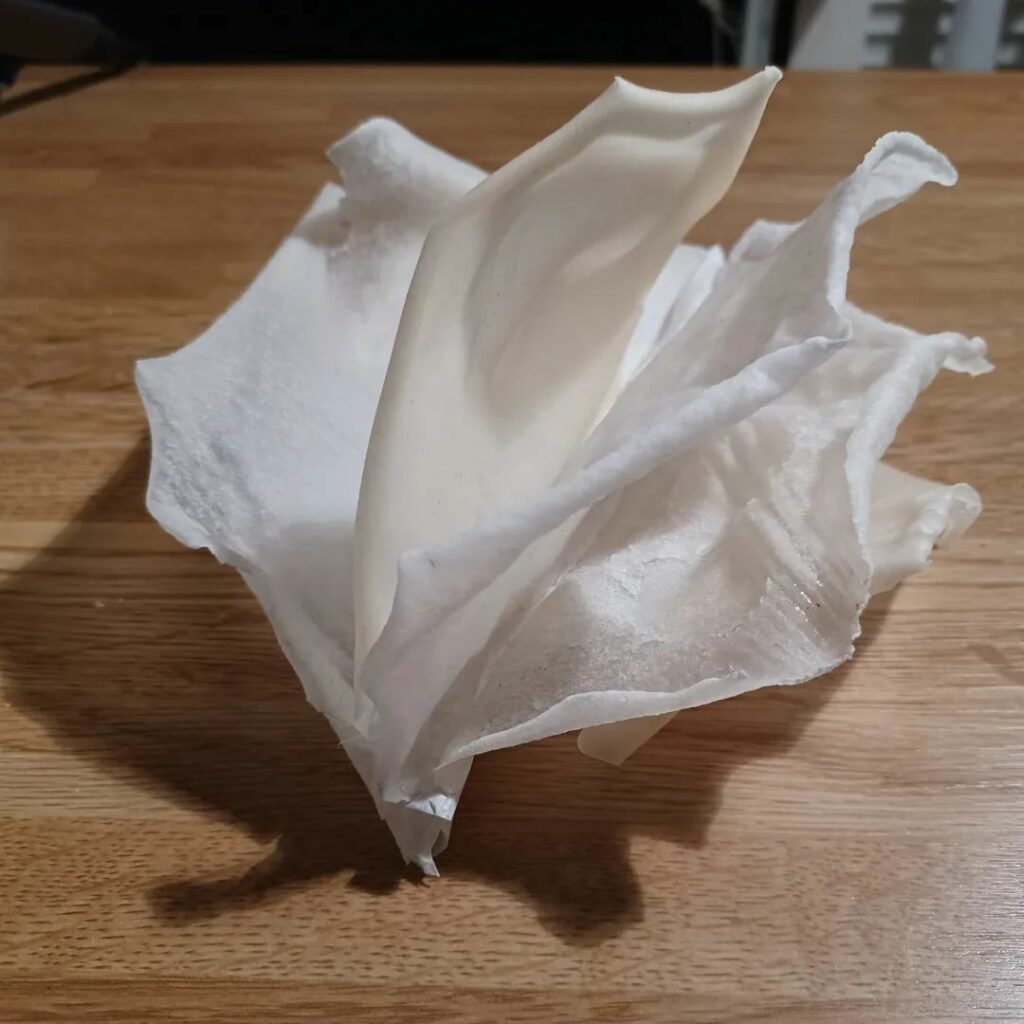


Food 2
Book made from edible paper. The pages were made by combining flour and starch and water and then microwaving on cling foil.
Food 1
These little books are made from edible handmade papers. The orange/red one is made from red pepper and carrots, the green/light brown one is made from zucchini and egglplant.


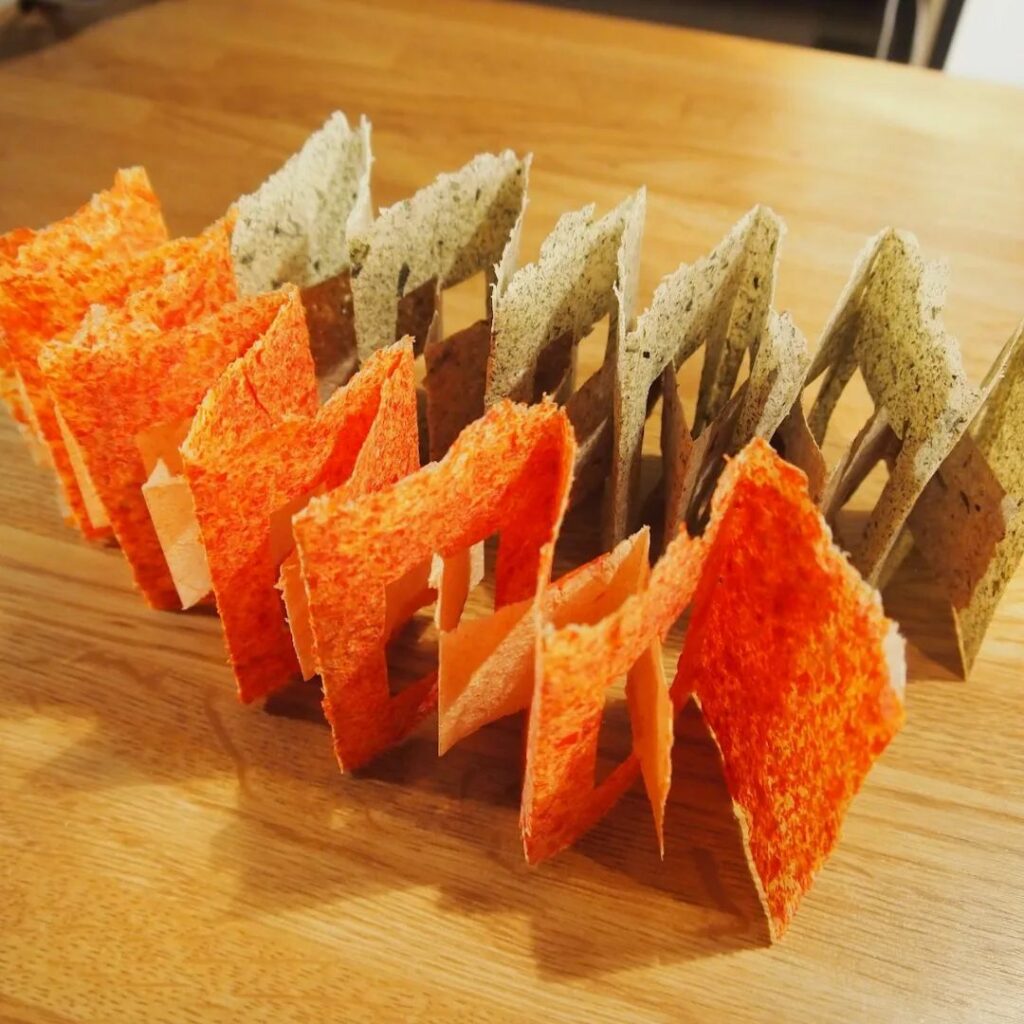




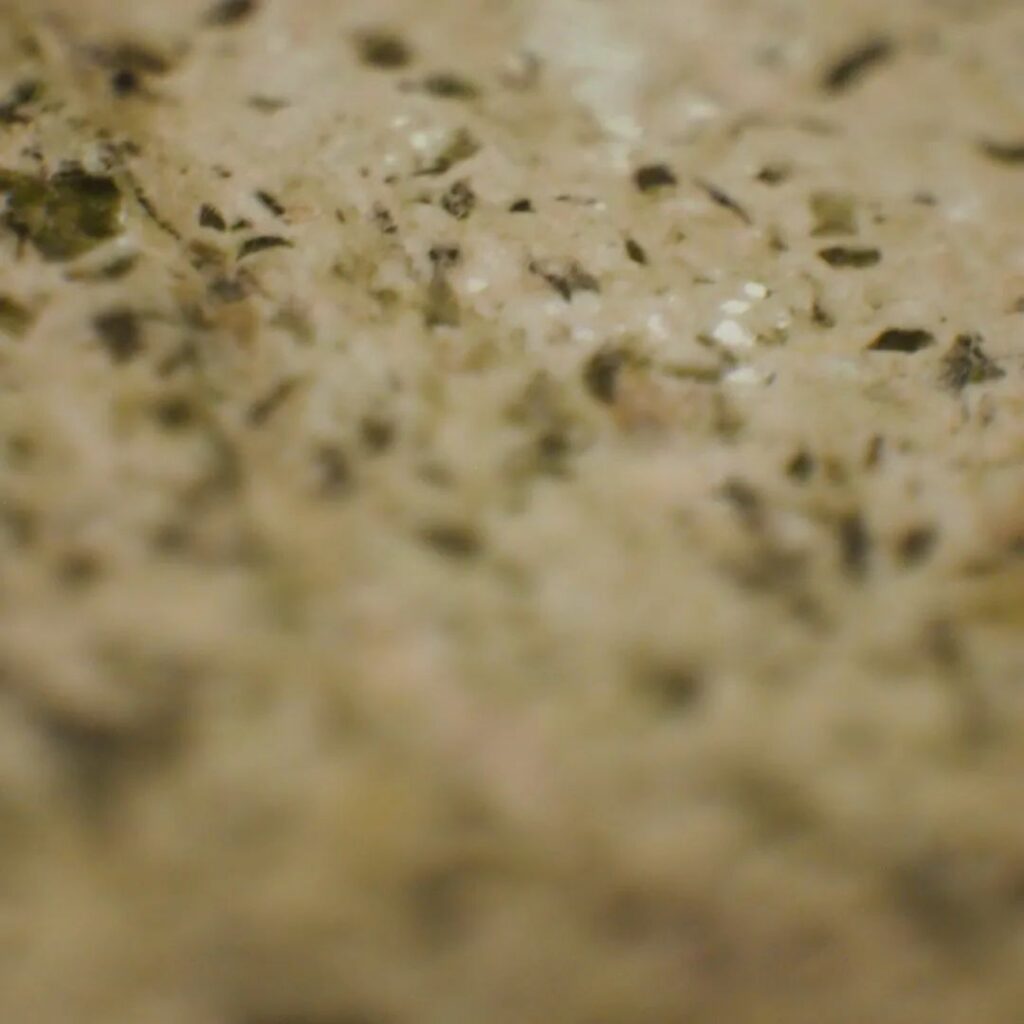

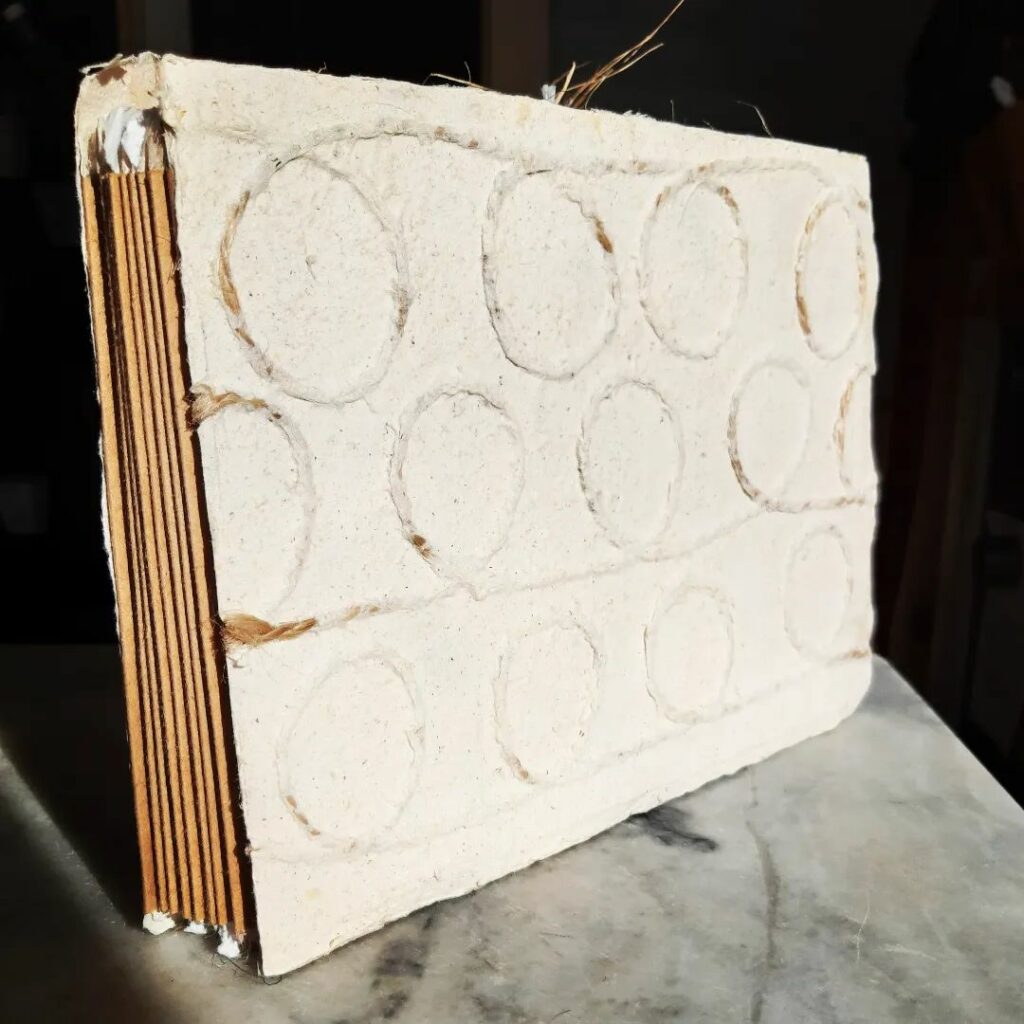
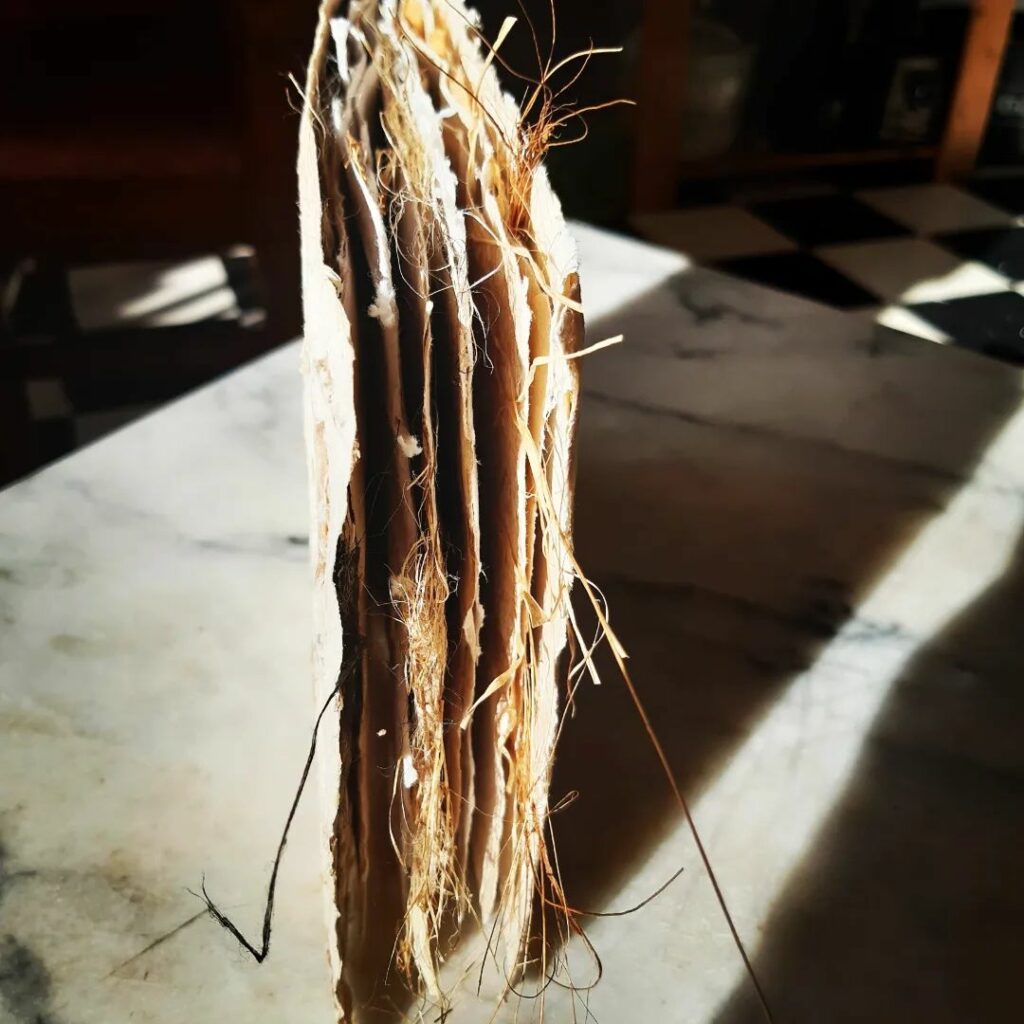
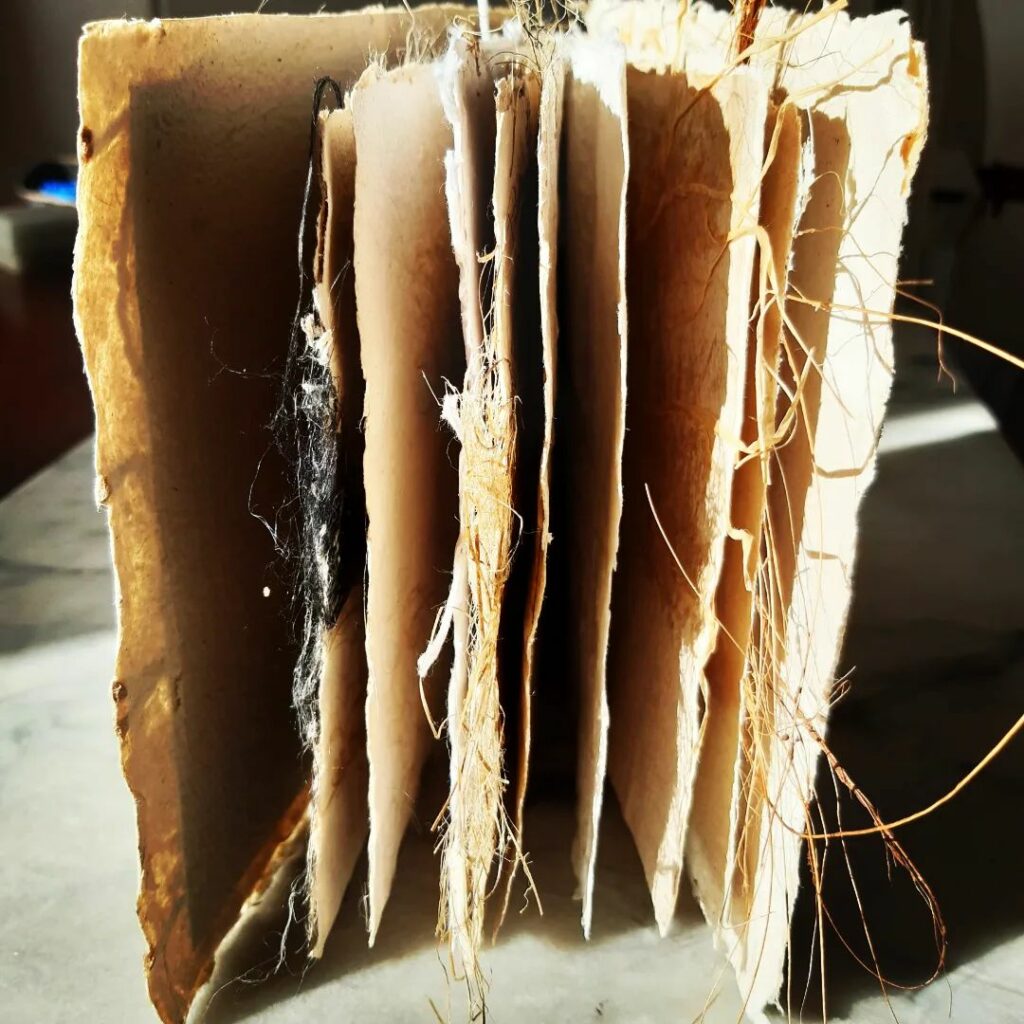

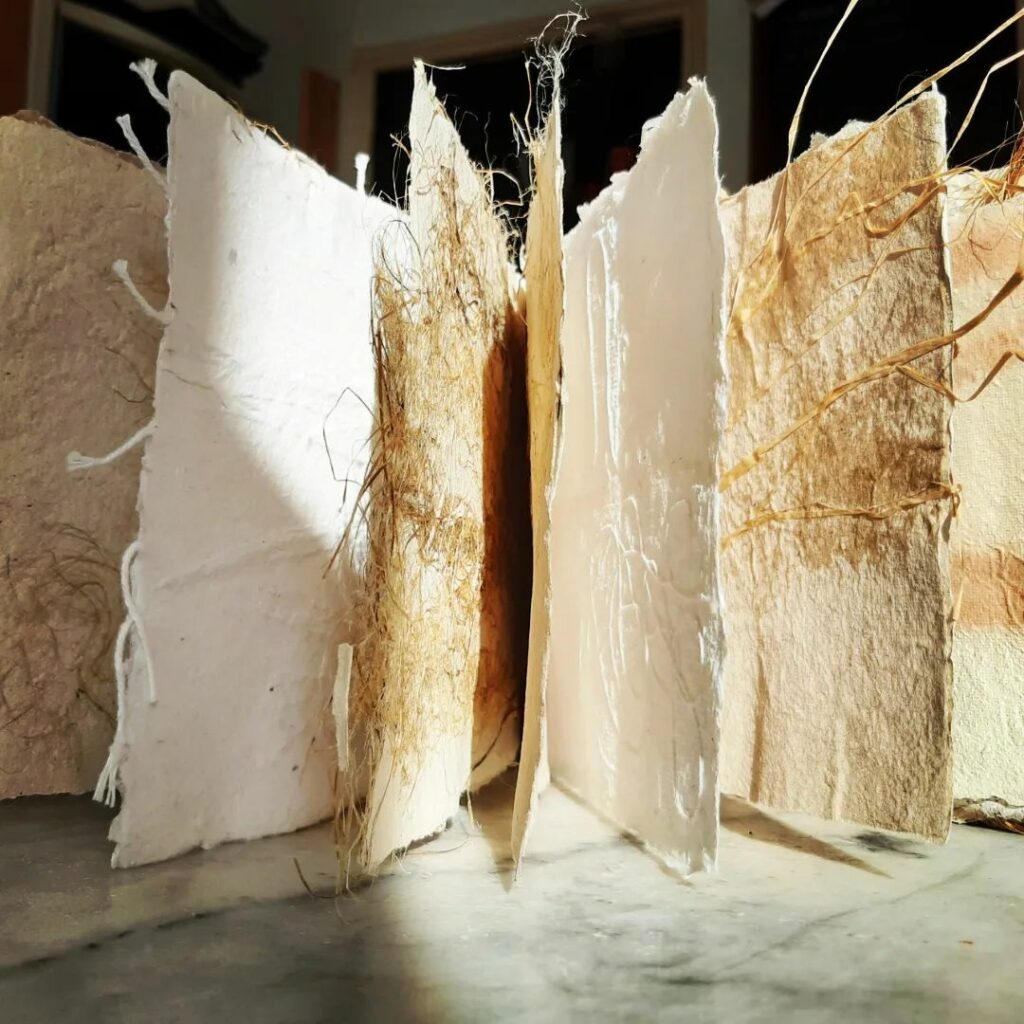

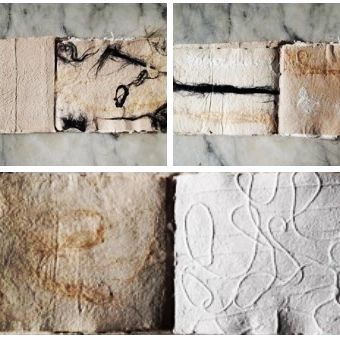
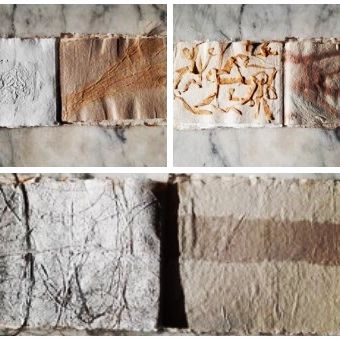
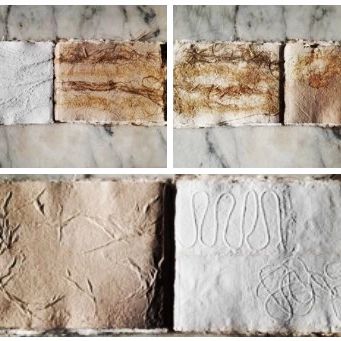
Lines
Handmade papers which all contain different kinds of lines.
Folklorico
With this book, I have tried to catch some of the beautiful movements of the skirts you see in in traditional Mexican folk dancing, and I have tried to emulate that in paper. So this book is a ‘study of movement of folklorico dancers’.
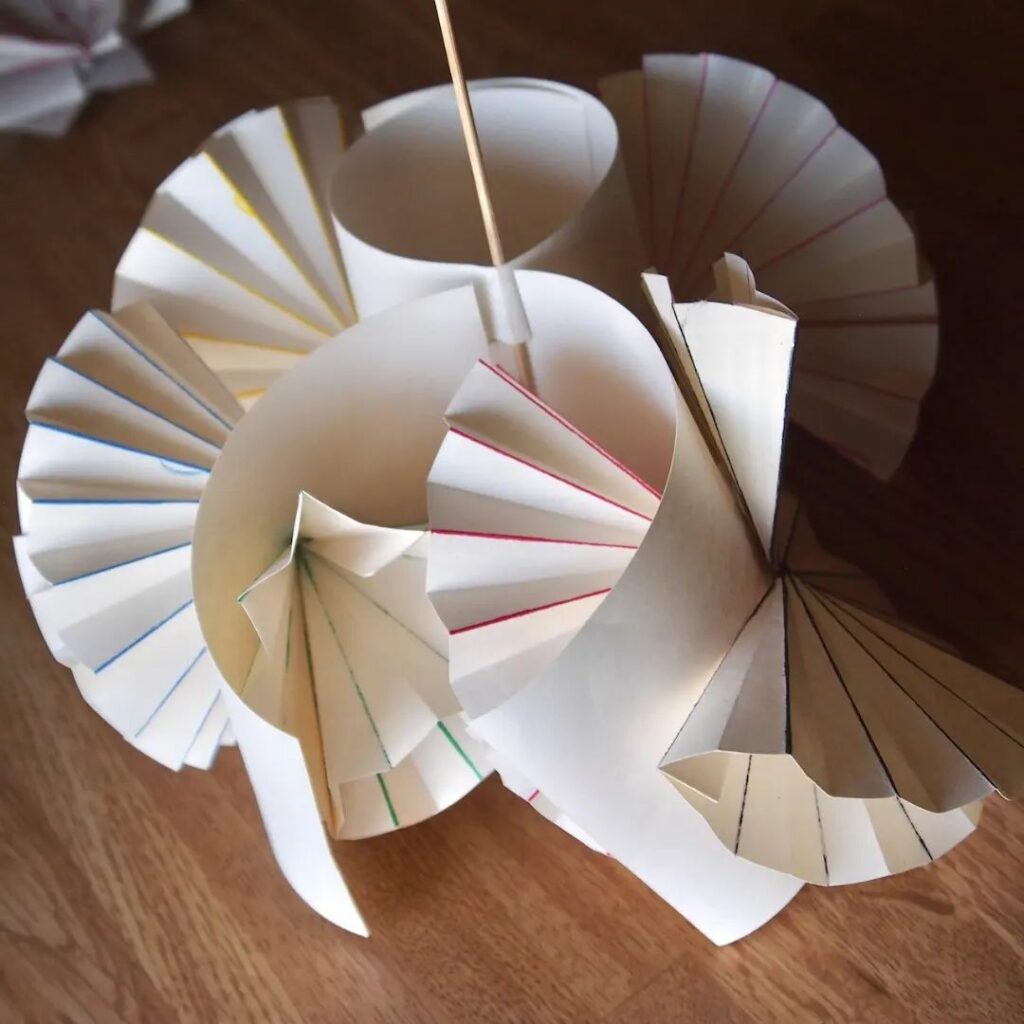
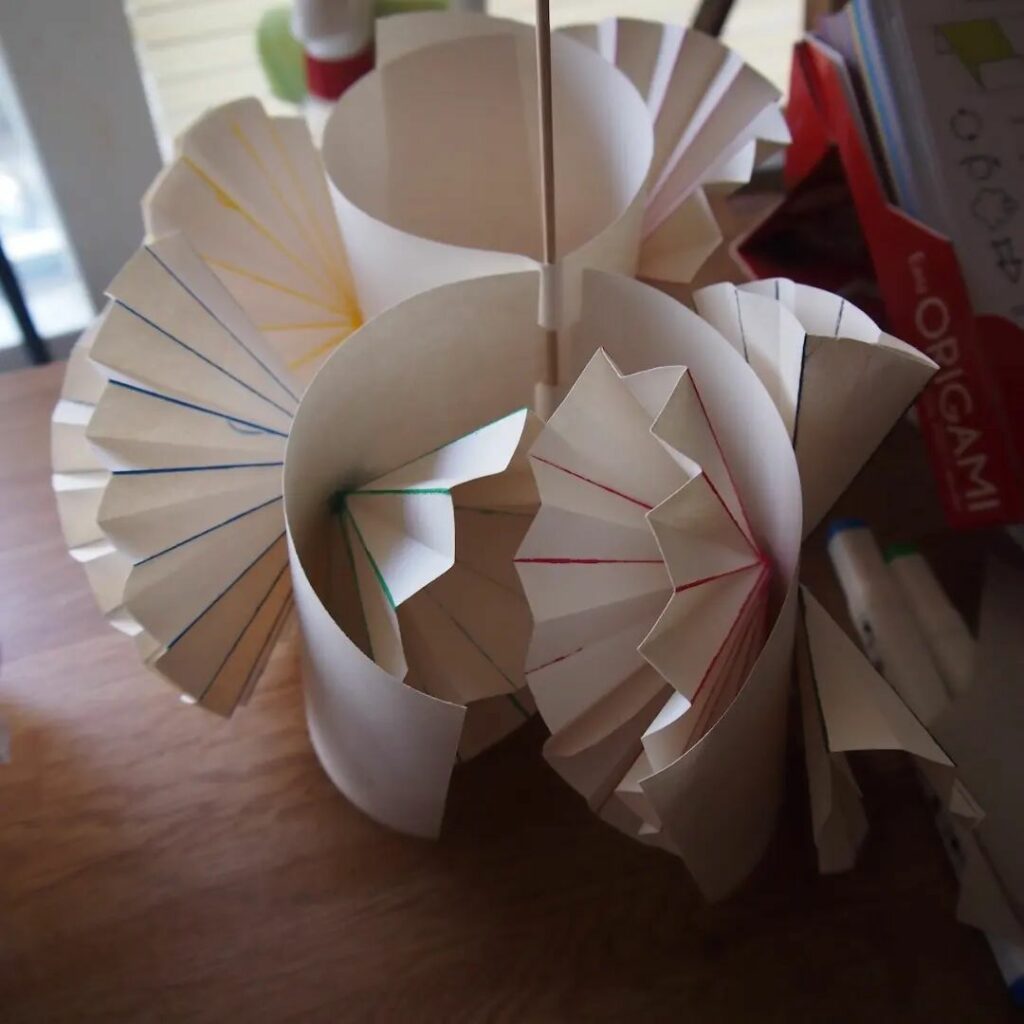
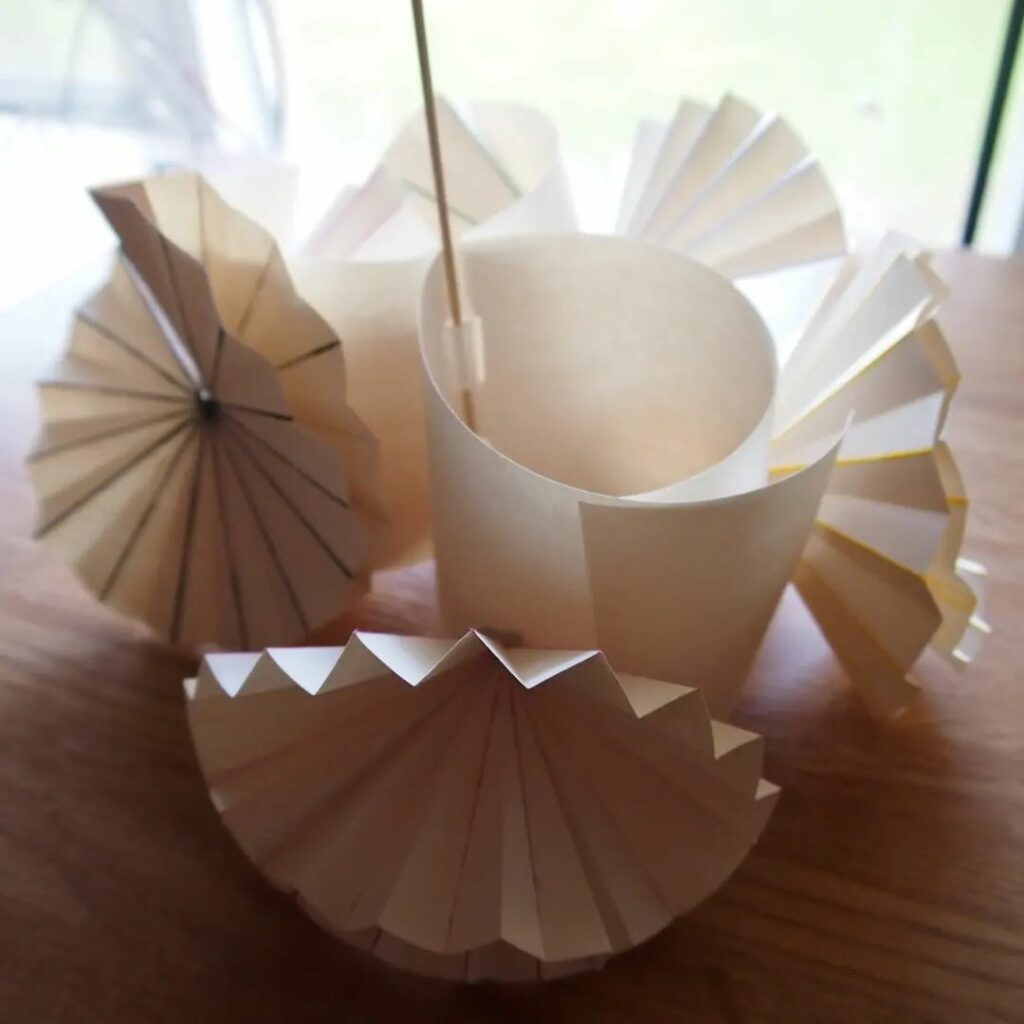
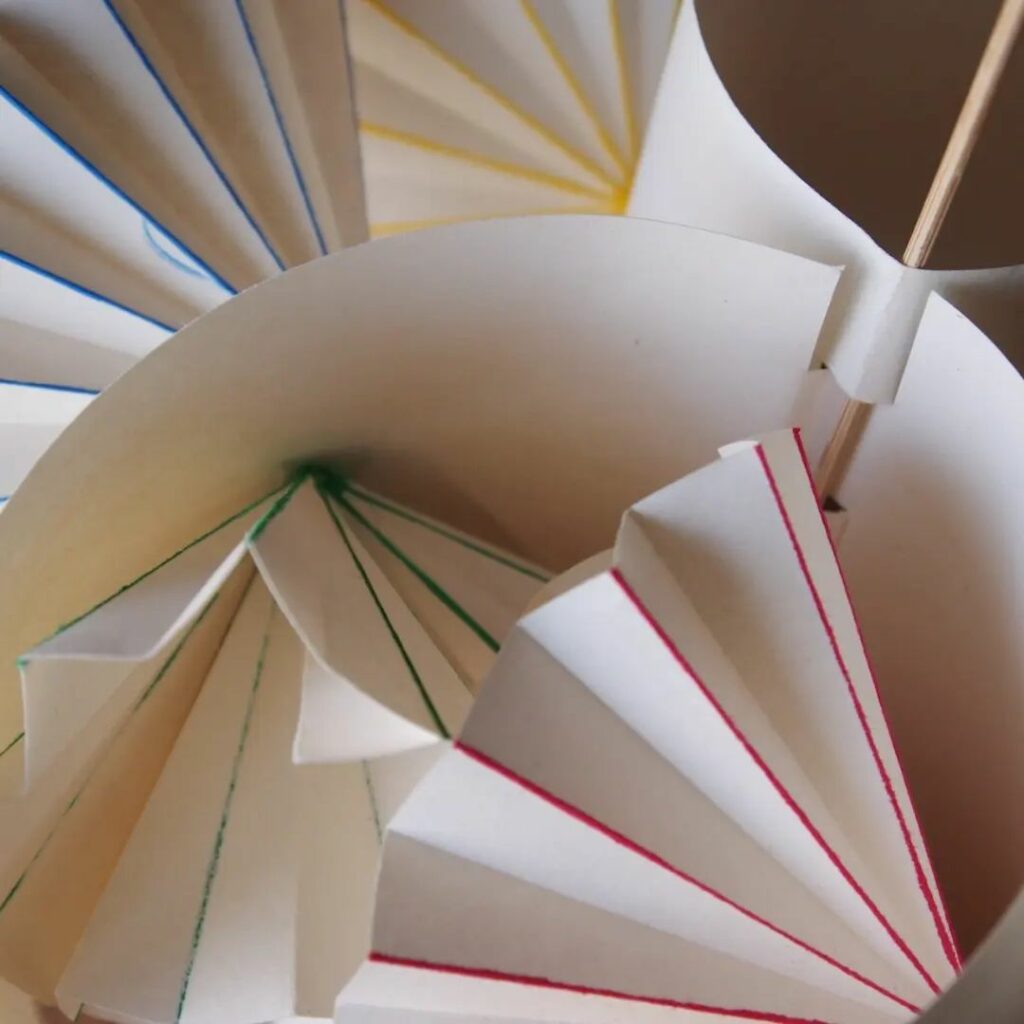
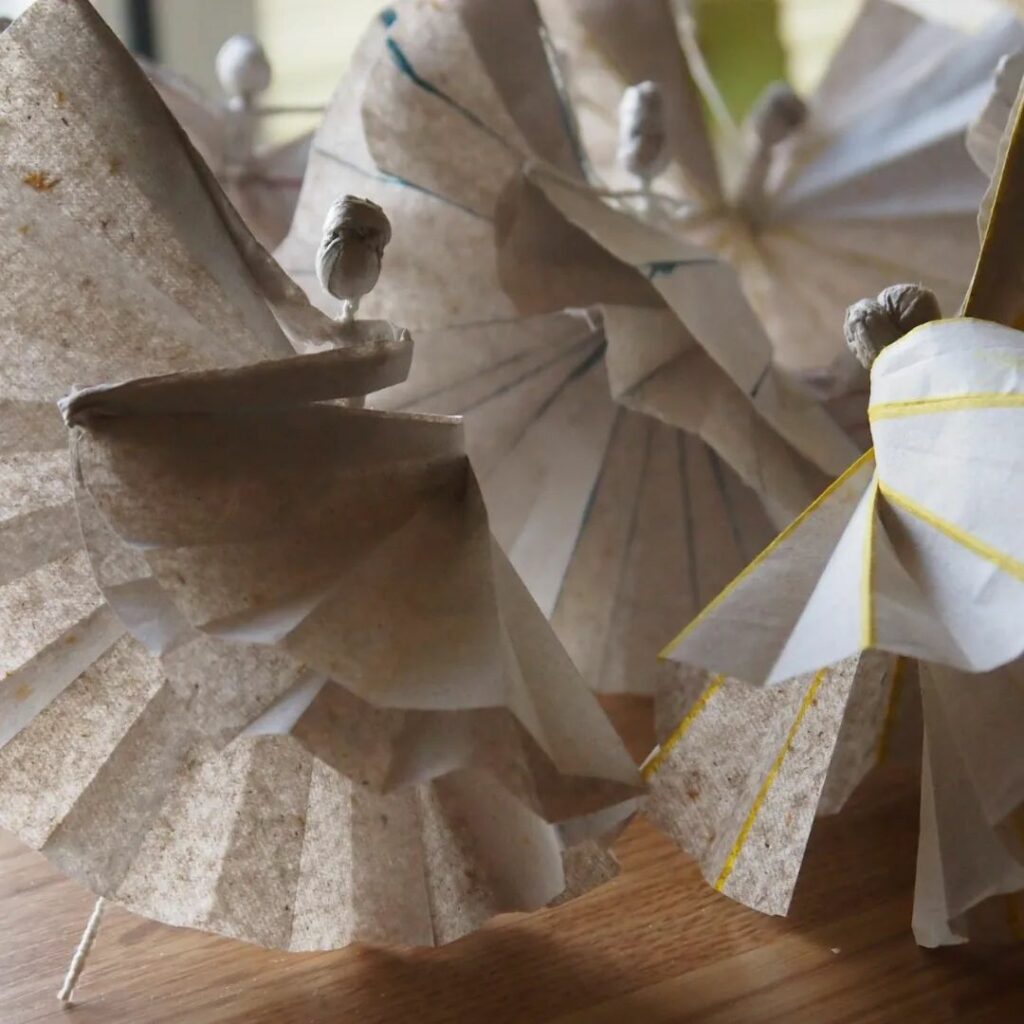
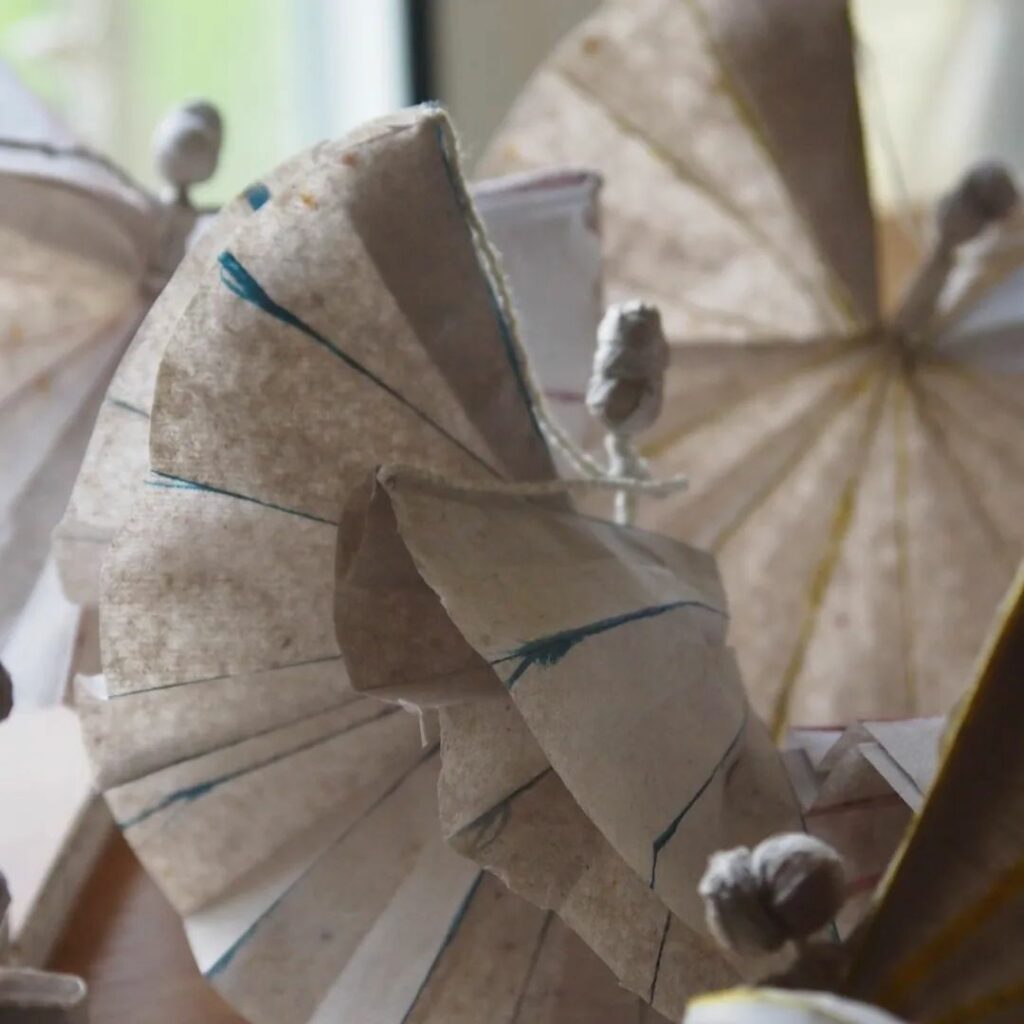



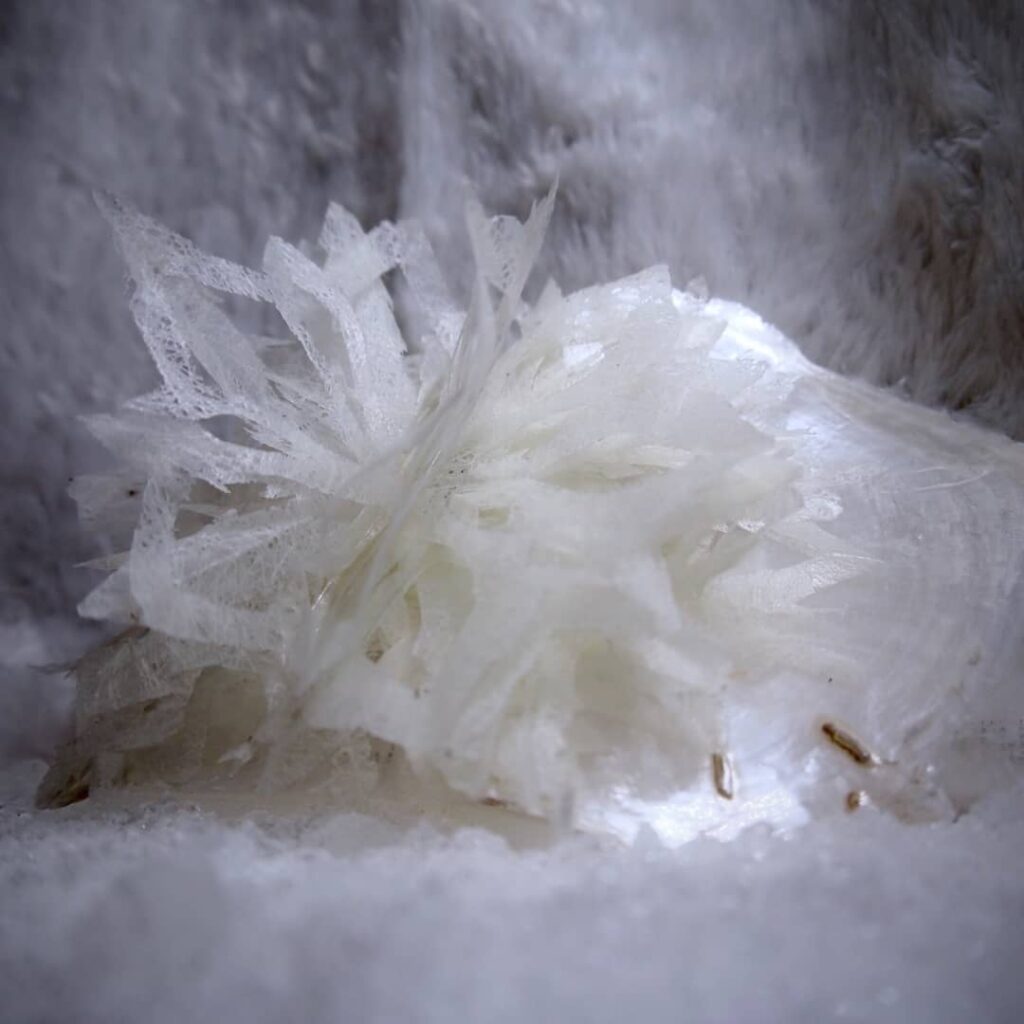







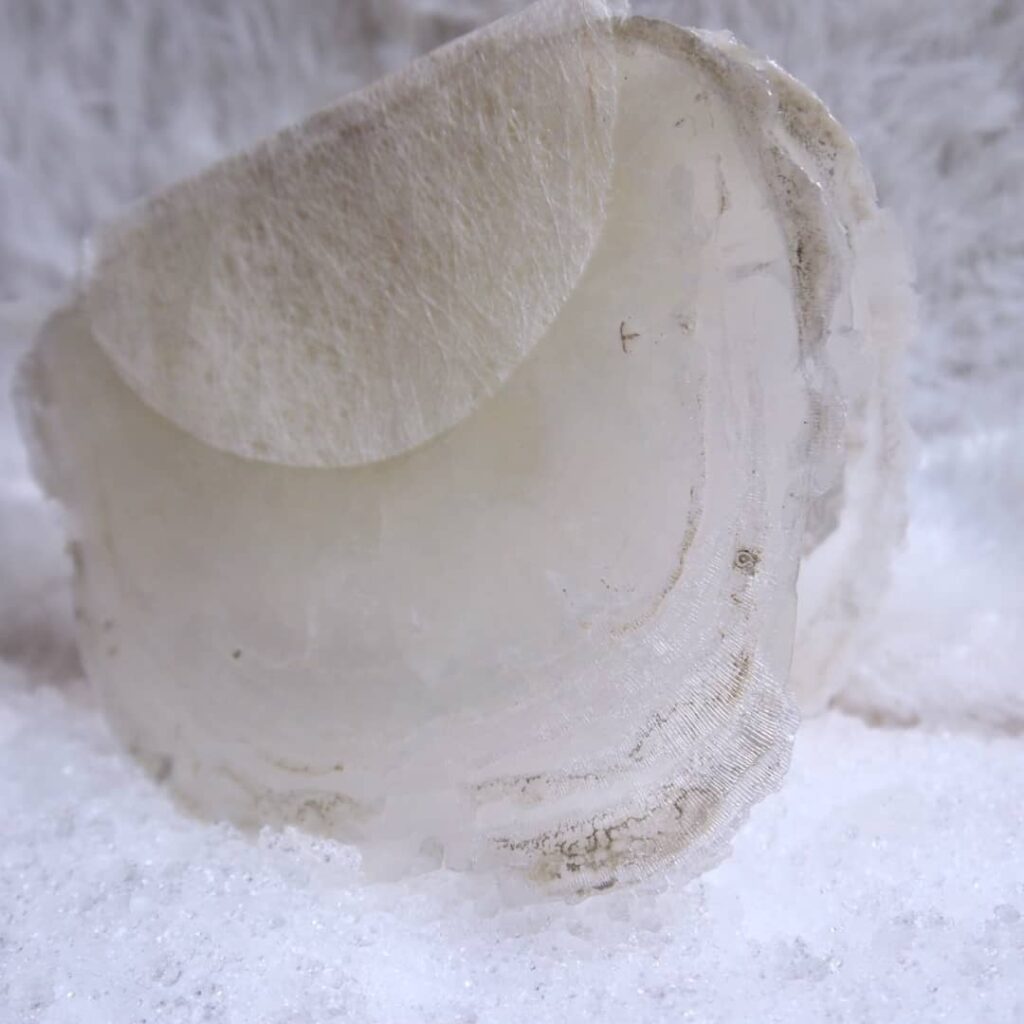

Frozen
Snowflakes in ‘ice’. The cover is made from the mother-of-pearl inside layers of a seashelI (the translucency of the shells reminded me of ice). The content of the book is a series of snowflakes cut out of sizoflor cloth and then covered with several layers of cloth hardener.
Winged
This is a book in the form of a Venus fly trap that contains some of my favourite origami patterns for winged bugs and insects.


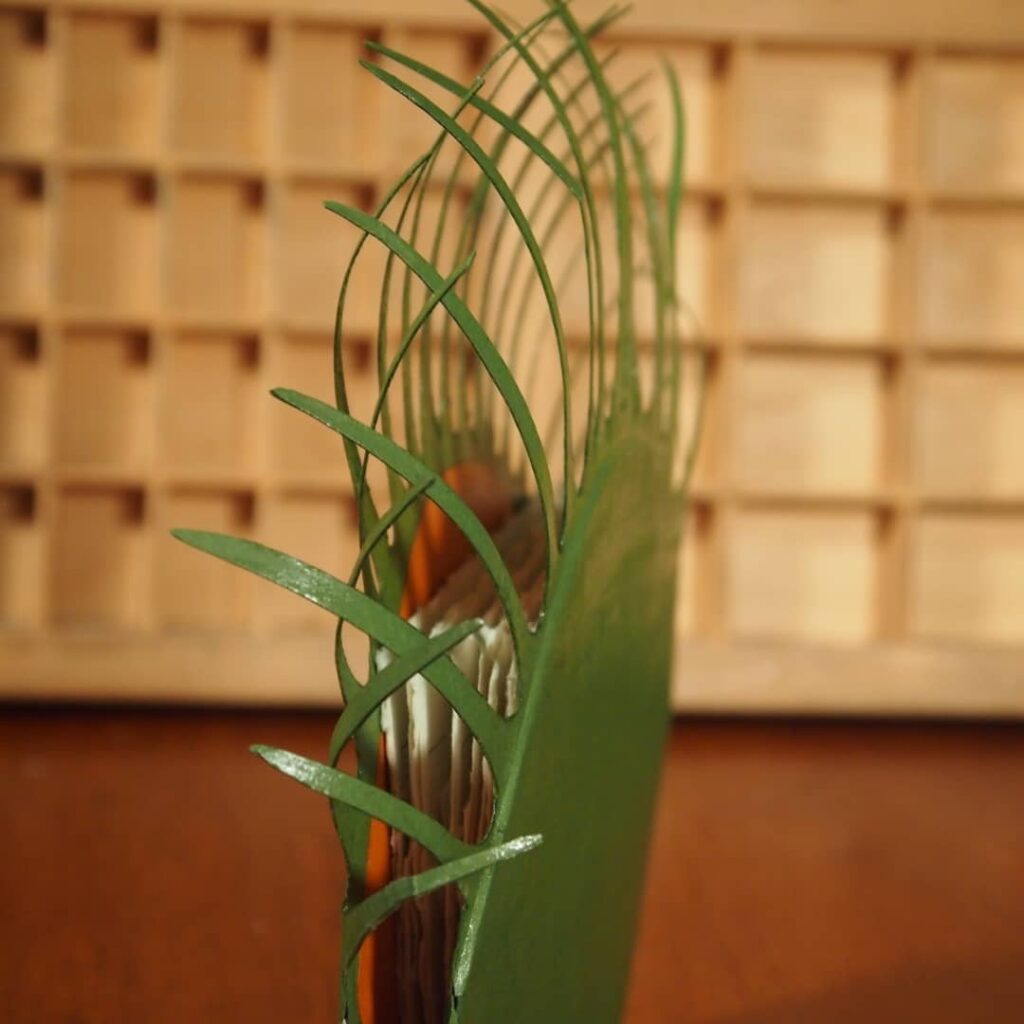
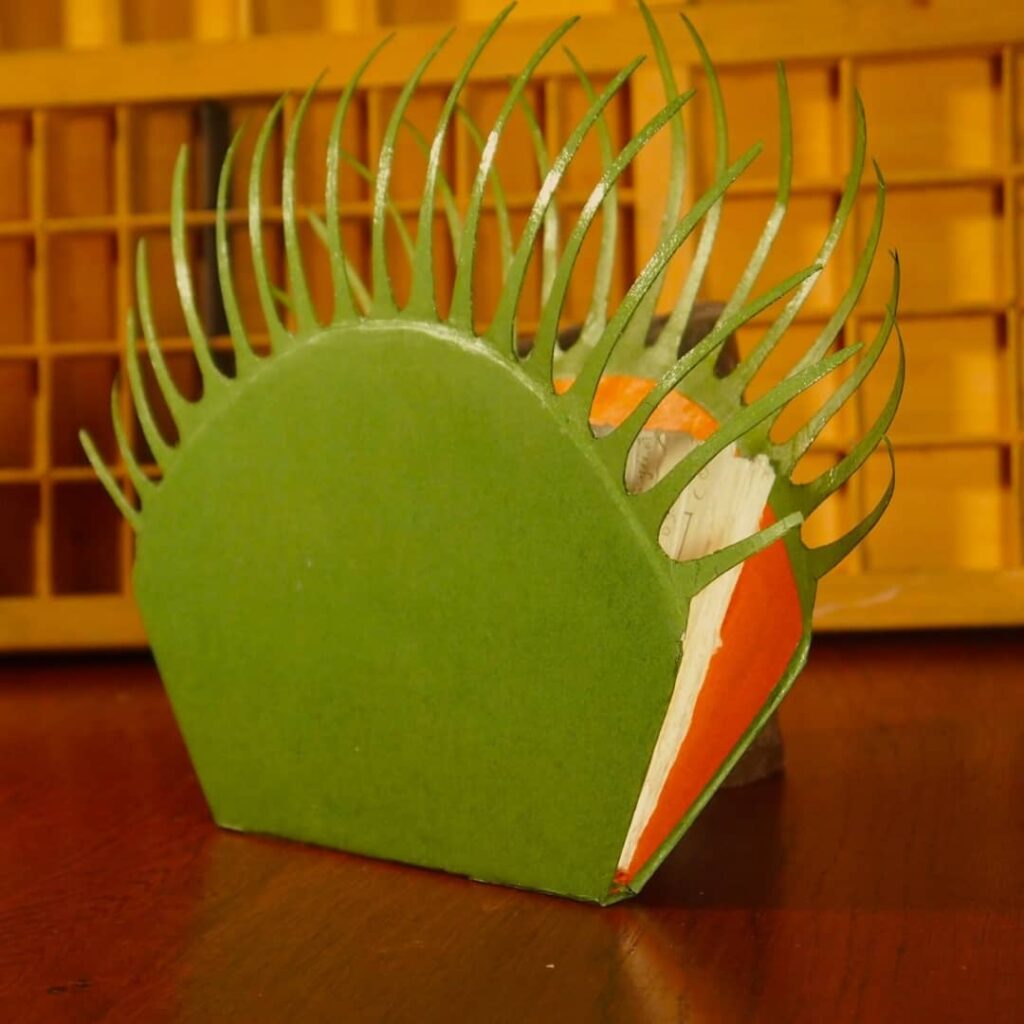
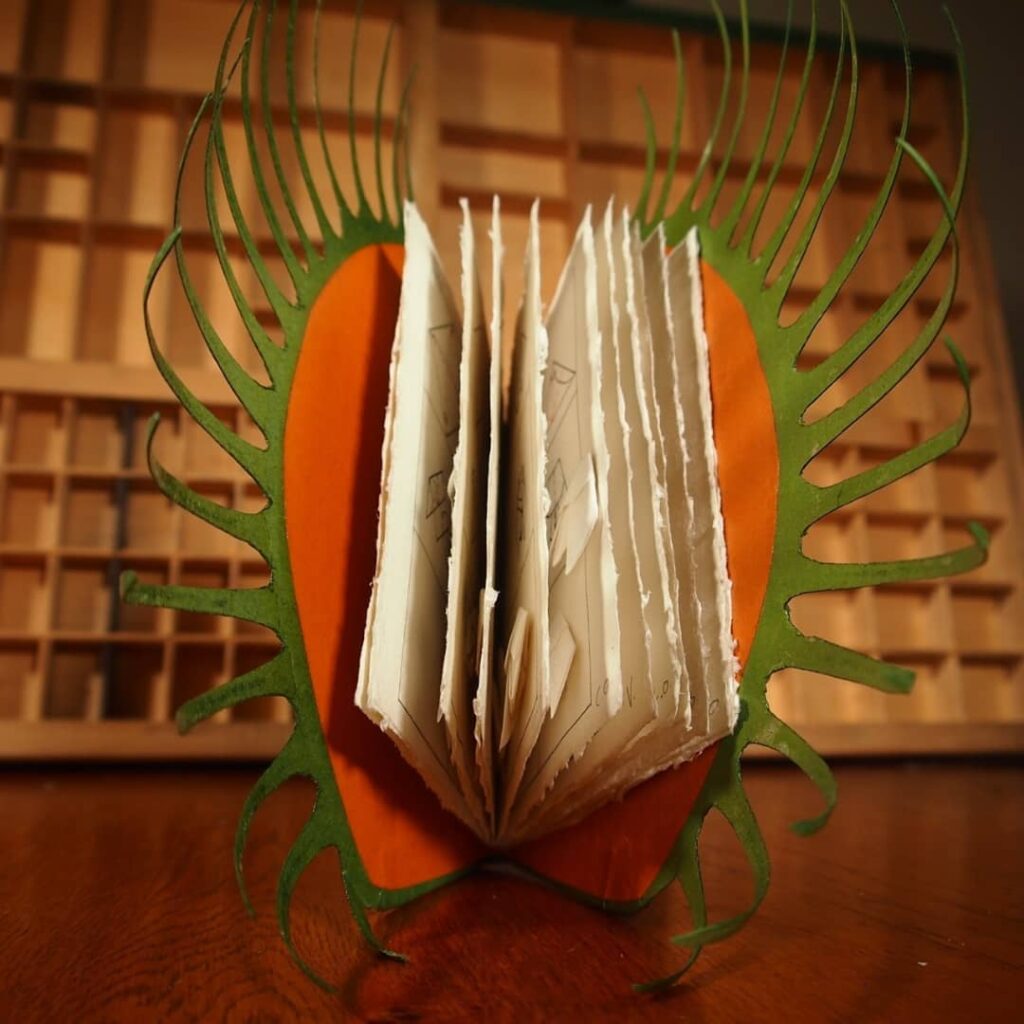
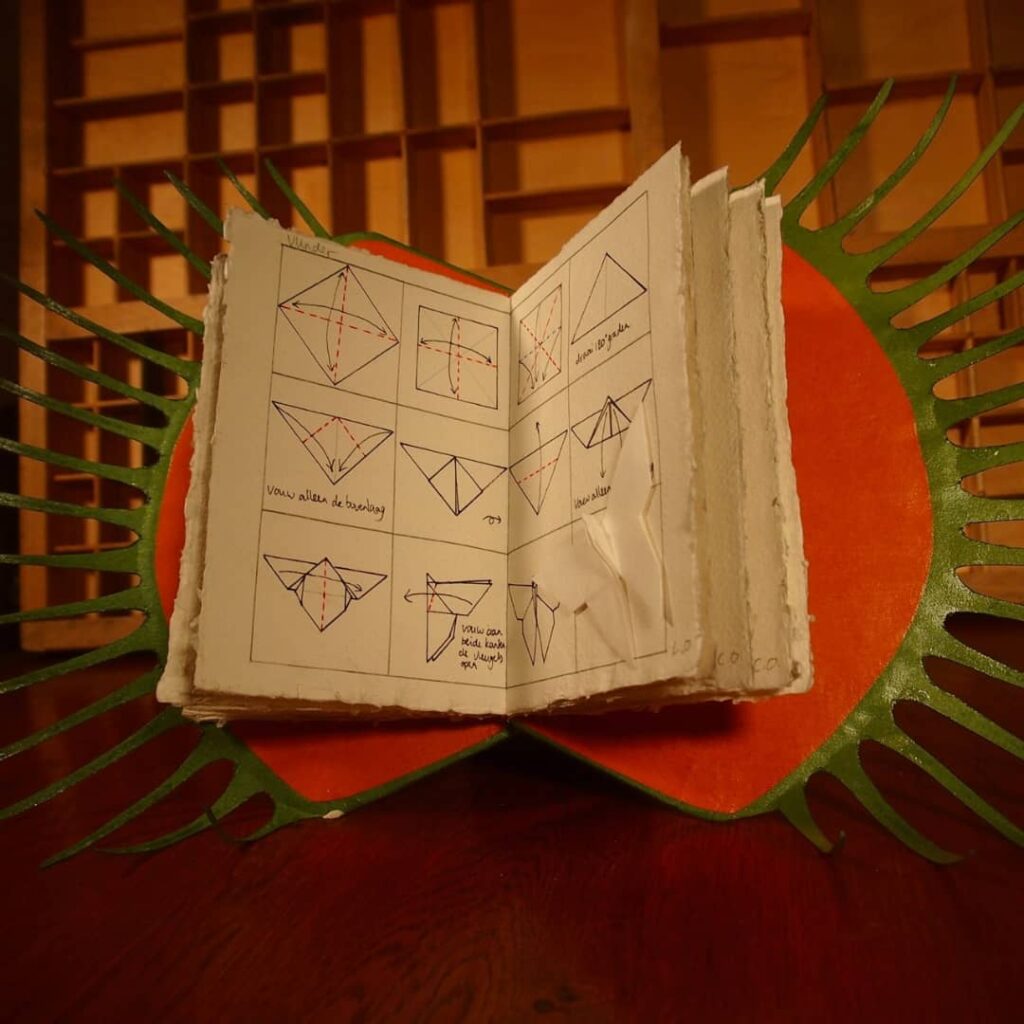
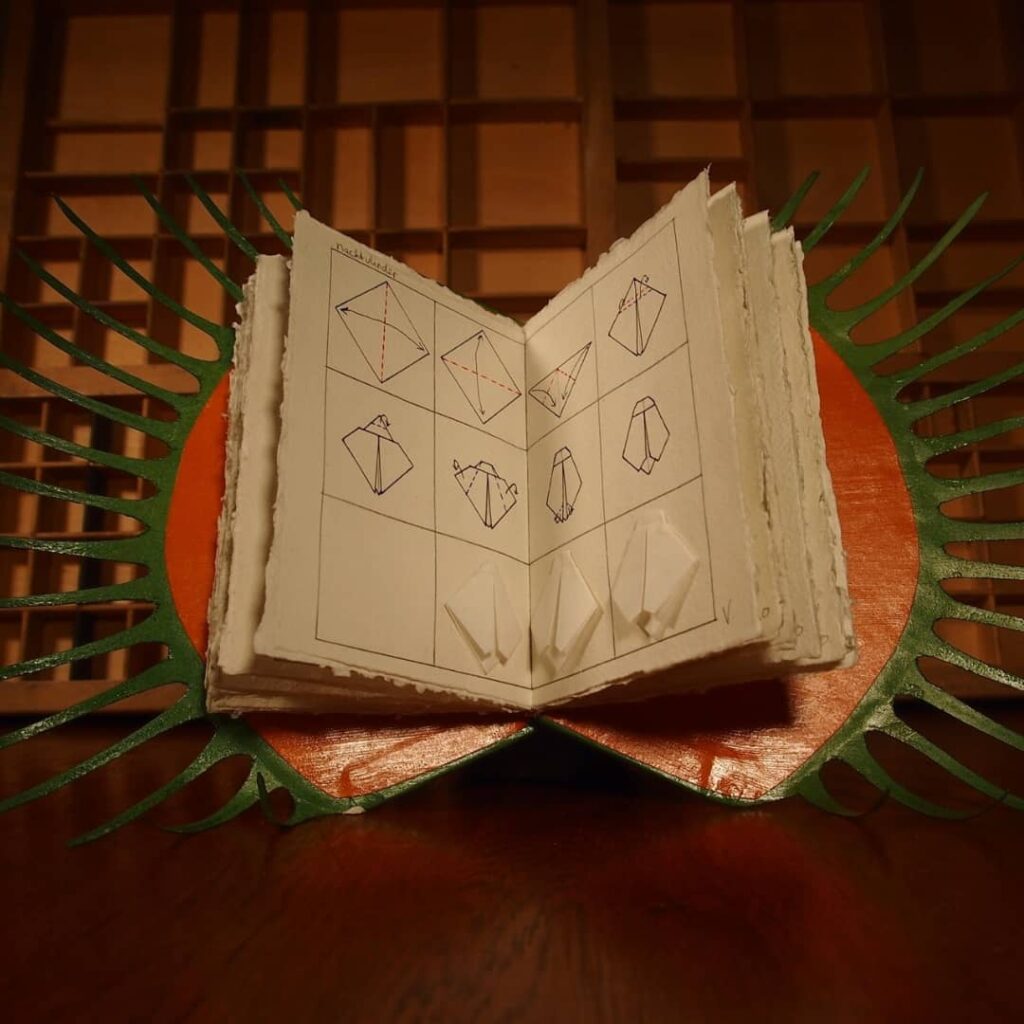
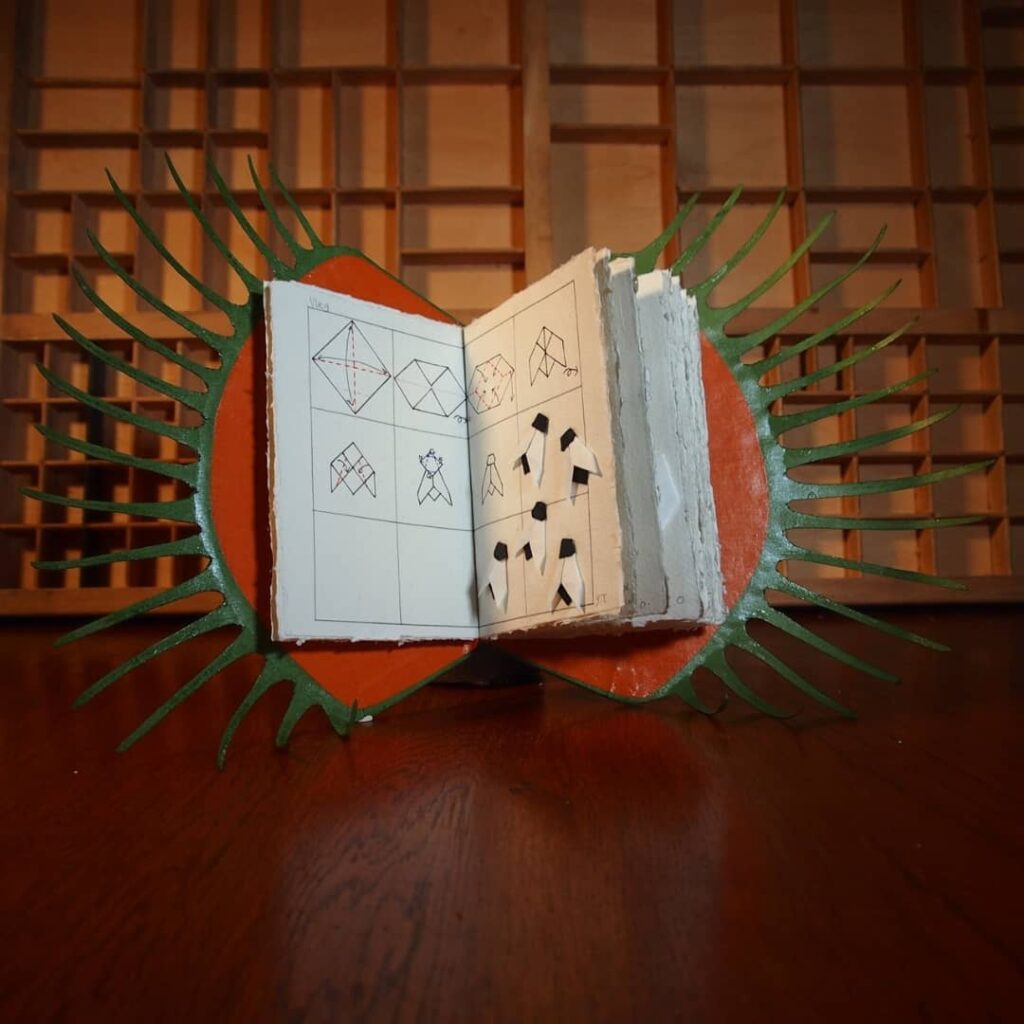


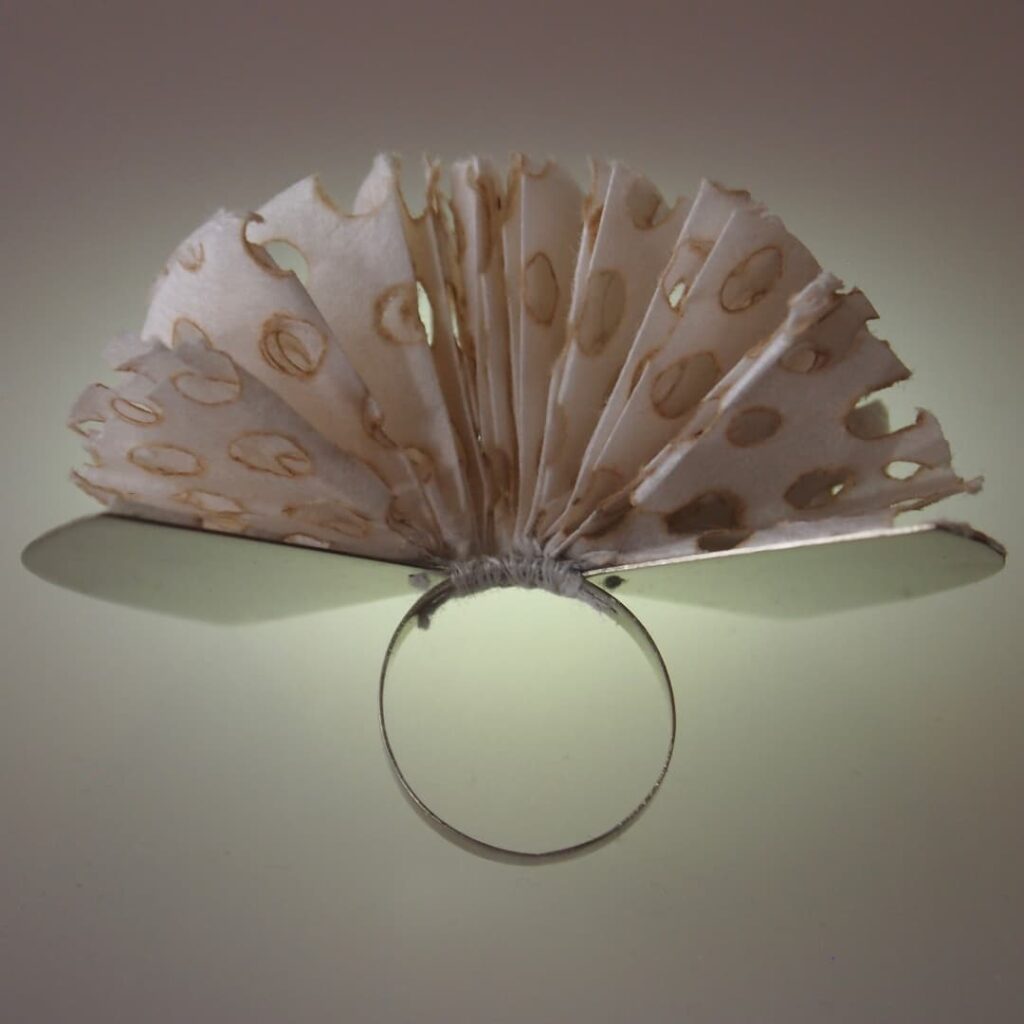
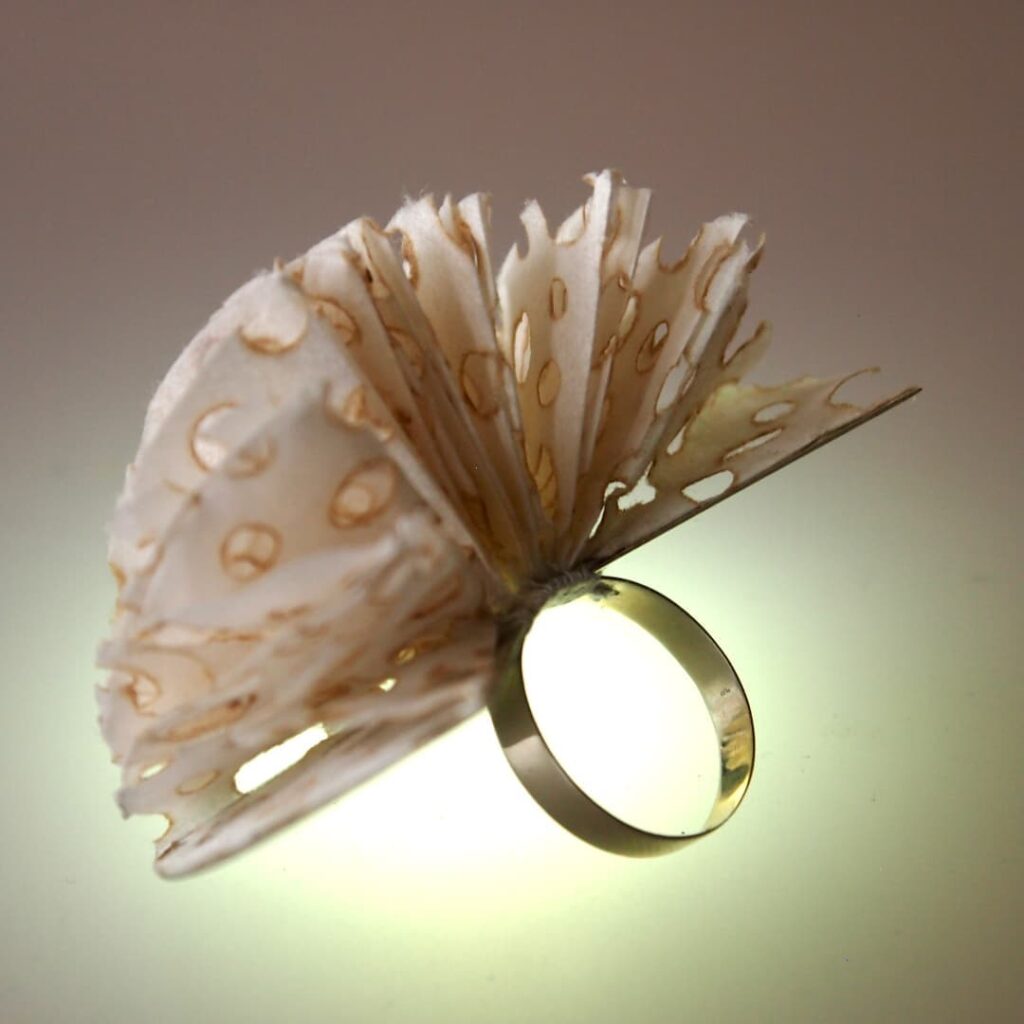

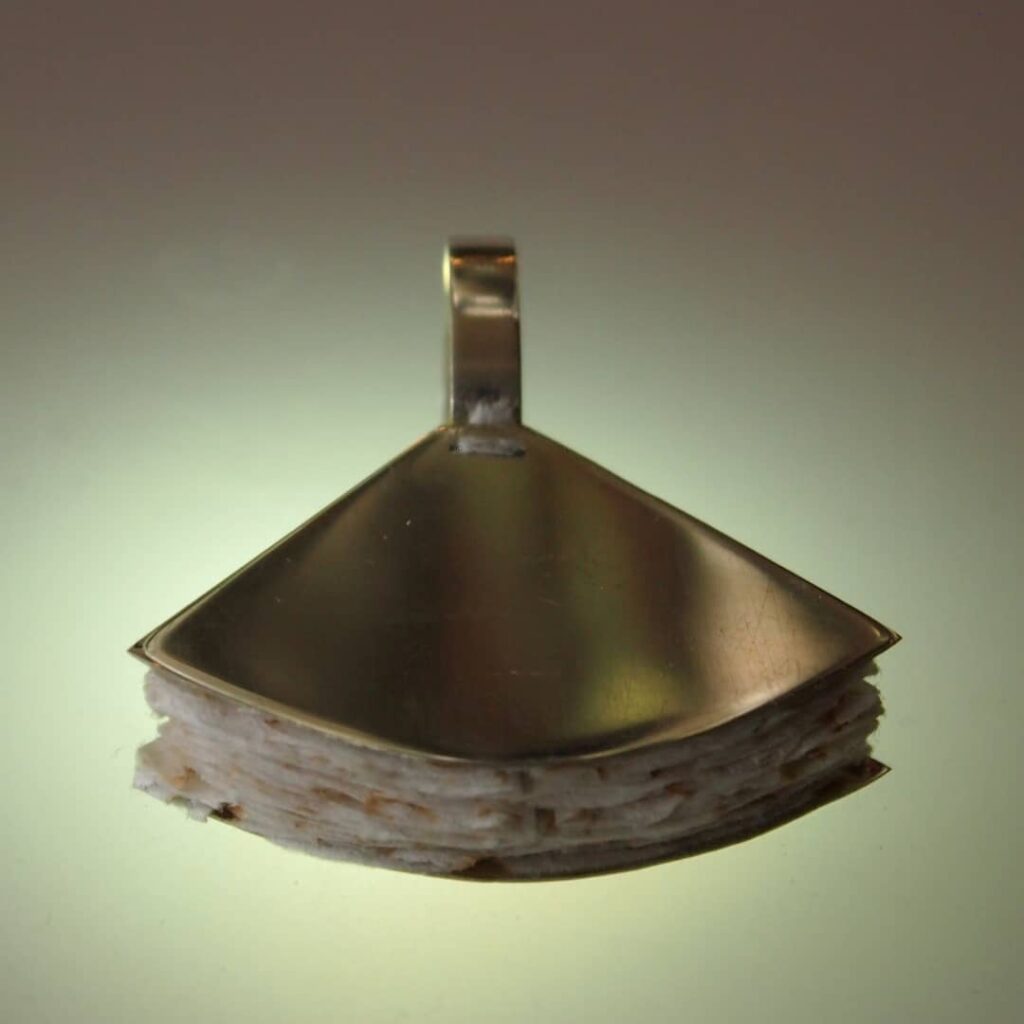
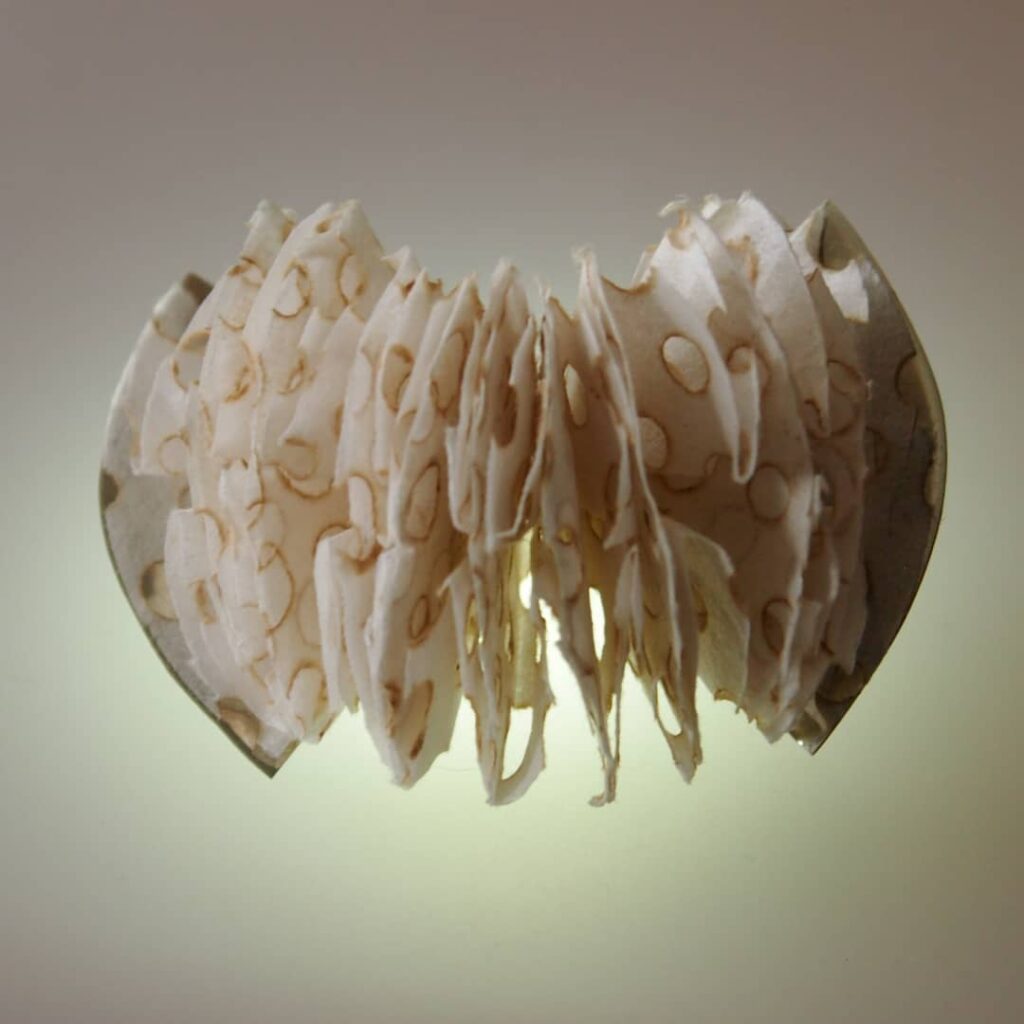
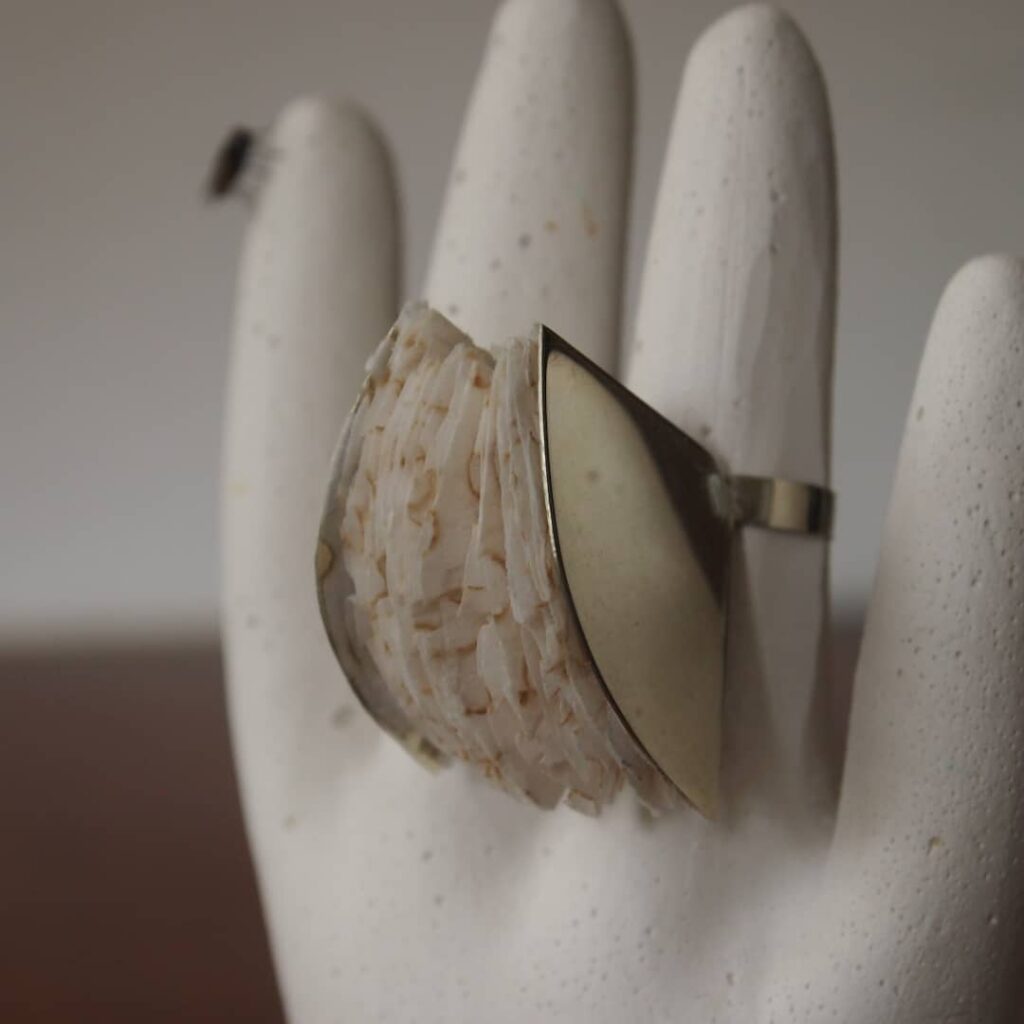

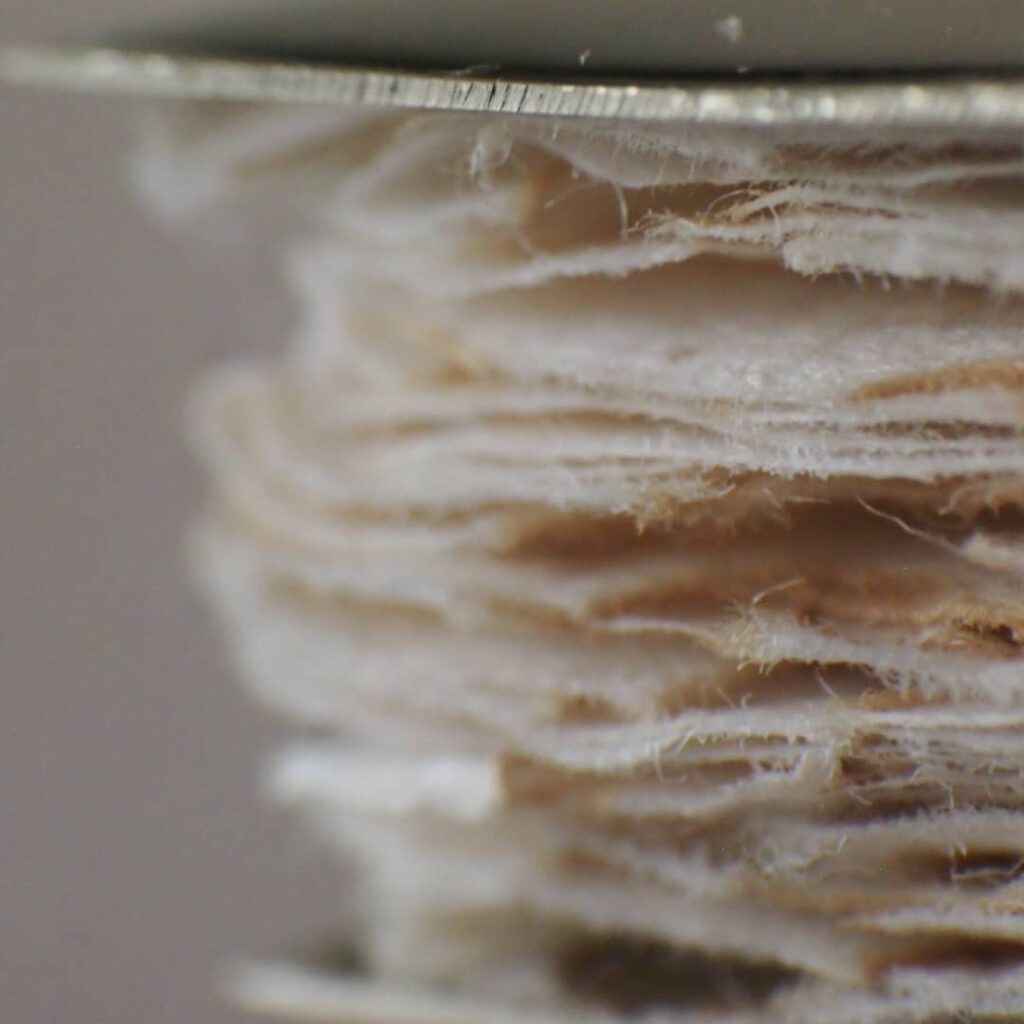

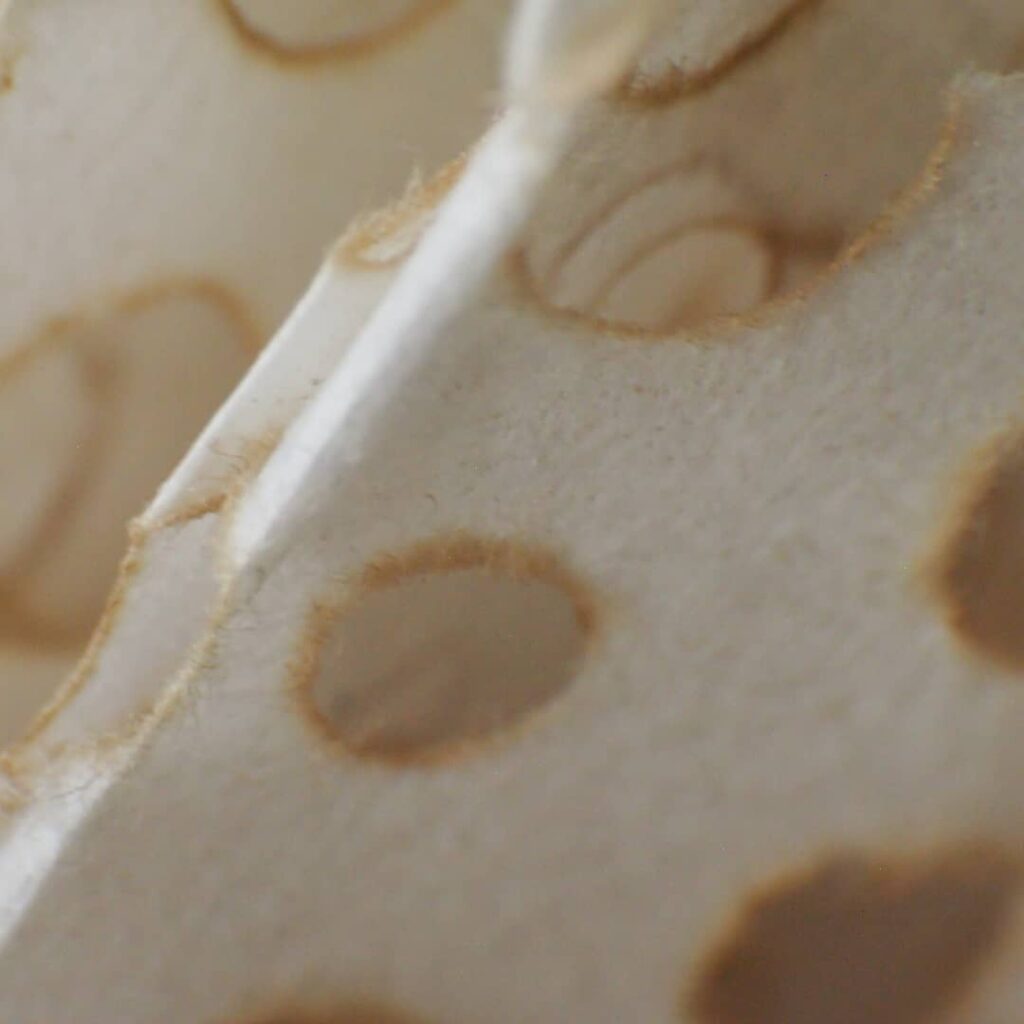
Ring
A book-ring. The metal to make the ring and the book cover is alpacca. The content of the book is Japanese paper with circles (rings) made by burning holes in it with a soldering iron. The shape of the book is an accordion circle book.
Open
Kirigami image of birds on a branch
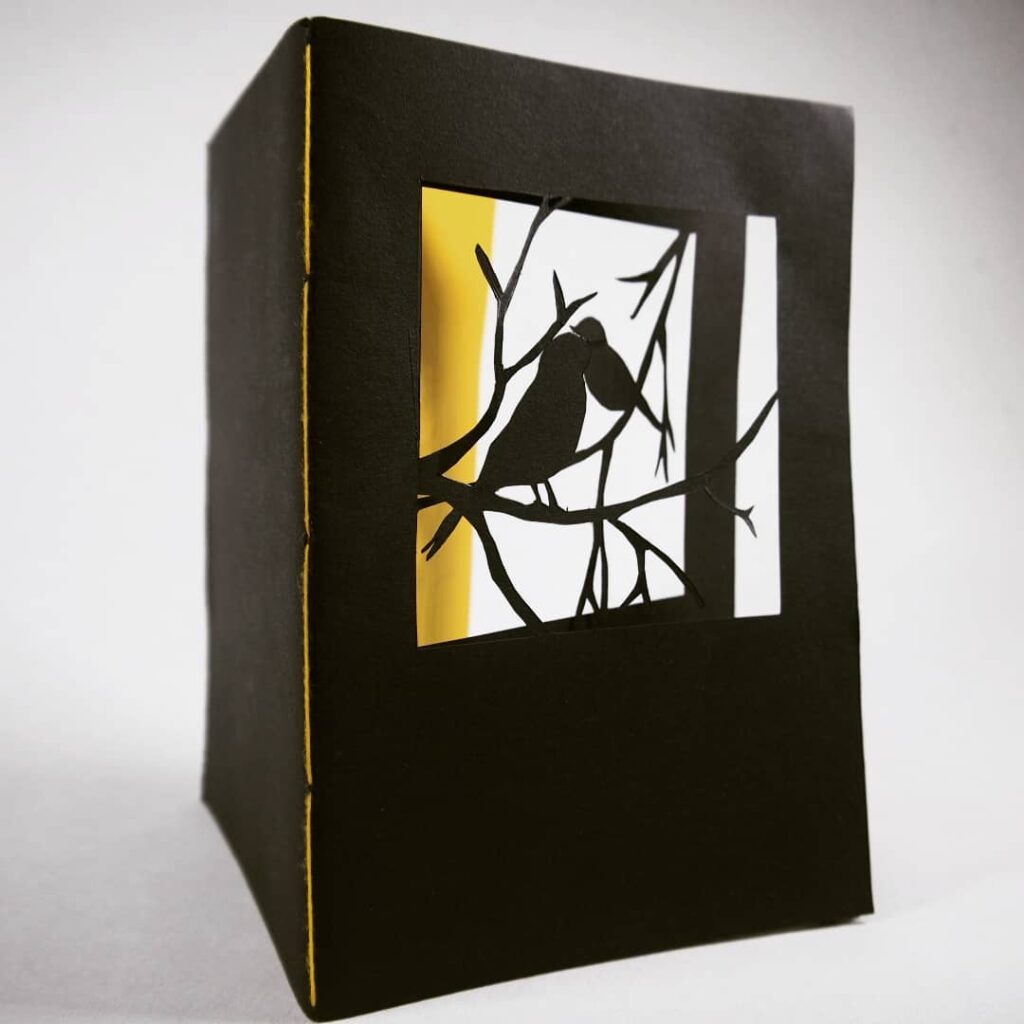
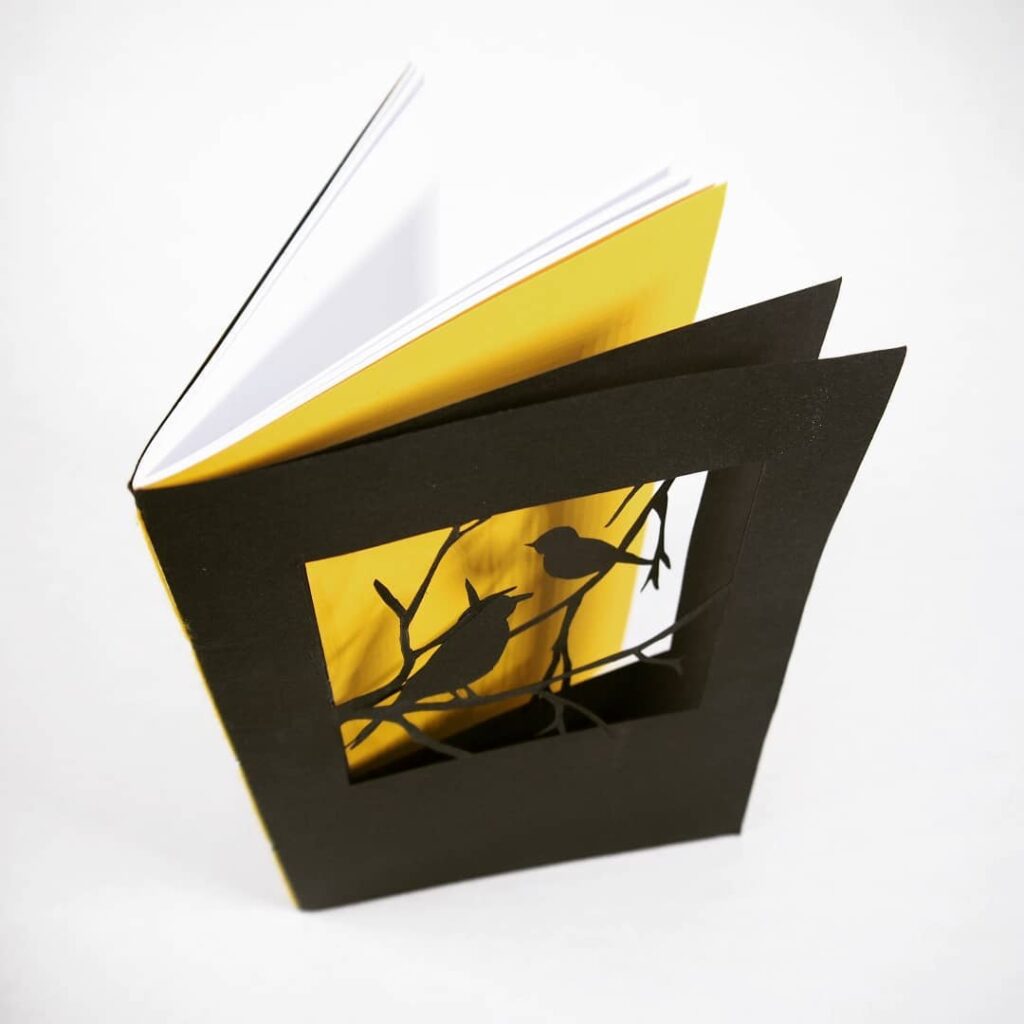
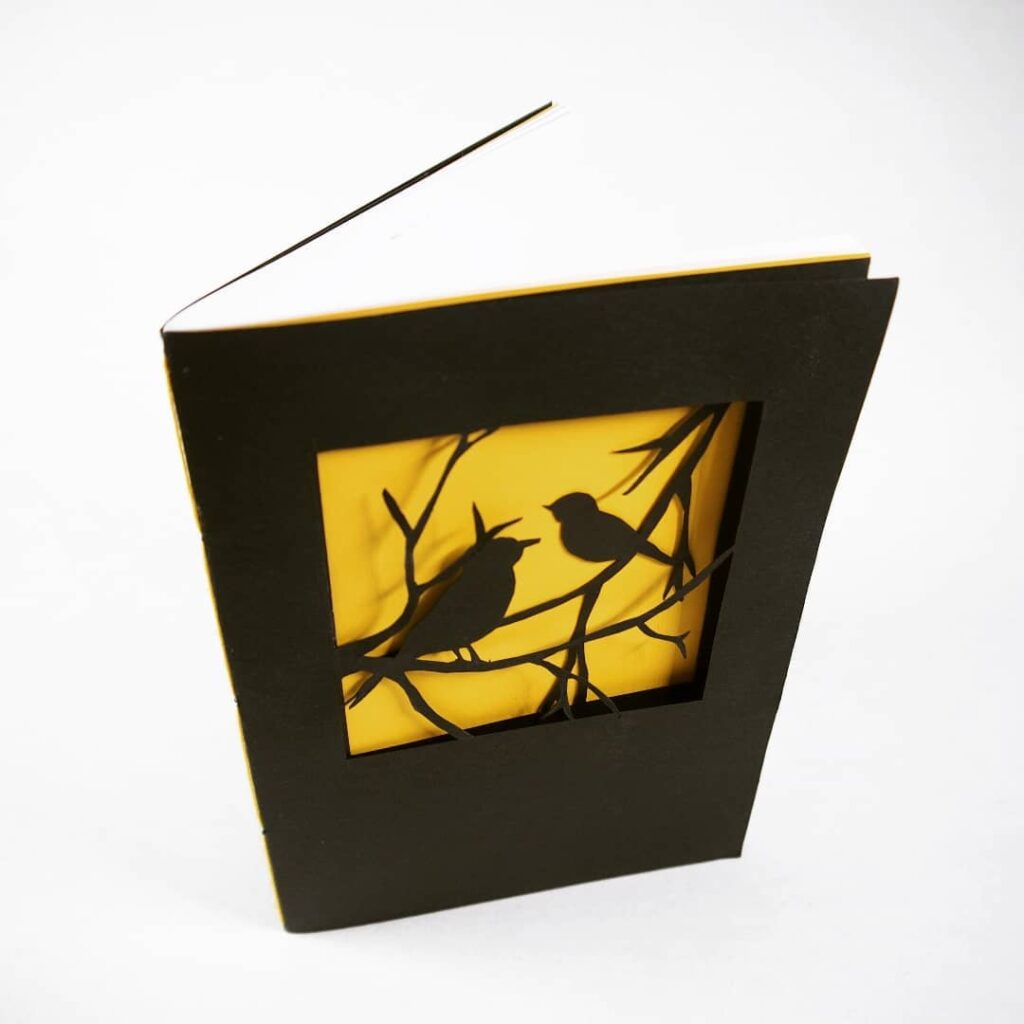



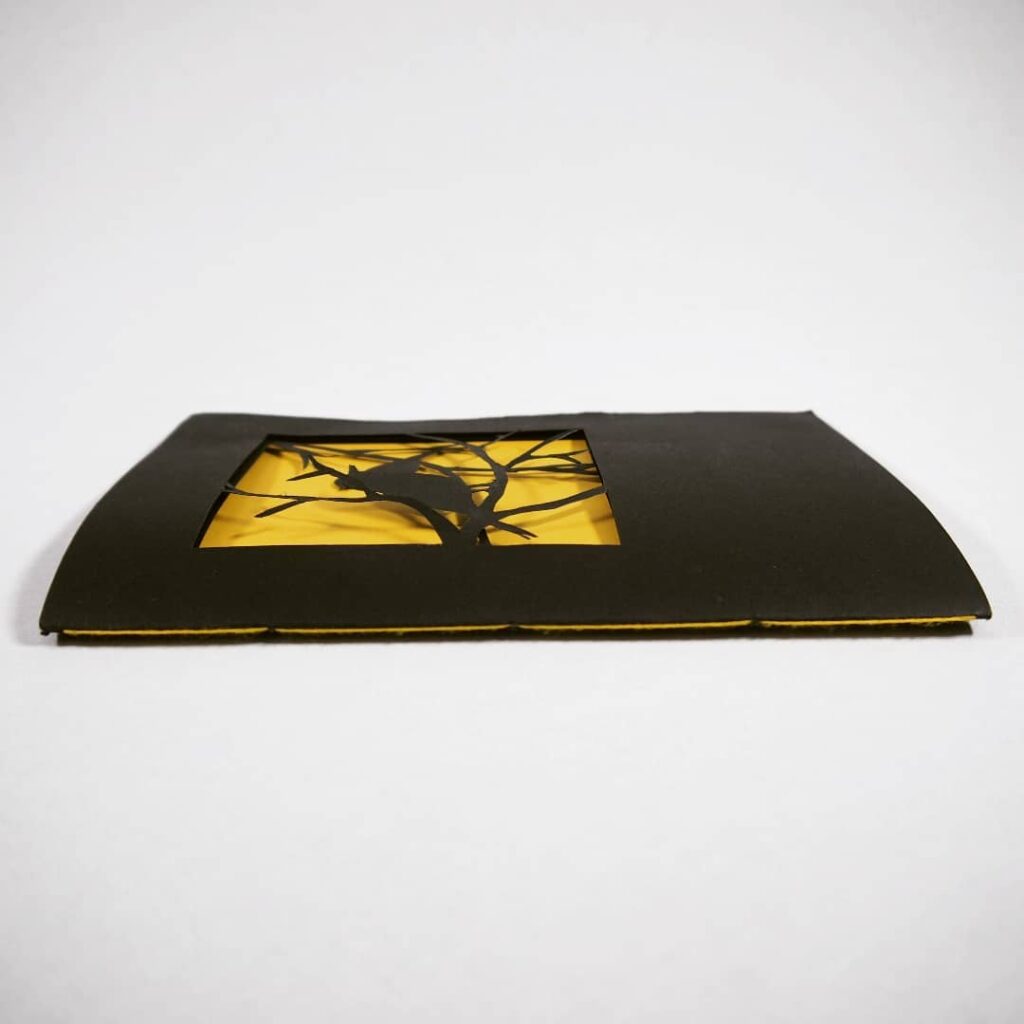
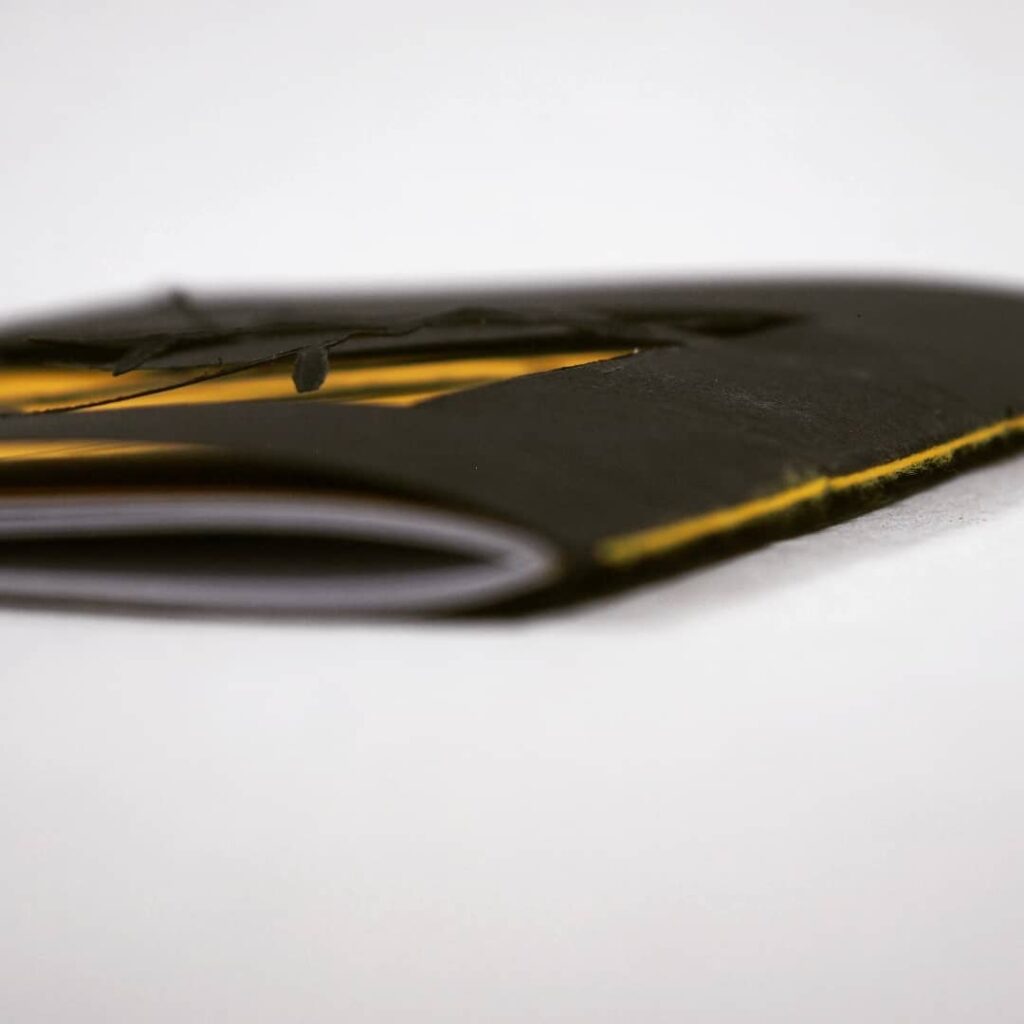

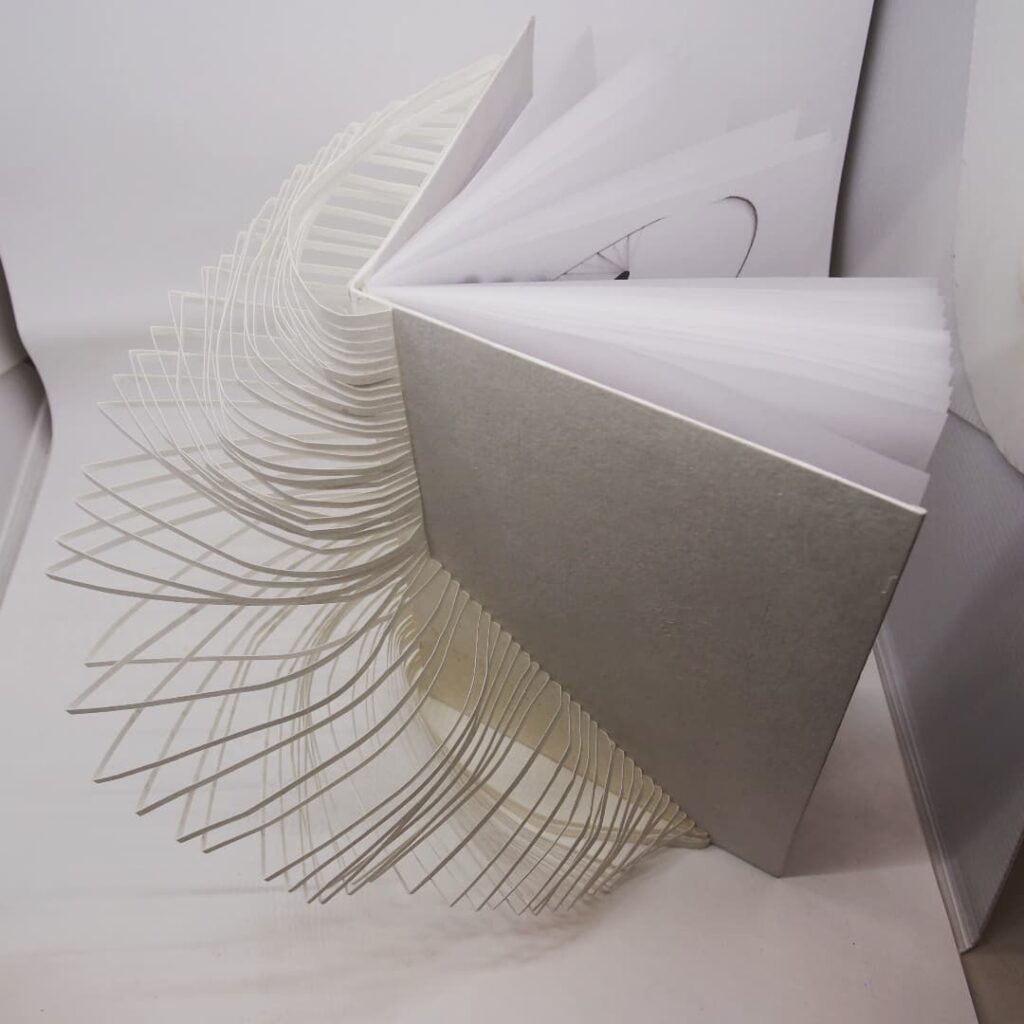


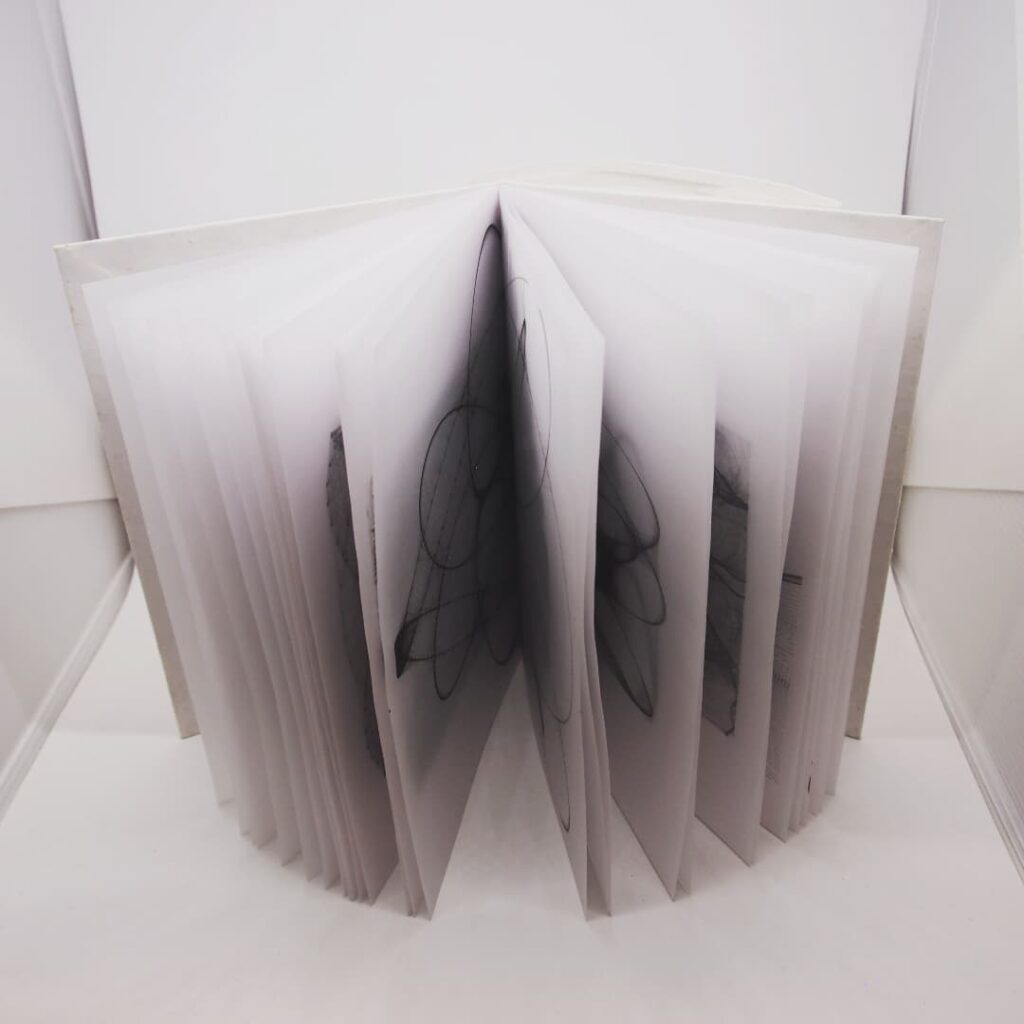
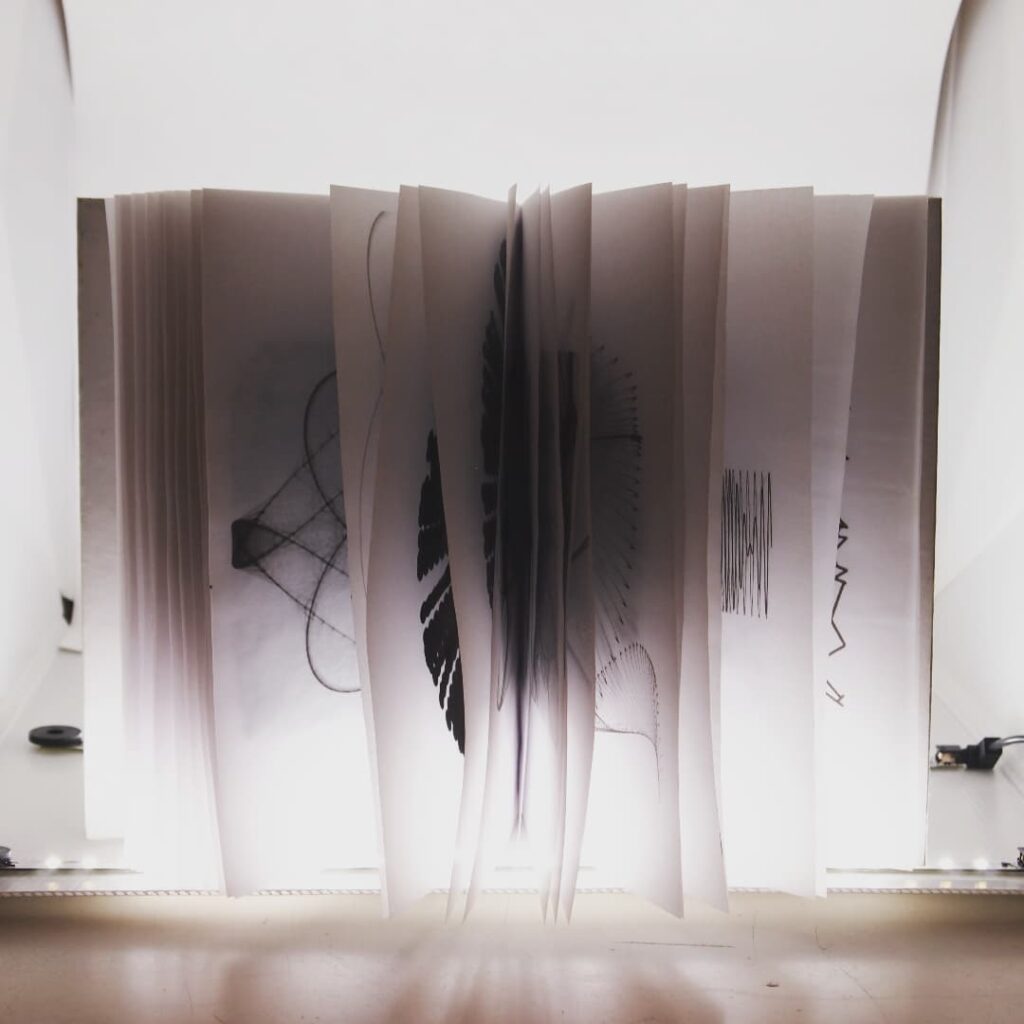
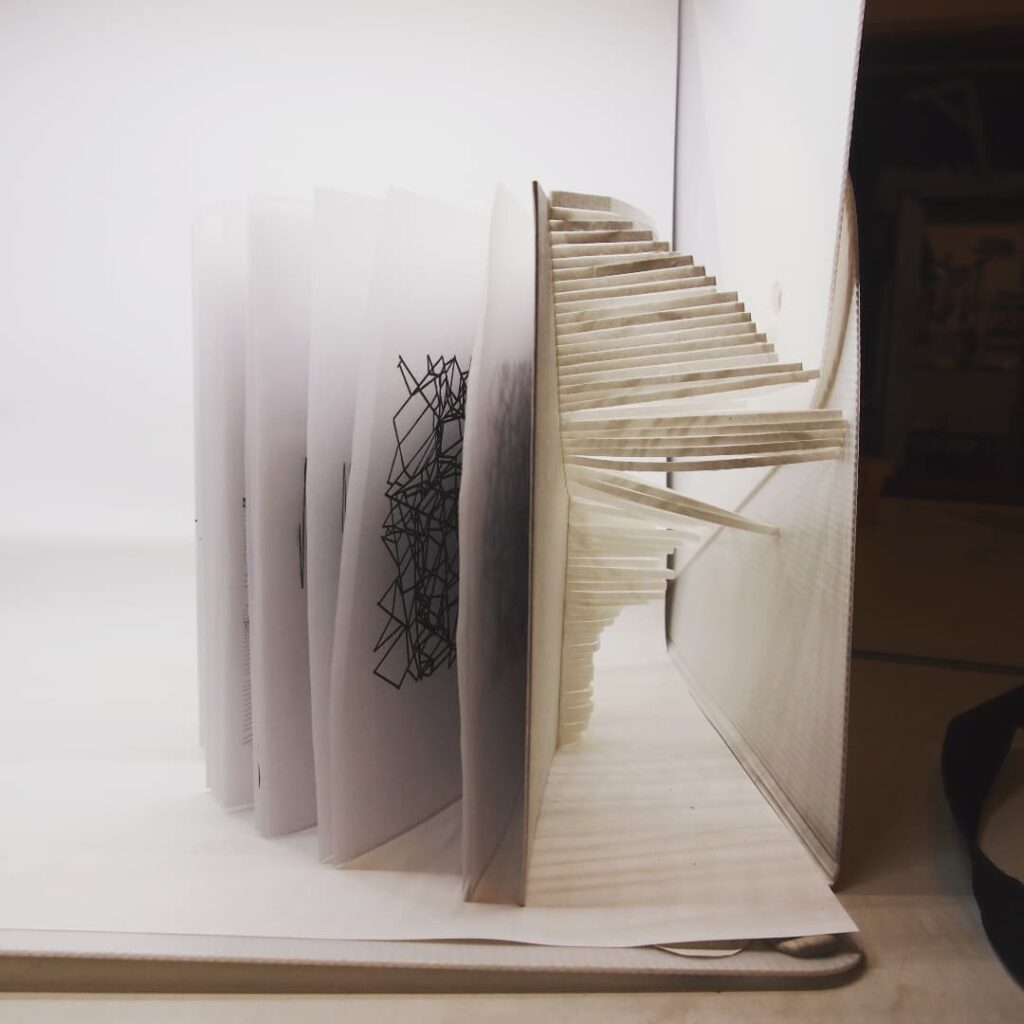
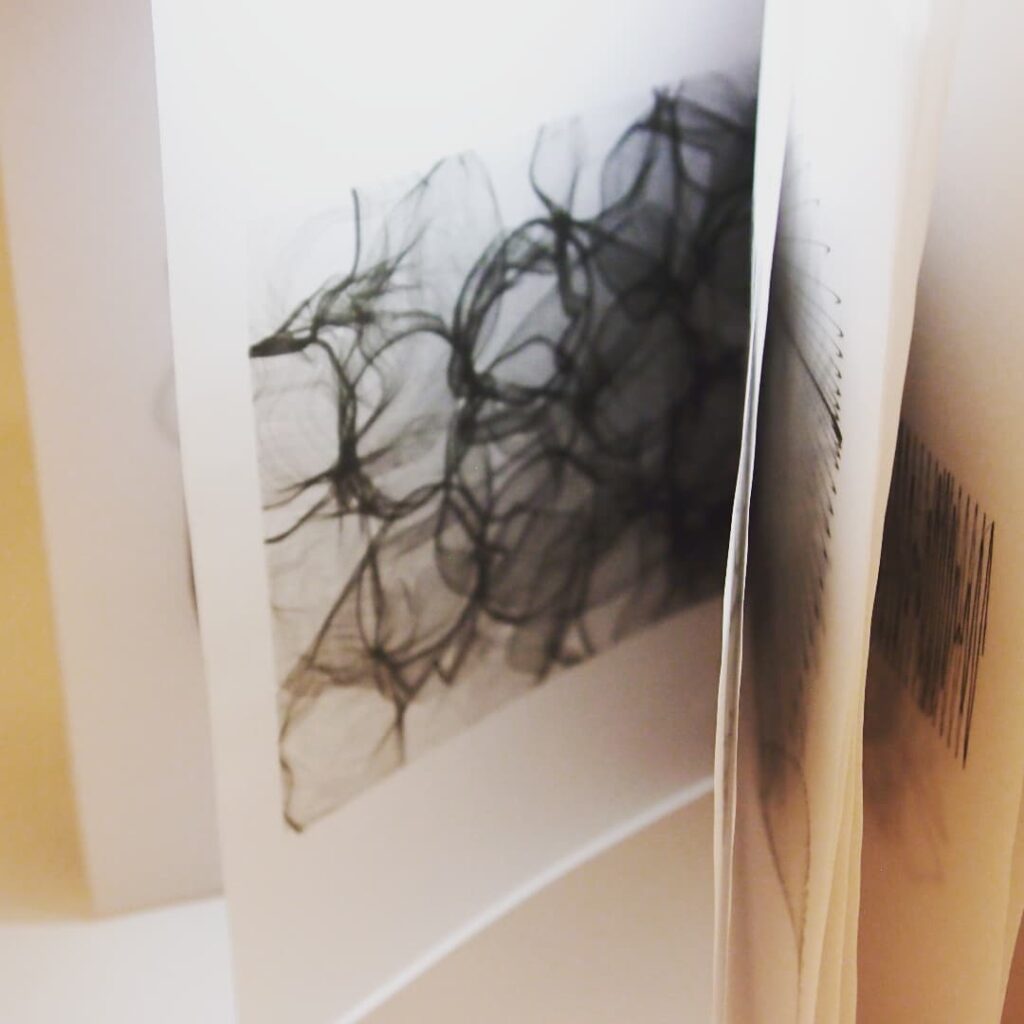
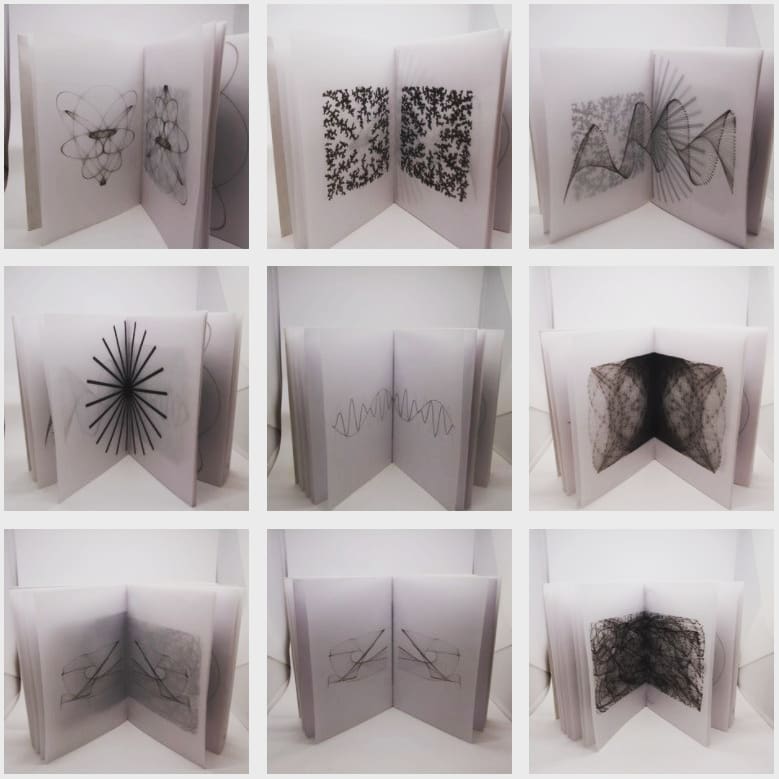

Winding
For the cover I was inspired by Mashahiro Chatani who makes beautiful origami constructions. For the content I created winding forms using the programme Generative Design.
Velvet
Black velvet memory book with everything I could find from my Maartenscollege Songfestival days: programme books, band books, cassette tapes, cd recordings, videos on dvd, pictures.
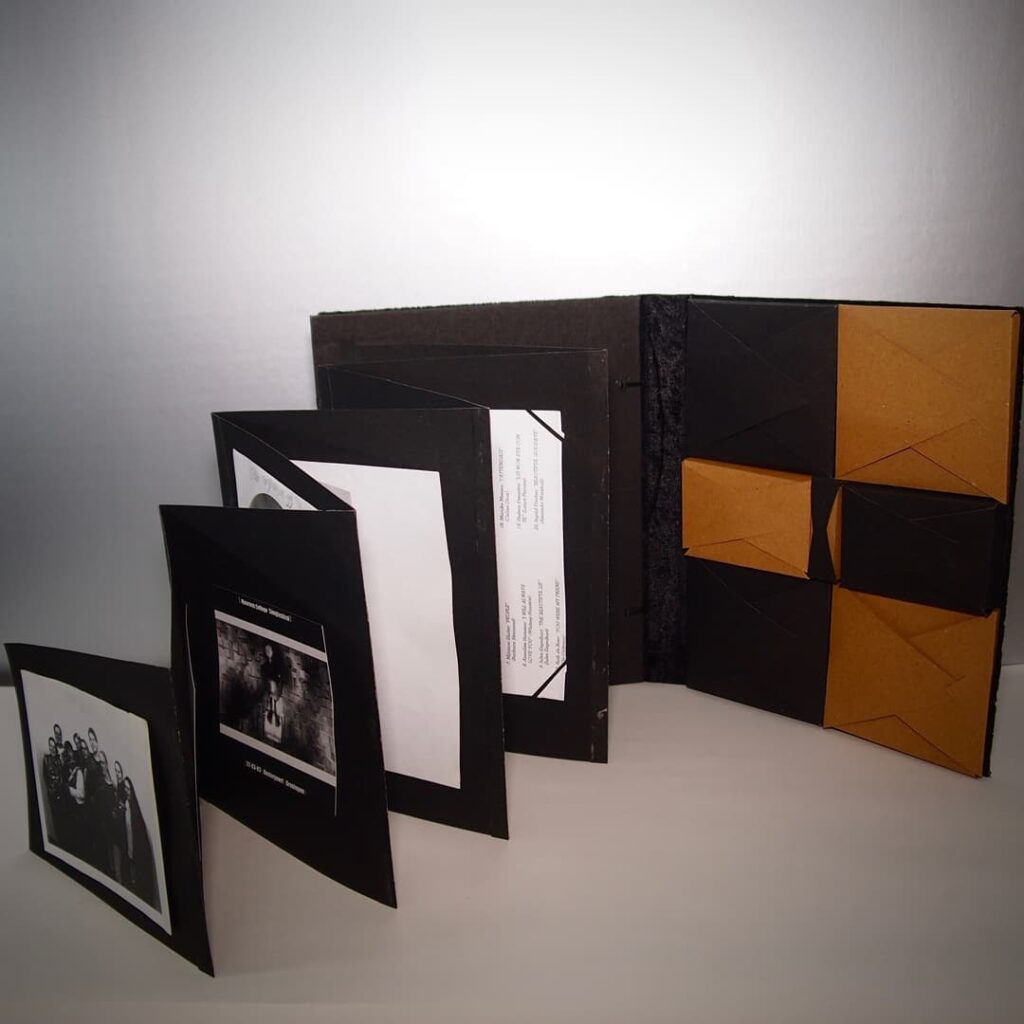
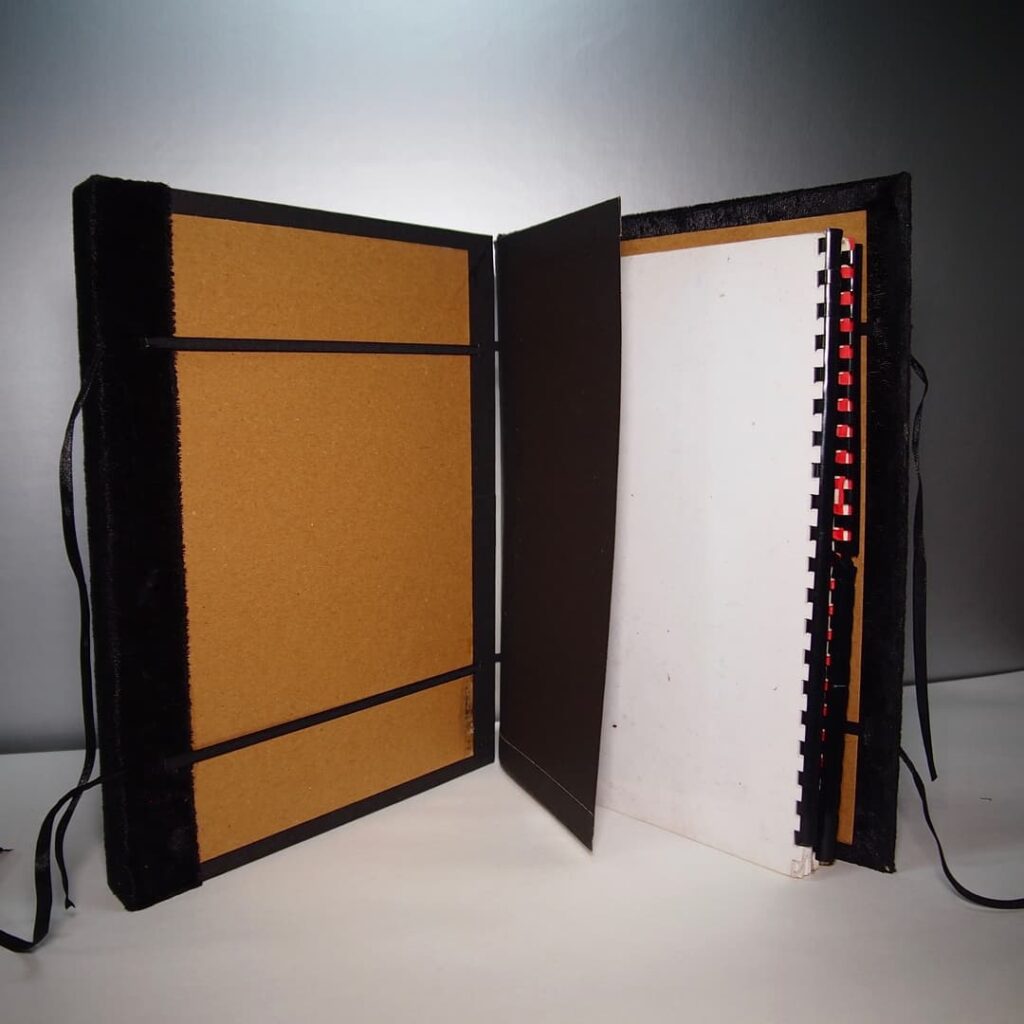

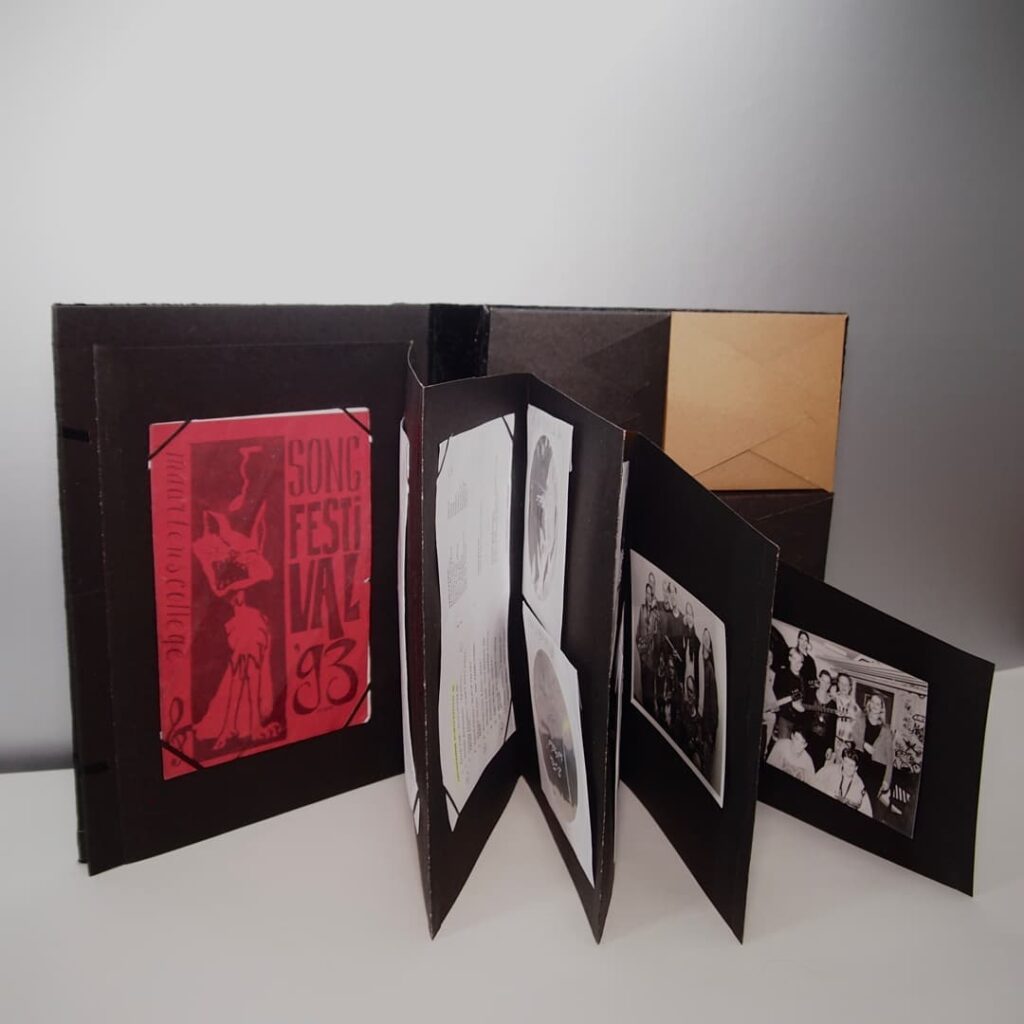
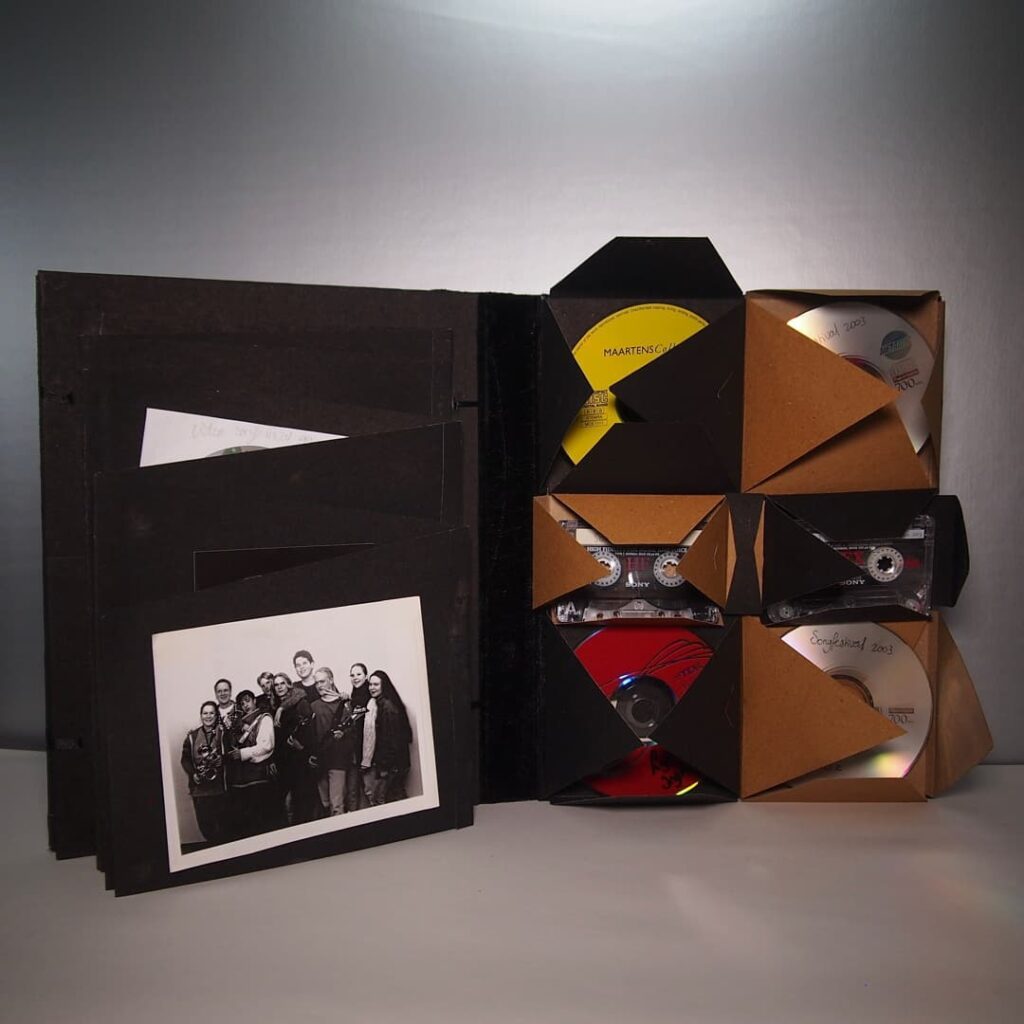


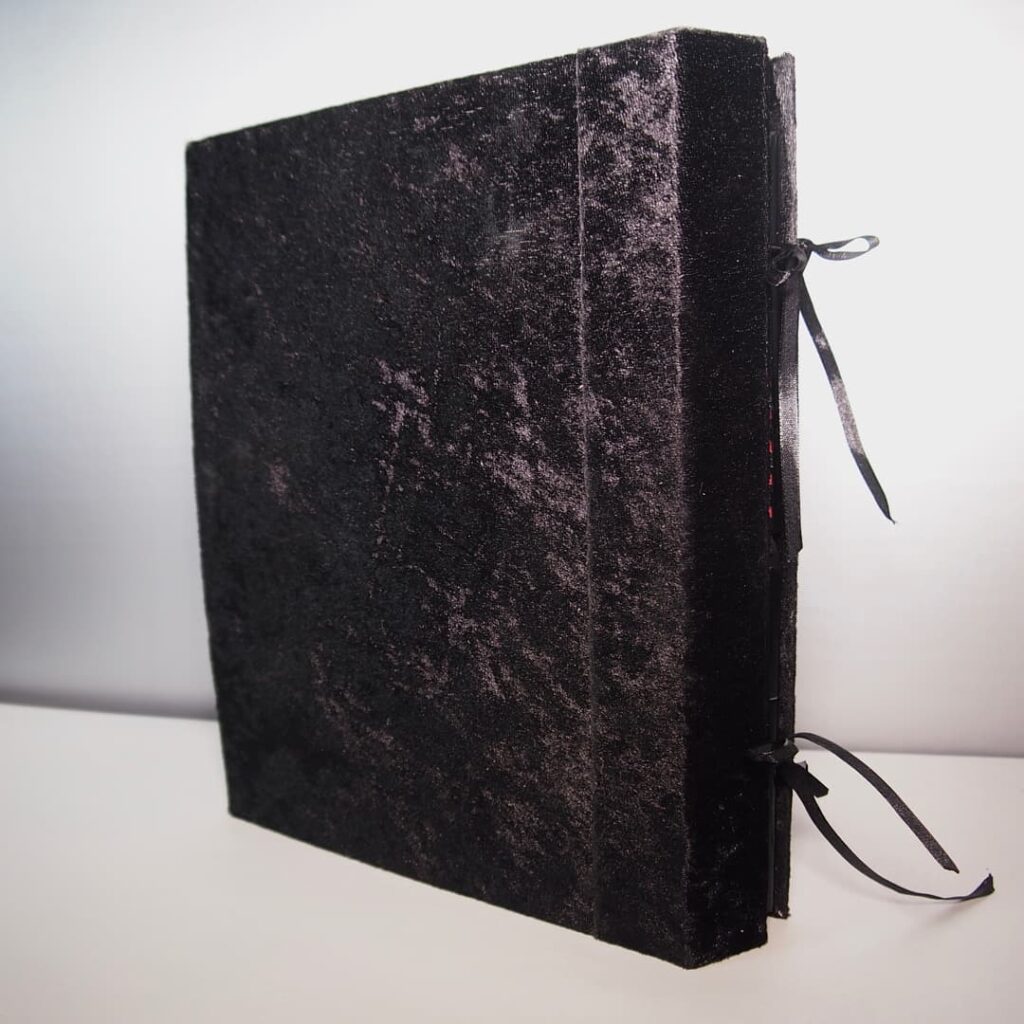
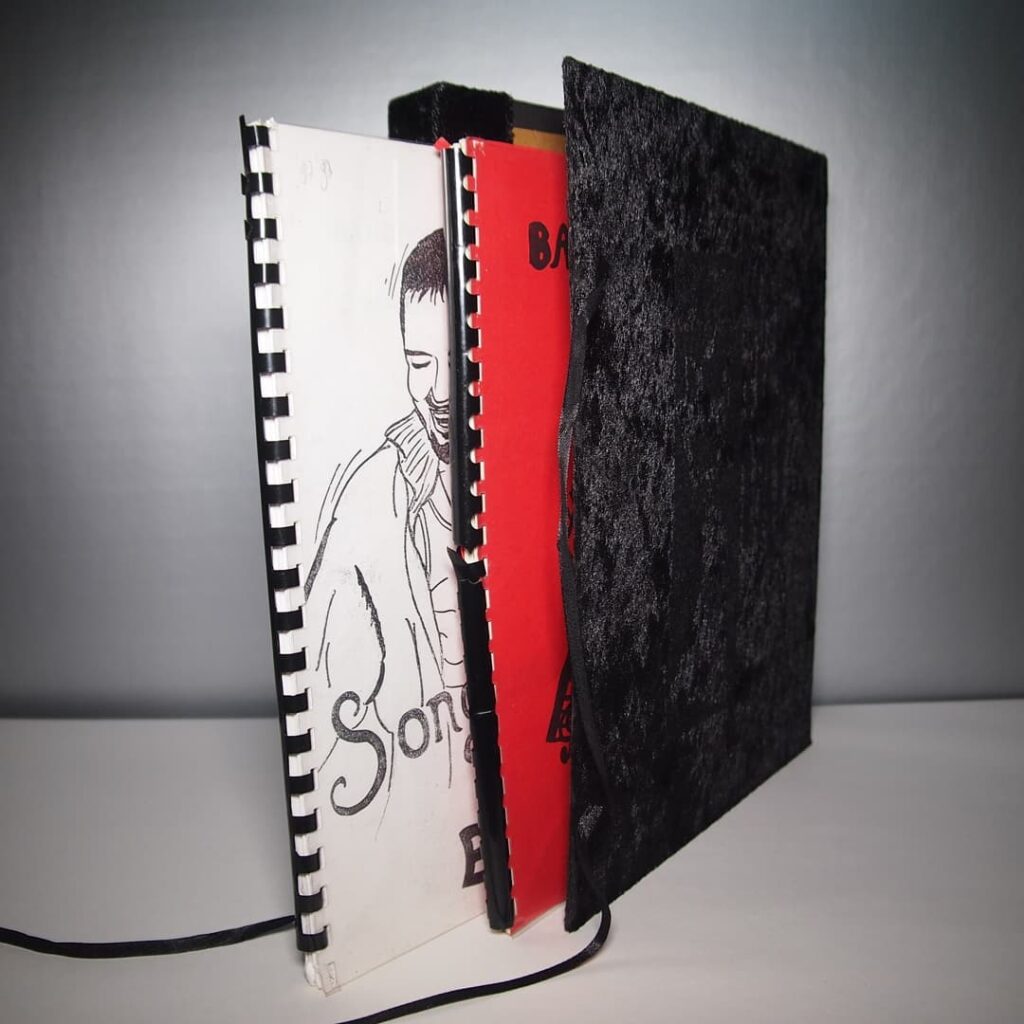
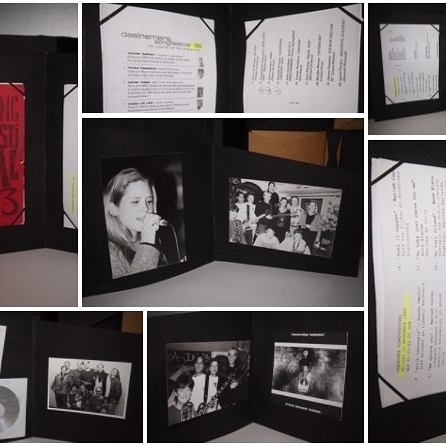
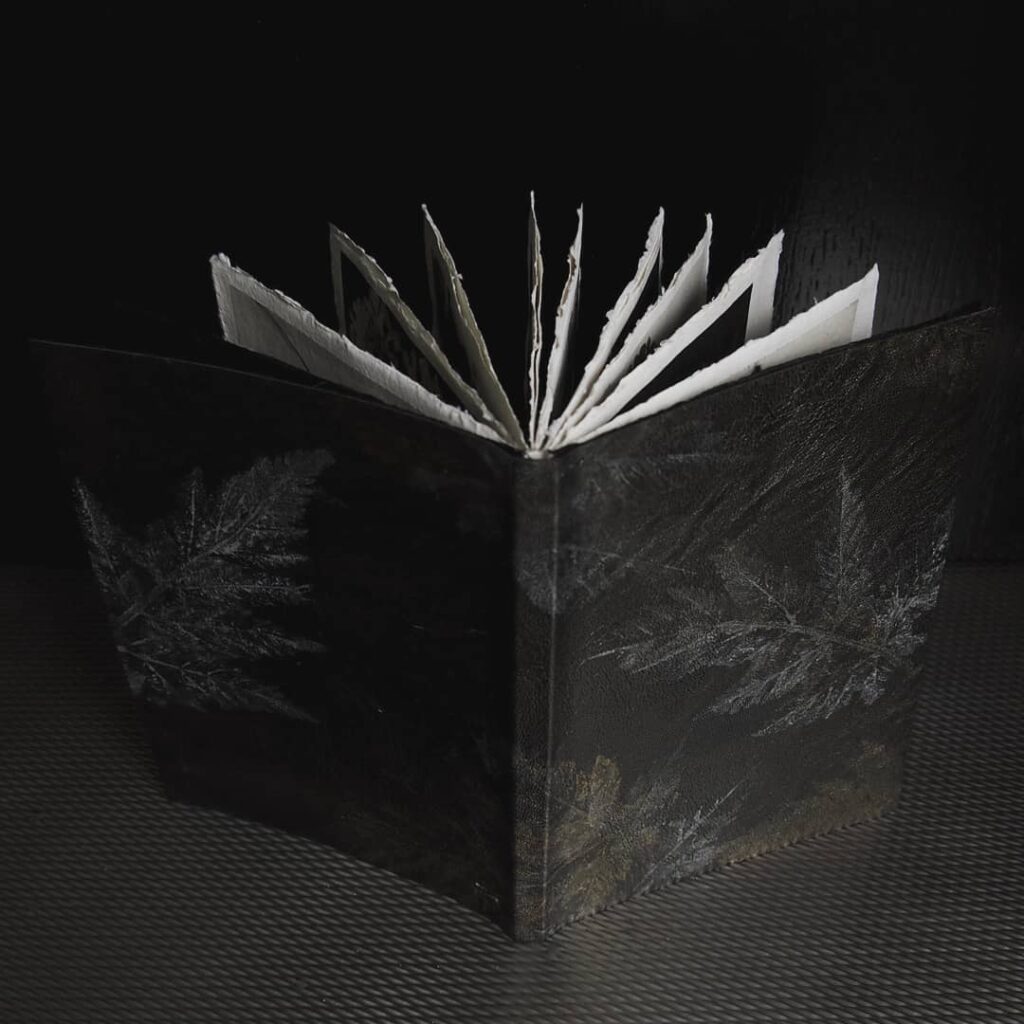
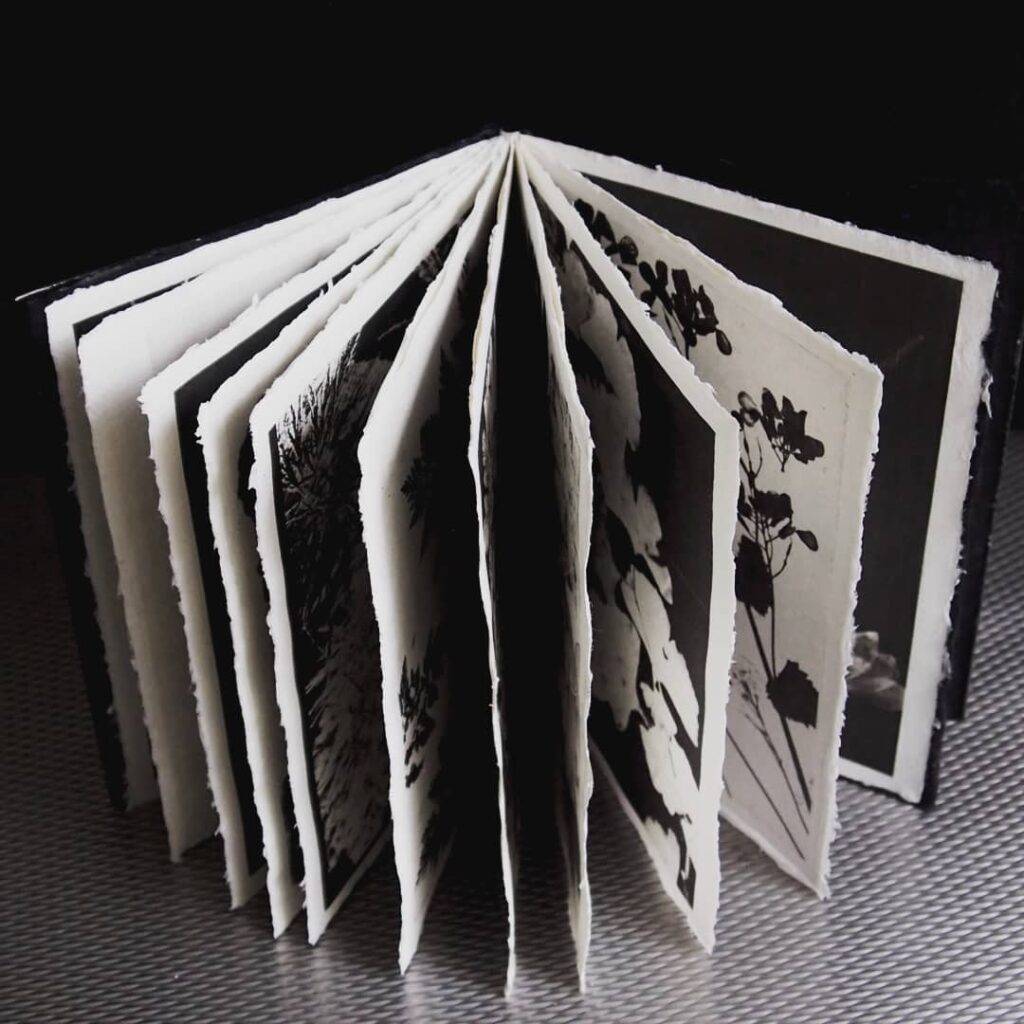

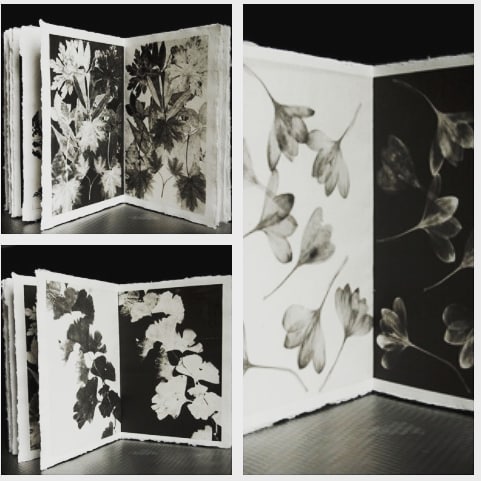


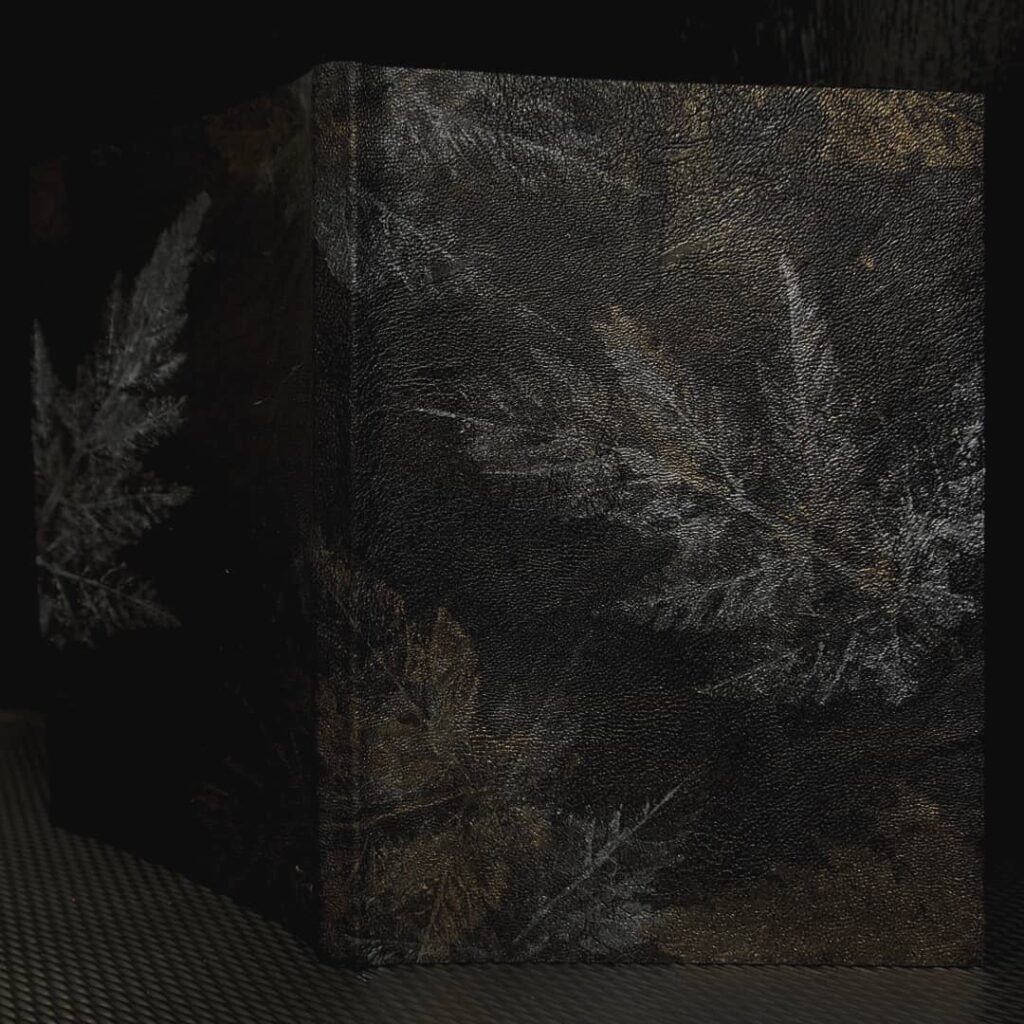


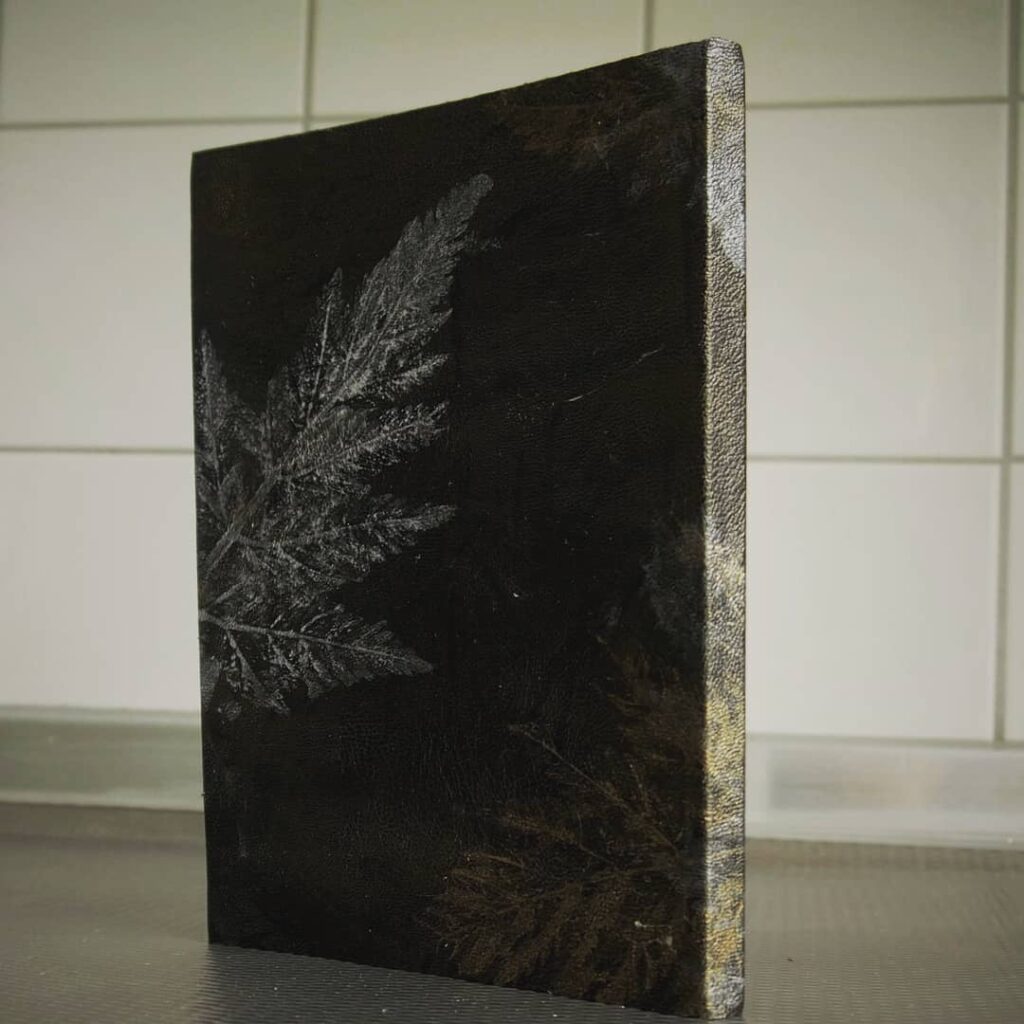
Black and White
Handmade binding without stitches as taught by Susana Dominguez Martin. Painted leather covers. For the images I arranged some of my collection of dried flowers and leaves on my printer and scanned them. I used an online editing tool to turn them into black and white images and to invert the images as well. Then I printed the images on Wenzhou paper, which I then glued onto Khadi paper.
Fruit
Leporello with handmade papyrus from fruit. The fruits that were used: pineapple, apple, strawberry, kiwi, pear, nectarines.
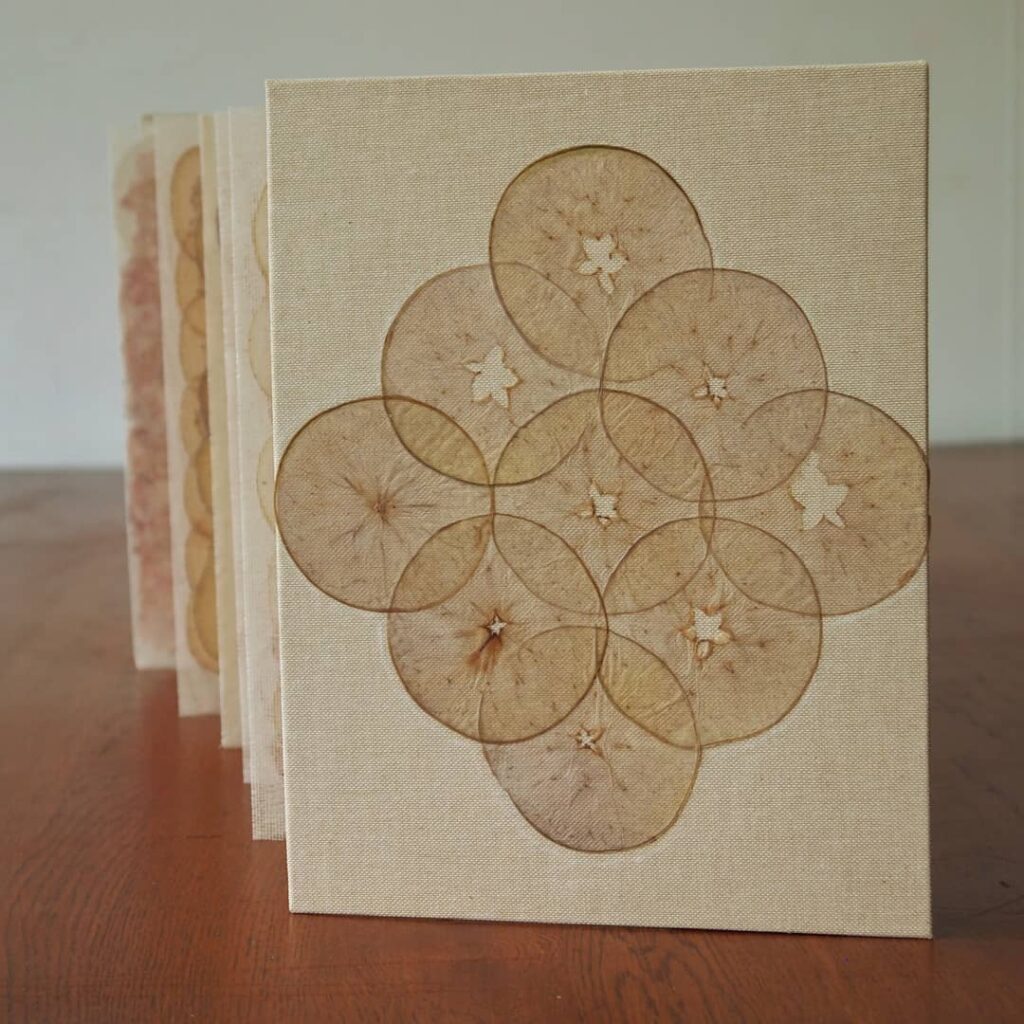
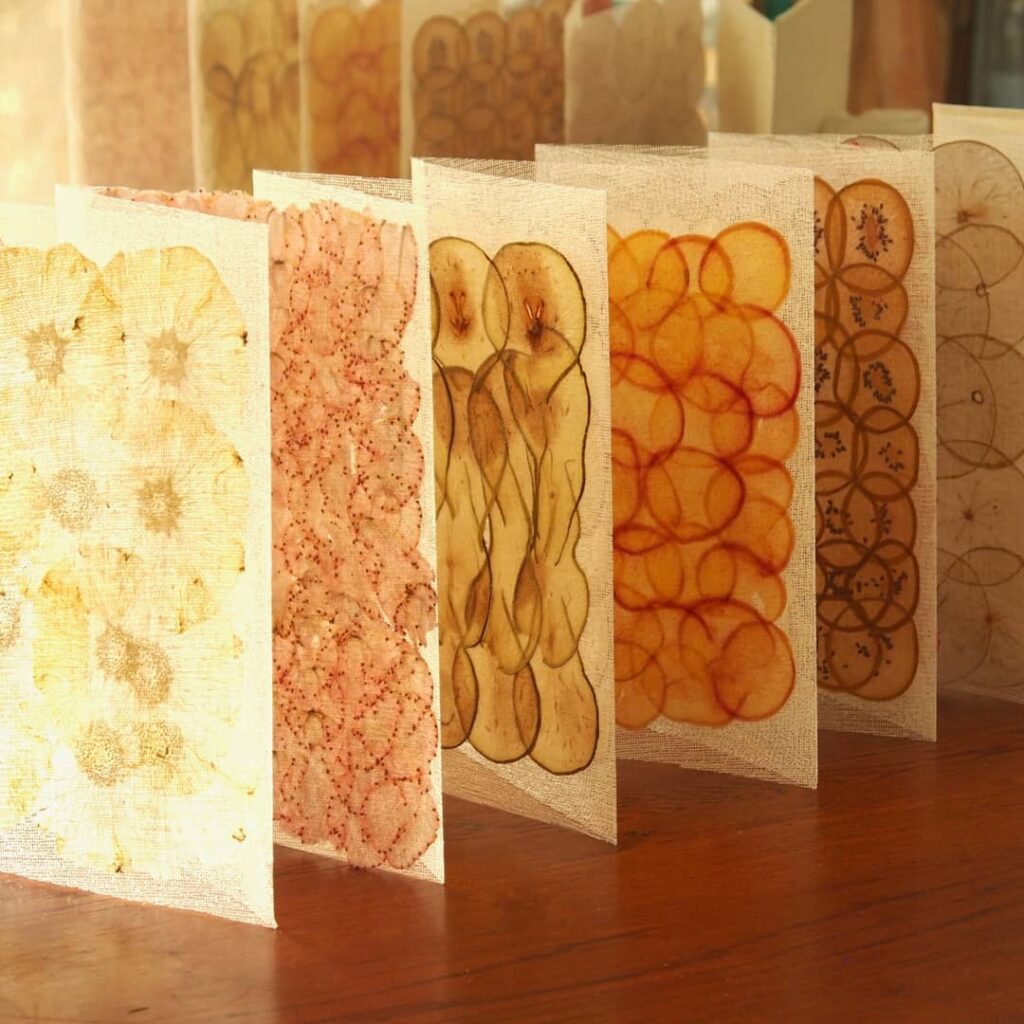
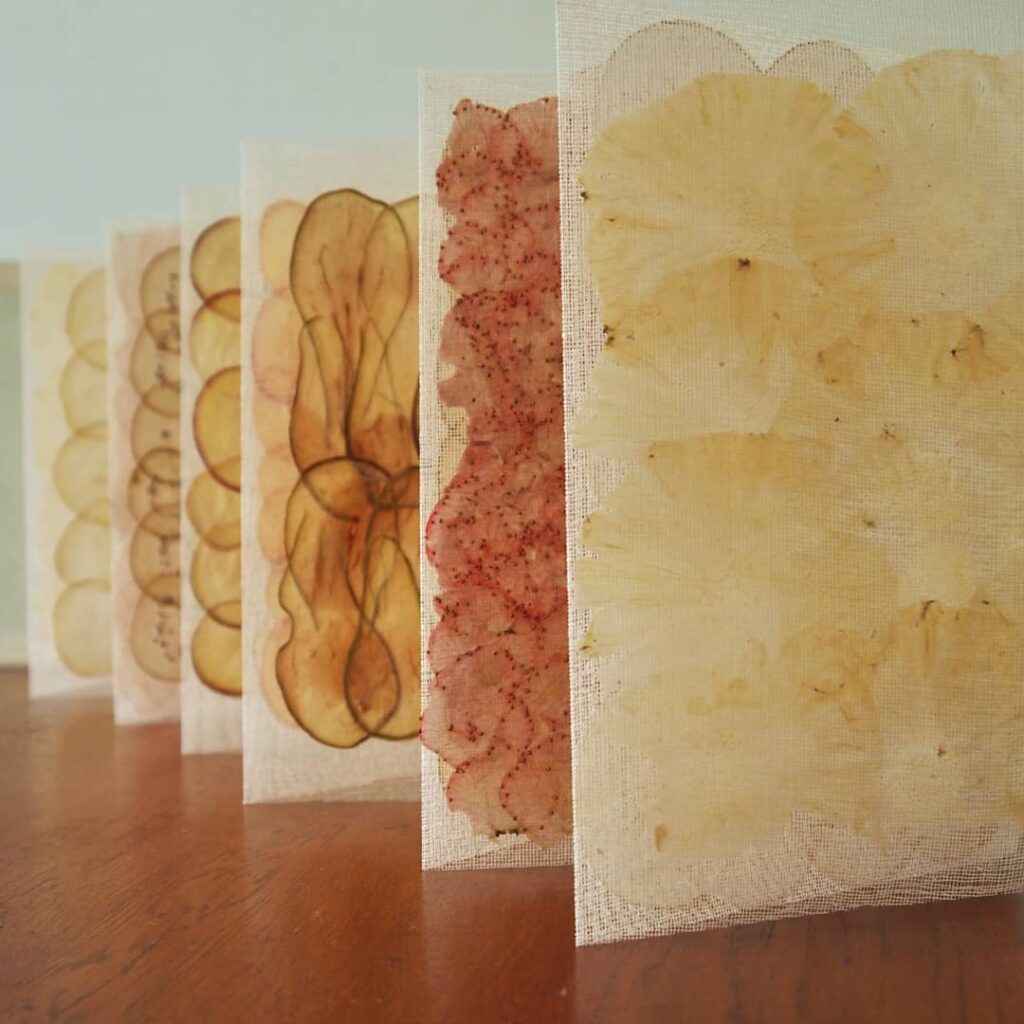

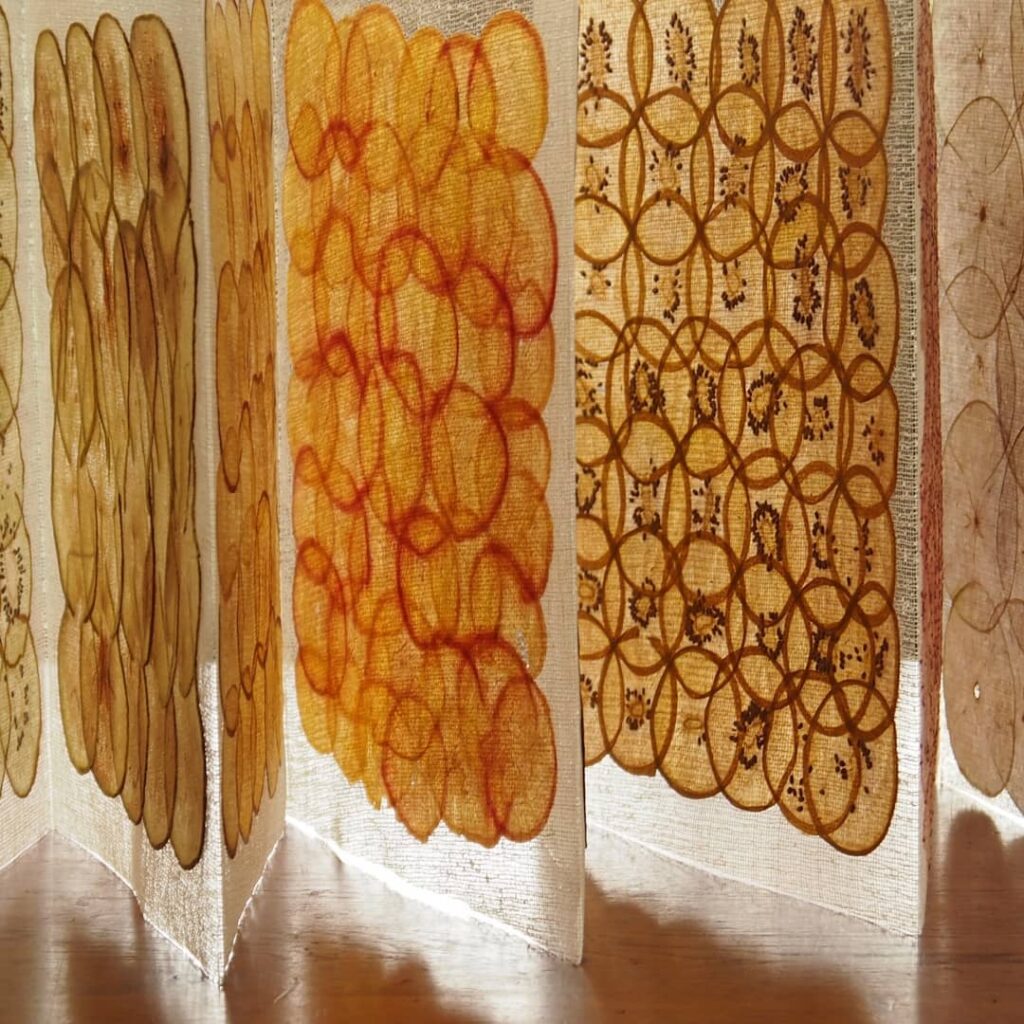
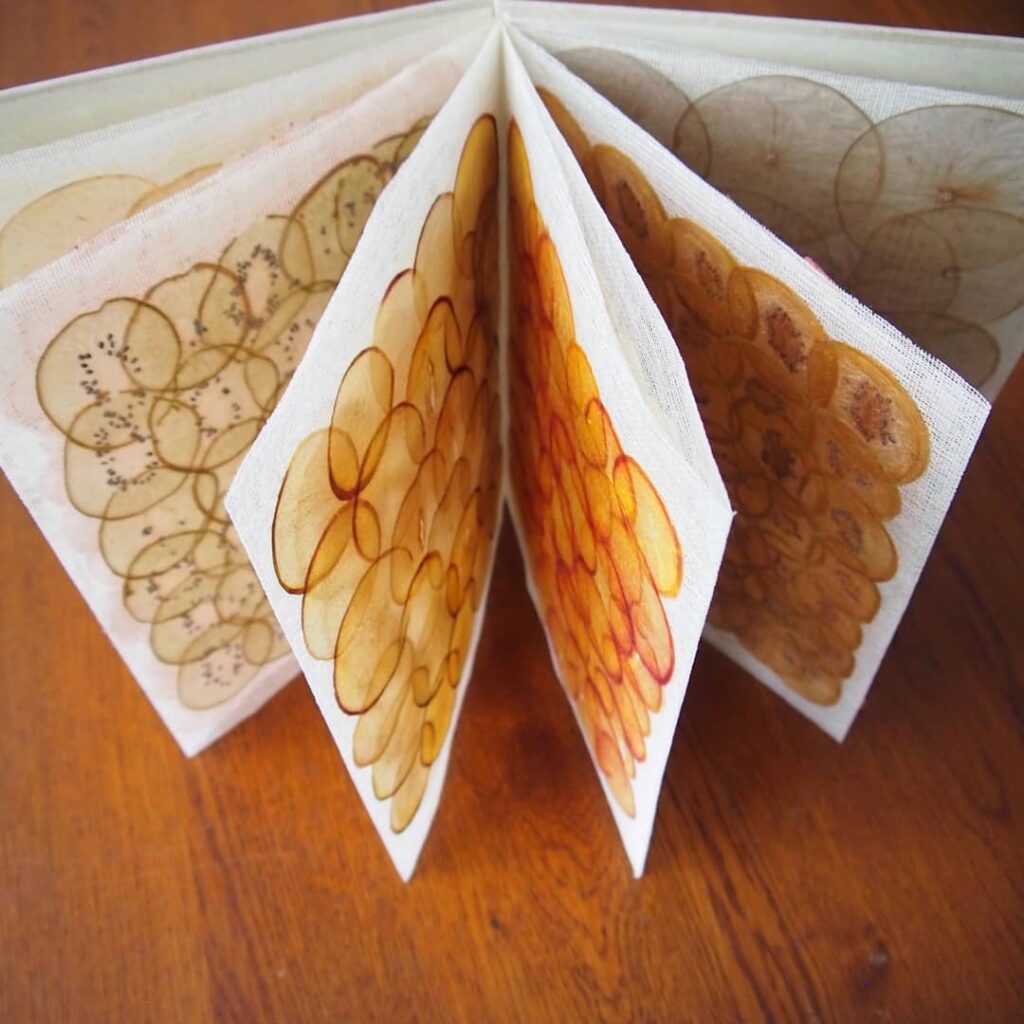

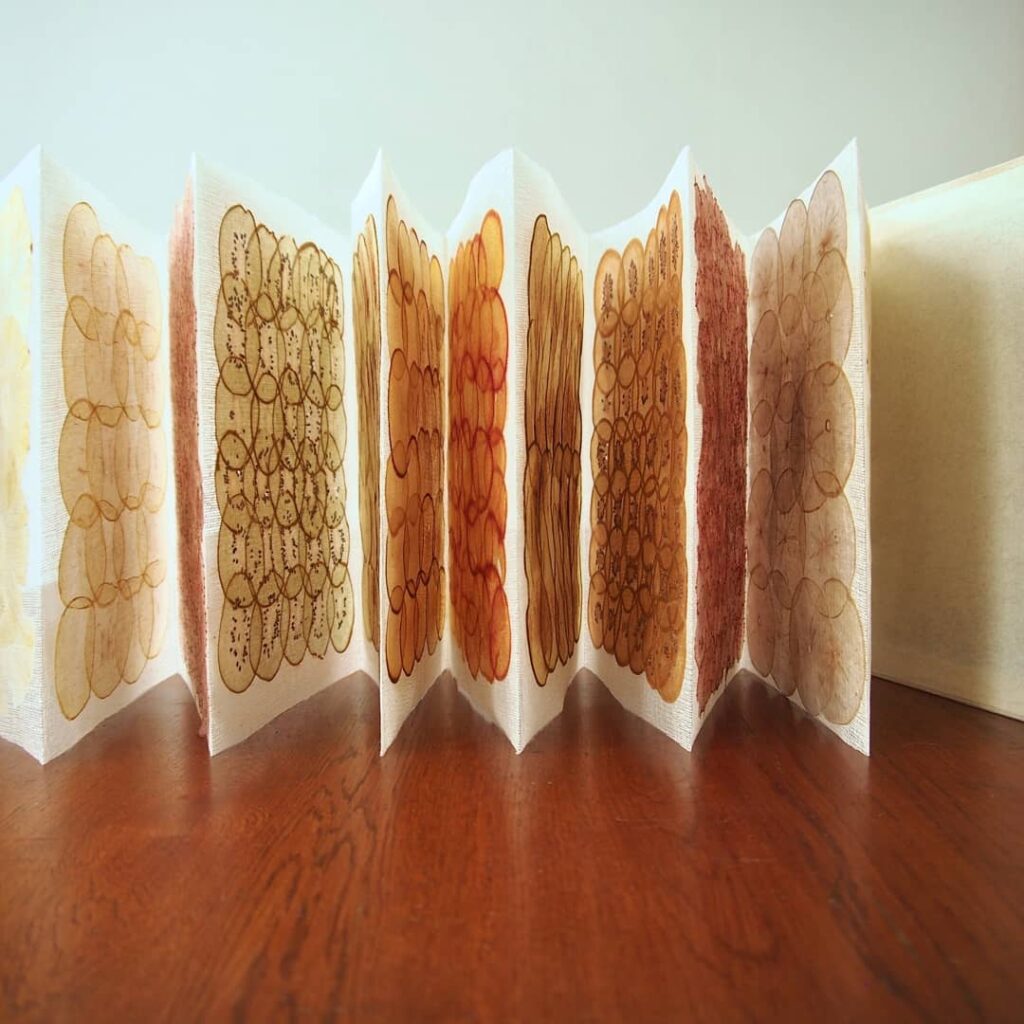
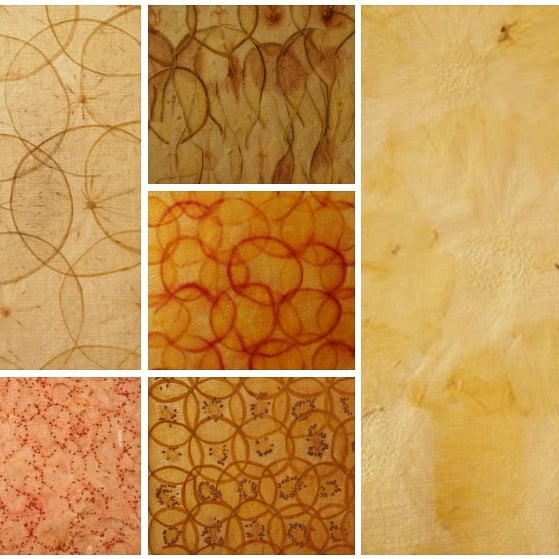
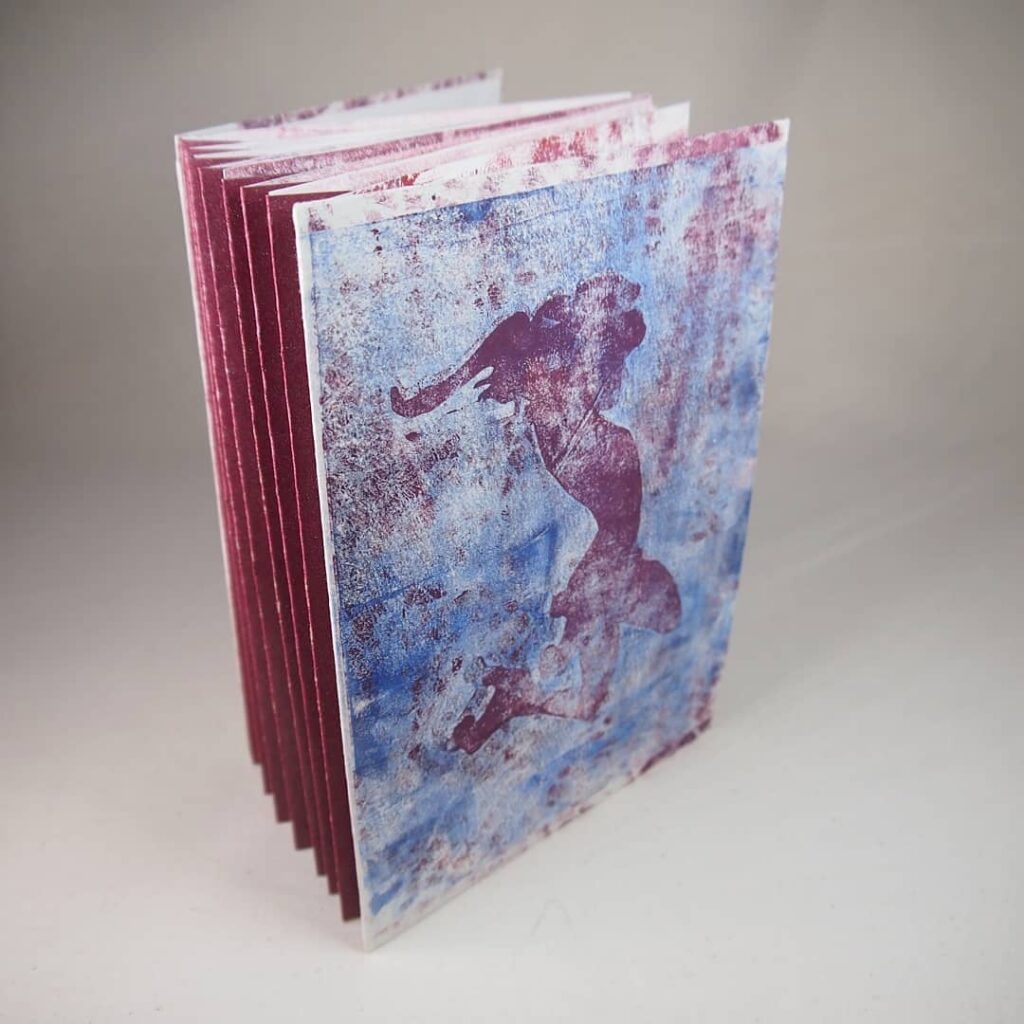


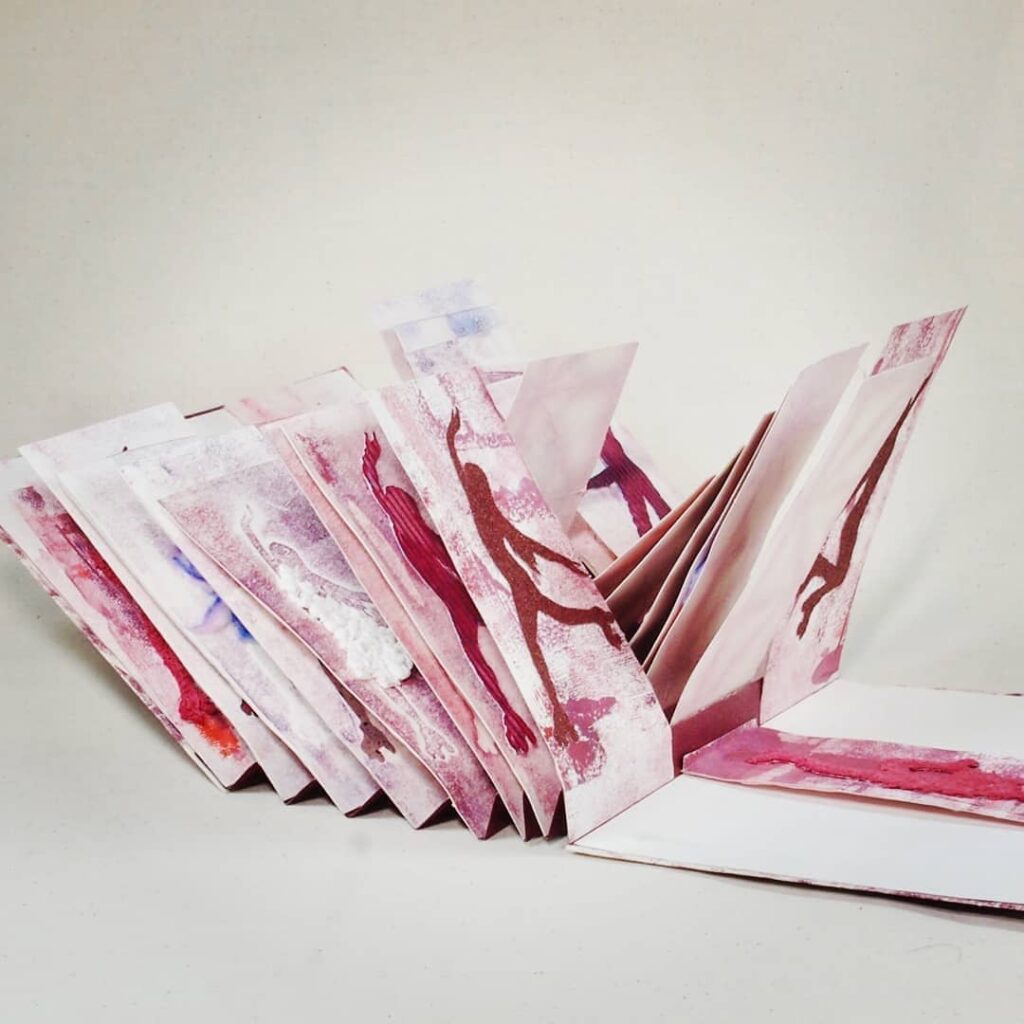


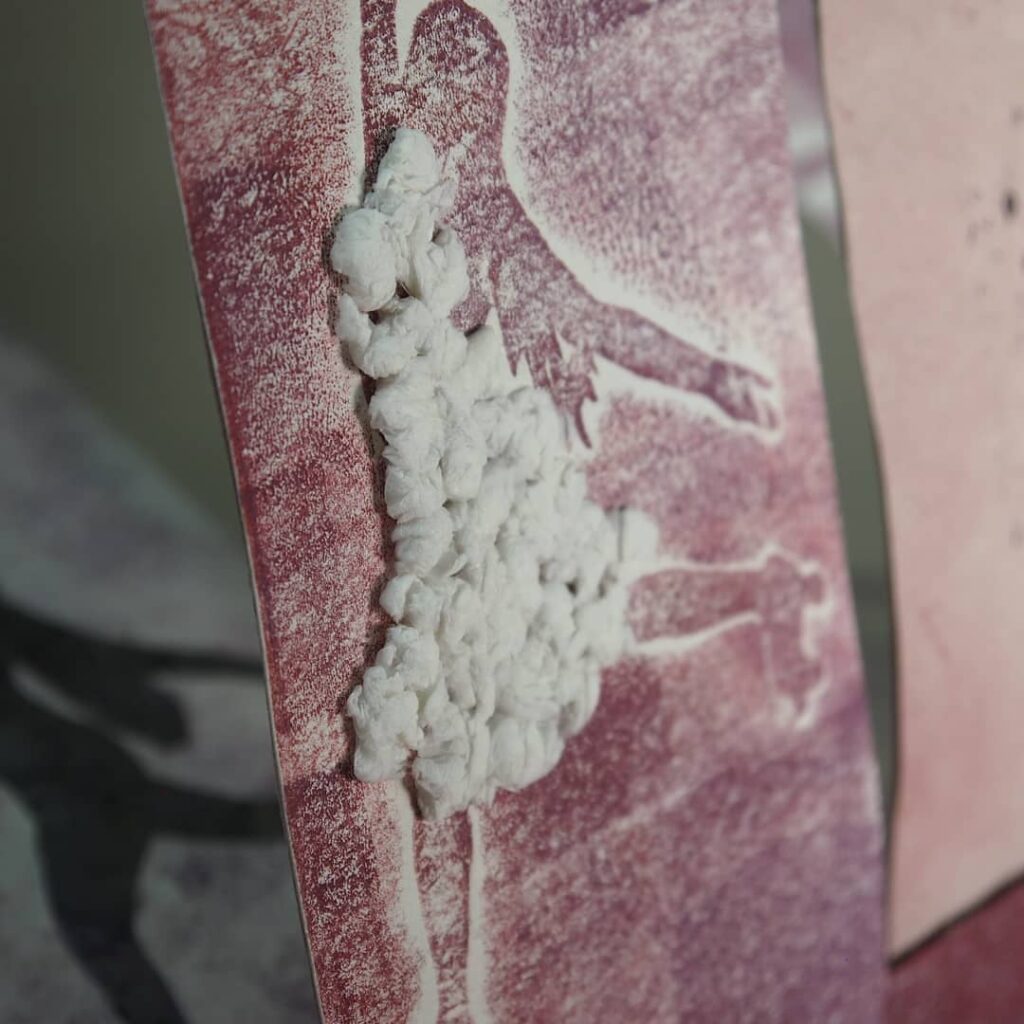
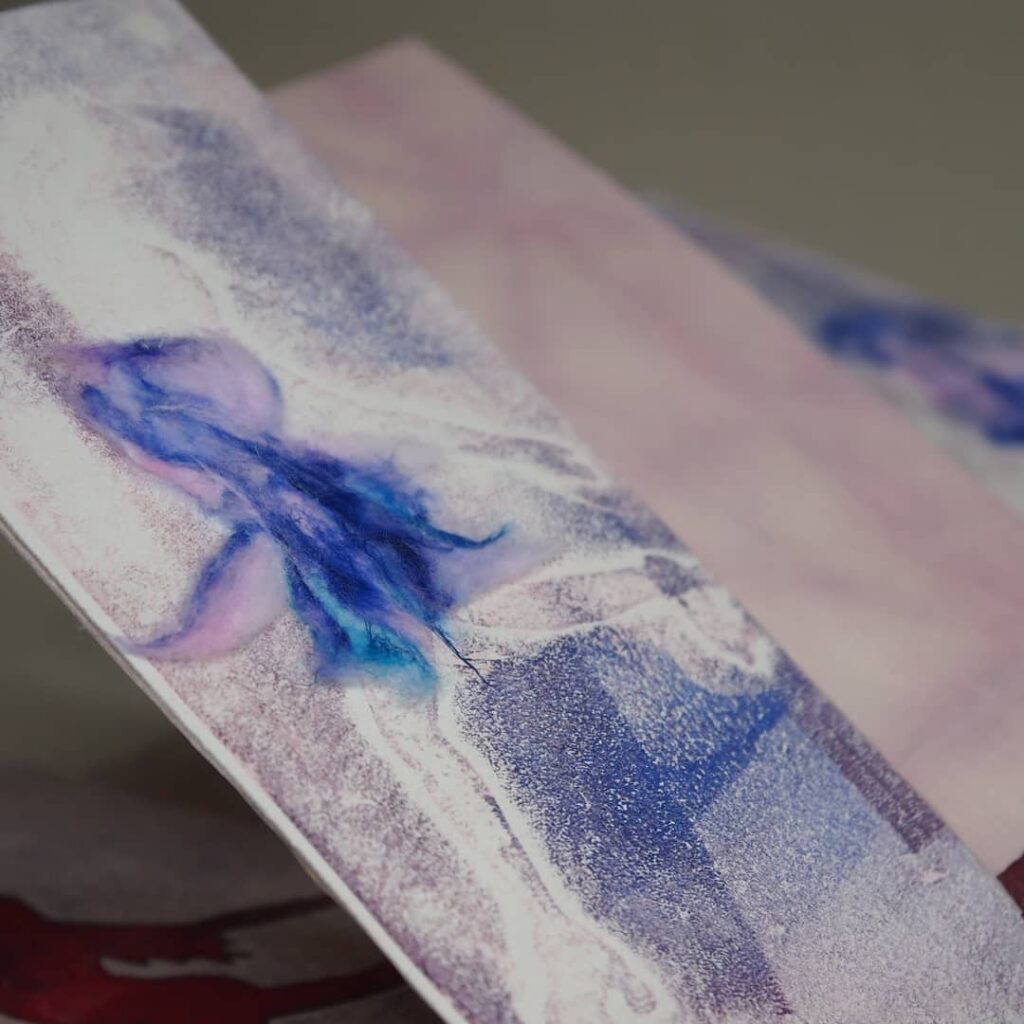

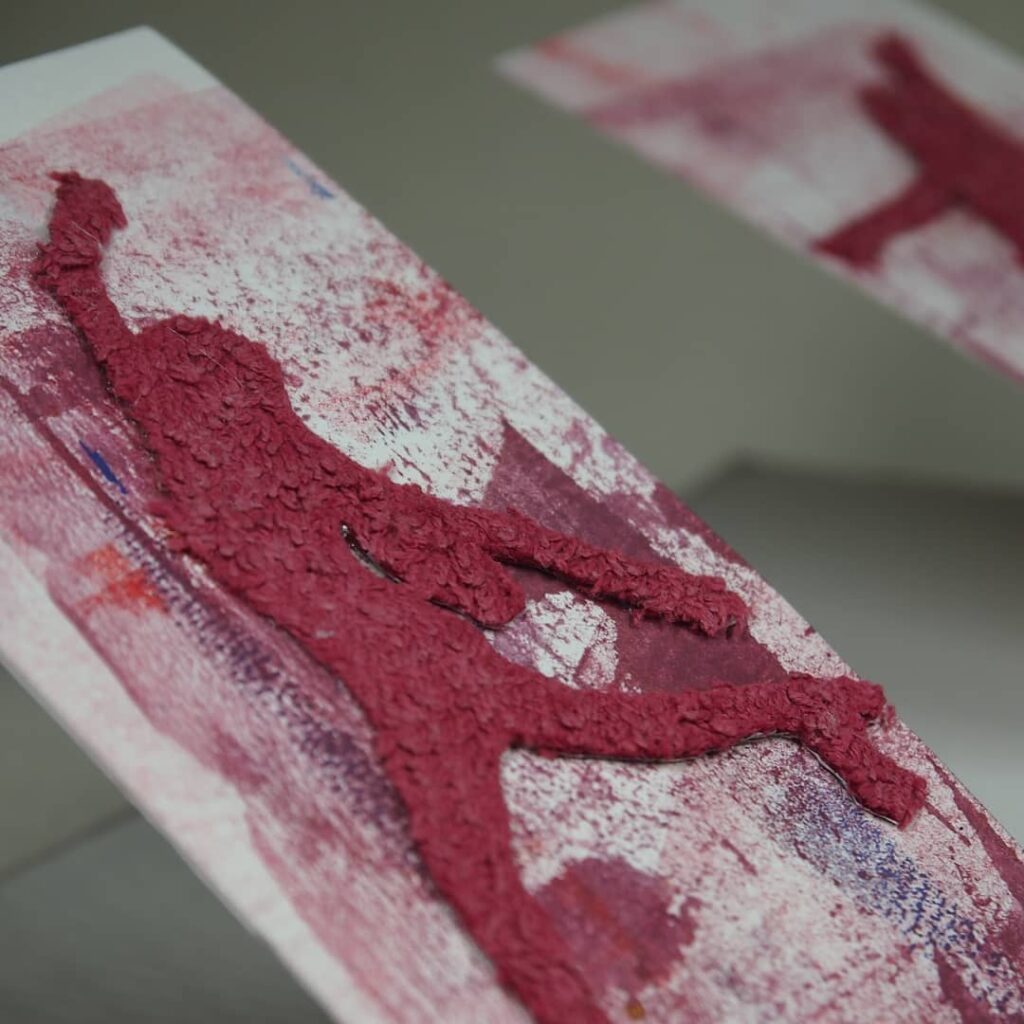
Body Language
For this book, I drew inspiration from a texture book my mother made for me when I was a baby, from Muybridge’s pictures of motion, (hence the repetition in each row), and from the beautiful poses of people on rollerskates (whose body language to me expresses pure freedom and joy). The Binding is a Hedi Kyle’s flagbook binding.
Fenced
Paper-casted cover (casted in a 3-d printed mold), piano-hinge binding, containing dried flowers and leaves and prints of dried flowers and eaves


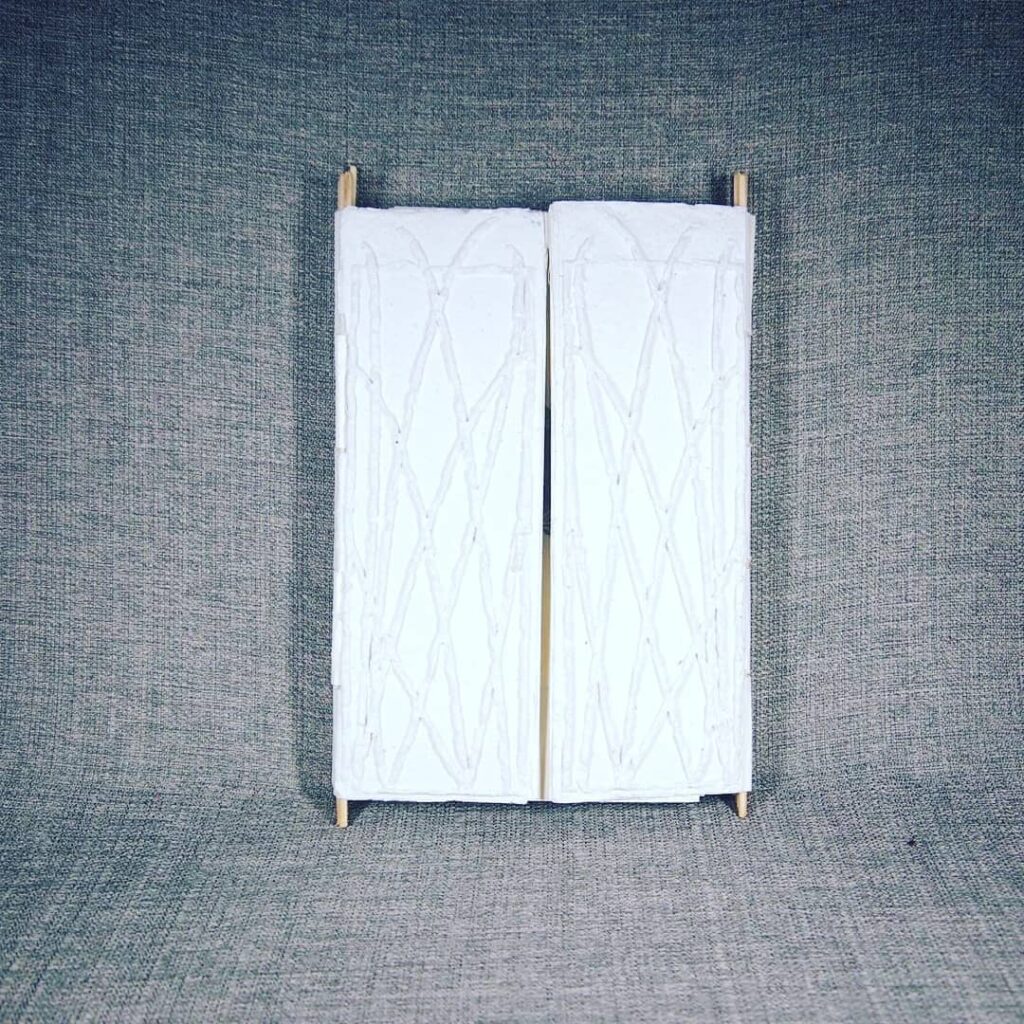
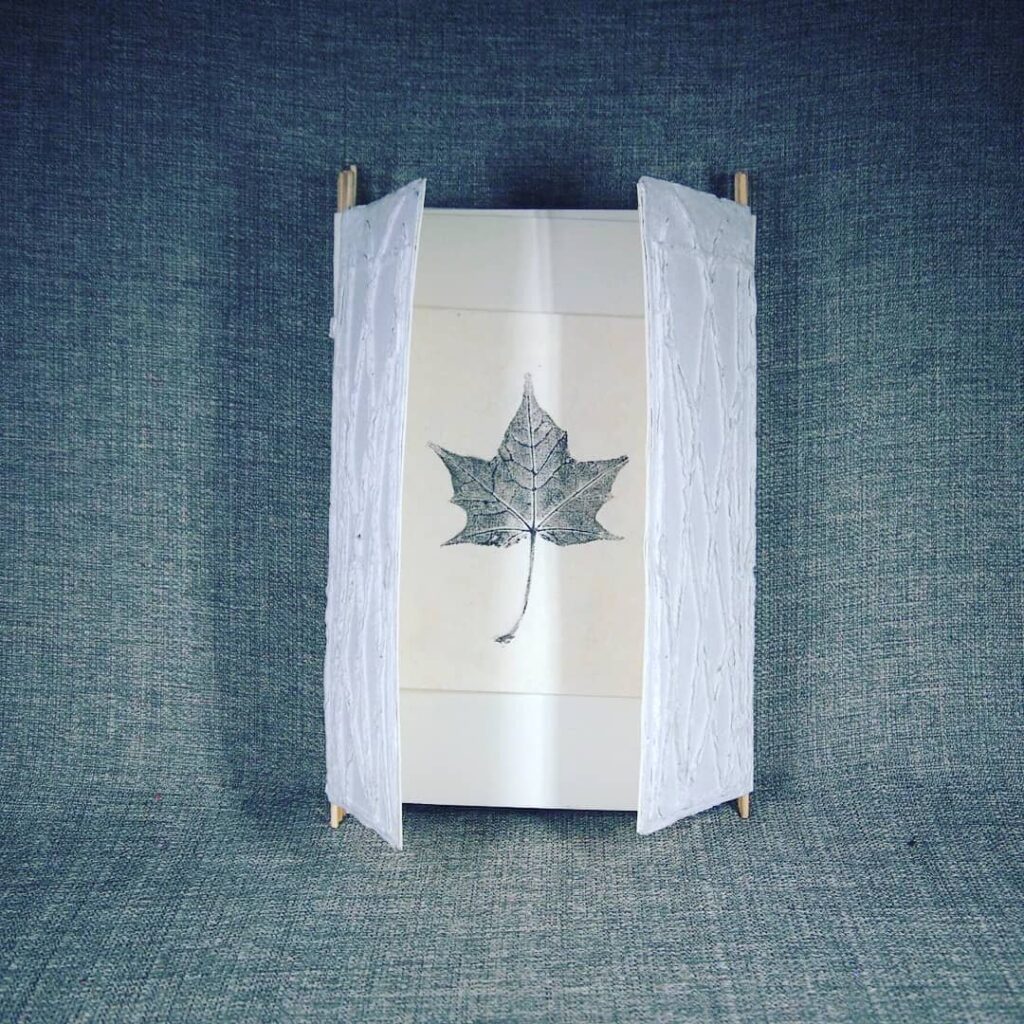



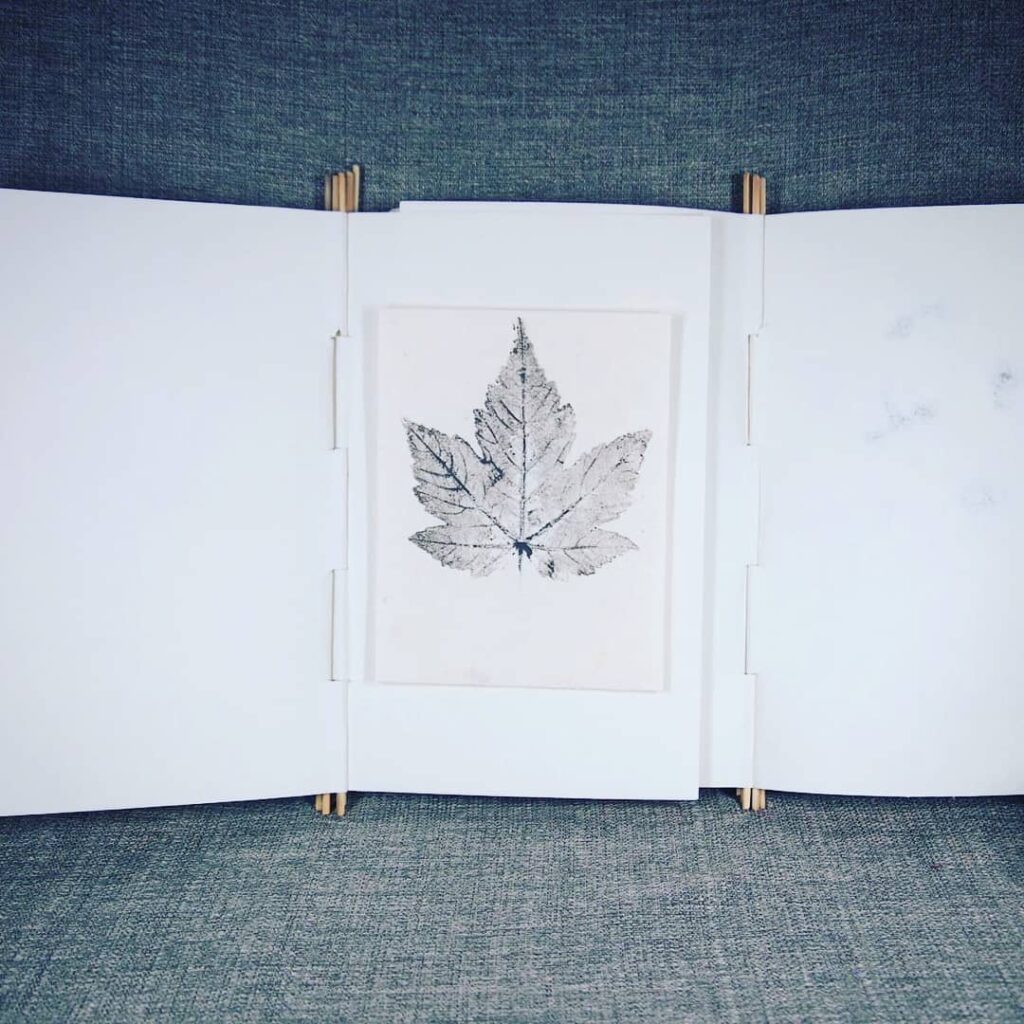


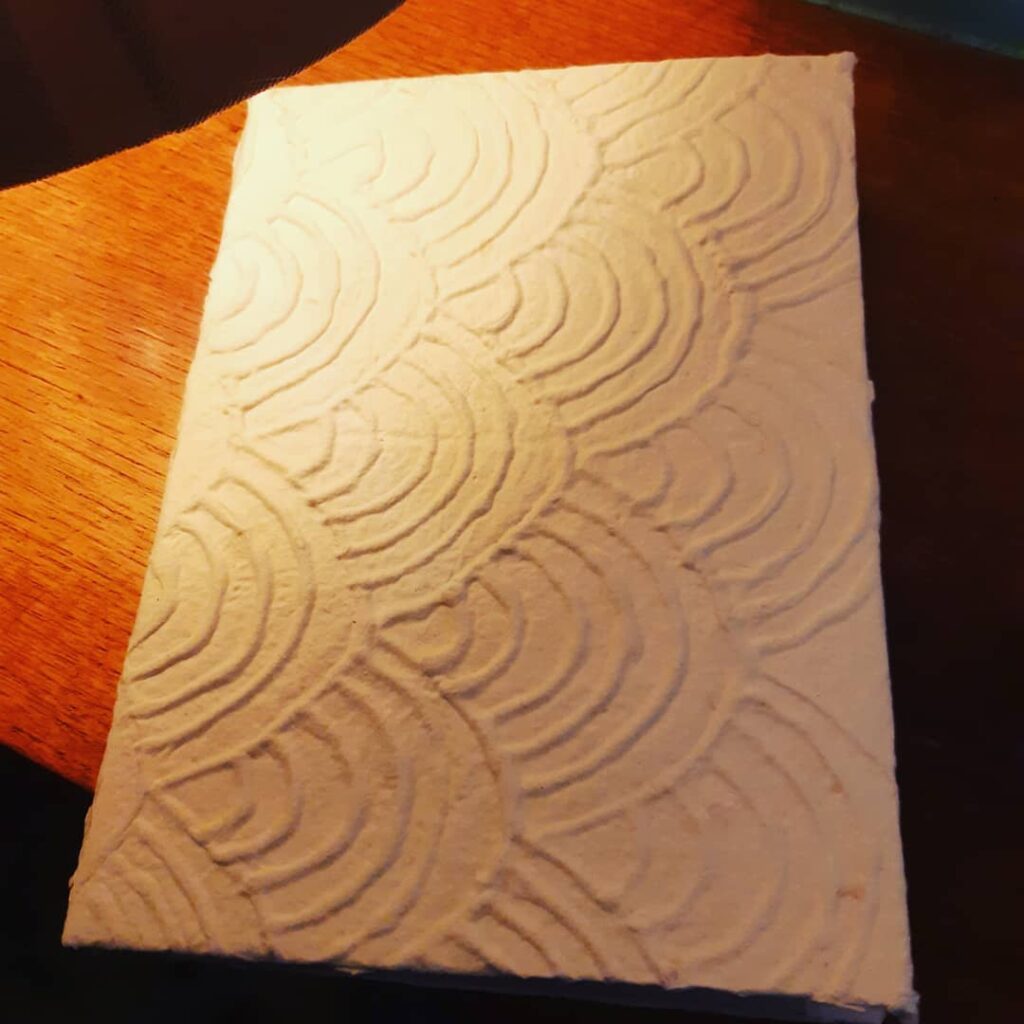

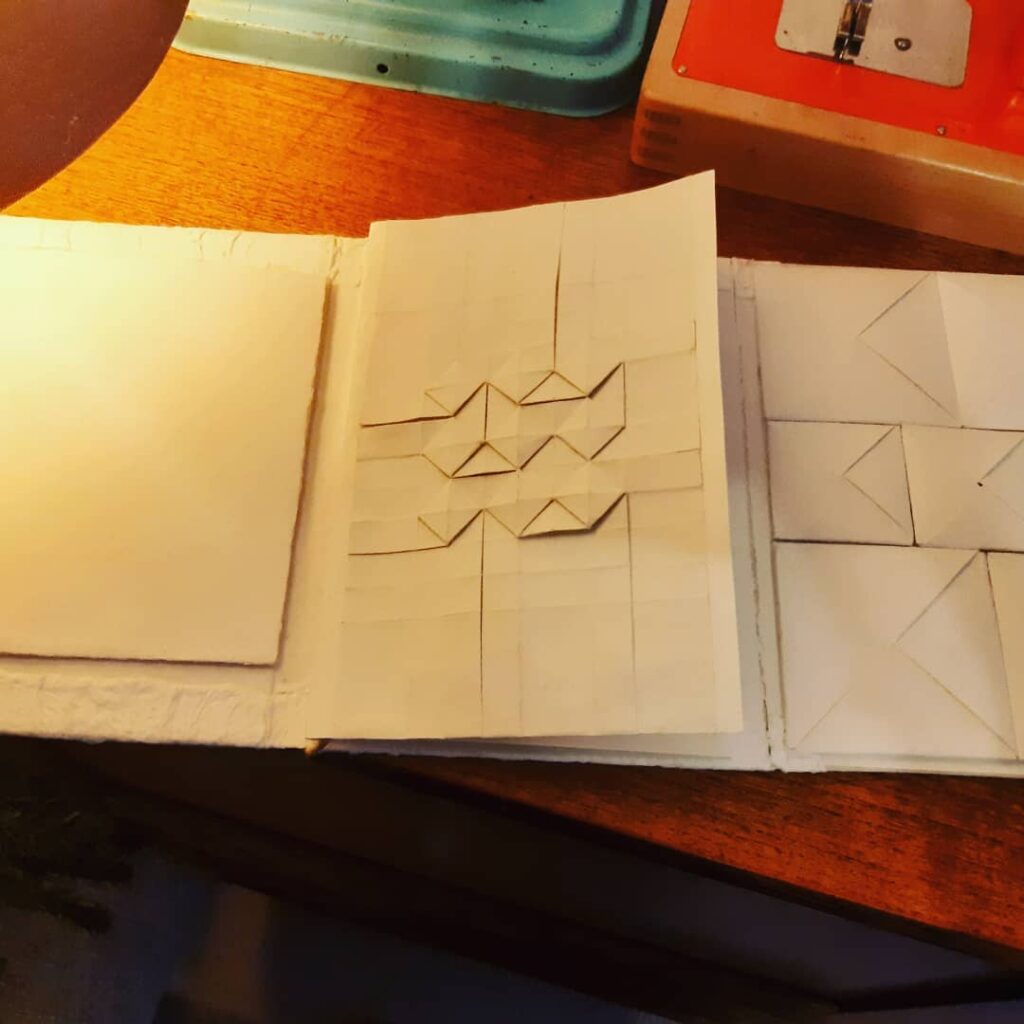
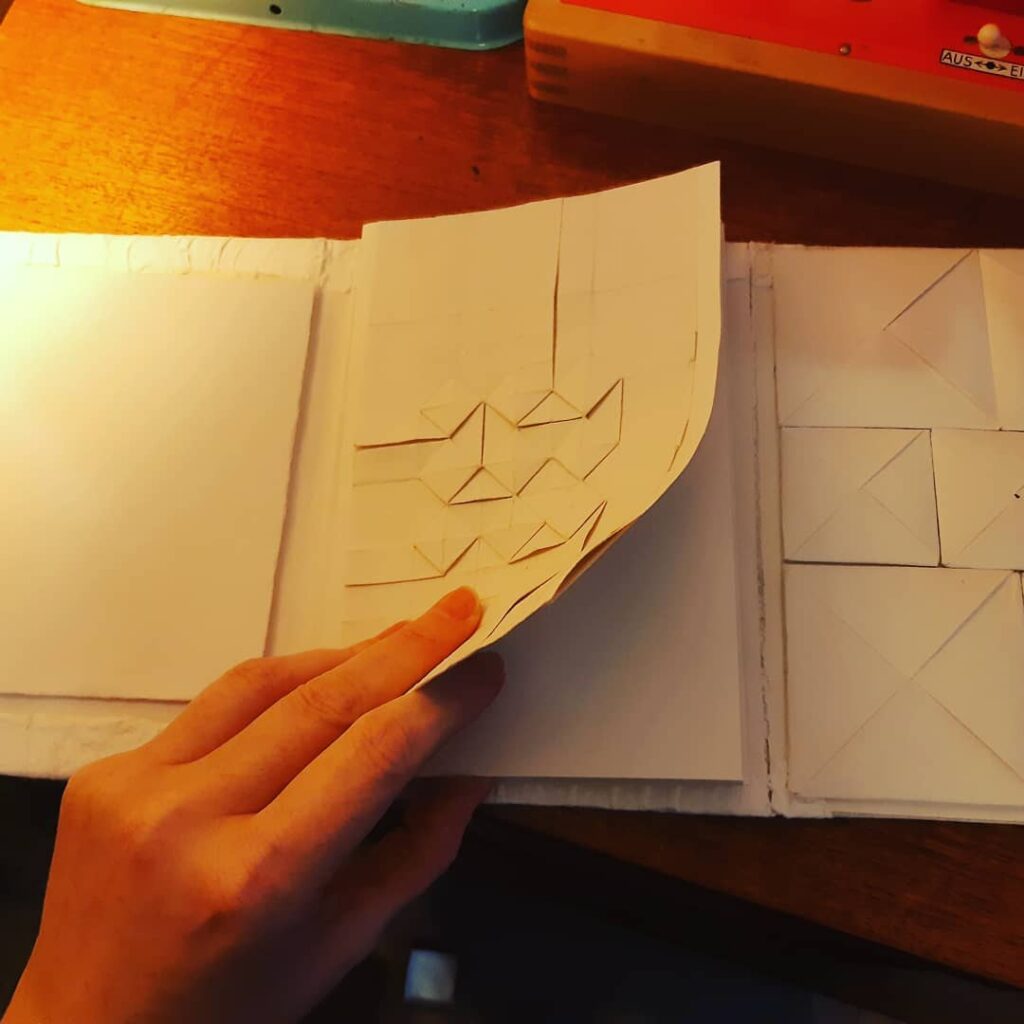



White
a 3-panel notebook. On the inside of the front cover is an envelope and on the inside of the back cover are some puzzle purses to collect loose papers, or small, thin sheets of metal. And in the middle is a sketch book for drawing designs and/or writing notes.
Red
A 3-panel notebook. On the inside of the front cover is an envelope and on the inside of the back cover are some puzzle purses to collect loose papers, or small, thin sheets of metal. And in the middle is a sketch book for drawing designs and/or writing notes.
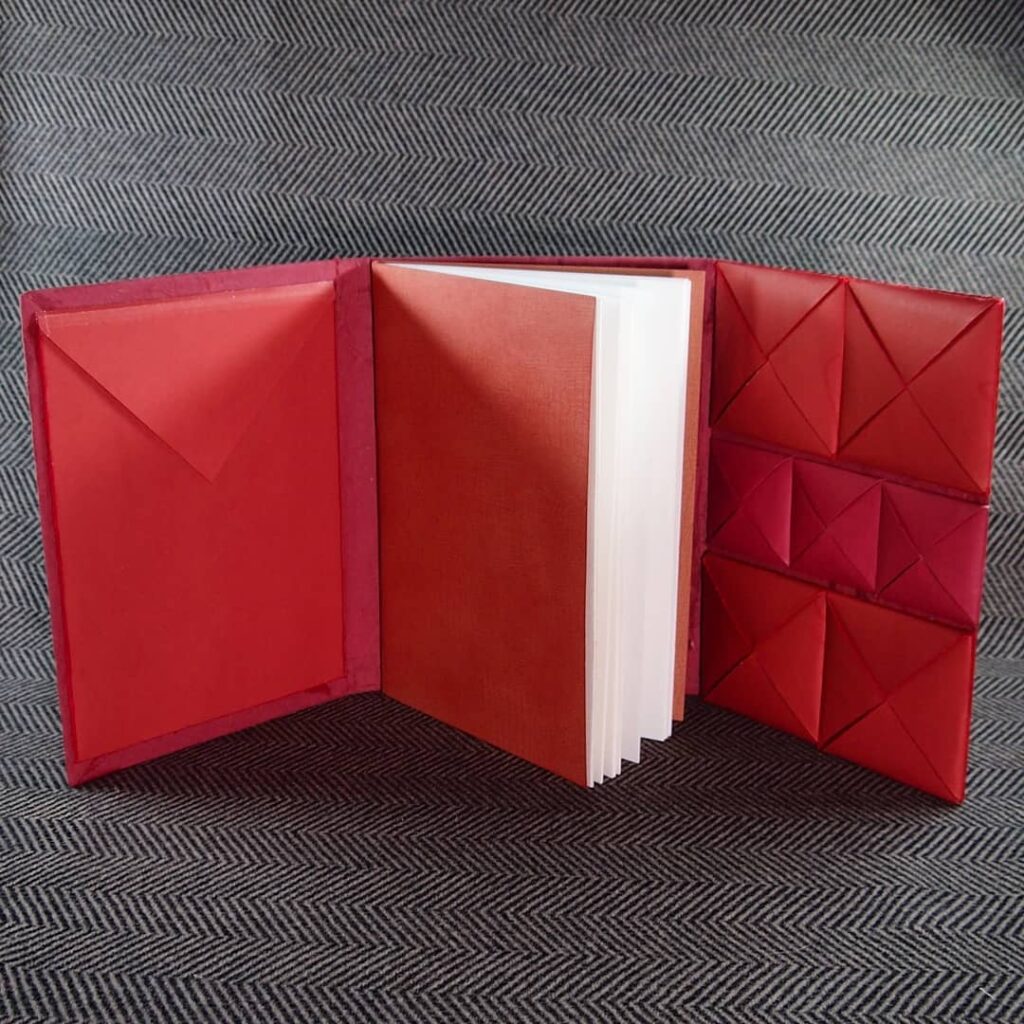


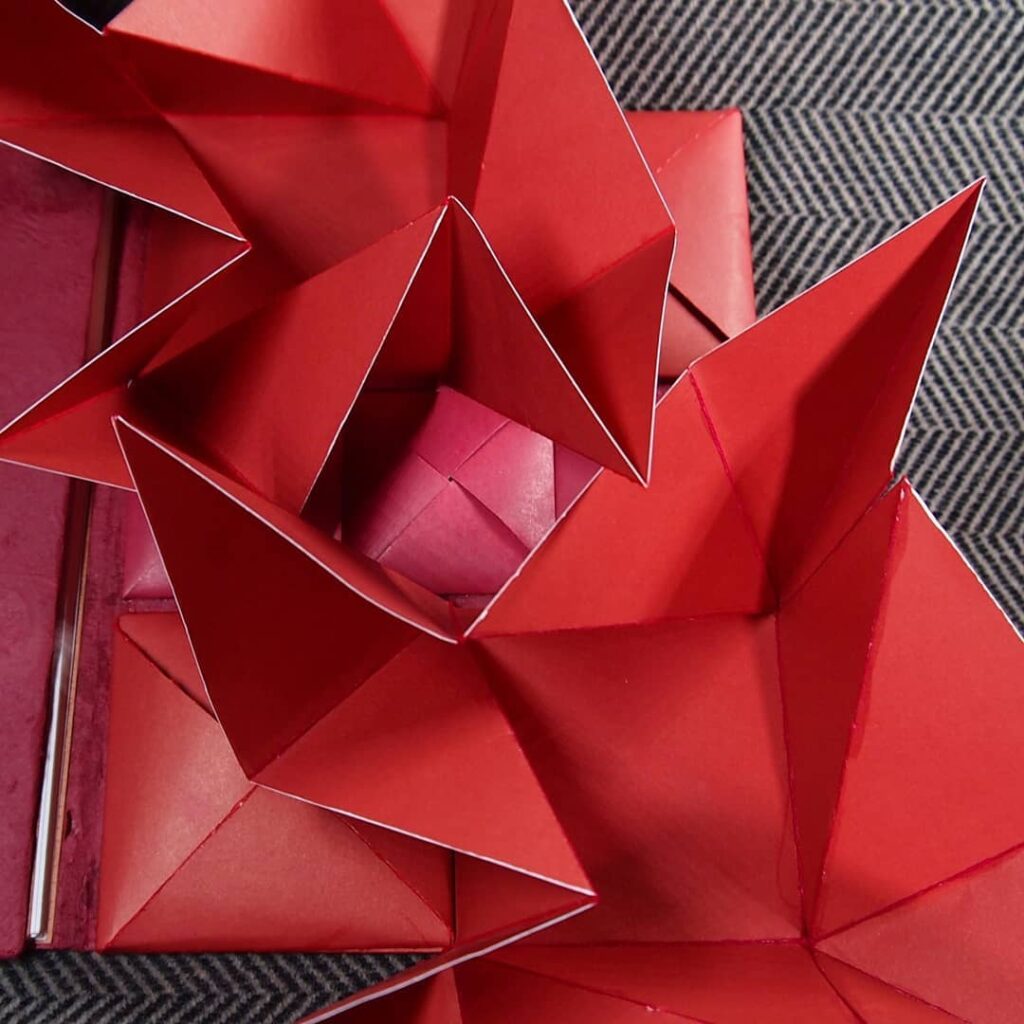
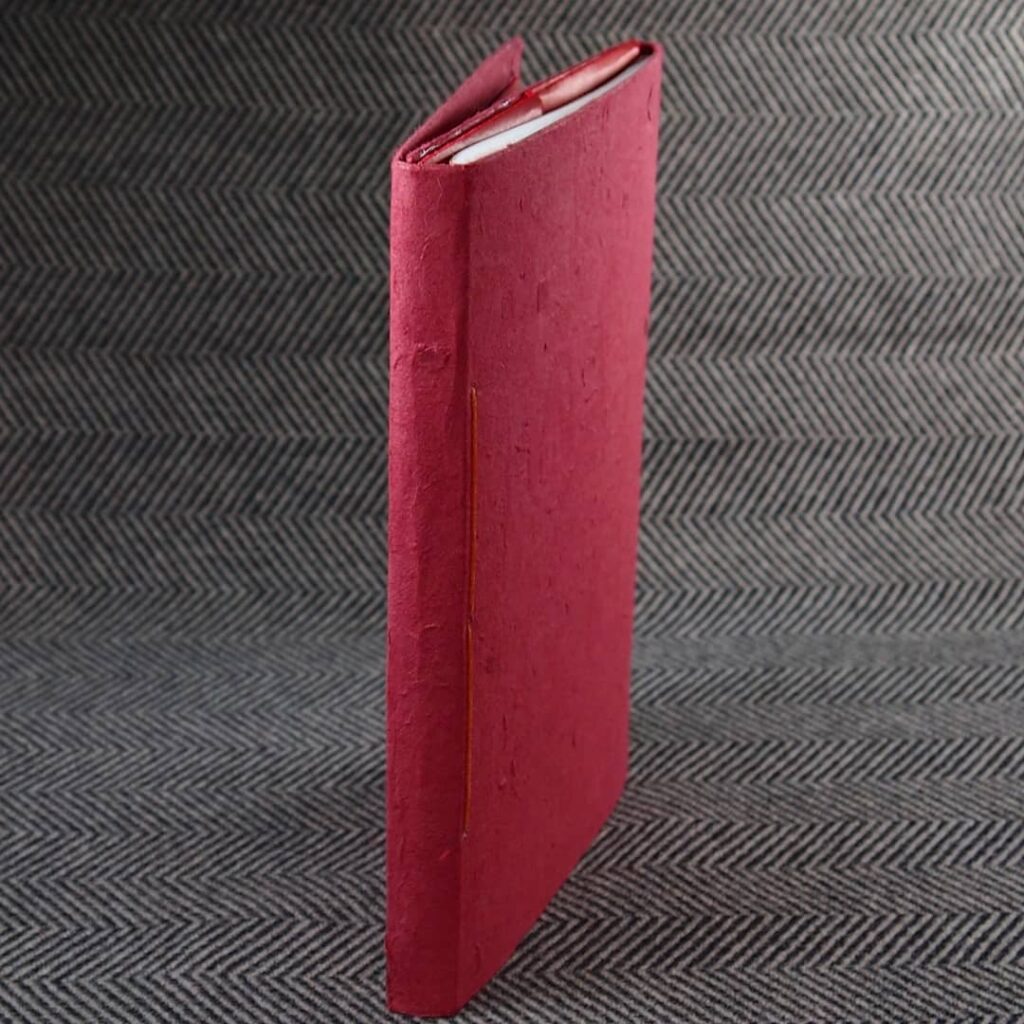
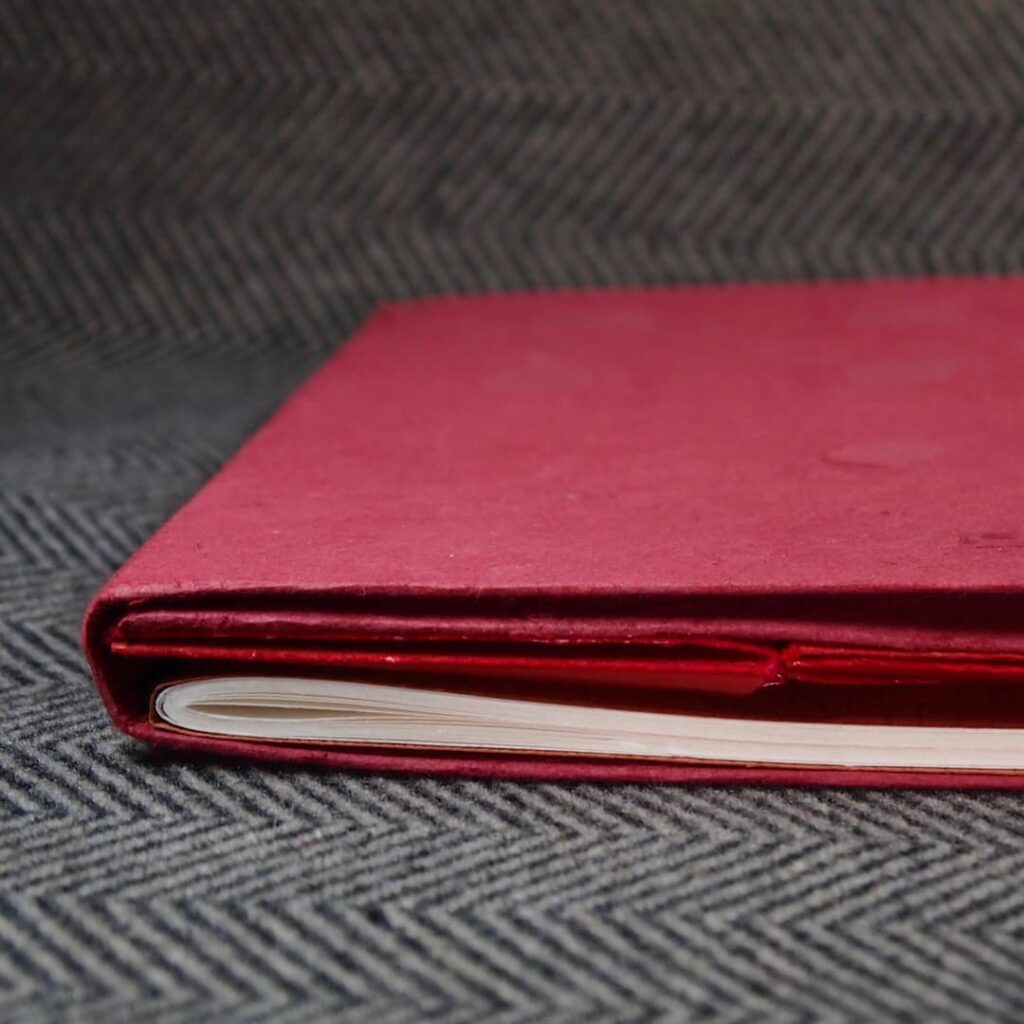
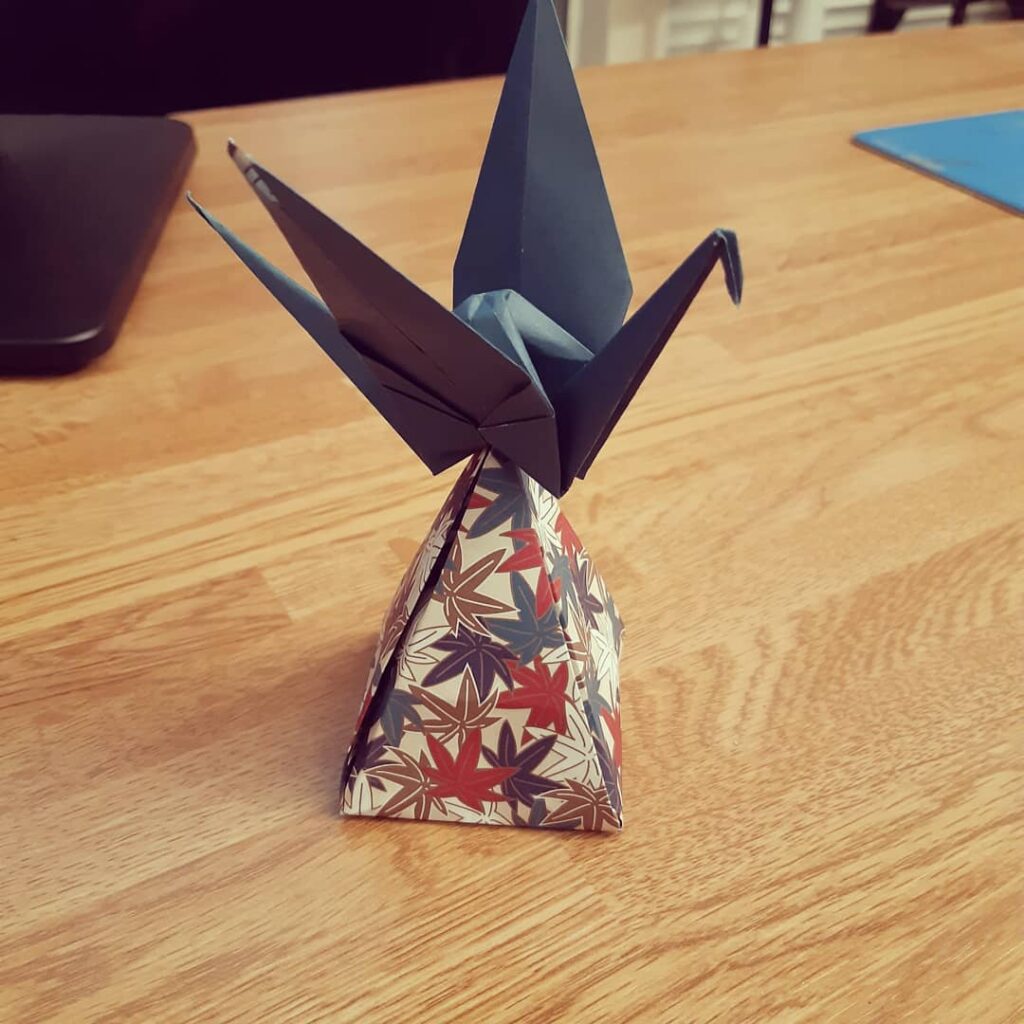
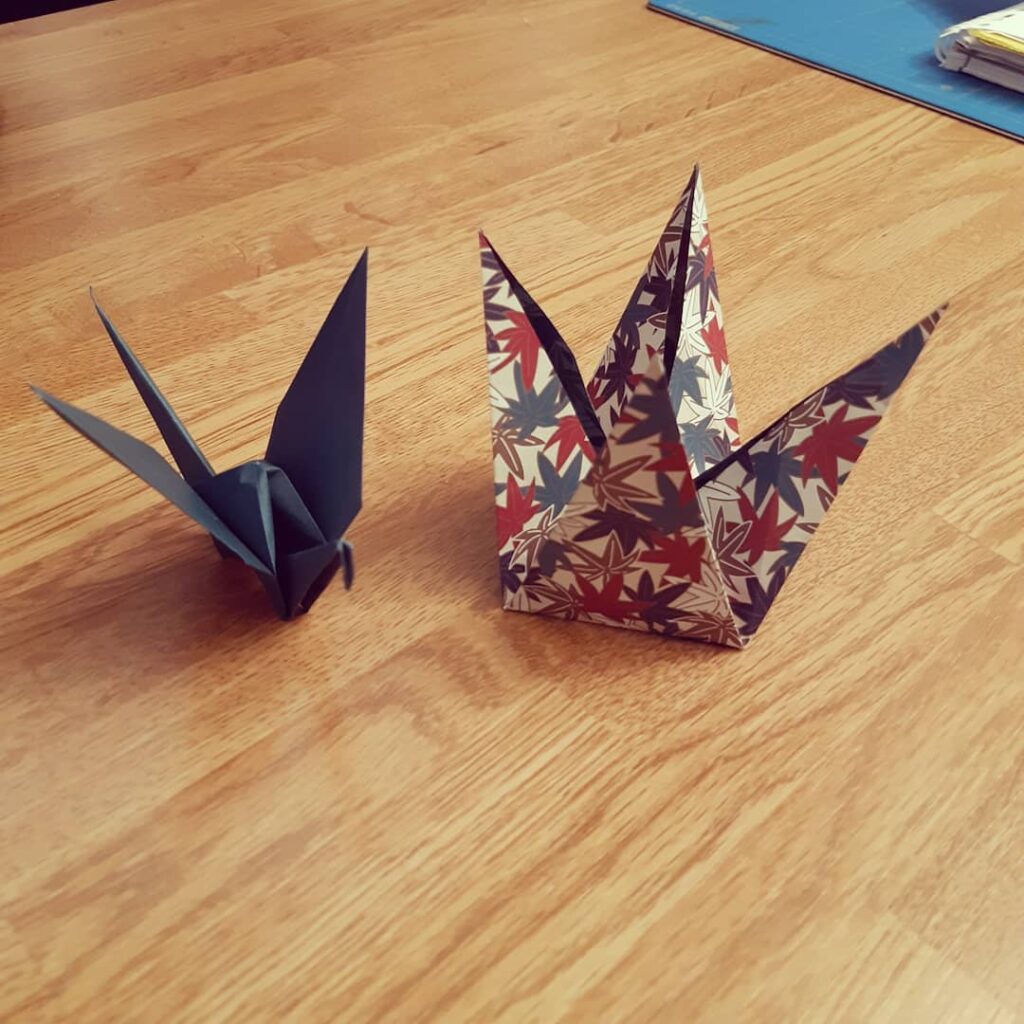
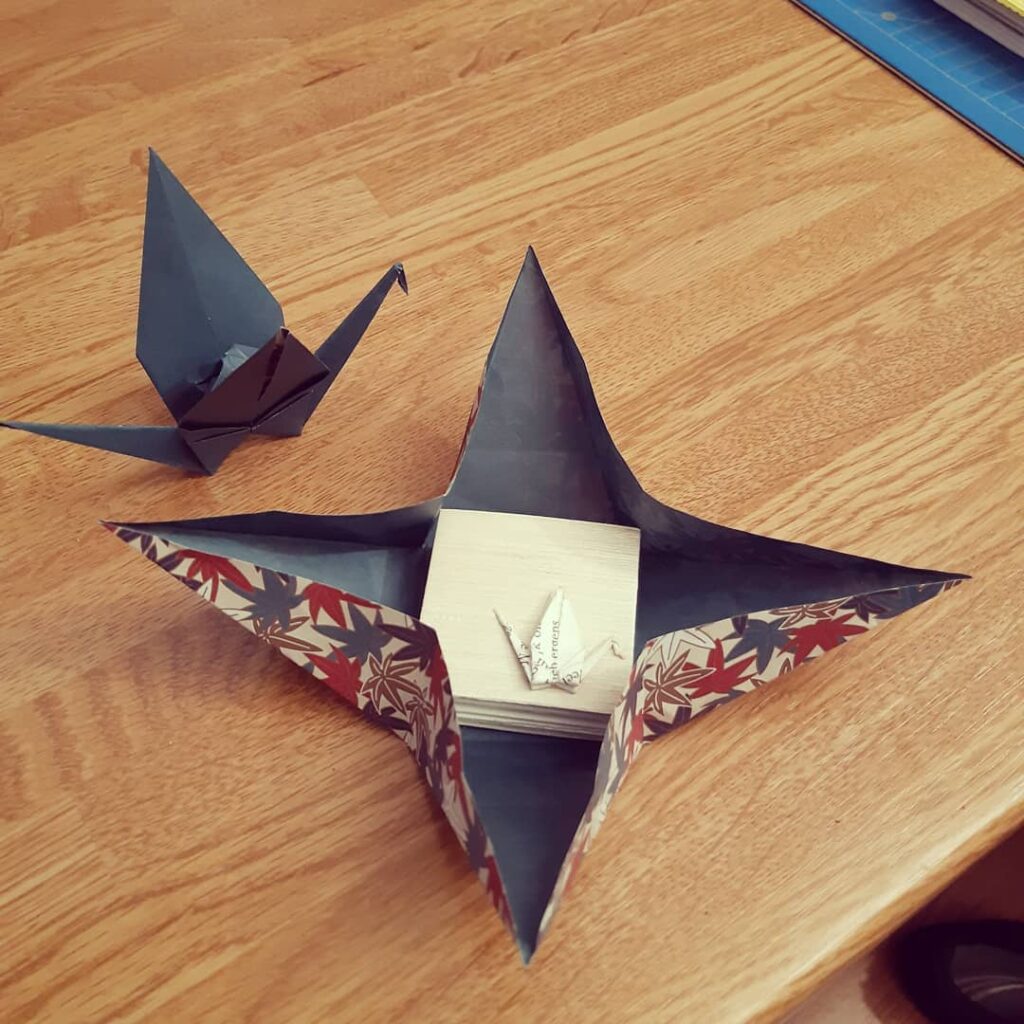

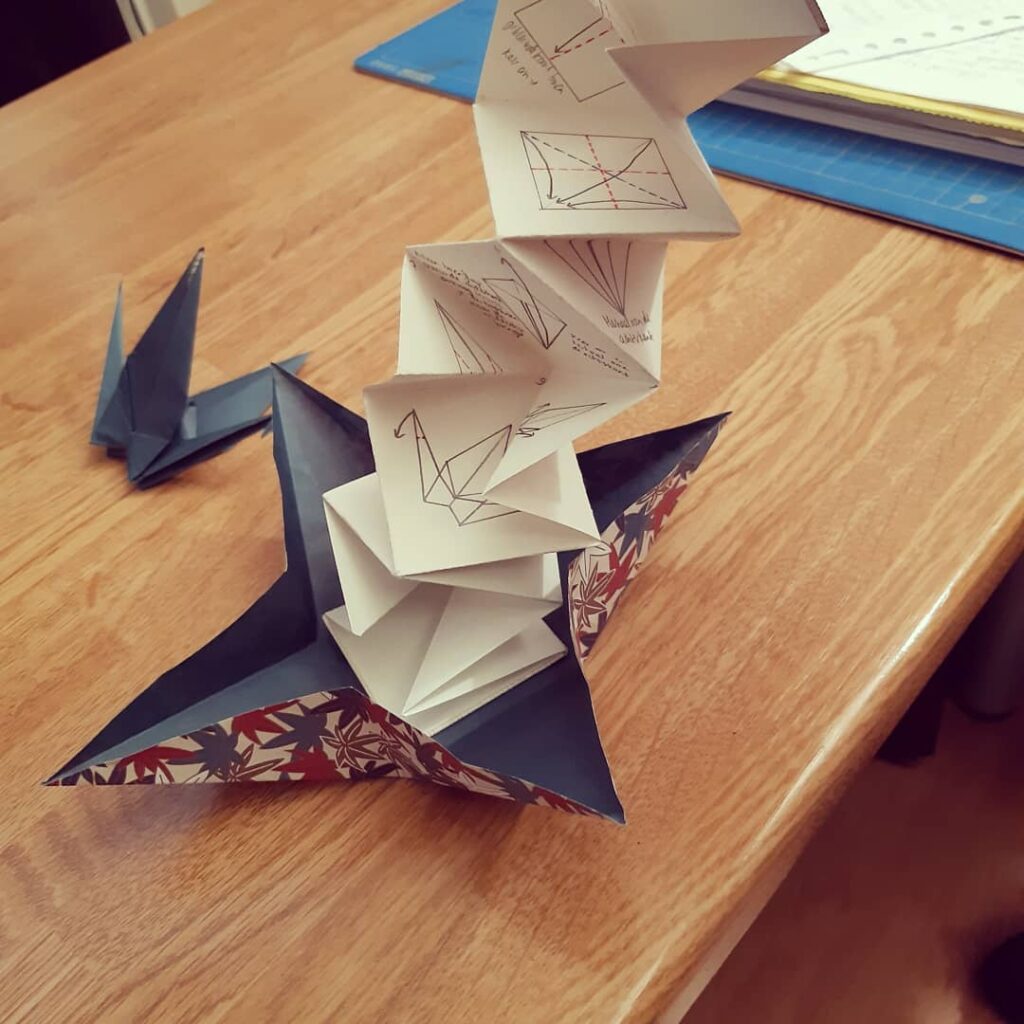
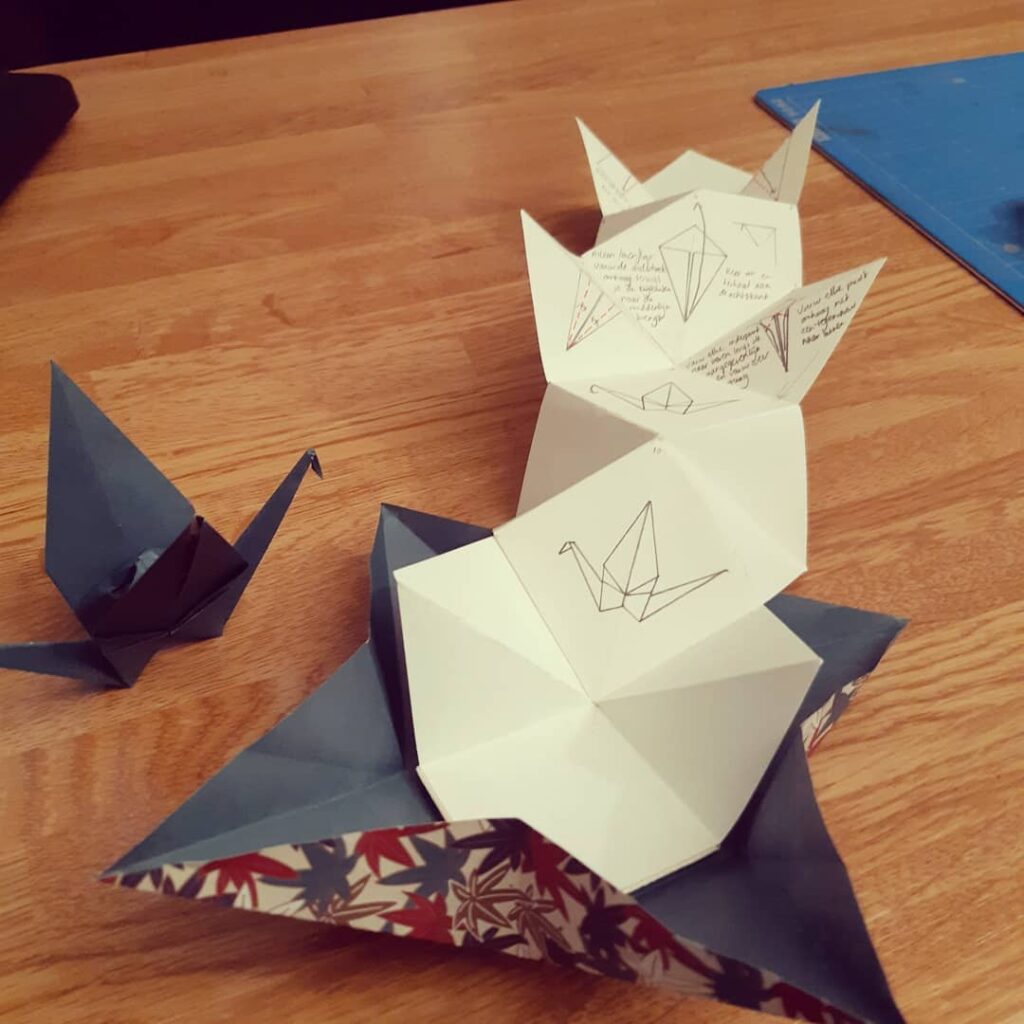
Shelter
Pyramid shaped box with a crane on top with a small book inside that contains the folding instructions for folding a crane.
Jewellery
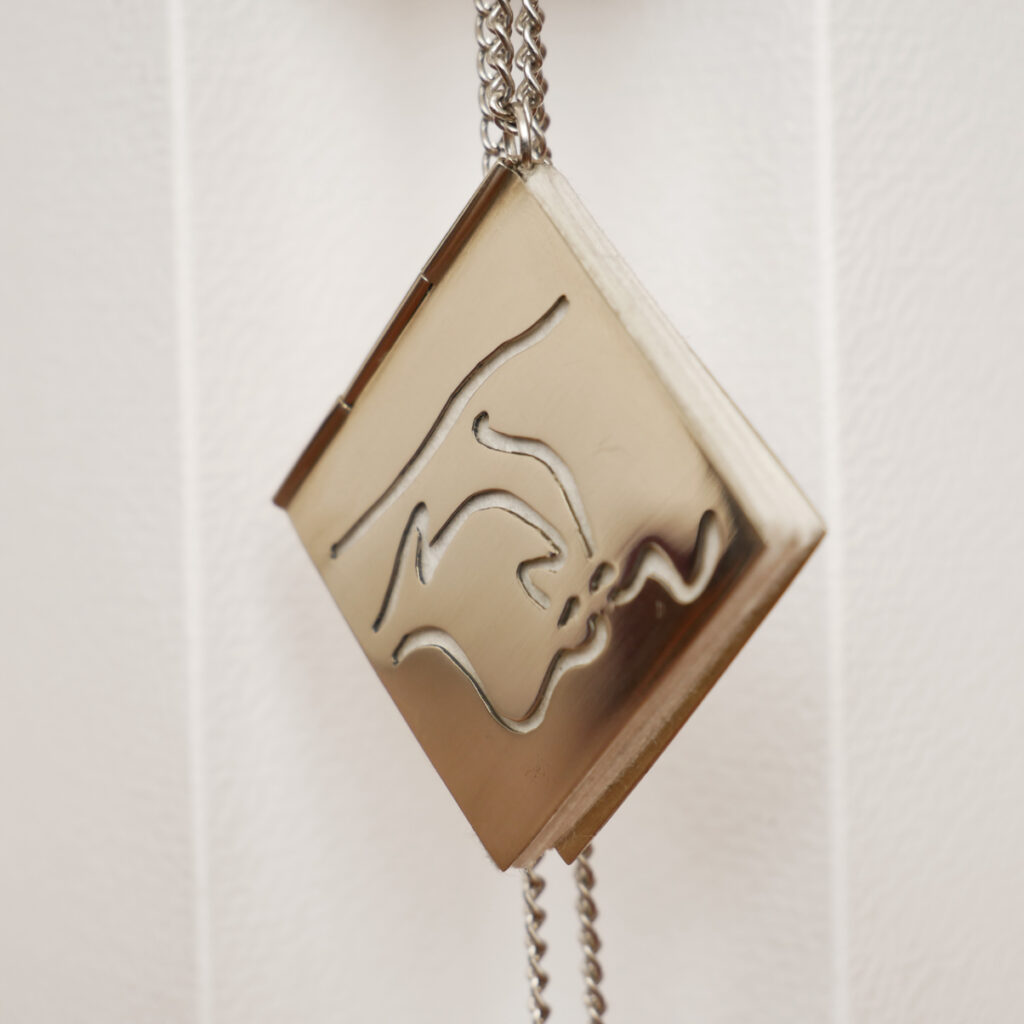
Speech necklace
Japanese rice paper and abacca.
‘Book Ring’
Japanese rice paper, thread and abaca. The ring has movement; it opens and closes.

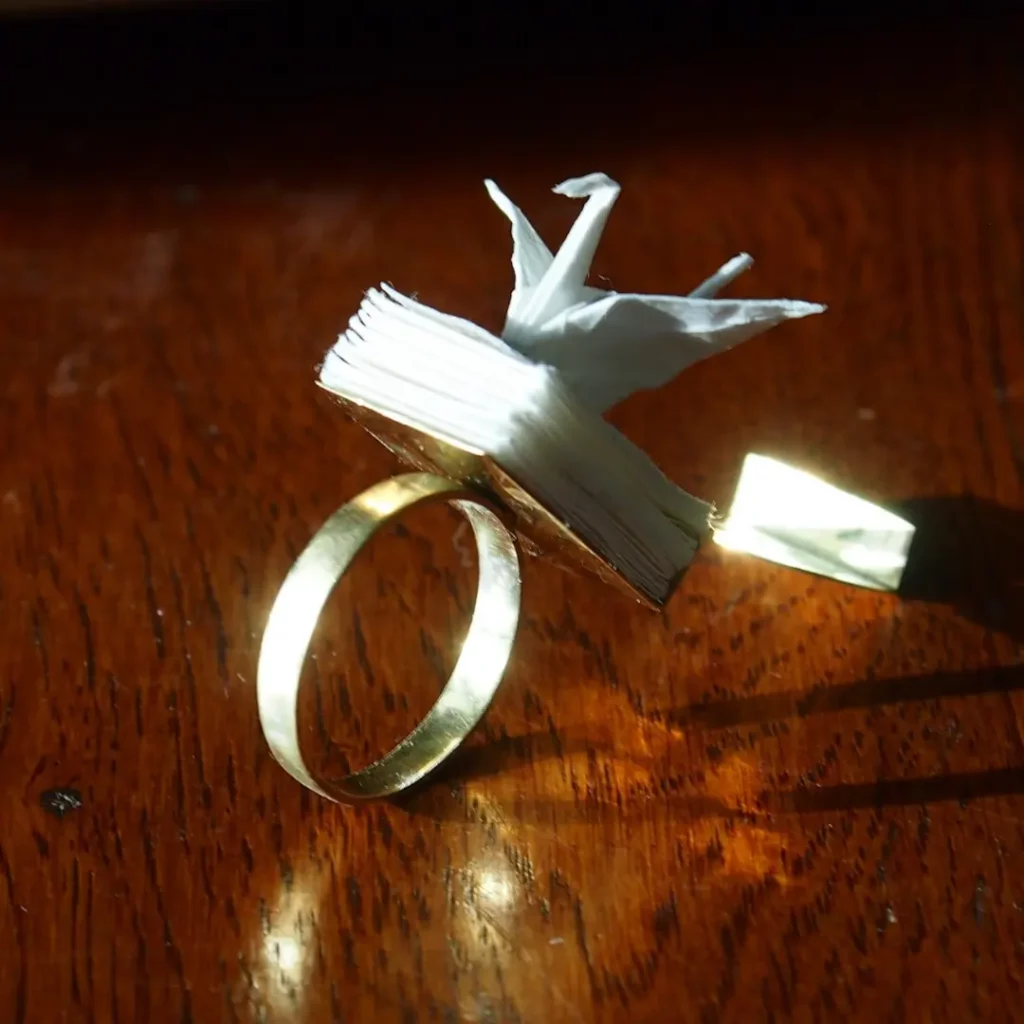

‘Crane book ring’
Japanese rice paper and brass. Because the ring has hinges, it actually opens and closes, just like a book. The paper could also be written on.
‘Hidden compartment Ring’
Brass ring. This ring has a hidden compartment. The outer shell comes off when the ring is removed from the finger to reveil a hidden opening.
